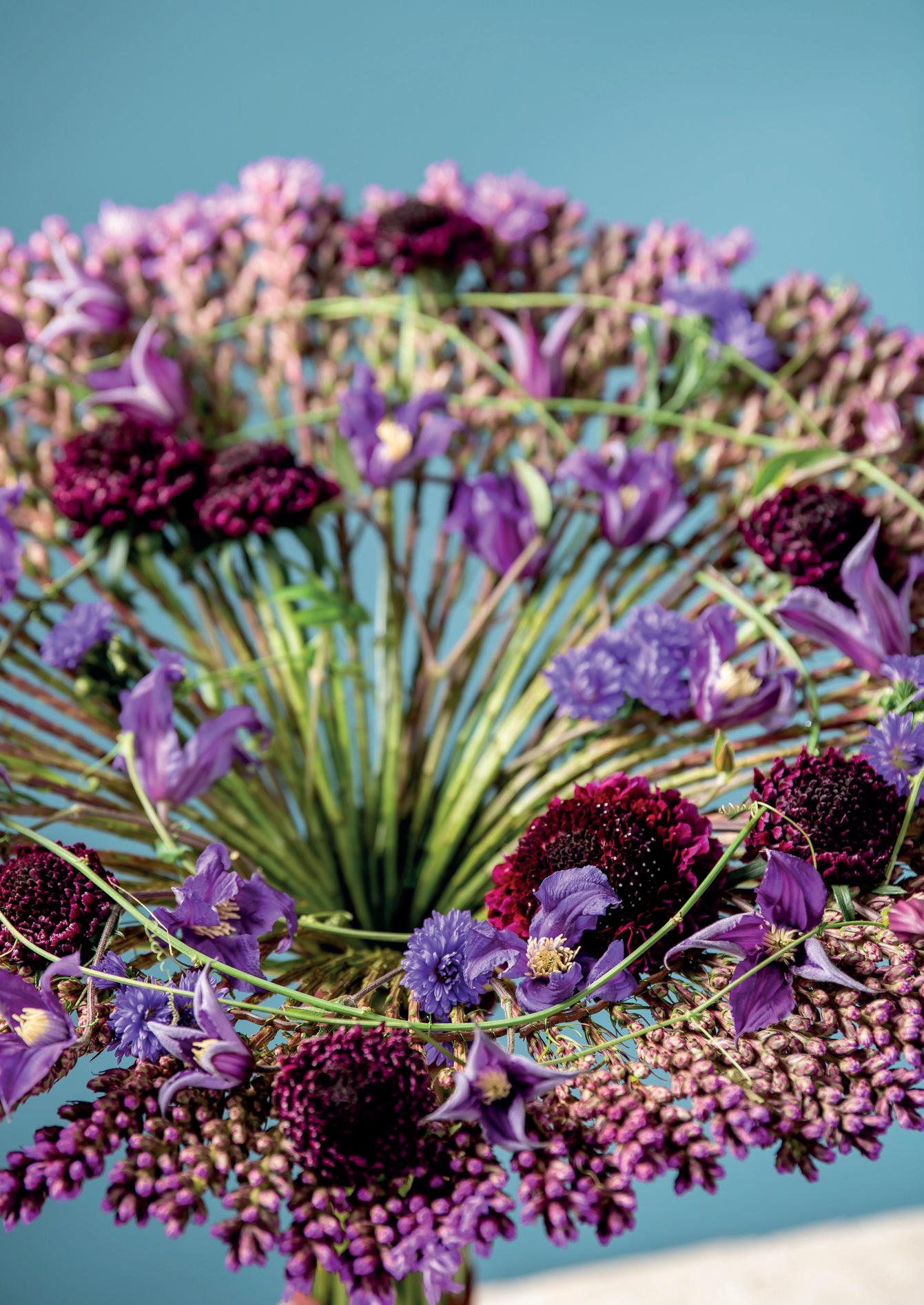THE STORY OF
Cosmic blooms
UNRAVEL YOUR FLOWER ZODIAC

BOUQUETS OF LOVE
The perfect wedding flowers
THE LATEST FLORAL TRENDS BY NICU
BOCANCEA
PIONEERING THE FLOWER INDUSTRY A JOURNEY THROUGH THE YEARS


Cosmic blooms
UNRAVEL YOUR FLOWER ZODIAC

BOUQUETS OF LOVE
The perfect wedding flowers
THE LATEST FLORAL TRENDS BY NICU
BOCANCEA
PIONEERING THE FLOWER INDUSTRY A JOURNEY THROUGH THE YEARS

We are thrilled to present the third edition of the Story of M. For those who are new to Marginpar, let us introduce ourselves briefly. Marginpar is a leading flower brand known for its unique and high-quality range of flowers. With over 35 years of experience, we have earned global recognition in the floral industry for our craftsmanship and attention to detail.
Why should you enjoy this glossy magazine? Well, it’s packed with inspiration, knowledge, and captivating stories curated especially for you.
Get ready to be inspired by many design ideas, ranging from stunning bouquets to breathtaking flower installations. Discover the ever-popular Floral Trends, written by none other than the renowned Nicu Bocancea. His insights into the latest trends and valuable tips will elevate your floral arrangements to new heights. Don’t forget to unravel your flower zodiac with our unique ‘floroscope’ and find out which bloom matches your personality.
Moreover, we delve into the world of Marginpar, sharing the inspiring journey of our 35 years in the industry. Learn about our brand’s story and how we’ve become a global force in the floral market.
In this third edition, we celebrate the beauty of flowers and design together. We hope you find joy and inspiration as you explore the magazine. Enjoy the read!
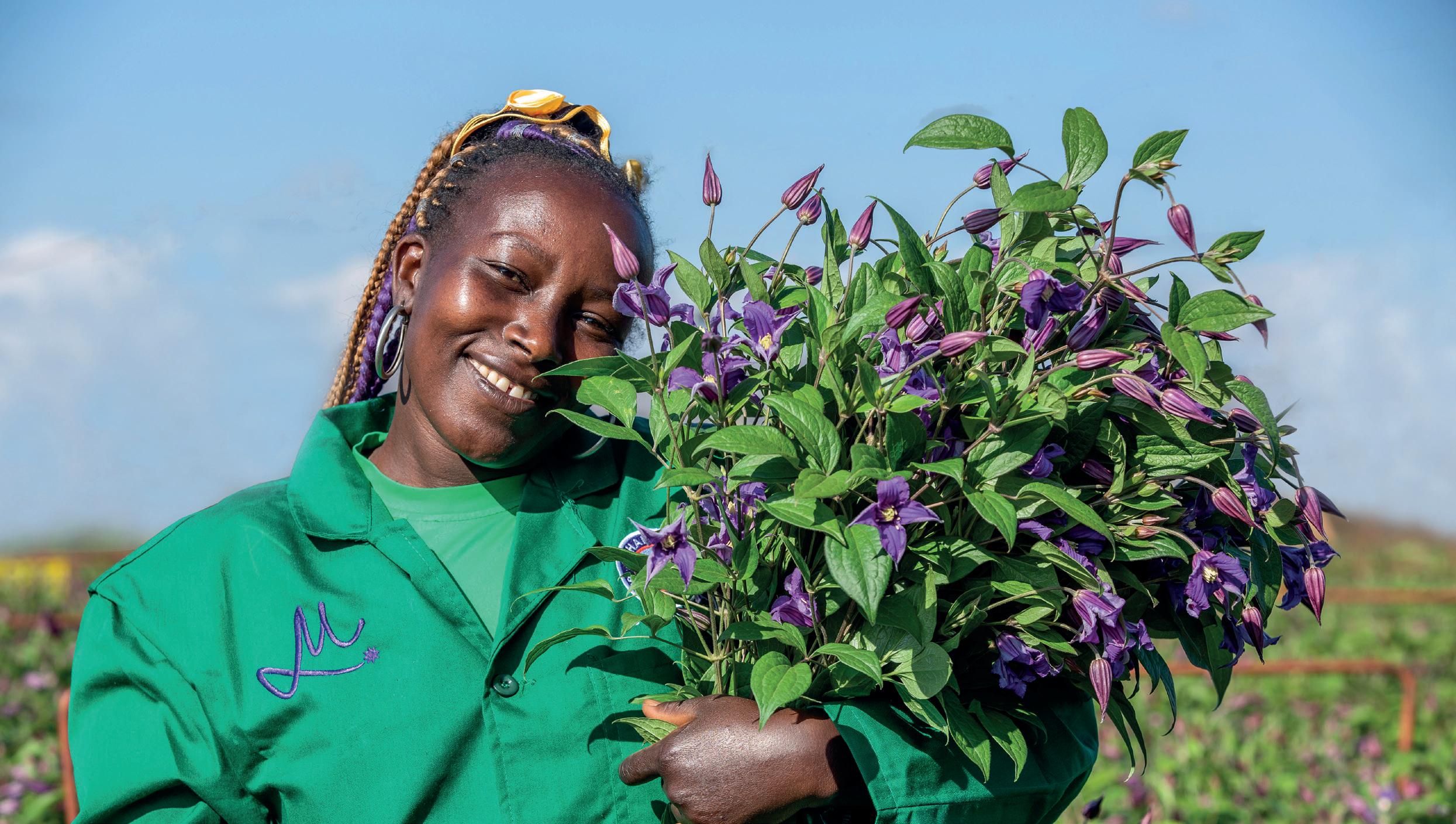
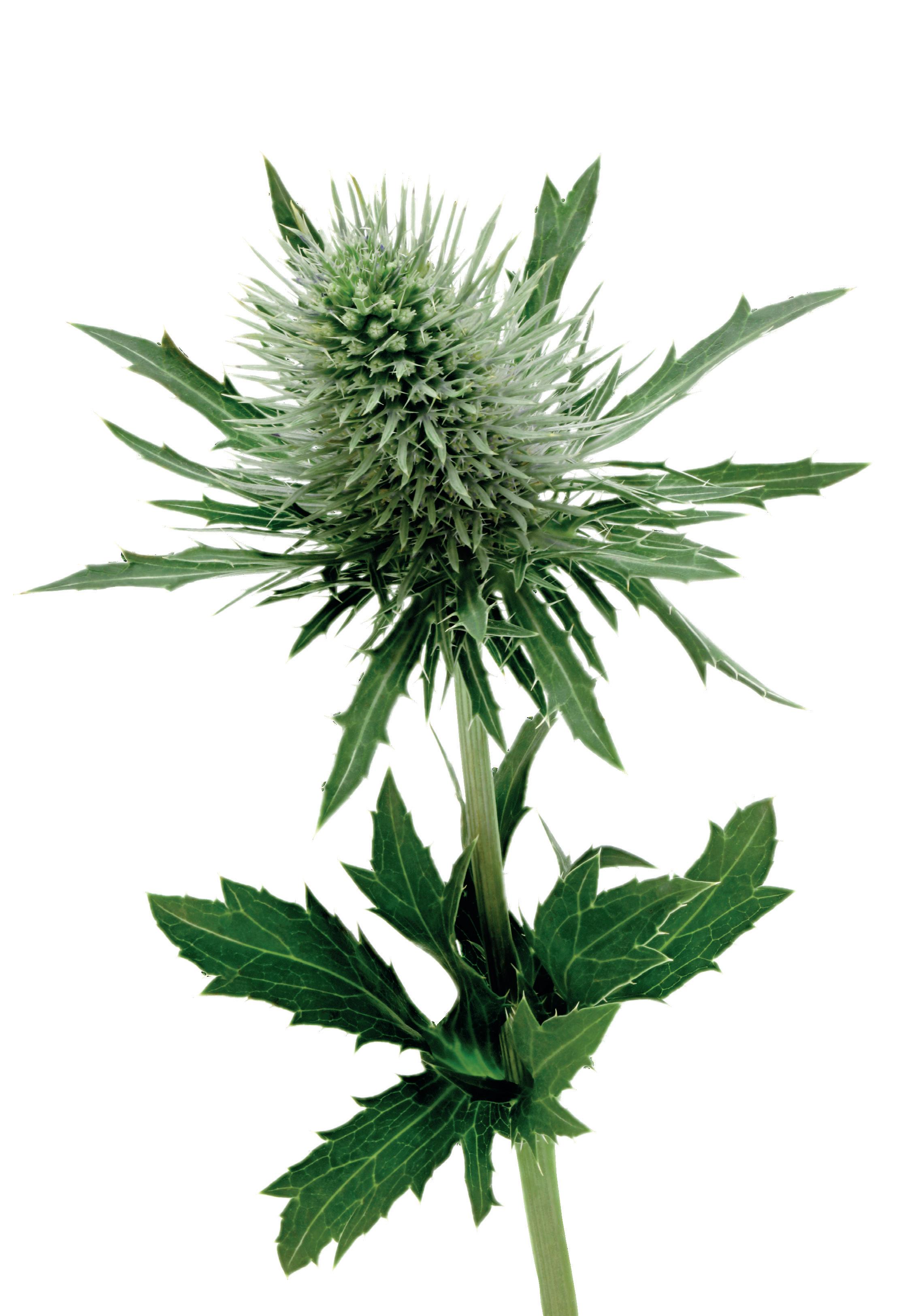
FOR 35 YEARS , MARGINPAR HAS BEEN DEDICATED TO CRAFTING THE MOST EXCEPTIONAL SUMMER FLOWERS. WE WERE AMONG THE FIRST TO INTRODUCE FRESH CUT FLOWERS FROM AFRICA TO THE DUTCH FLOWER AUCTIONS. Established in 1988 . Over 100 varieties of summer flowers. Year-round production of 300 million stems.
460 hectares of production land.
Divided over 17 flower farms:
Marginpar Kenya: 7 farms
Marginpar Ethiopia: 3 farms
Tanzania & Zimbabwe: 7 partner farms
Pursuing a 100% sustainable production. Market leader in Eryngium, Clematis, Solidago and Astrantia.
We produce
99.9% of all cut Clematis for the EU market.
UNIQUE FLOWERS. EMPOWERED FLORISTS.
UNFORGETTABLE MOMENTS.
800,000 flowers processed daily in our Dutch distribution centre.
65% of our flowers are sold through the flower auction clocks, 35% to strategic partners...
… who bring Marginpar flowers to florists all over the world.
EDITOR IN CHIEF
Helena van Achterberg
ART DIRECTION
Karin van Iterson, Hakijk
EDITORIAL STAFF
Eva Hegt
Maaike den Hertog
Helena van Achterberg
MARKETING & SALES
Michiel van Paassen
Jamie den Haan
sales@marginpar.nl
THE STORY OF M IS A PUBLICATION OF Marginpar BV
Sierteeltstraat 29, 1431 GM, Aalsmeer, The Netherlands
PRINTWORK
Publishers Services BV
MORE INFORMATION
www.marginpar.com
CONTACT US AT mail@marginpar.com
We would like to thank all our contributors: 365 Days of Flowers, Bate Koning, the floral team at BLOOM’s, Chantal Wiedmer, Dmitry Turcan, DPK Magazine, Emma Pilkington Photography, the floral team at Floraria Iris, Floral Fundamentals, Fred Roest, Geertje Stienstra, Hanneke Frankema, Hendrik Rethmeyer, Jamie den Haan, Joseph Massie, Jill Koning, Julia Petiet, Karla Jalving, Lukáš Moravský, Marek Jakobi, Meesterlijk Geschikt, Nico Alsemgeest, Nicu Bocancea, Oliver Dixon, Paul Heijmink, Sabine Darrall, Sala Lewis, Stella Photography, Rachel Flowers, Reiny Bourgonje Fotografie, Róbert Bartolen, Robert Modderkolk, Ronald Bosch, Werner van Sprang and all employees of Marginpar as well as employees of partner flower farms who have contributed to this publication.
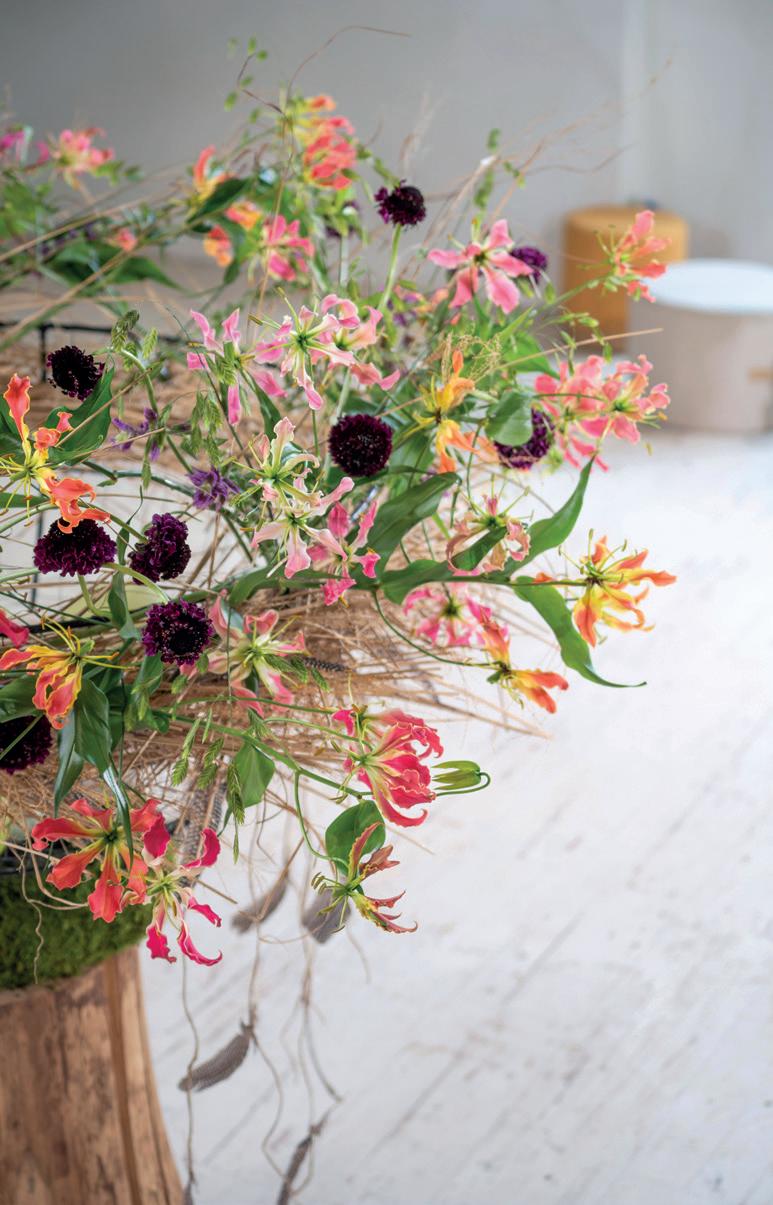
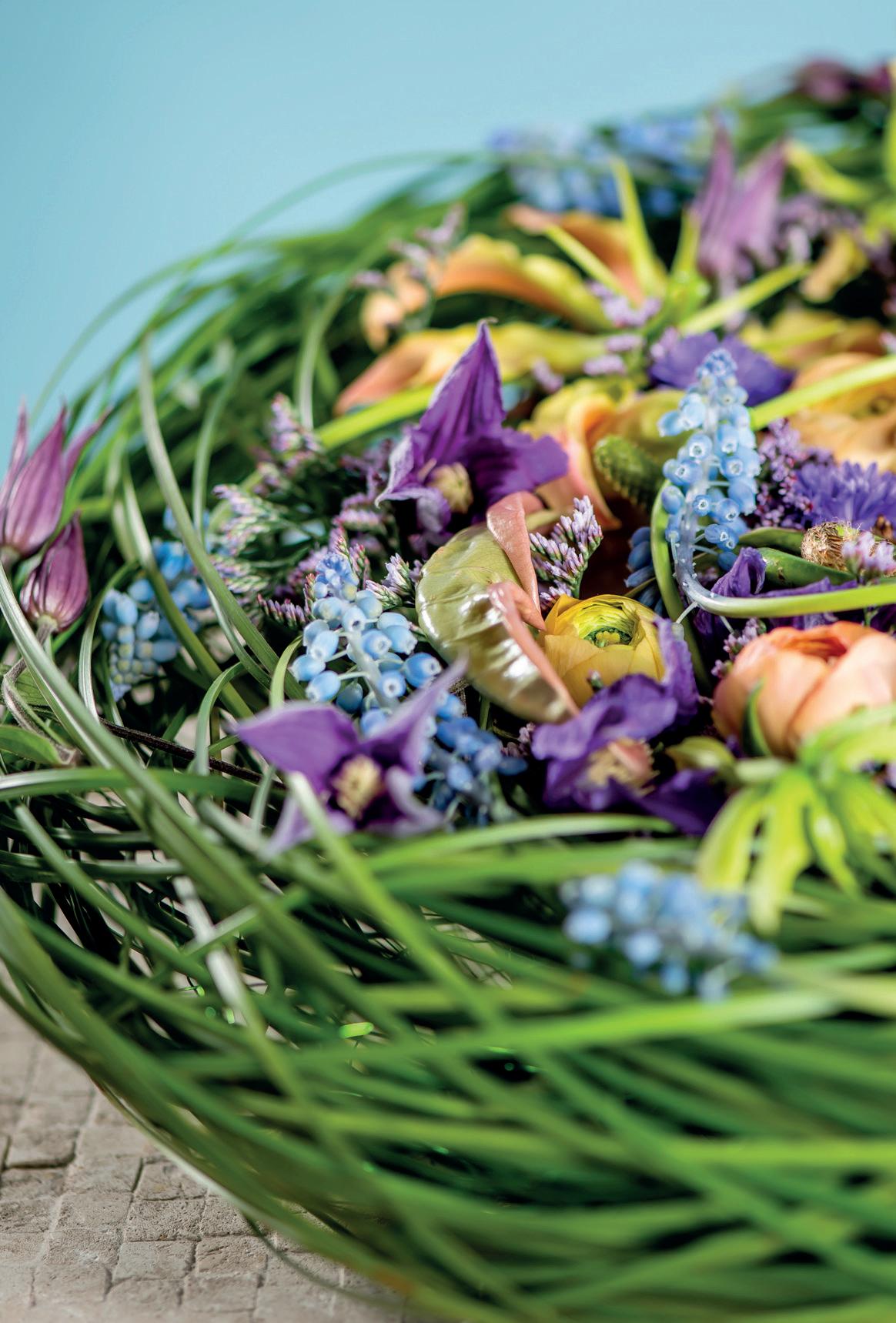
No part of this publication may be reproduced, stored in a computerised database, or made public, in any form or by any means, whether electronic, by photocopying or any other way, without the prior written consent of Marginpar BV.
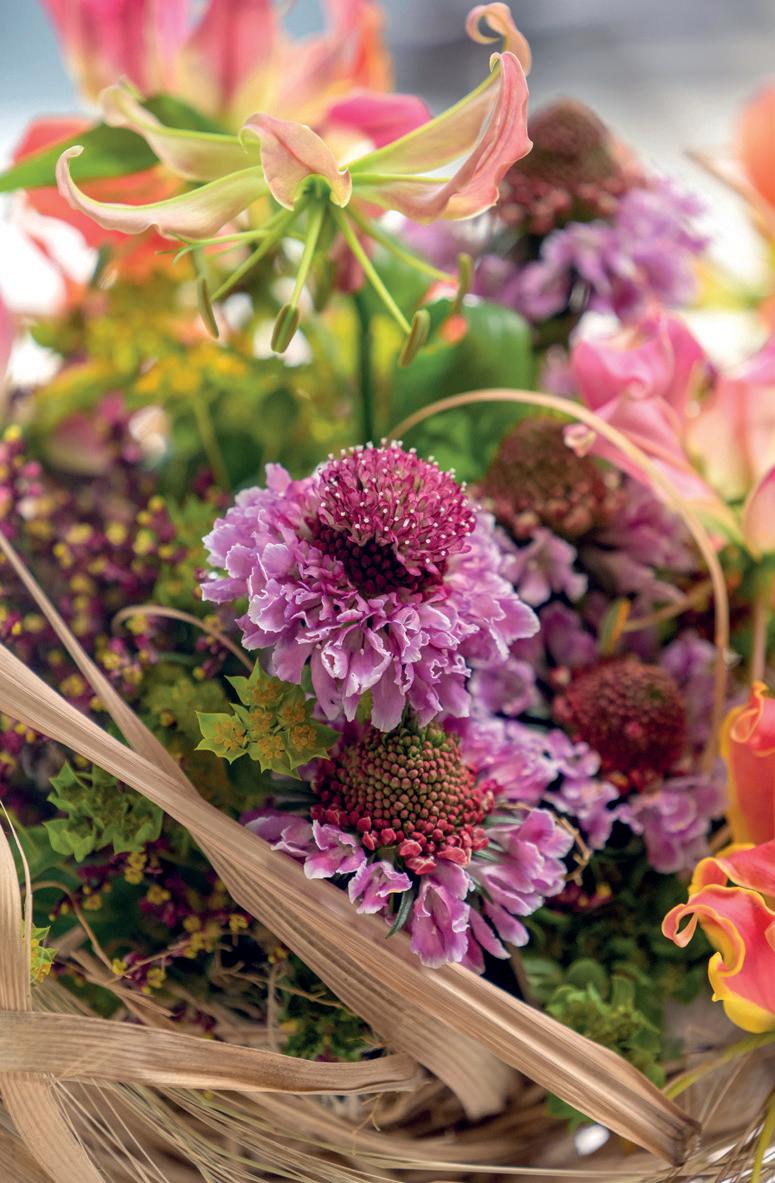 Hanneke Frankema
BLOOM’s
BLOOM’s
Hanneke Frankema
BLOOM’s
BLOOM’s
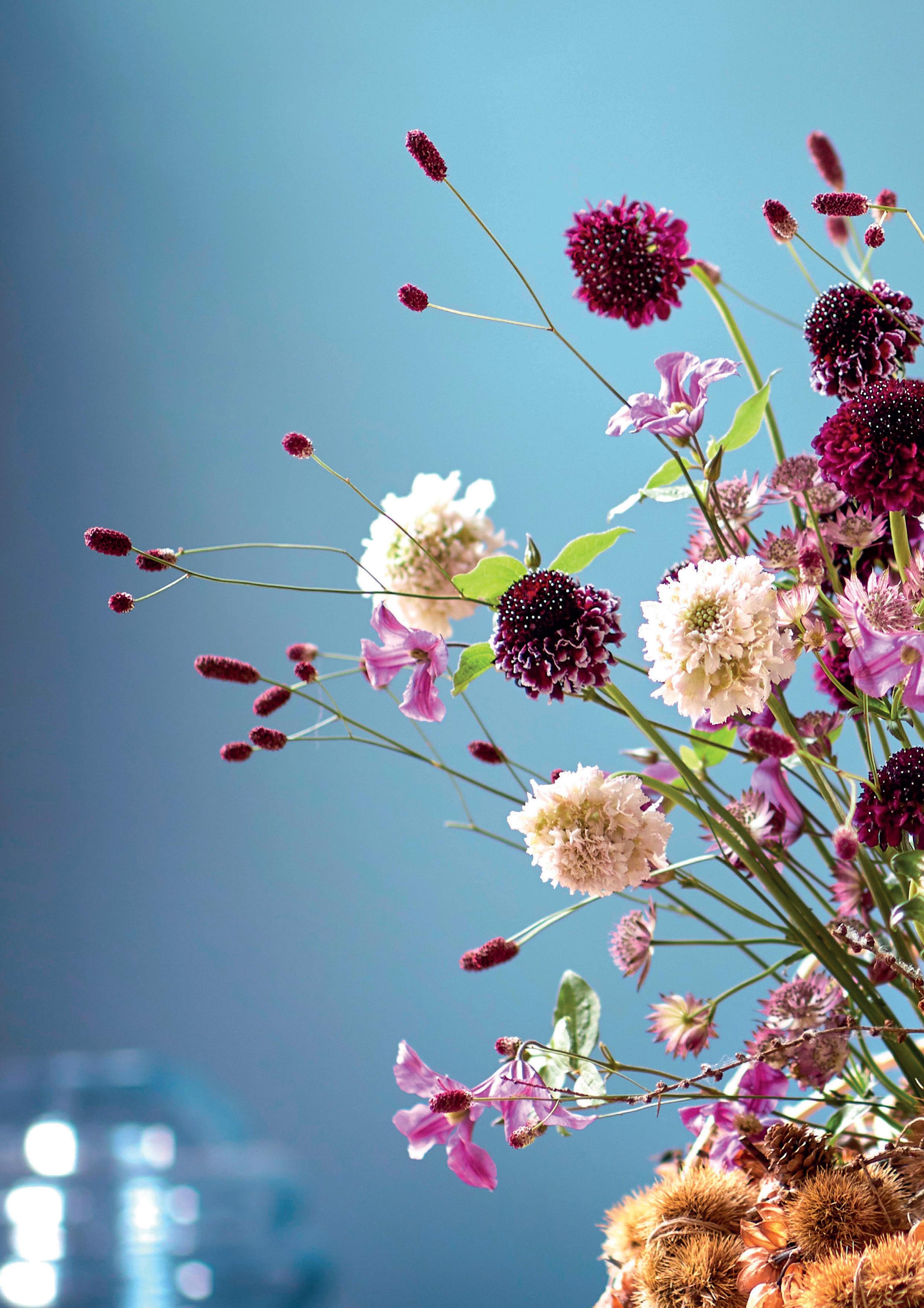
THE
FLOROSCOPE
STANDING
FLORAL
FAN
BLOOM
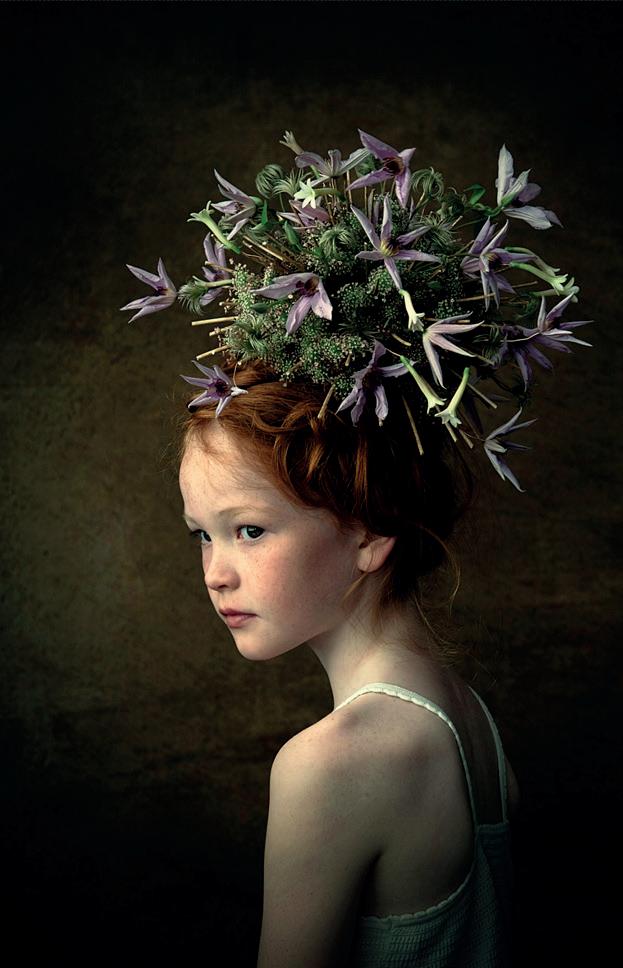
CULTIVATING
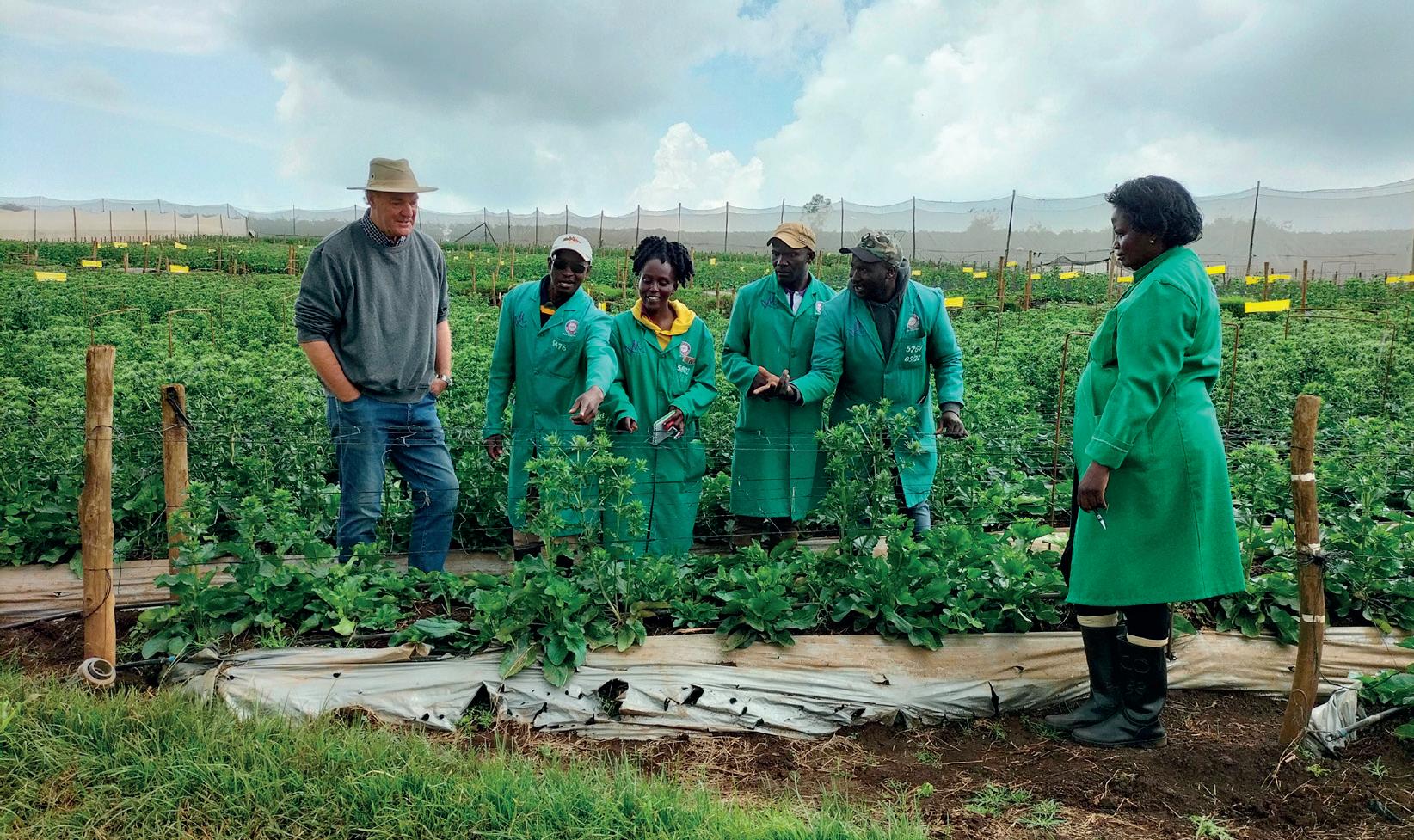
ONLY
BLOSSOMING
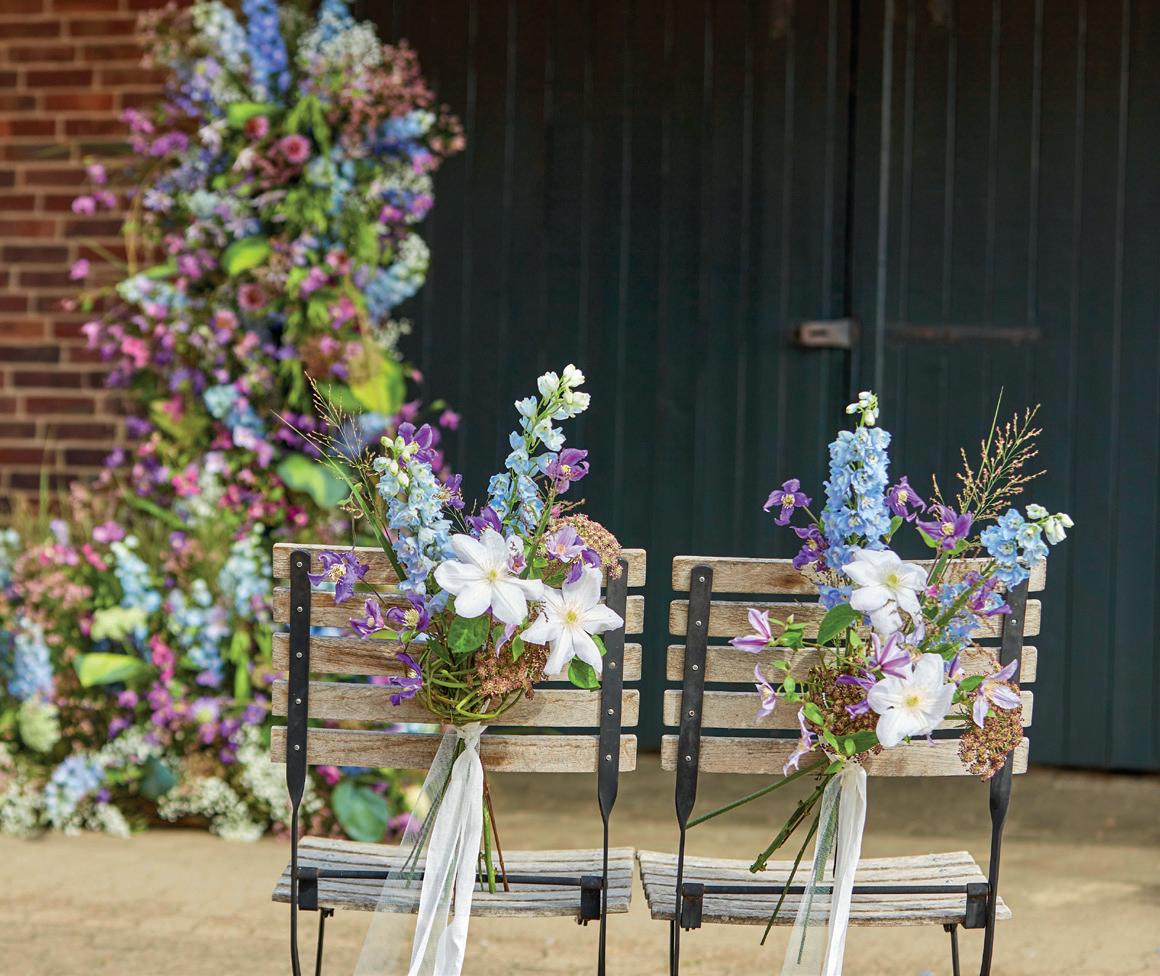
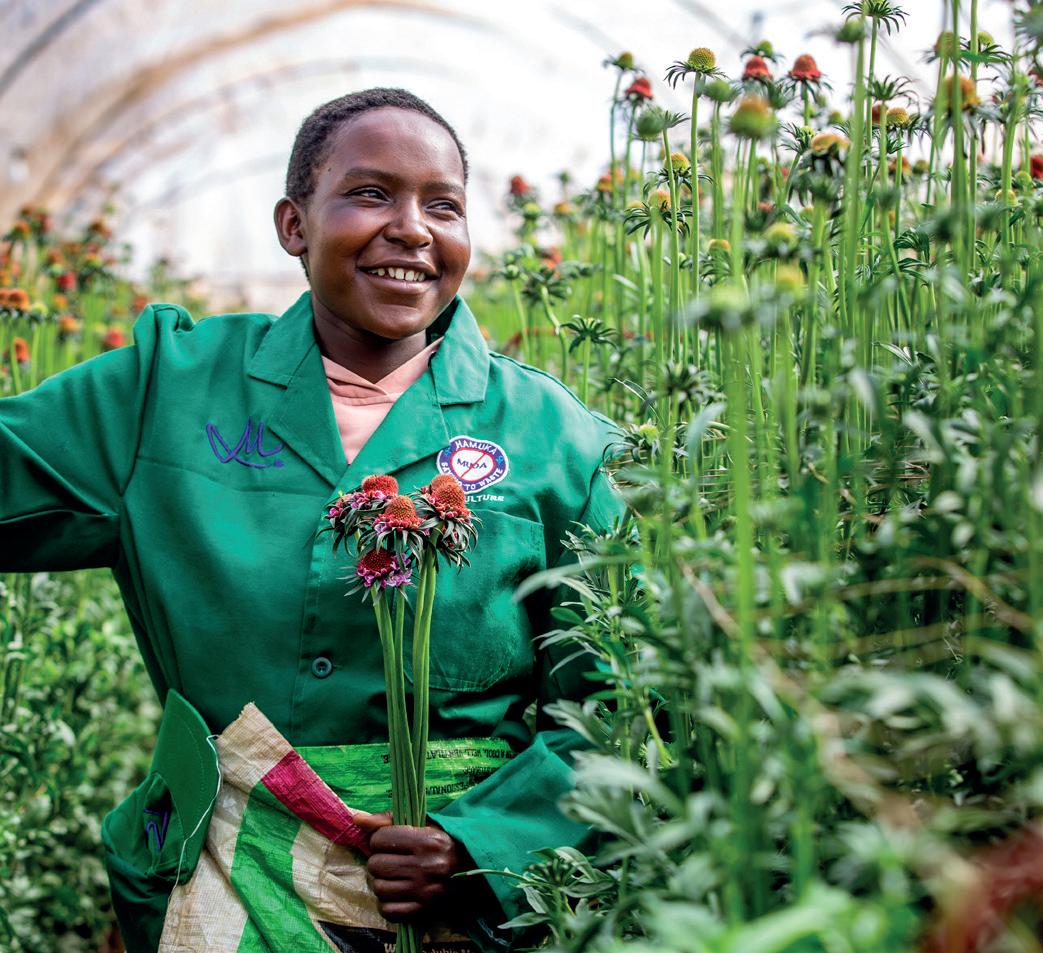
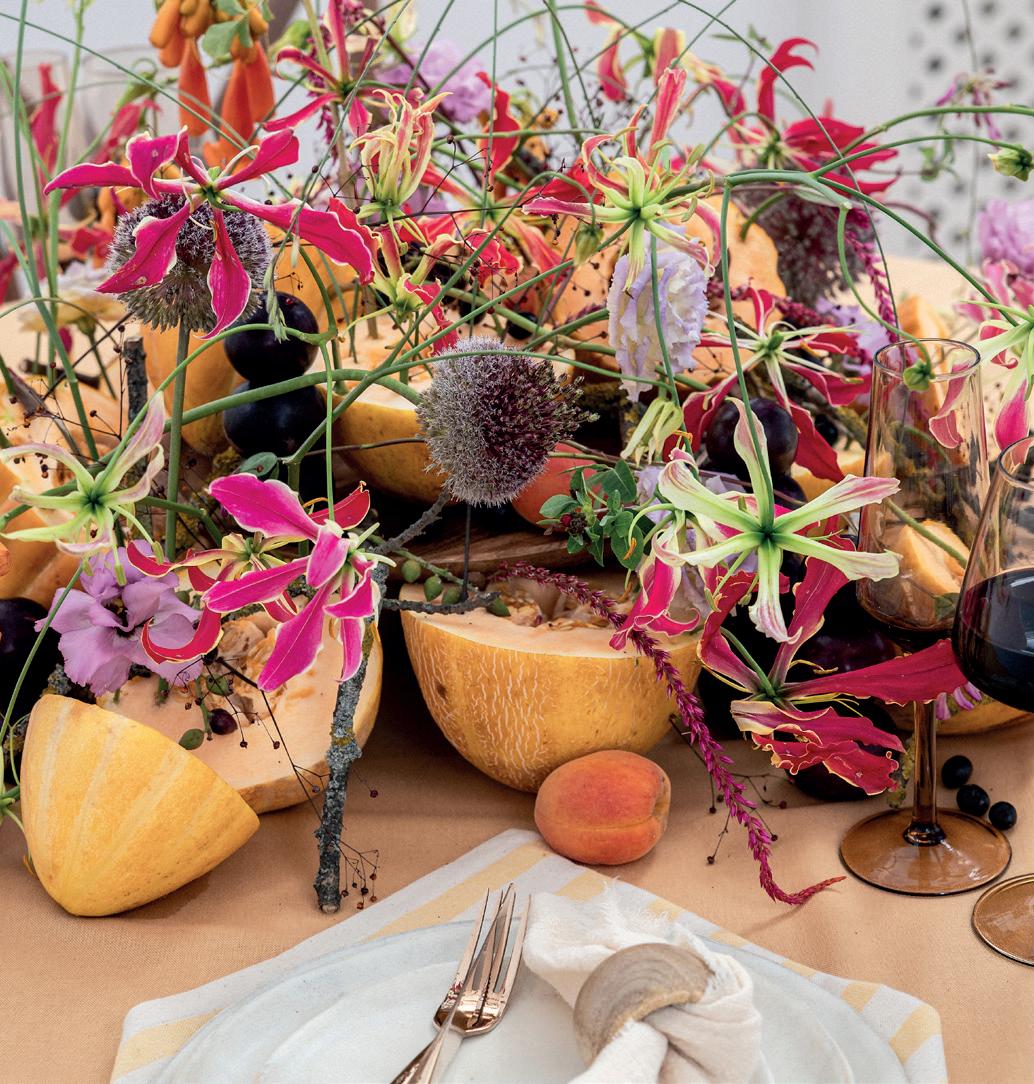
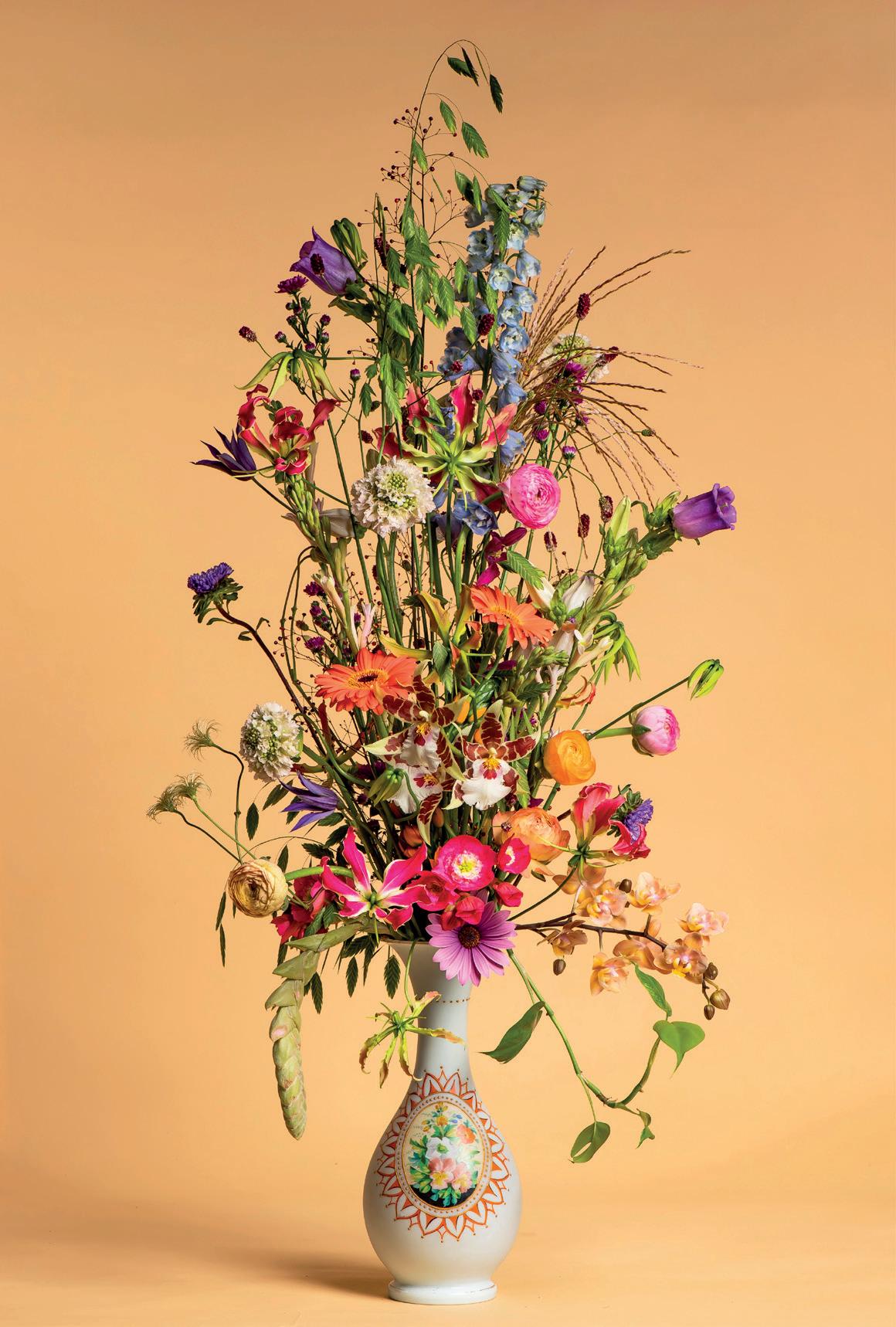
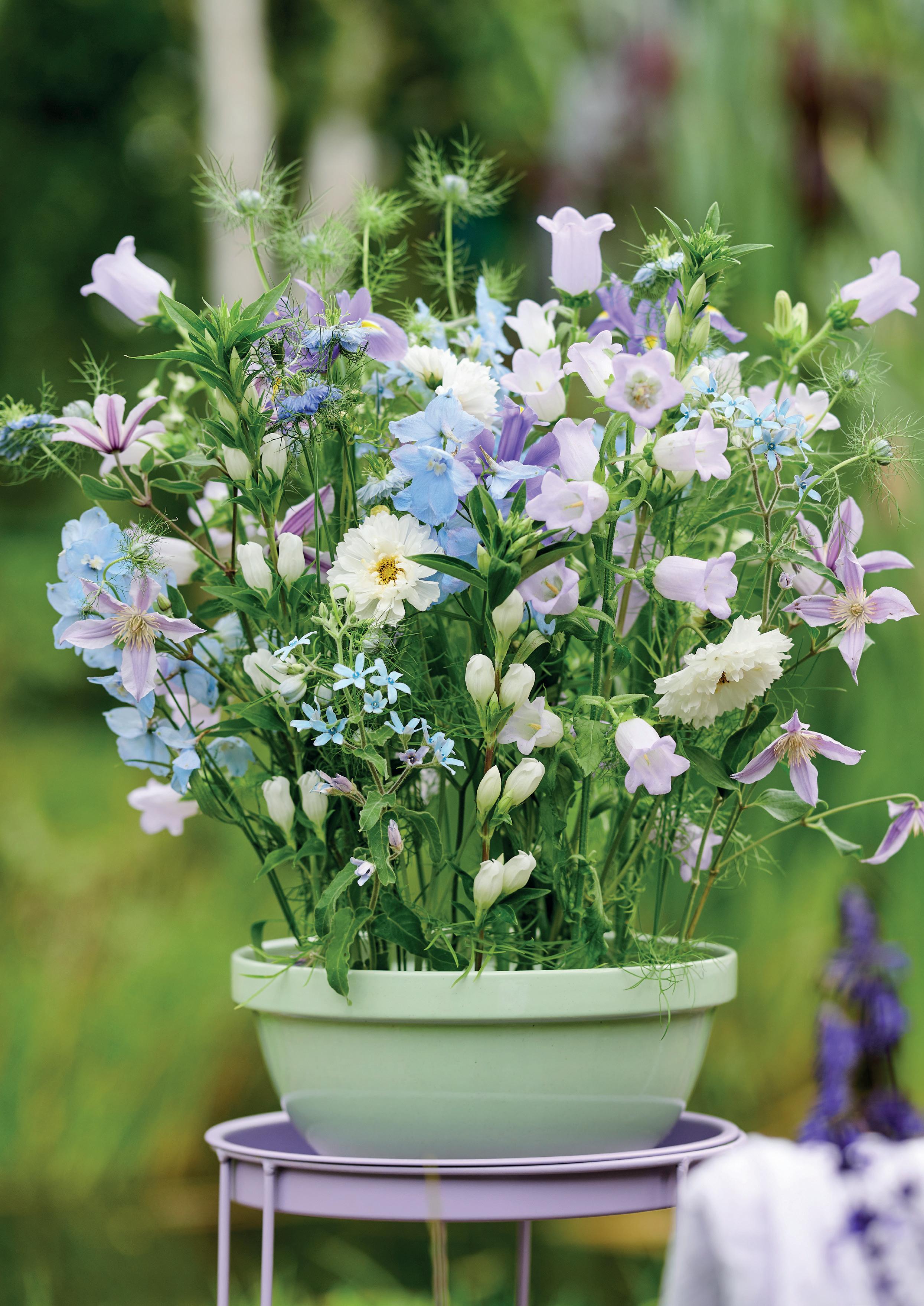
Hanneke Frankema, the 2022 European Champion, holds an array of national and international awards. Her unique creations position her as a sought-after guest arranger. With extensive international experience, she journeys worldwide to deliver demonstrations, provide instruction, and inspire.
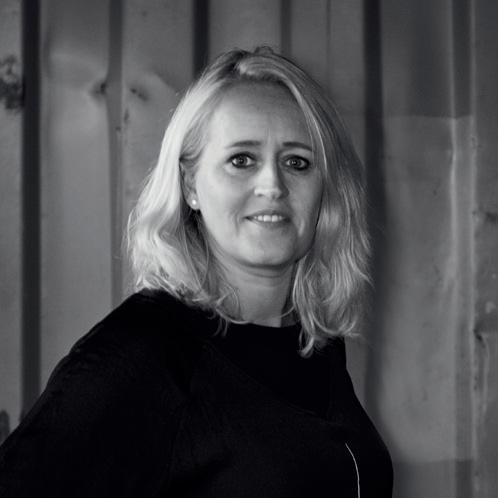
Dmitry Turcan, a prominent floral artist, is renowned worldwide. He founded Turcan International Design, an online school for florists, and Turcan Flower Bureau. His influence extends to students across 50 countries, and he actively engages in major global floral events.
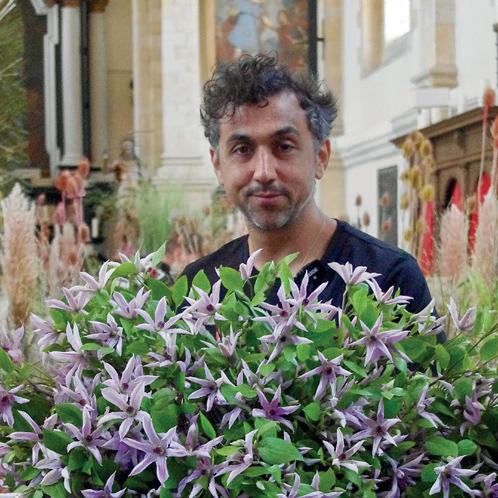
Róbert Bartolen, a Slovakian florist, educator, and floral media trendsetter, is celebrated for his extensive hotel, reception, and event installations. His artistry graces global florist magazines, and he secured the 2019 International Designer of The Year title from Fusion Flowers magazine.
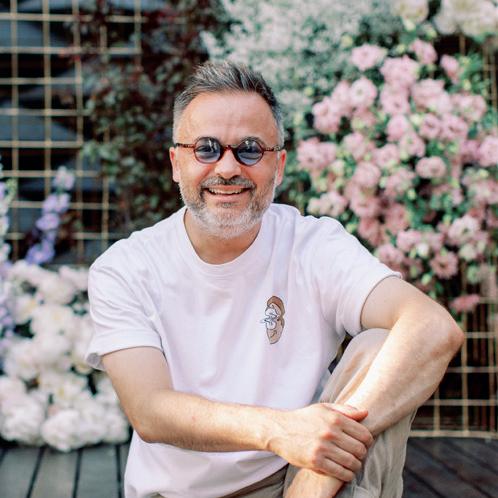
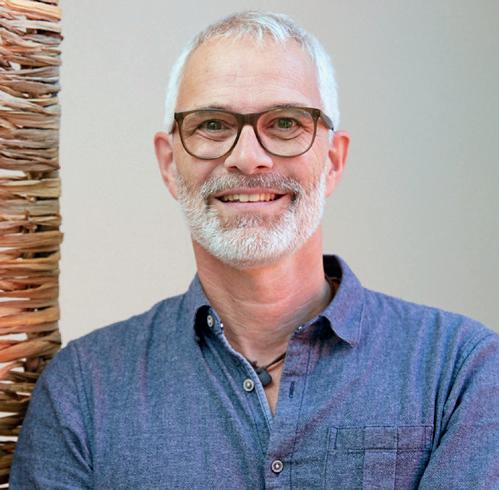

Klaus Wagener is a multi-faceted professional: floral designer, trend scout, stylist, teacher, author for publications, and creative lead at Germany’s BLOOM’s Medien. His fervour for his craft emanates through every endeavour, casting a radiant touch upon his work.
Nicu Bocancea’s devotion to flowers flourished from his upbringing as a Romanian floral artist. With his brother, he oversees the event design company and multiple flower shops, operating under the brand Floraria Iris. Nicu delights in impressing clients with exquisite bouquets and adorning Bucharest’s streets with captivating pop-up floral creations.
Sabine Darrall is a renowned wedding and event florist with a career spanning over four decades. Through workshops, Sabine inspires emerging florists to blend their artistic vision with environmentally friendly practices. Her passion, innovative approach, and down-to-earth nature have established her as a prominent figure in the industry.
Geertje Stienstra, a Dutch Floral Designer, excels in inspiring and motivating. Her distinctive approach to demonstrations and styling has gained recognition both locally and internationally. With original, innovative floral creations, she consistently surprises florists, students, businesses, and individuals.
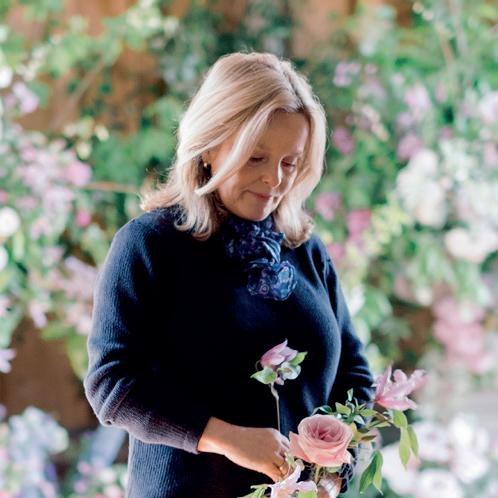
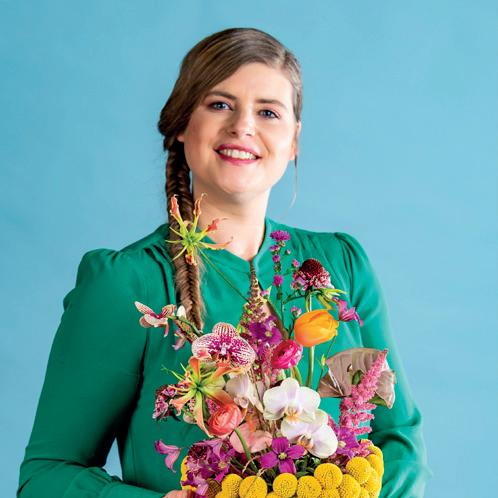
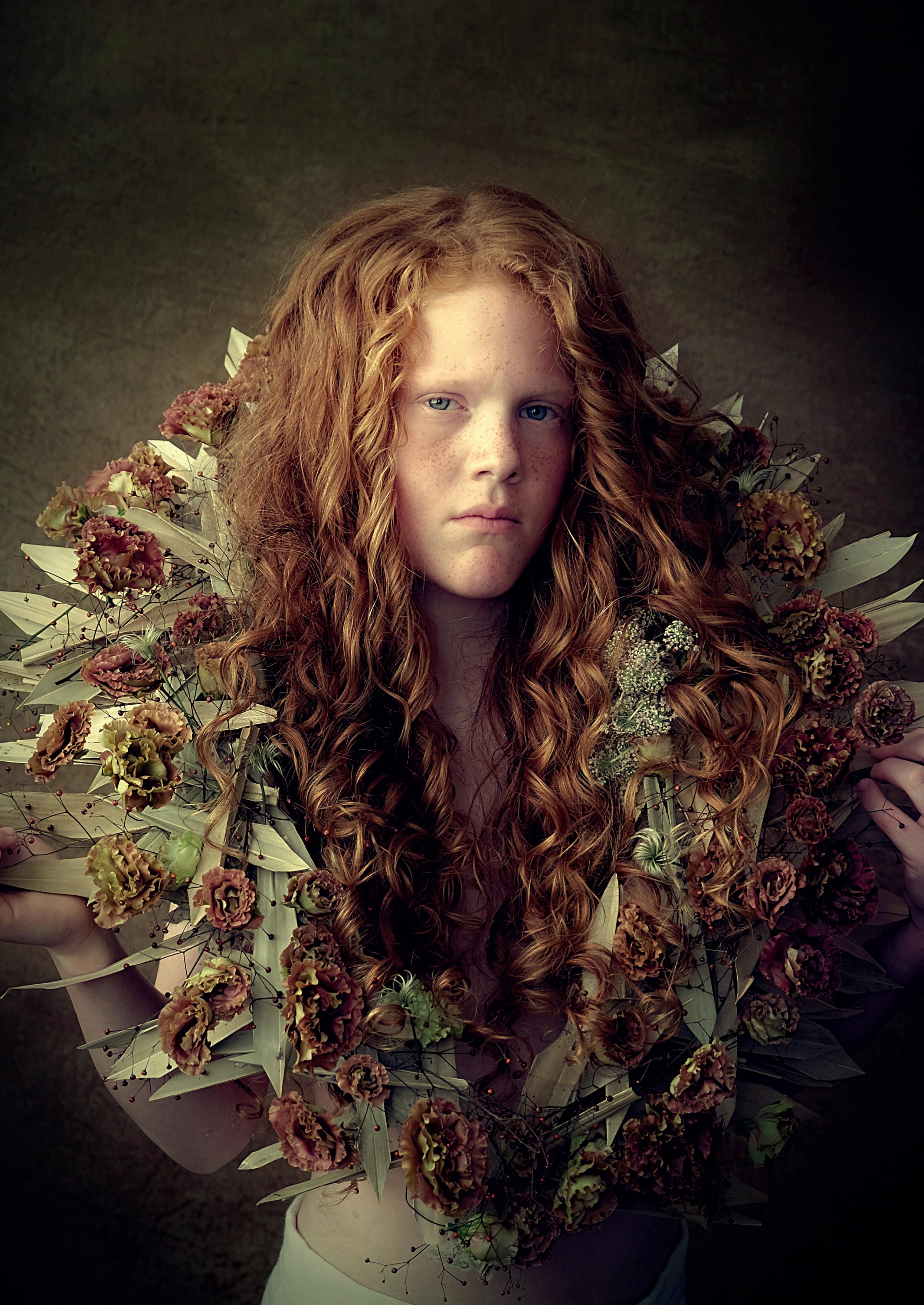 Photography Reiny Bourgonje
Photography Reiny Bourgonje
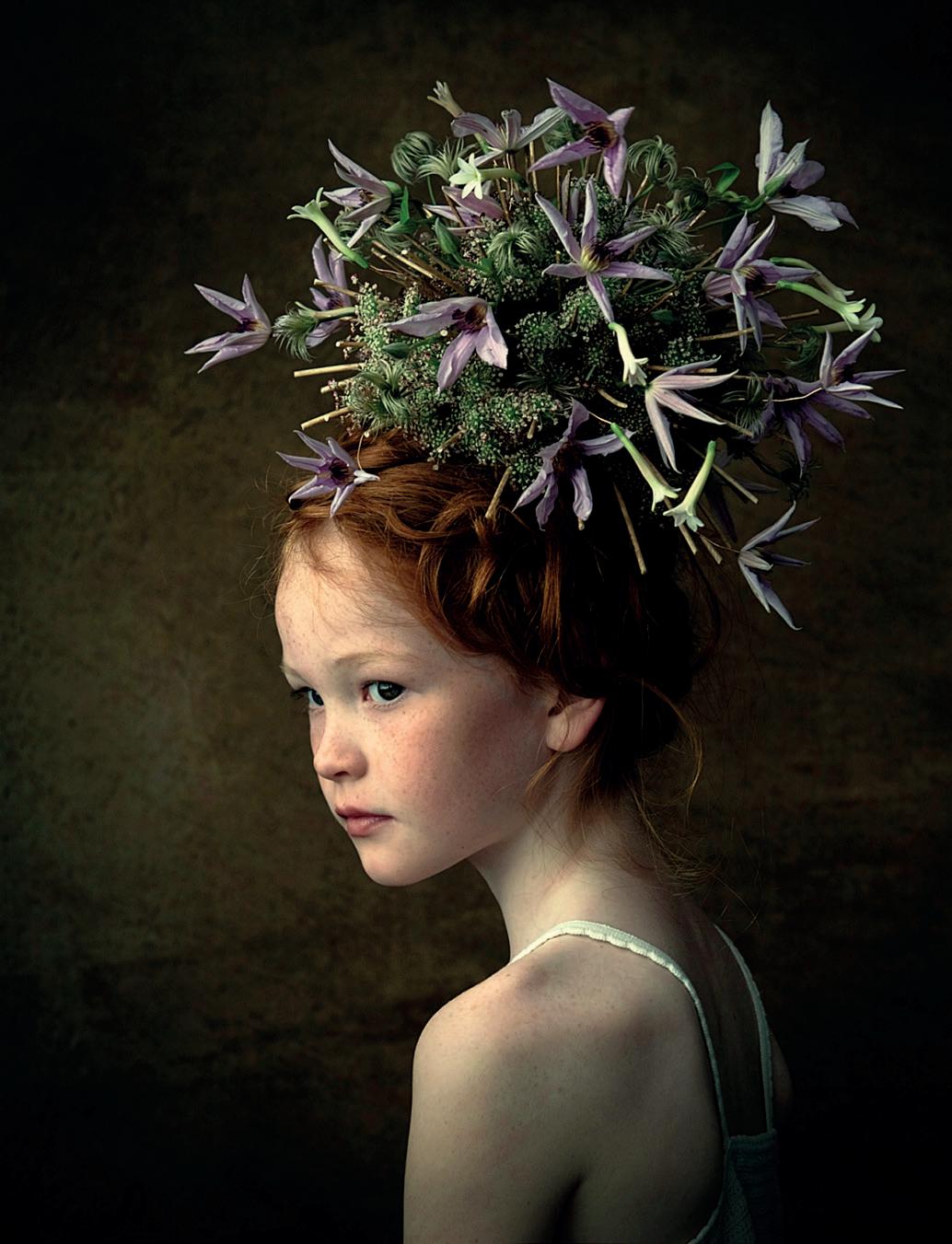
Florists are often creative individuals, people with a passion for what they do, constantly seeking renewal and wonder. Geertje Stienstra, a talented Dutch florist, is one such person. And the best part is that Geertje loves to share her knowledge. Her daily work includes giving demonstrations, workshops, and lessons at schools. She also engages in creative projects like the cover shoot for this magazine, which she co-designed with the award-winning photographer Reiny Bourgonje.
Geertje, born in 1979, thrives on variety in her workdifferent locations, diverse assignments - she embraces it all with enthusiasm. Her collaboration with Reiny exemplifies creative synergy. The two crossed paths when Geertje was impressed by Reiny’s work in store displays. After a message from Geertje, Reiny was immediately eager to explore floral art together, and their first shoot in 2020 left them craving more. The follow-up, the shoot for this magazine, once again, resulted in a splendid masterpiece.
“I start with the briefing, look at the models, and consider which colours and materials I want to use.
These three elements must complement each other”, says Geertje. The starting point was the models’ hair colour. “Reiny had selected two gorgeous red-haired models. The flowers had to match their hair.
I immediately thought of the large white Clematis (Amazing® Vienna) and the rust-coloured Talinum (Long John). I didn’t want loud shades; everything had to be in harmony. The light Scabiosa (Bon Bon Scoop™ French Vanilla) also fit perfectly. The only one with a different colour is the lilac Clematis (Amazing® Miami), but oh, it looks stunning.”
Although unseen, the foundation of these arrangements is of great importance. Geertje explains, “The base of these pieces consists of thick wire and insulation material - that grey stuff typically used around electrical pipes. This material is soft and allows you to clamp and tape things around it.” Over this base, Geertje places flowers and paper, both securely glued; no water is involved.
Paper is a recurring element in Geertje’s designs; she enjoys working with natural materials and organic shapes. “I believe it’s important that my work exudes tranquillity. I often work with mixed materials. For instance, I use paper to revamp an old pot or create surprising surfaces. You can do a lot with it - thread, glue, tear, shape. And it effortlessly matches any flower colour.” Geertje imparts this technique and many others during her workshops. “The most important thing I want my students to learn is to develop their own style. A florist is like an artist; the floral arrangements are masterpieces.” Some students may initially find it challenging, but Geertje reassures them, saying, “I couldn’t do it either in the beginning, but now something always pops up in
my head. It takes time to grow, to evolve.” And by the end of the lesson, they already have something they’re proud of. And so am I.”
Geertje thoroughly enjoys teaching, but she also views it as necessary. “There is a glaring shortage of florists. To address this, you need to get people excited about the profession, and that starts from the foundation. And I know, being a florist is hard work; it has to be your true passion.”
Learn more about Geertje:
Instagram: @geertjestienstra
Website: www.geertjestienstra.nl
Learn more about Reiny:
Website: www.reinybourgonjefotografie.nl
Credits
Design: Geertje Stienstra
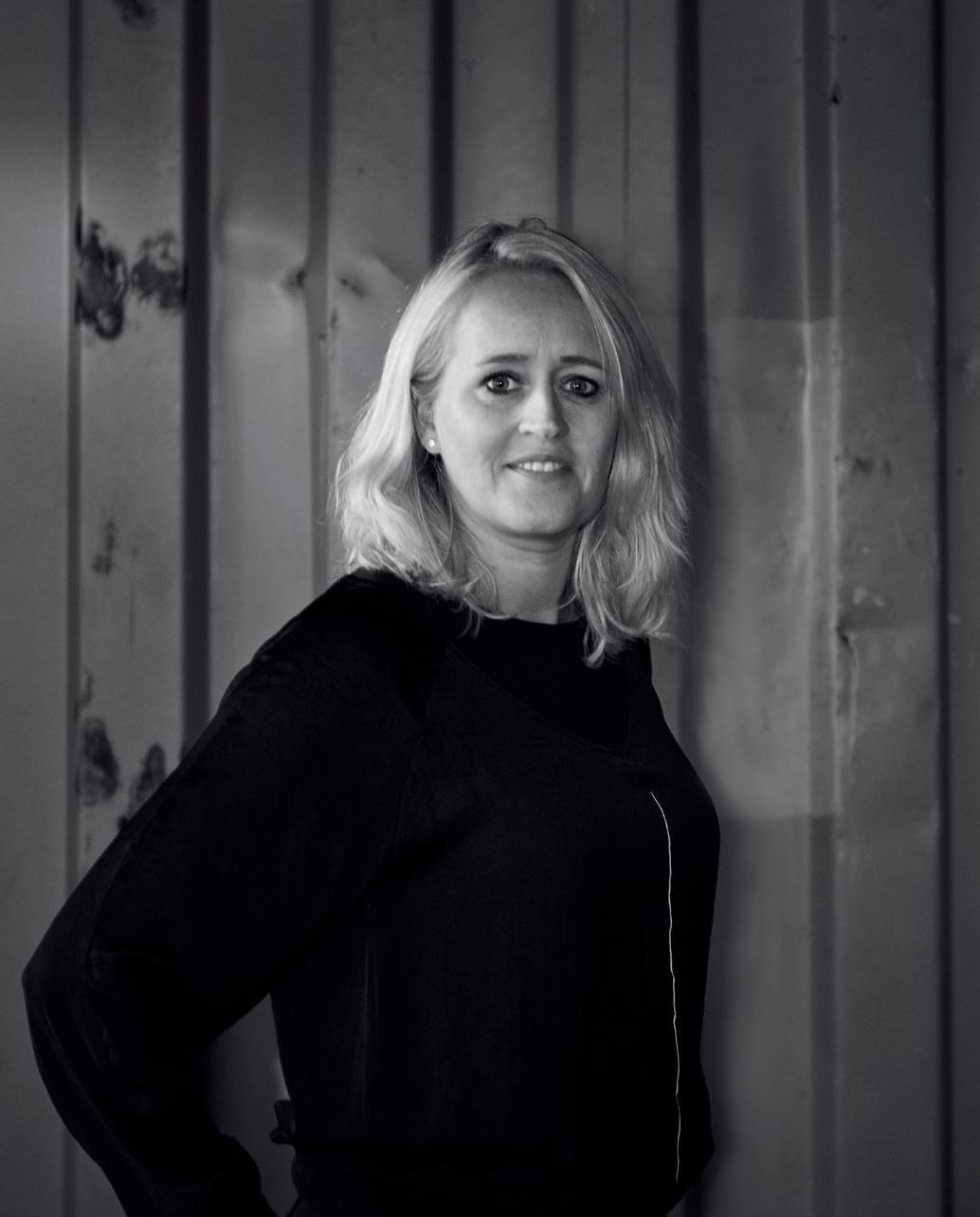
Photography: Reiny Bourgonje
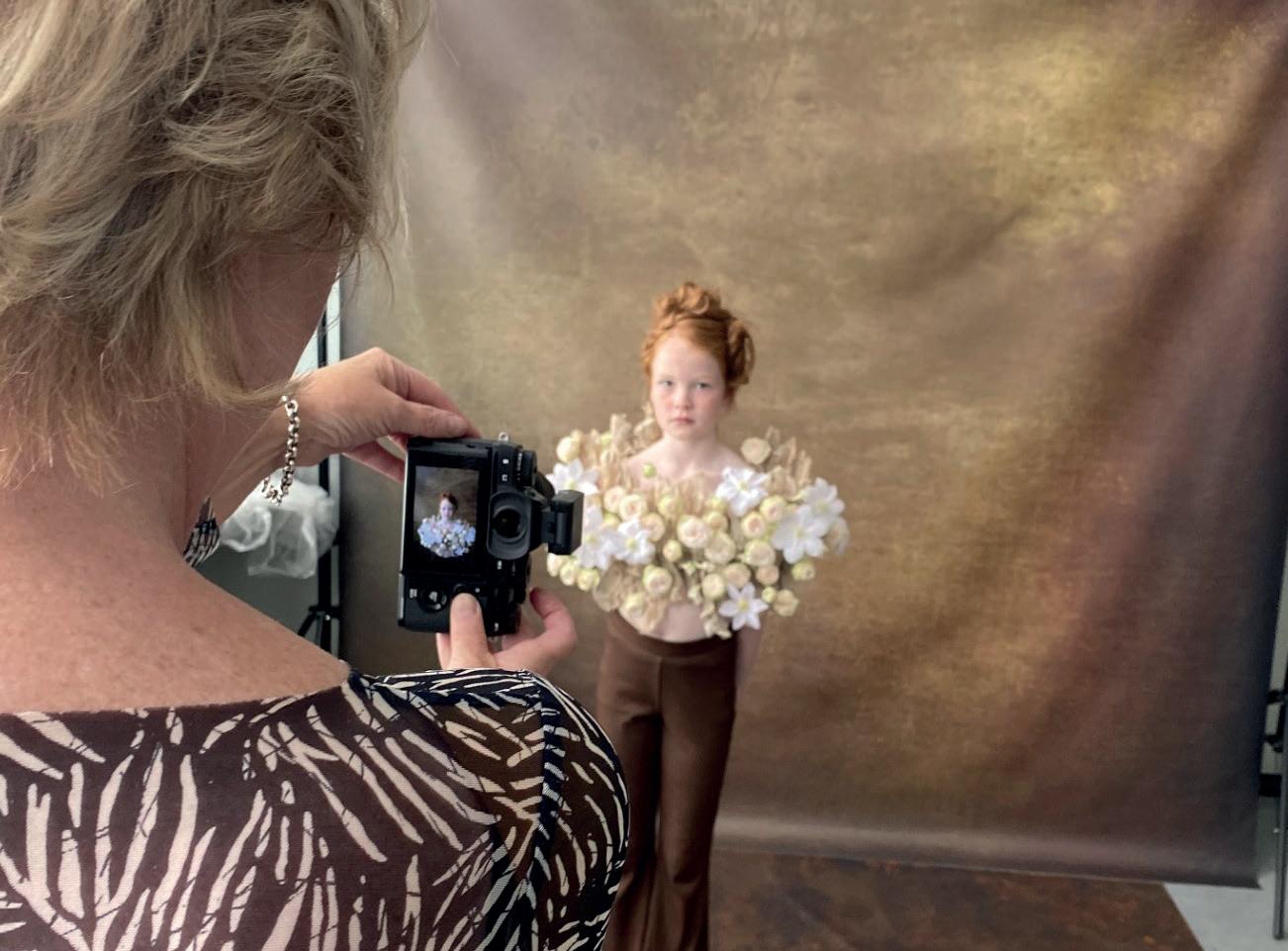
Models: Julia Petiet & Mees Schuttenbeld
Hair: Karla Jalving
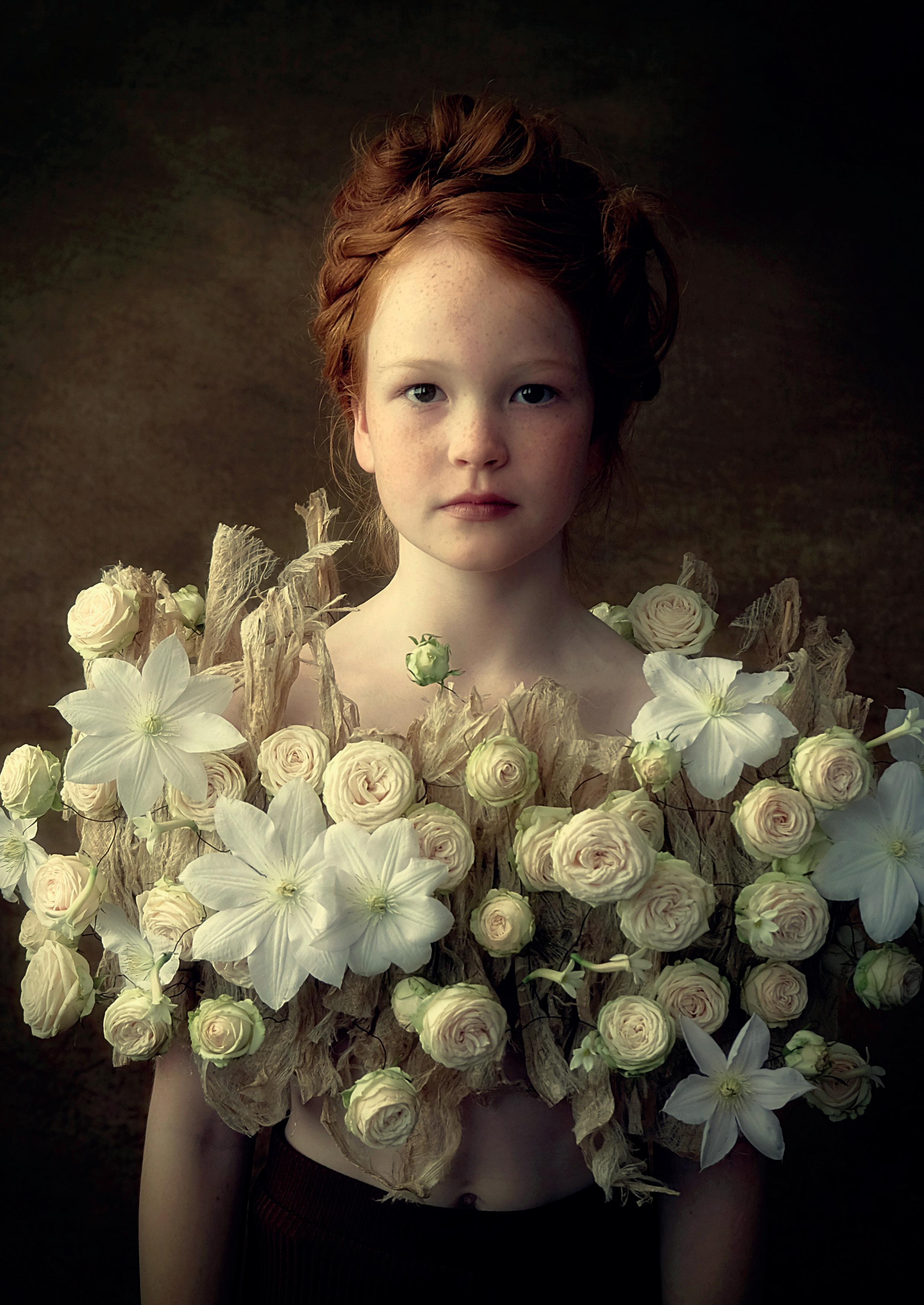 Photography Reiny Bourgonje
Photography Reiny Bourgonje
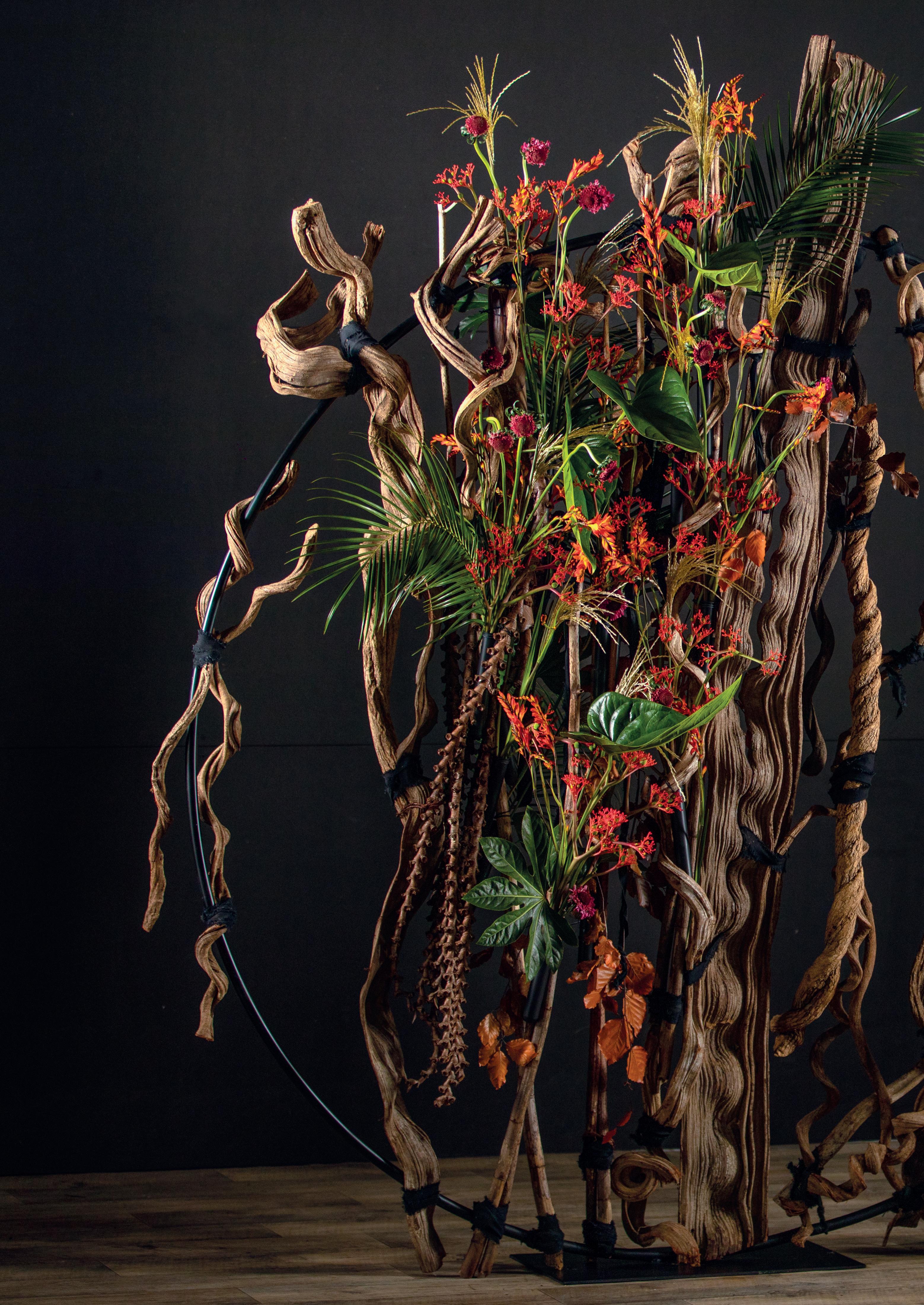
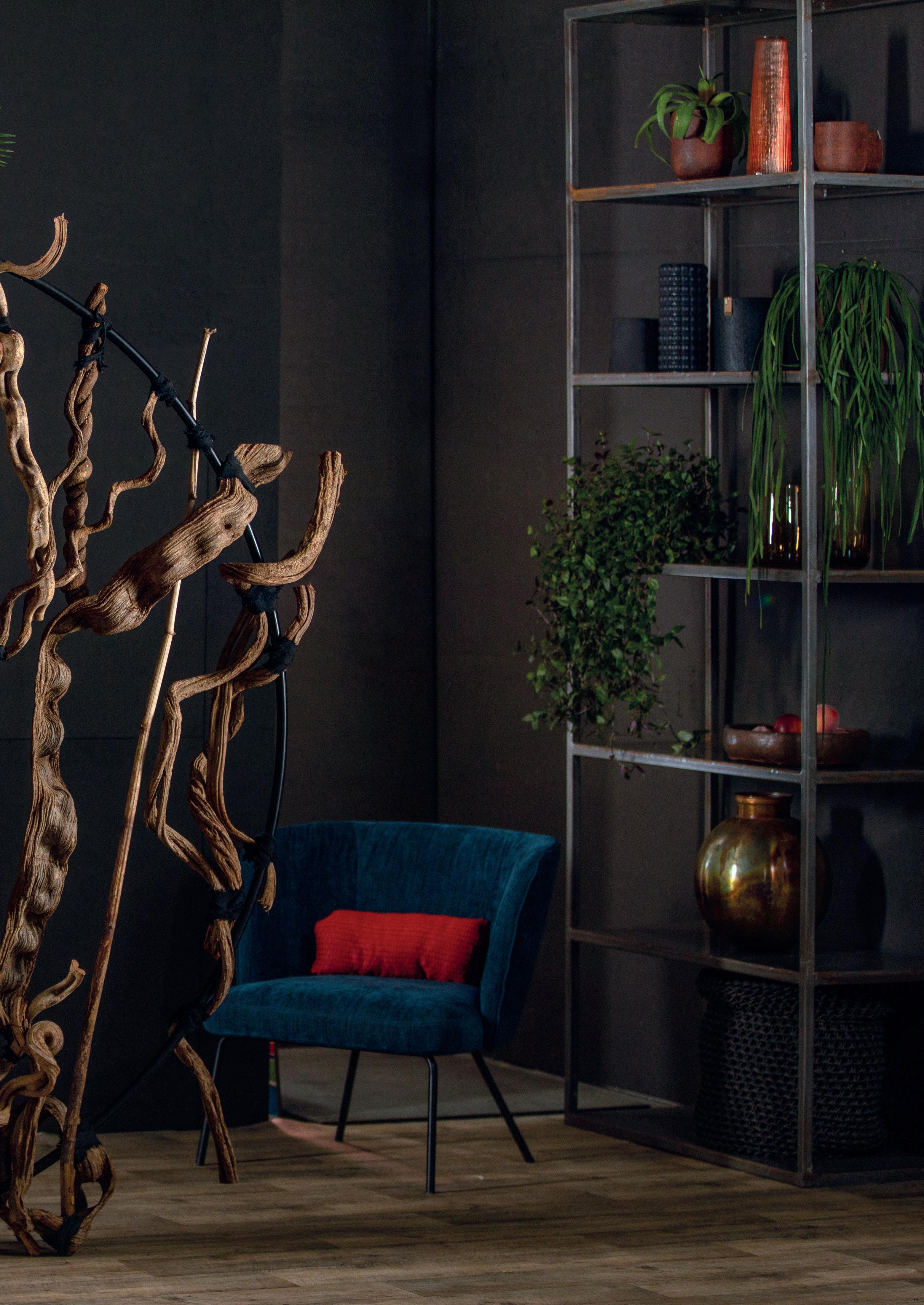
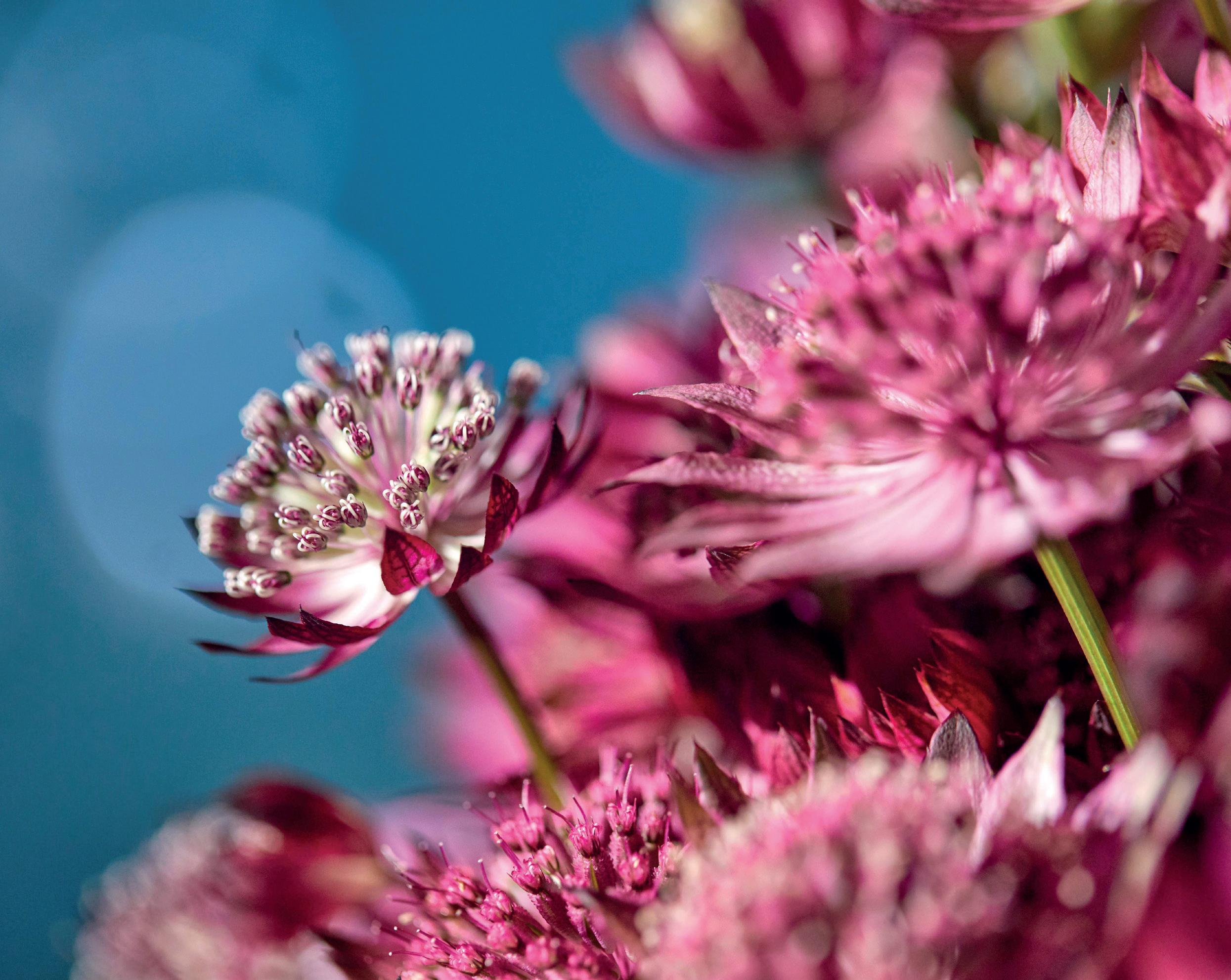
With her charming appearance, meaningful symbolism, and allure, Astrantia is a beloved flower among flower enthusiasts worldwide. It is commonly known as the ‘Hattie’s Pincushion’. No one knows exactly who Hattie is but the comparison with a tiny pincushion fits perfectly. With its strong stems and long vase life, this versatile flower is stunning in bouquets and floral arrangements. Astrantia is mostly used as a ‘filler’ in bouquets, but these designs from BLOOM’s show what happens when you put Astrantia in the spotlight…
The unique and striking flower shape of Astrantia Star® of Love adds interesting texture to this floral arrangement. It complements other flowers, making Clematis Amazing® Kyiv a perfect fit for this piece.
For an engaging contrast, the ever-radiant Astrantia Billion Star® is added, resulting in a harmonious outcome.
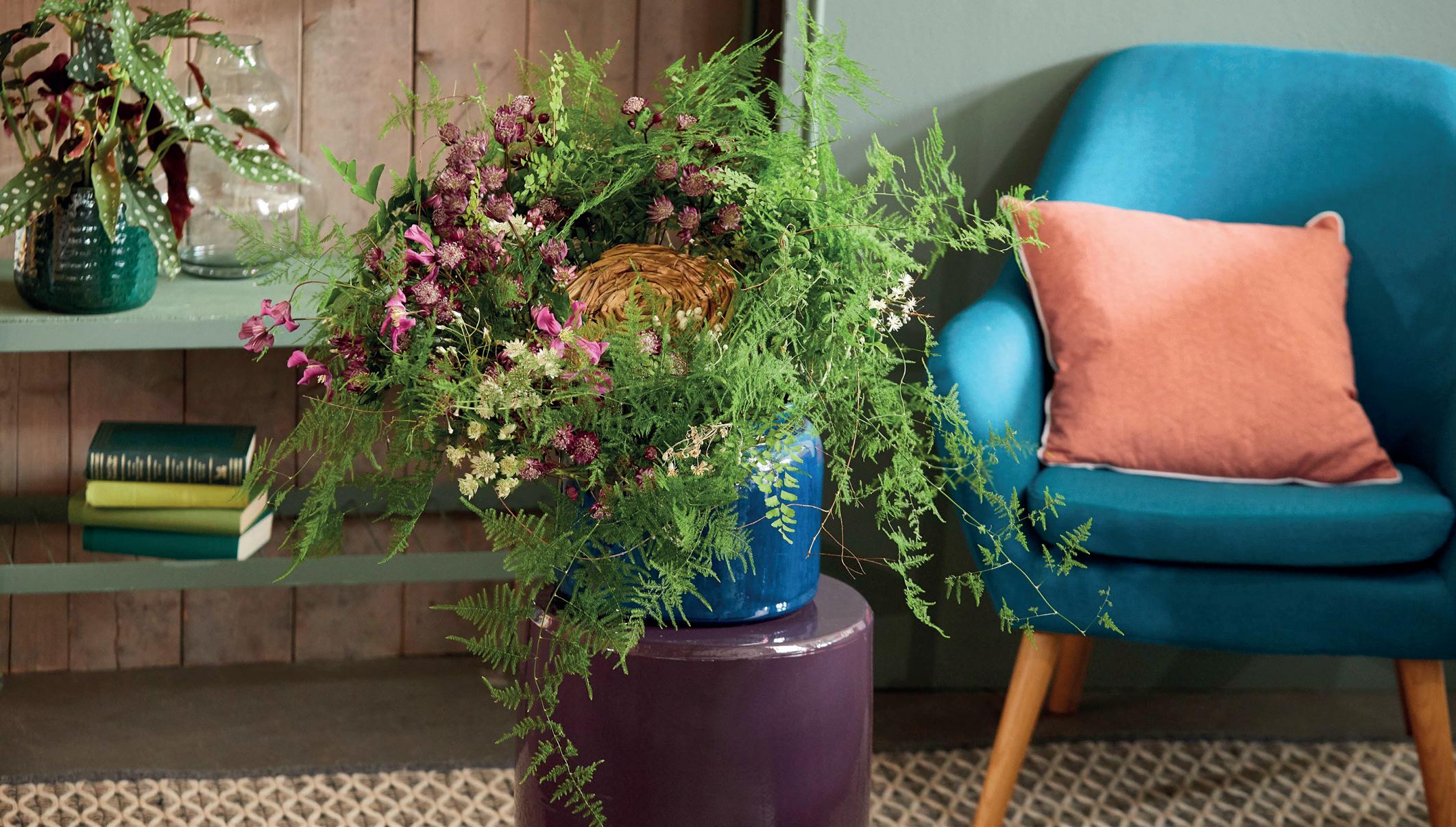
Thanks to its sturdy and charming stems, Astrantia Star® of Love requires no extra support, making it a beautiful addition to this creatively bound design.
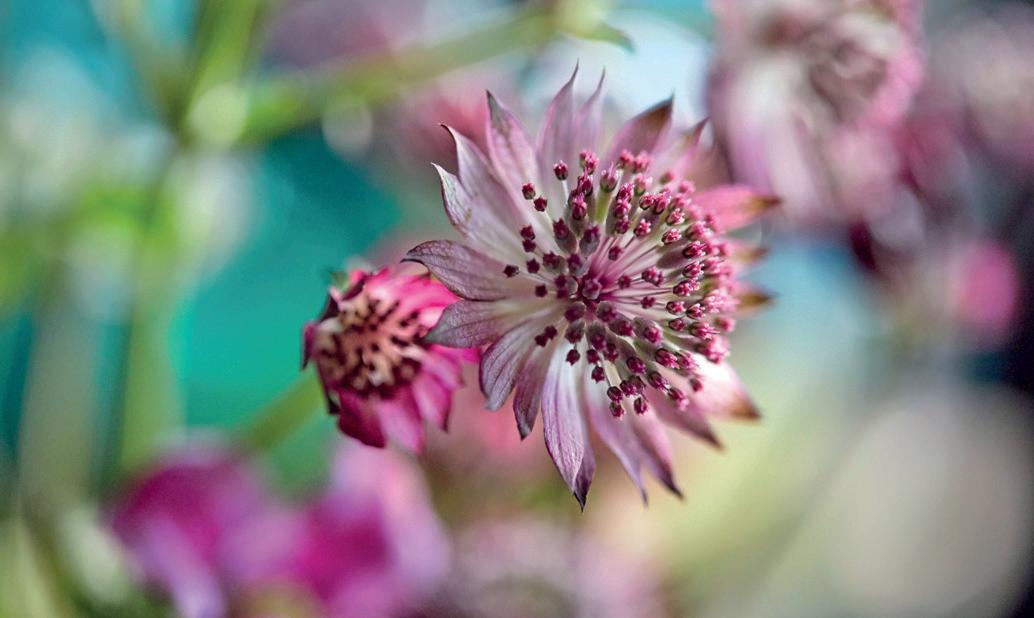
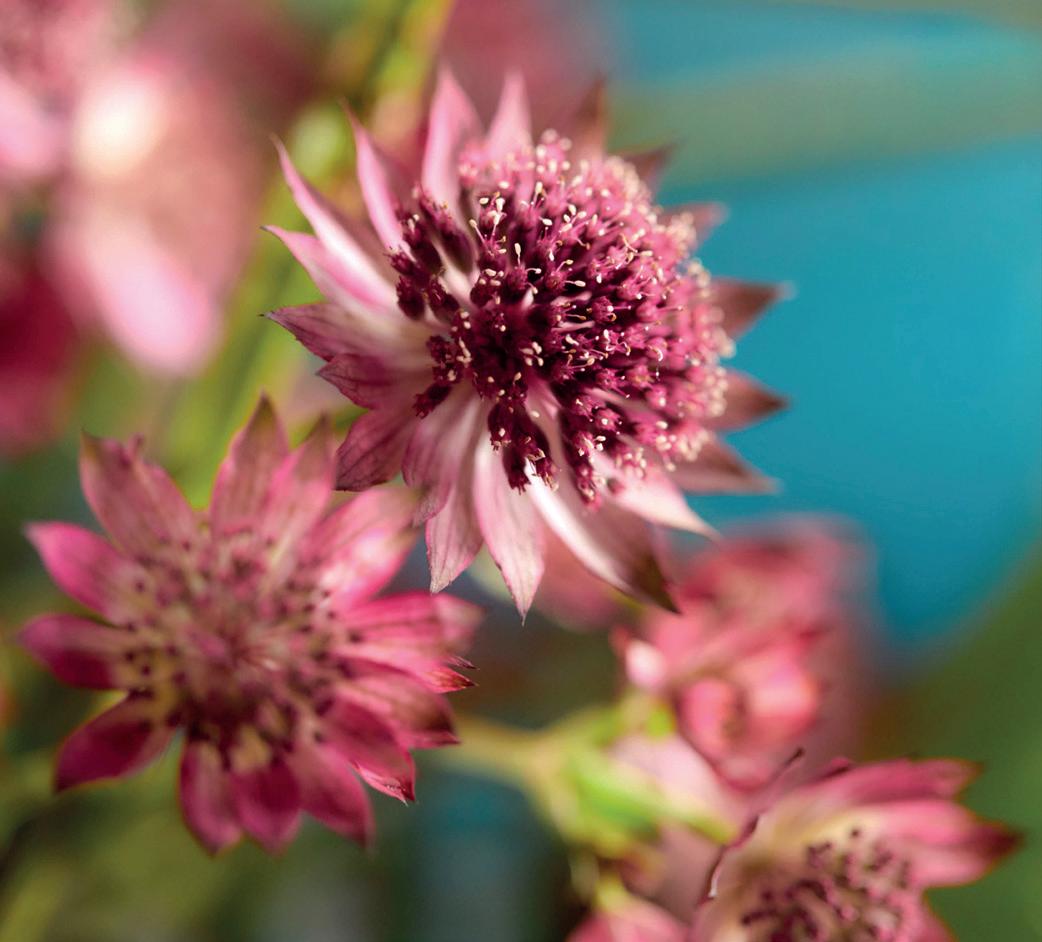
Paired with Scabiosa Focal Scoop™ Bicolor Pink, its vibrant colour adds a touch of freshness and a powerful contrast. This combination results in a dynamic arrangement that is a feast for the eyes.
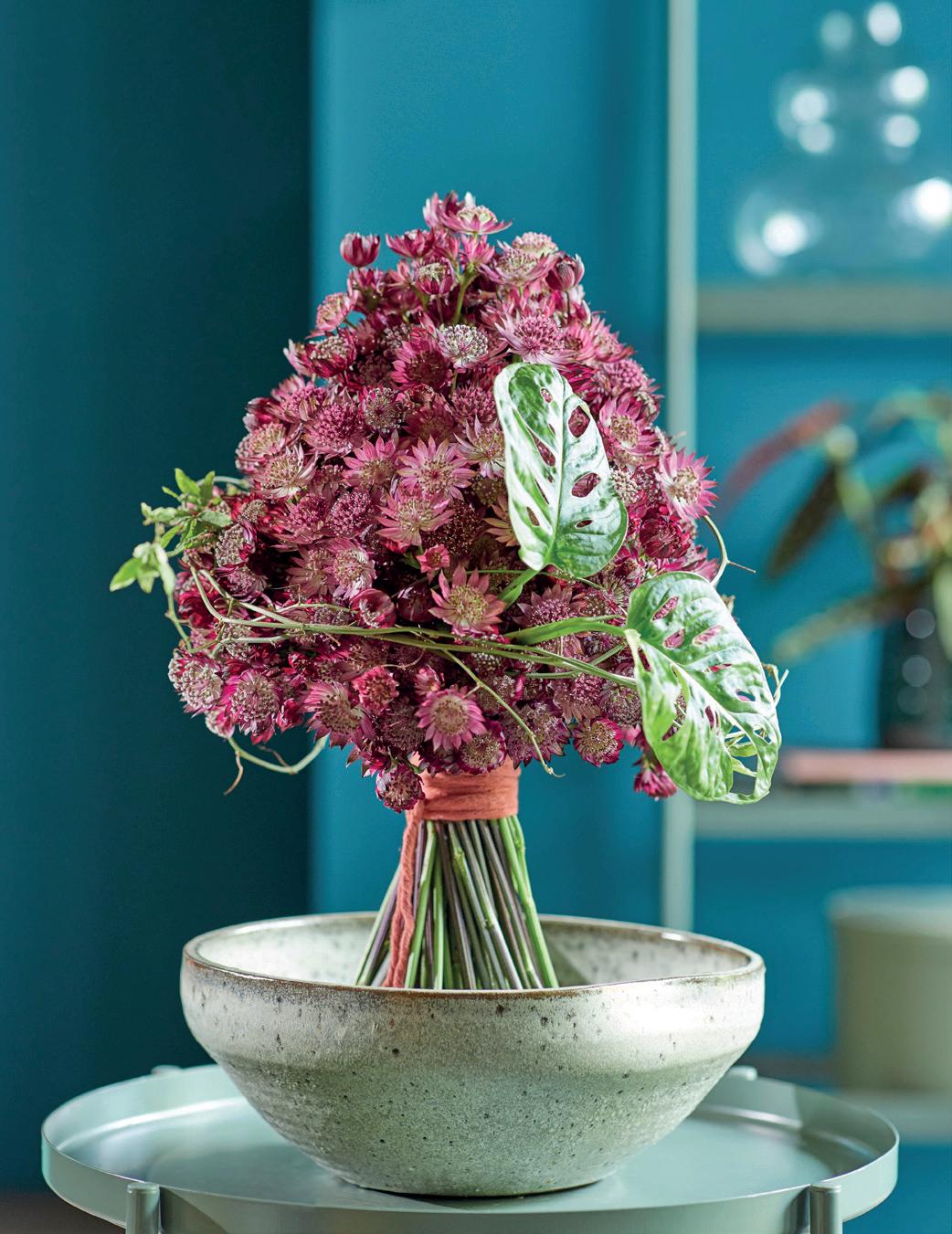
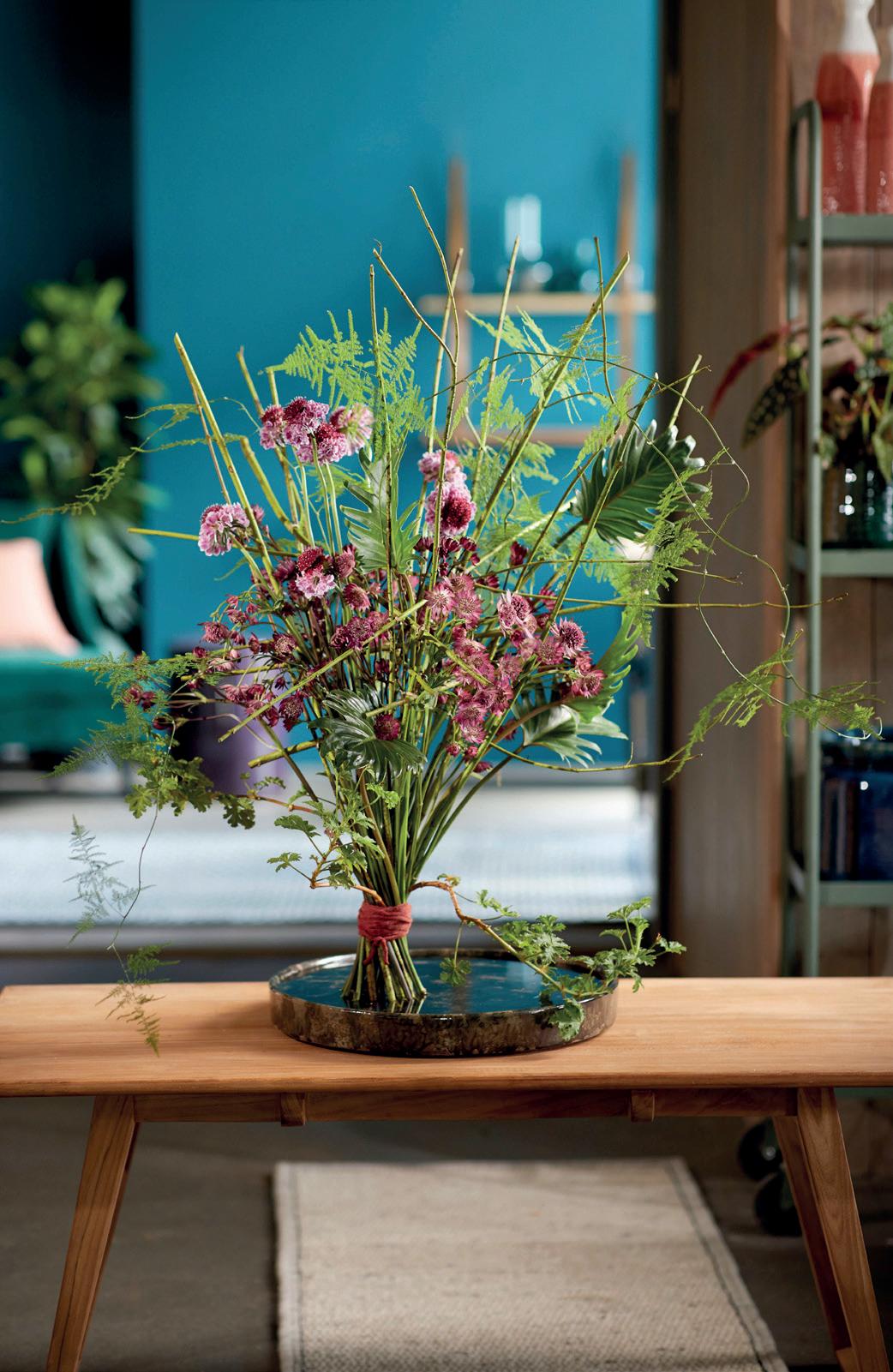
By accentuating and letting Astrantia Star® of Love’s natural beauty shine, this design doesn’t require an abundance of other flowers to make an impact. By using almost exclusively Astrantia, this arrangement exudes a sense of simplicity and refinement, allowing the elegance of Astrantia to take centre stage. This creates a calming yet impressive effect, making this design a beautiful centrepiece for any occasion or space.
Combining Astrantia with green elements gives the floral arrangement a balanced appearance. The green serves as a soothing factor, accentuating the brightness of Astrantia Star® of Love and Astrantia Billion Star® while Clematis Amazing® Kyiv adds a refined touch to the overall composition. The contrasting textures and colours in this design result in a visually appealing combination that brings liveliness and interest to the floral arrangement.
The green in this design acts as a neutral background that complements the vibrant colour of Astrantia Star® of Love. The fusion of these elements creates a harmonious feel within the floral arrangement, ensuring that texture and colour are beautifully balanced.
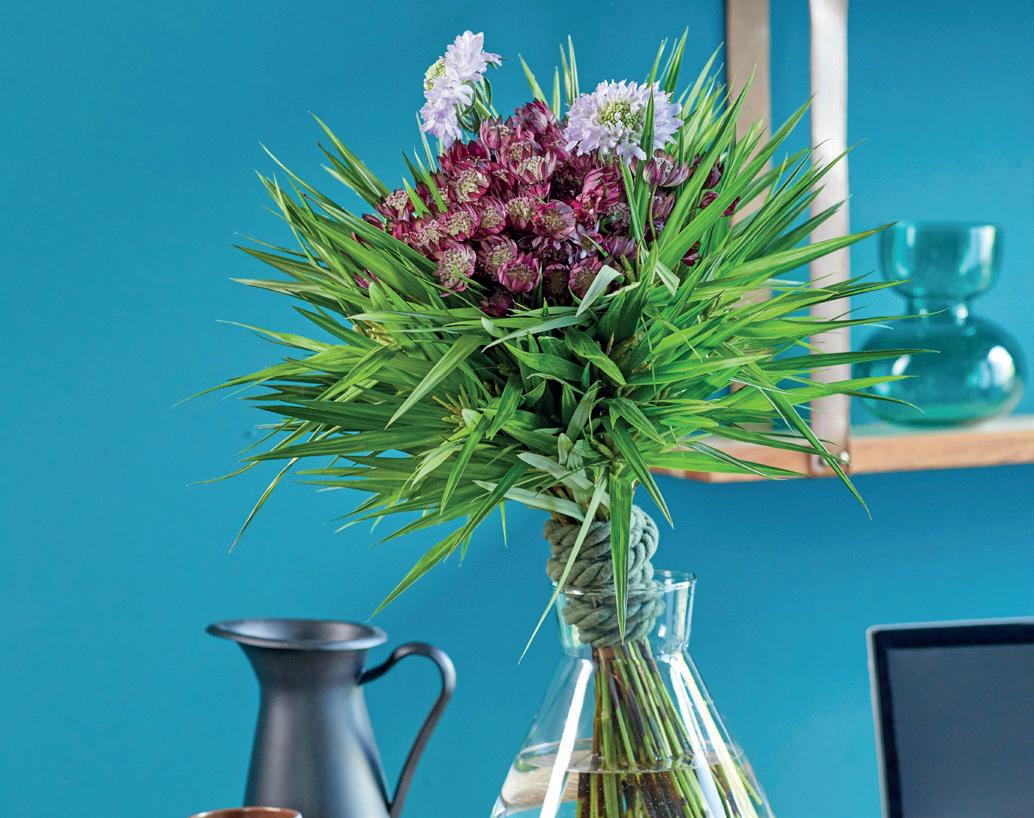
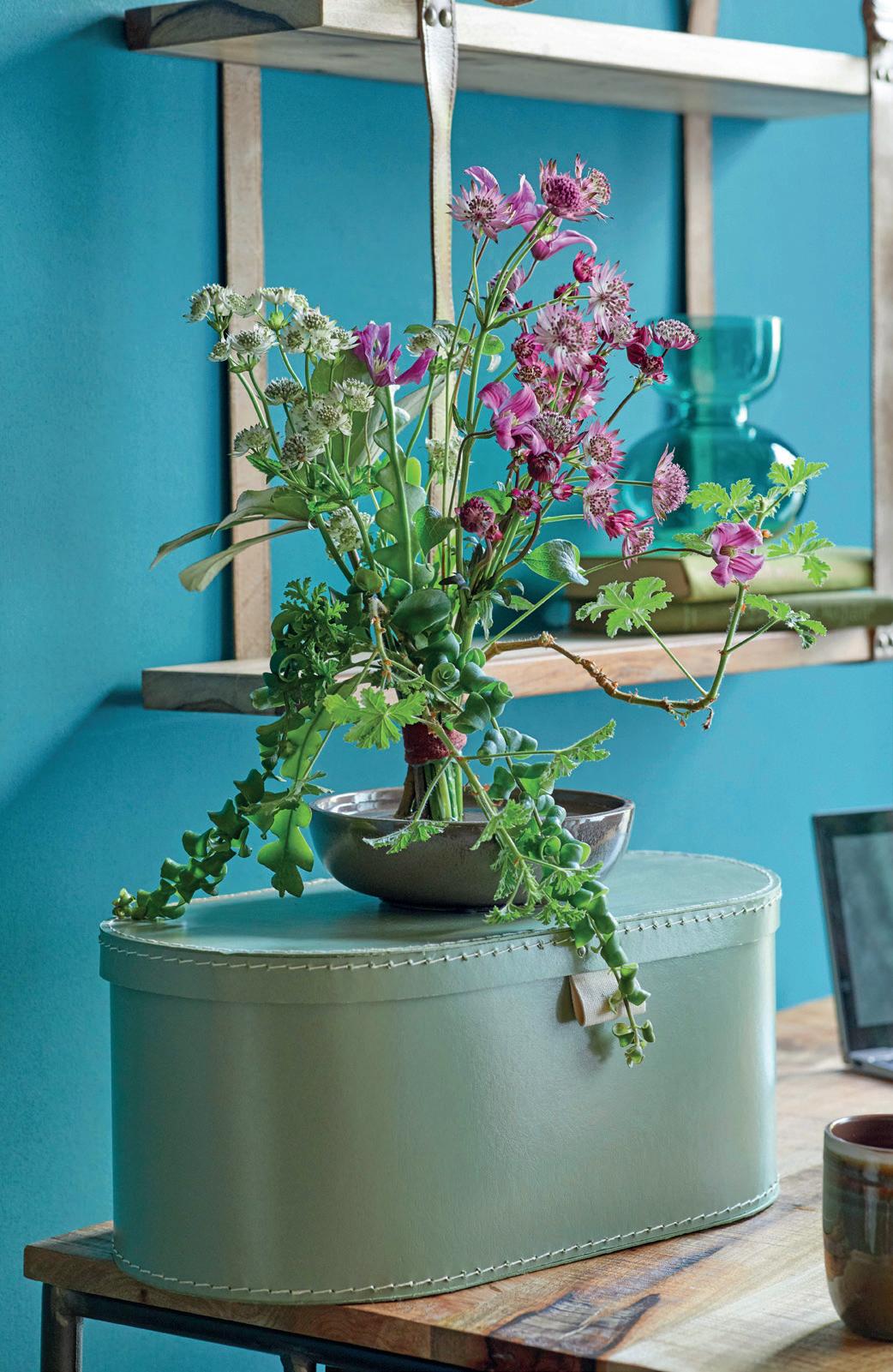
In conclusion, Astrantia adds versatile value to floral arrangements thanks to its unique shape, stunning colours, and natural allure. It offers countless possibilities for creative combinations with other flowers and brings an exquisite touch to any composition.
Learn more about Astrantia:
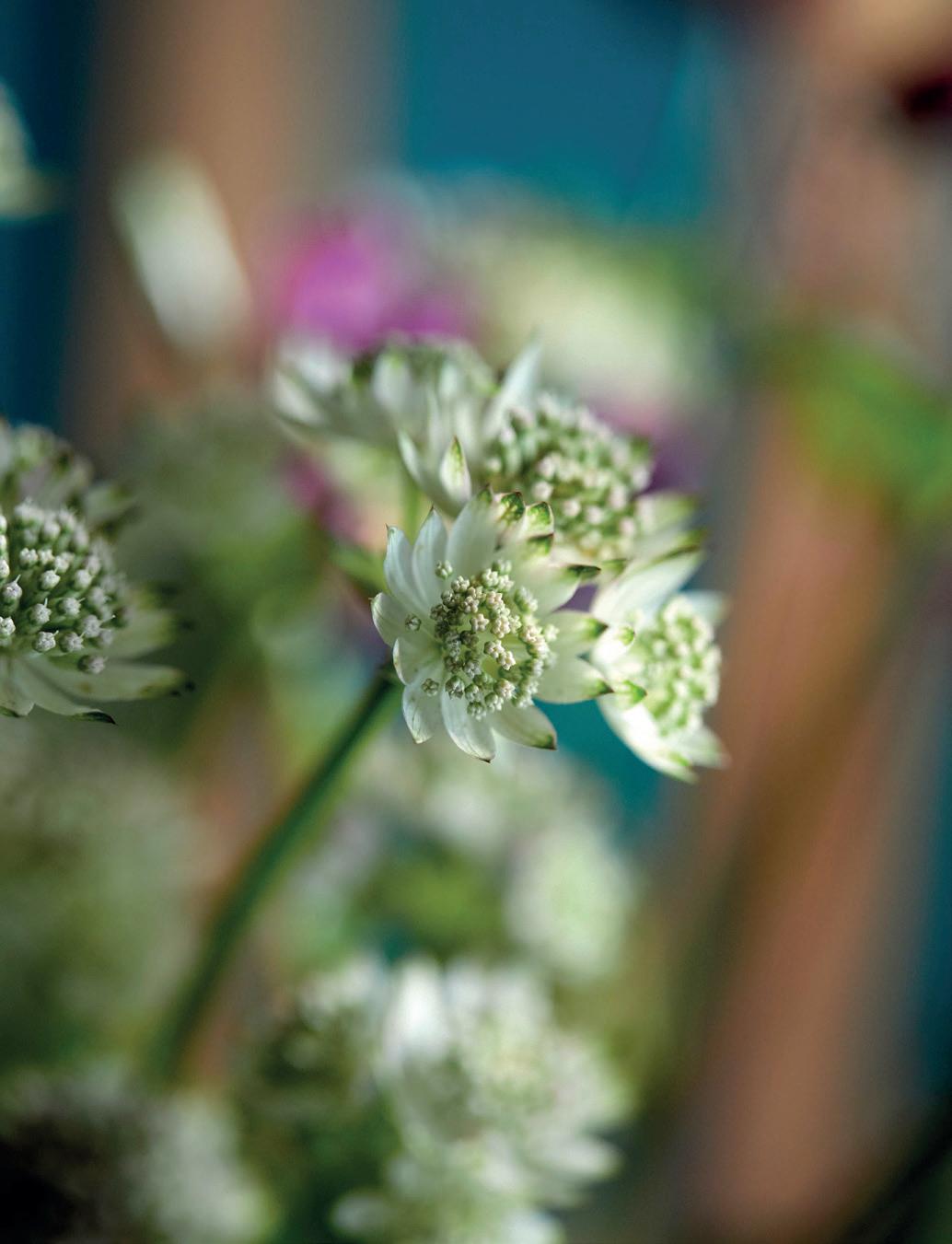

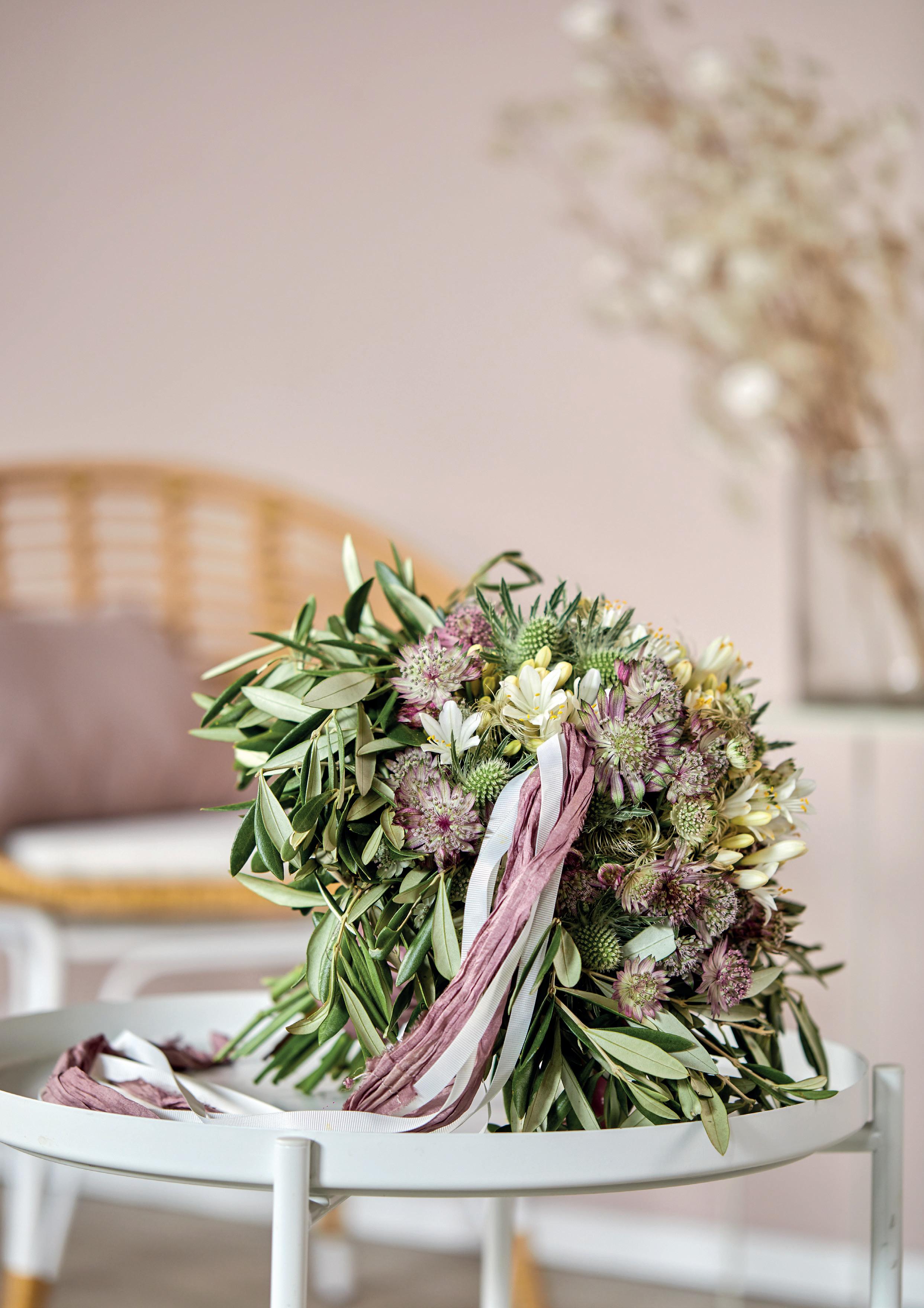
FACEBOOK.COM/MARGINPAR
INSTAGRAM.COM/MARGINPAR
TWITTER.COM/MARGINPAR
PINTEREST.COM/MARGINPAR

LINKEDIN.COM/COMPANY/MARGINPAR
WWW.MARGINPAR.COM/ASTRANTIA
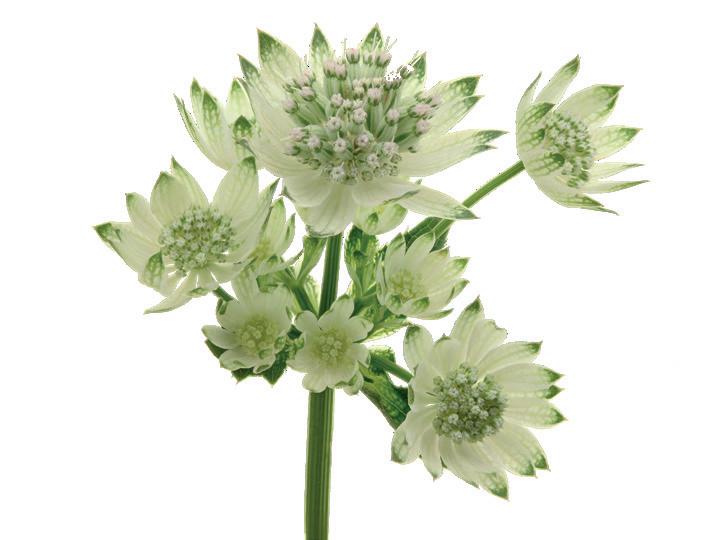
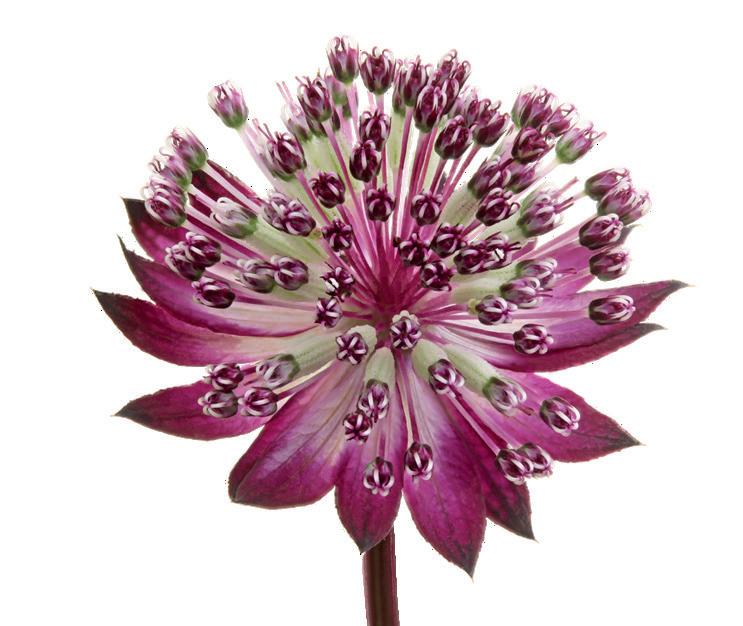
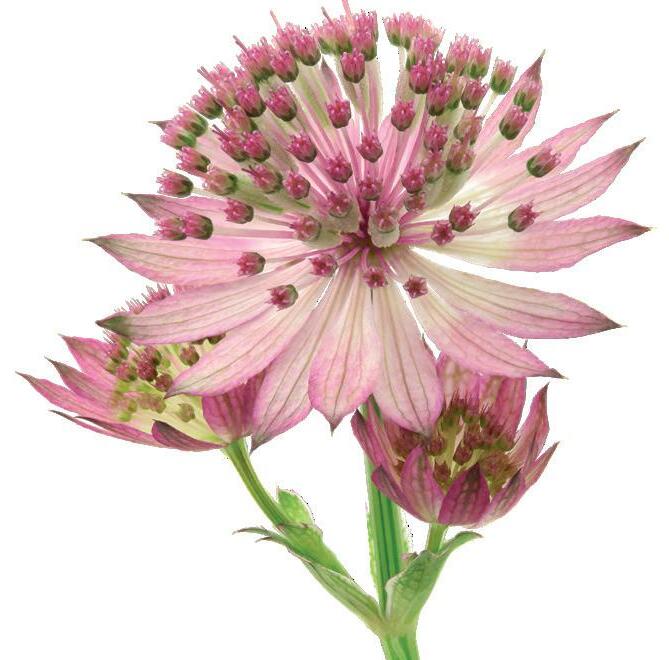
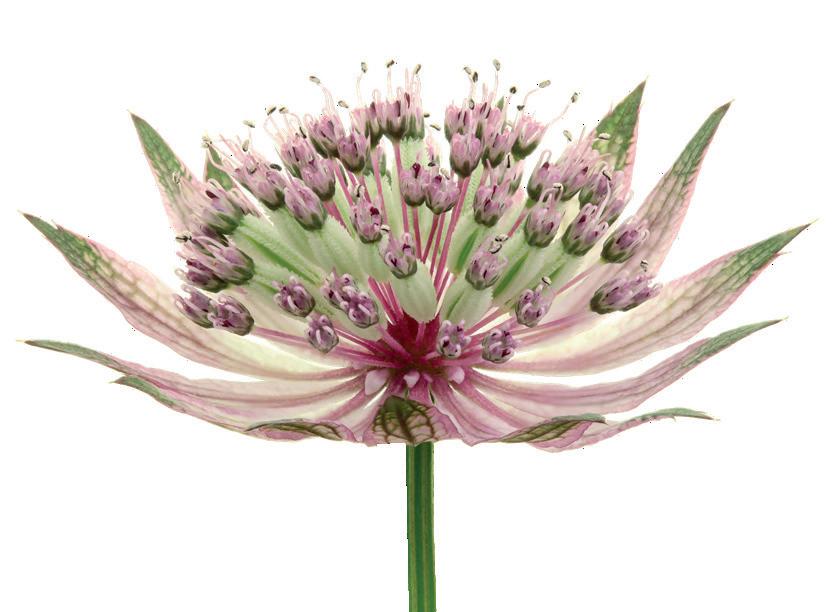
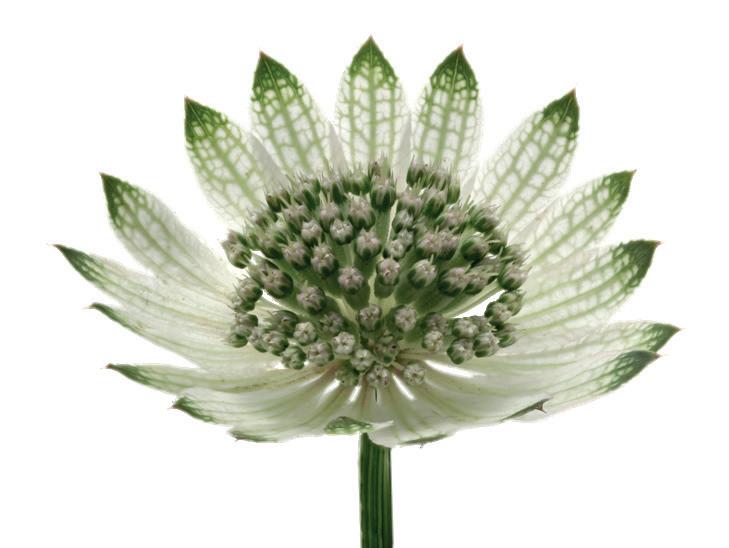
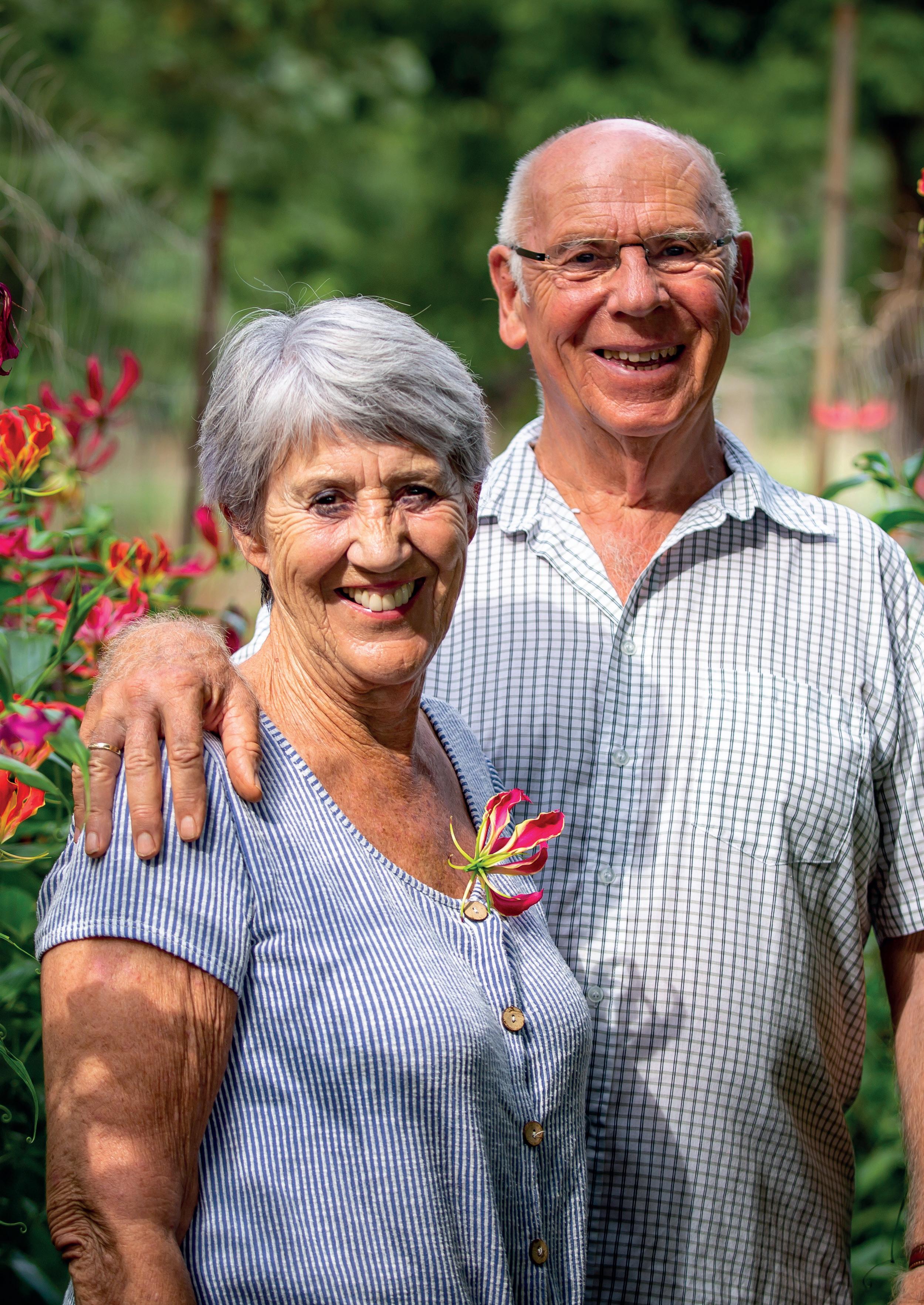
Marginpar is celebrating its 35th anniversary this year. As a remarkable company with a unique story, it has embarked on an impressive journey. What started as an unconventional inquiry about cargo capacity in Zimbabwe evolved into a thriving business that embraces innovation, diversification, and sustainability. Let’s go back in time and discover how Marginpar has grown and flourished from the roots of the floral industry to what it is today.

In the 1980s, the global flower industry had already experienced significant development. The majority of flowers were cultivated in the Netherlands, Israel, Kenya, and Colombia. The act of gifting bouquets of flowers was deeply ingrained in European culture, which benefited the market. Roses, Carnations, and Alstroemeria were among the flowers imported from Kenya. Most local flowers were only available seasonally, and the logistics and distribution systems were far less advanced compared to today.
Pioneers Jill and Bate Koning embarked on their adventure in the 1980s, laying the foundation for the Marginpar brand. Through what seemed like a case of serendipity (some might call it fate), Bate Koning, a Dutchman who was involved in greenhouse construction in China at the time, received a call from pilots in Zimbabwe. The airline faced a problem: “The planes fly fully loaded from the Netherlands to Zimbabwe but return empty. What kind of cargo would be suitable for transportation from Zimbabwe, and can you help us?” It was an unusual question that many people might have overlooked, but Jill and Bate were ready for adventure. The idea immediately sparked Jill’s excitement, having a deep connection with Africa. She was born in Malawi, where her Scottish family settled in the late 1800s. The couple joined the pilots in the cargo plane’s cockpit, heading to Zimbabwe to explore the country for weeks. Bate described it as “the land of milk & honey”.
They quickly decided to start growing and exporting vegetables. Snow peas and baby corn filled the cargo hold of the airplanes. The family, with two teenagers, split their time between the Netherlands and Zimbabwe. After a few years, they encountered a problem: the cost of transporting the cargo increased, and profit margins decreased. This made Jill and Bate ponder: what could they export that was lighter than vegetables? The answer was flowers.
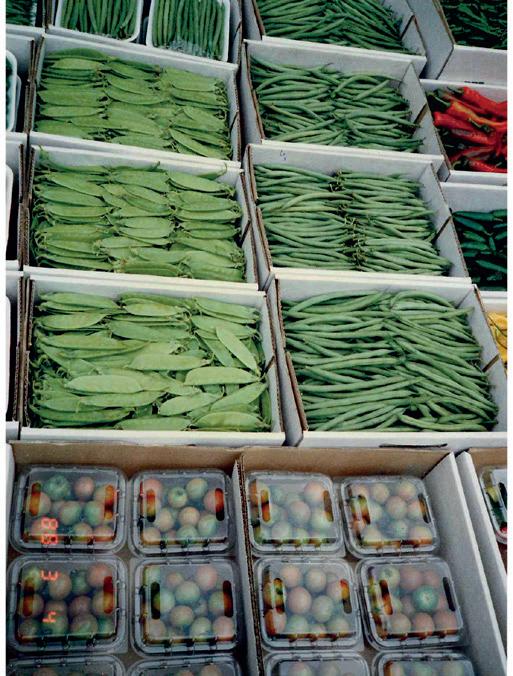
Was it a logical idea? Not when you consider that there were no exporters of flowers from Zimbabwe to the Netherlands at the time. However, this did not deter the couple. In 1988, they started with growing flowering crops from seed, such as Ammi Majus and Bupleurum, which they cultivated with the help of grower Craig Danckwerts. They sent the flowers to the Netherlands, where they were unpacked and sent to the flower auction.

Bate continues to explore new opportunities, seeking suitable partners, and finds Henk & Bernard van den Bosch, Hypericum breeders from the Netherlands. Bart van Rixel and Peter Sinneger, Eryngium breeders, also join the team. Bate recalls, “We were sitting in Bart’s kitchen when he mentioned that he could sell his Eryngium varieties for 8 weeks a year, sometimes even 10. I looked at him and asked how he would feel about being able to sell them year-round. ‘Let’s do it!’ said Bart.”
The first Hypericum and Eryngium plants are cultivated on the African continent, in Zimbabwe. With the involvement of the initial breeders, the “Marginpar model” takes shape - a partnership agreement between breeder and Marginpar to collaborate and grow together. Decades later, this partnership model still sits at the core of how Marginpar works.
The crops thrived, and customers appreciated the flowers from Zimbabwean soil, which gave our pioneers confidence. They acquire 1000 hectares of land to expand their cultivation efforts, of which 70 hectares are allocated to the production of flowers. They assemble a team of other growers to cultivate Hypericum and Eryngium. Together, they fill the cargo holds of airplanes. While Bate spends a lot of time in the fields, Jill focuses on the administrative side, handling the auction proceeds for the 130 million stems from what grew to over 25 partner growers. Jill reminisces, “I remember that moment of panic when suddenly 8000 Eryngiums arrived. We thought we were going to flood the market, it was eight times more than usual. But we sold them all.”
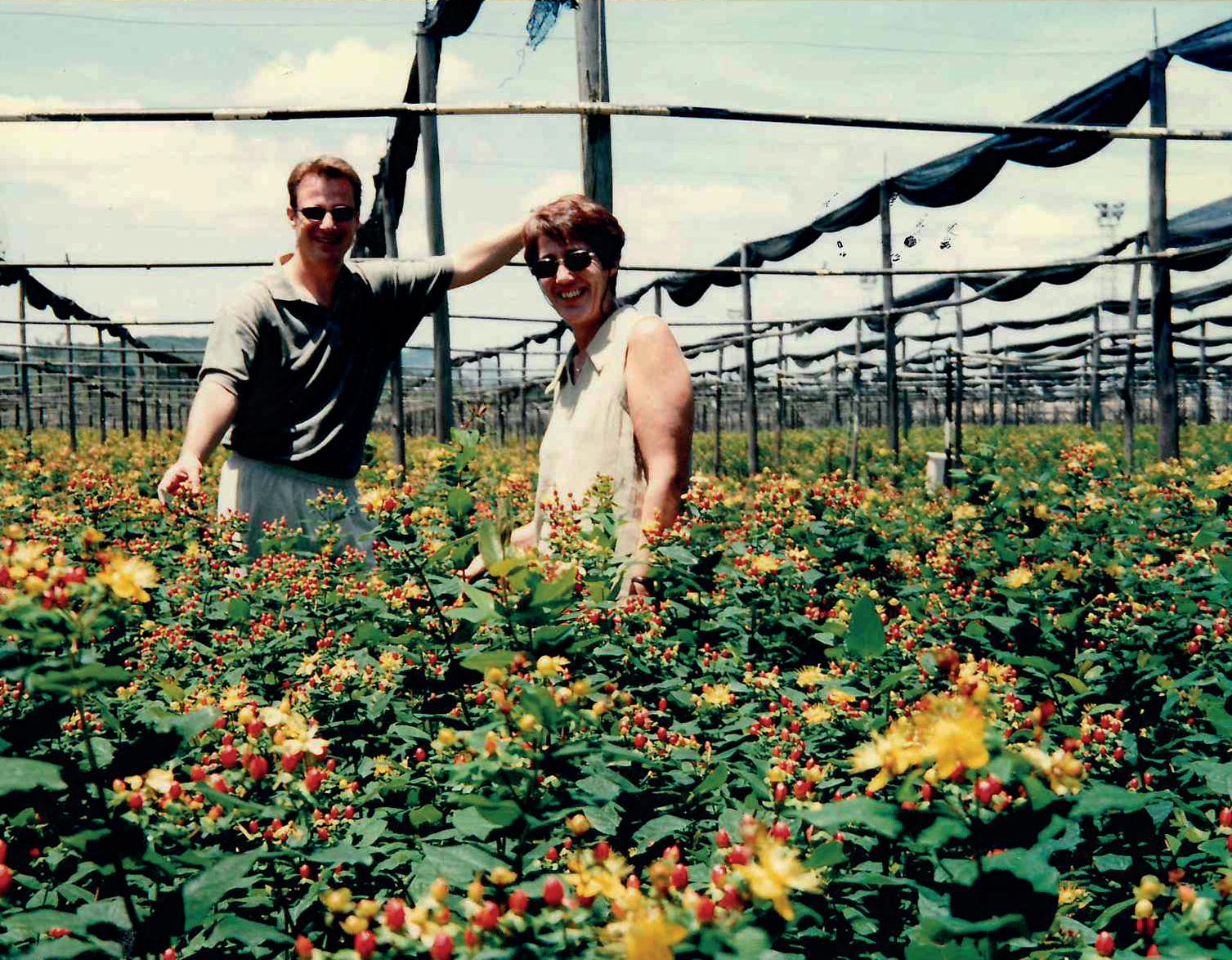
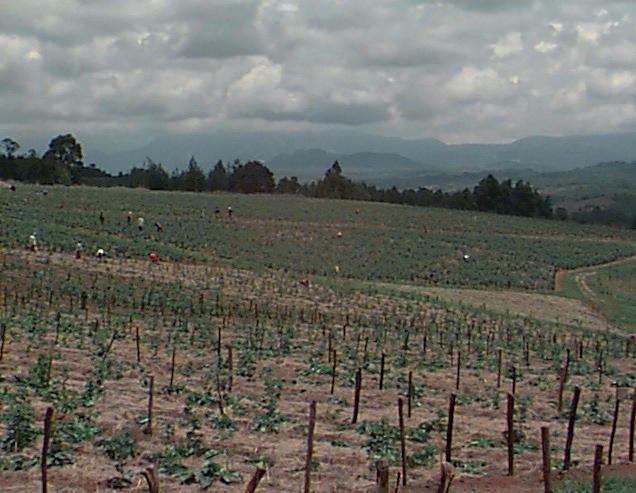
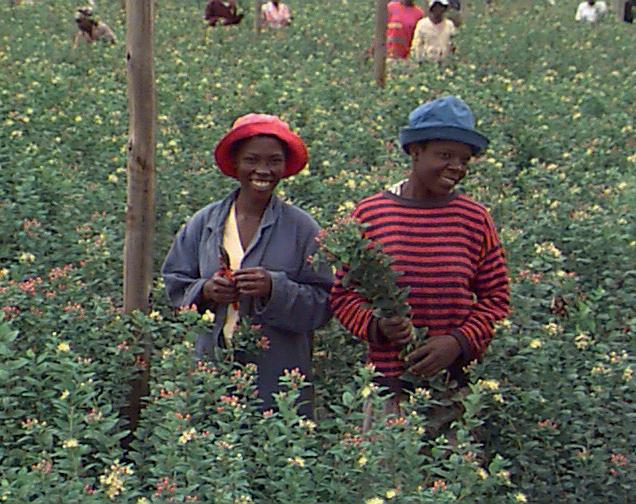
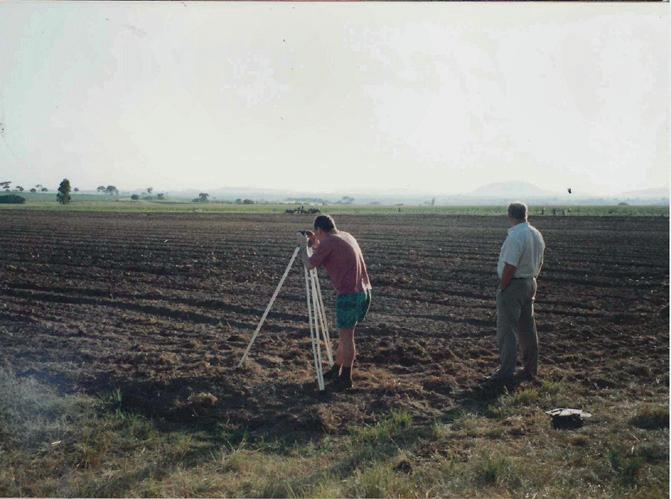
By the 1990s, their son Rob Koning joins the company and eventually takes over Marginpar BV. He primarily focuses on the Dutch market and, like his parents, prefers to swim against the current. Rob develops a vision that sets Marginpar apart from the rest of the market, making it unique in its own way. Rob: “I am most proud of the fact that we have always charted our own course. As pioneers in the market, we have chosen the path of collaboration right from the beginning. Collaboration with breeders, production partners and the market. And it is the combination of knowledge and strengths that makes us strong. Another name that emerges in the 1990s is Arjan van Roessel. He starts as an intern at Frascati Farm in Zimbabwe but soon follows in the pioneering footsteps of Bate and Jill. He leaves Zimbabwe in 2004, where

cold winters cause irregular production, in search of new horizons and new flowers for Marginpar. That perfect location must meet two requirements: the ability to cultivate flowers that meet high-quality standards and allow for year-round production. Over the years, Arjan plays a big role in helping to set up farms in Ethiopia, Kenya, Zimbabwe, and Tanzania. His deep affinity with the beauty of flowers, cultivated over many years as a product developer, has led him to his current position as the co-owner of three partner farms in Tanzania and two in Zimbabwe.
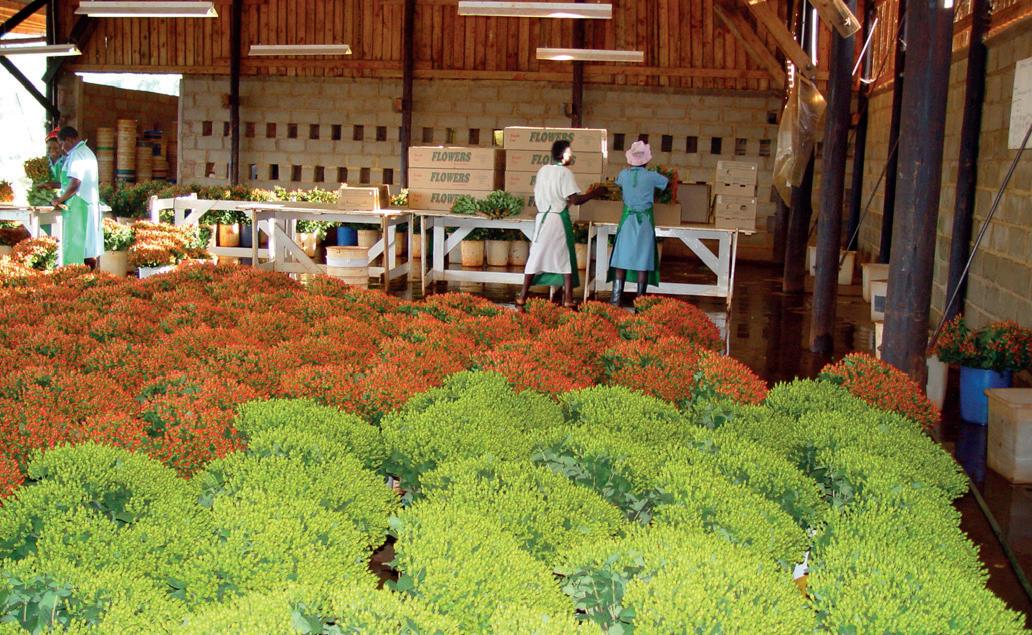
The early 2000s prove to be a fruitful period for new beginnings. In 2001, Bate encounters a “young man in a smart suit” at the trade fair in The Netherlands. This young man turns out to be Richard -Kiki- Fernandes (our current co-CEO), who is seeking a partner for flower cultivation. Fernandes comes from Kenya, known as the land of roses, which raises the question of why he wouldn’t simply join the trend and cultivate those. Fernandes explains, “I didn’t want to do what everyone else was doing; I was looking for something different, something special, something unique.” Fernandes decides to collaborate in the category that Marginpar is already familiar with - ’summer flowers’. The first Kariki farm, ‘Countrywide Connections’, now known as ‘Bondet’, is established in Nanyuki. At the time, there was no water, no buildings, no electricity - nothing. So, they got busy, constructed a reservoir, put in an irrigation system, built a processing shed, and cultivated the land with Eryngium and Hypericum.
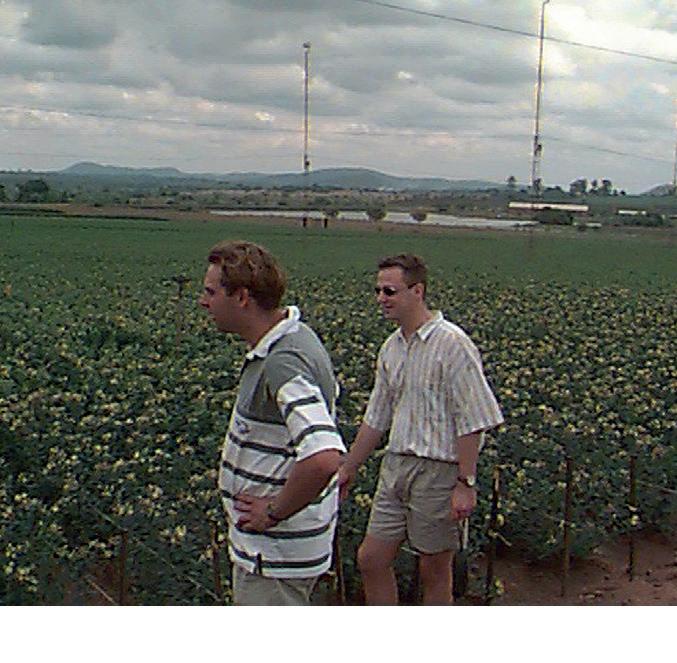 Arjan van Roessel & Rob Koning
Arjan van Roessel & Rob Koning
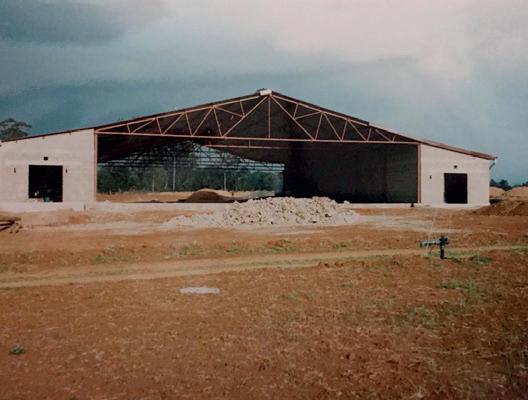



The start of the new century in 2000 heralds unwelcome change in Zimbabwe. Land acquisitions and farm invasions mark the end of the flower adventure. The majority of the 25 partner growers are soon forced to leave for other places with only a few die-hard individuals choosing to stay, despite major difficulties and setbacks. Jill and Bate, who were residing in Zimbabwe full-time, manage to endure for another five years, but in 2005 they depart for Tanzania, where suitable land was found on the foothills of Mount Kilimanjaro… More about this later.

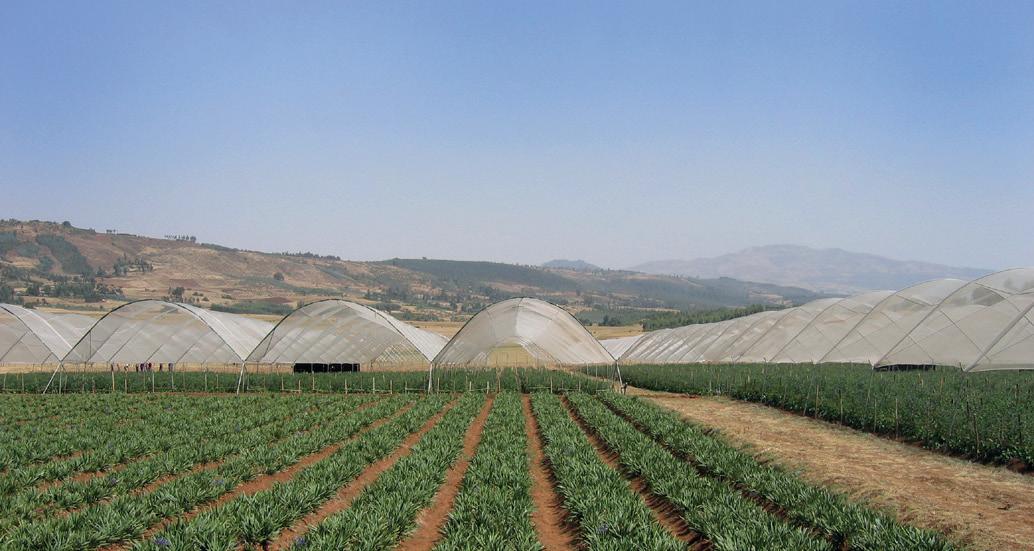
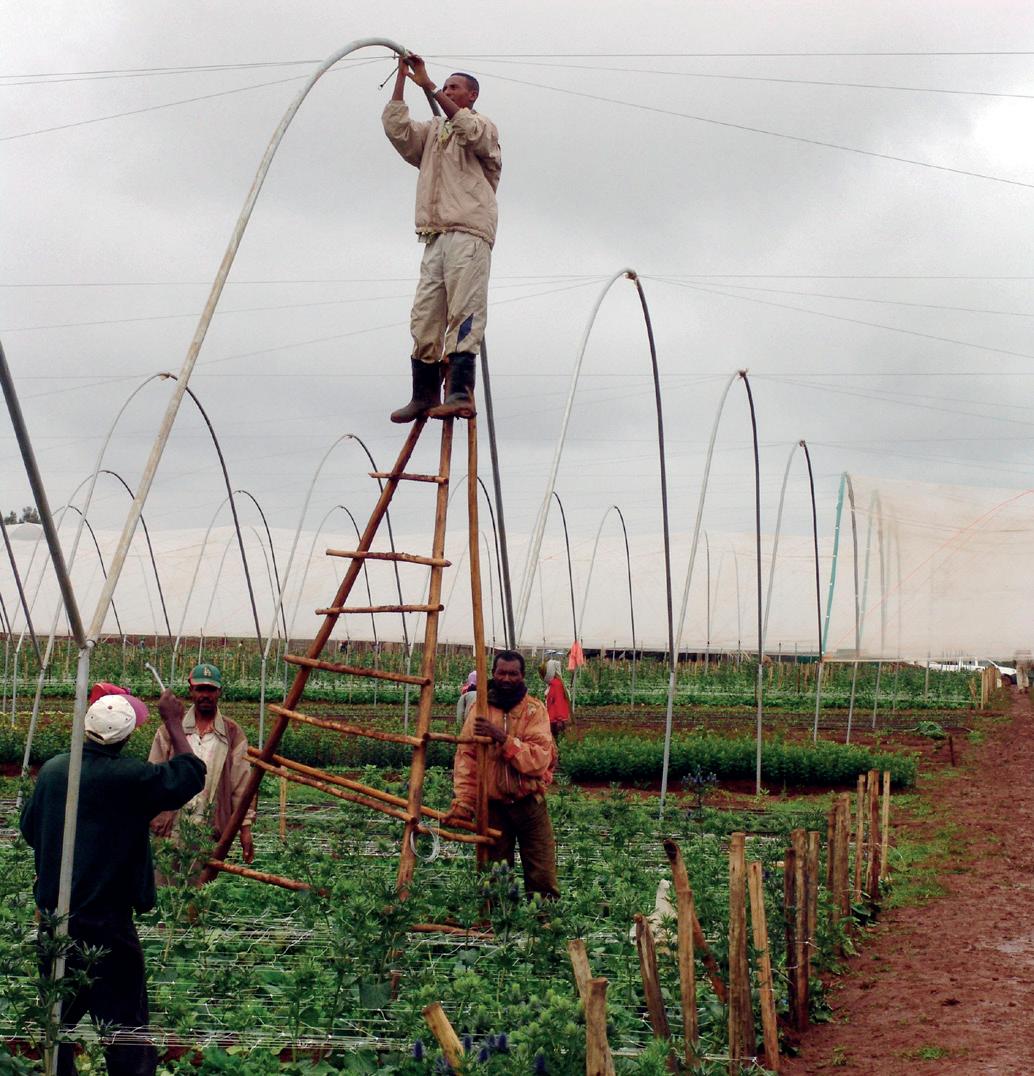
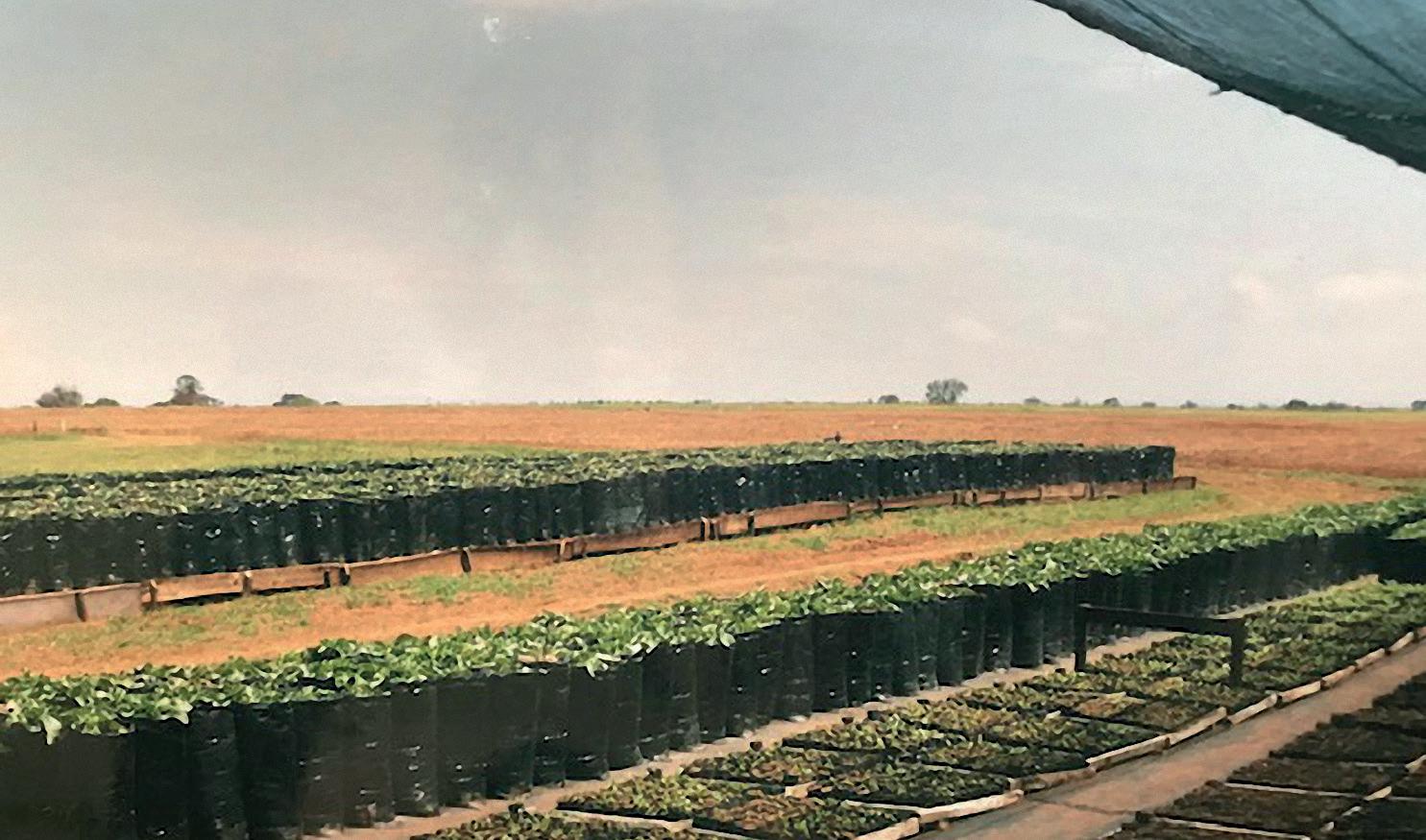
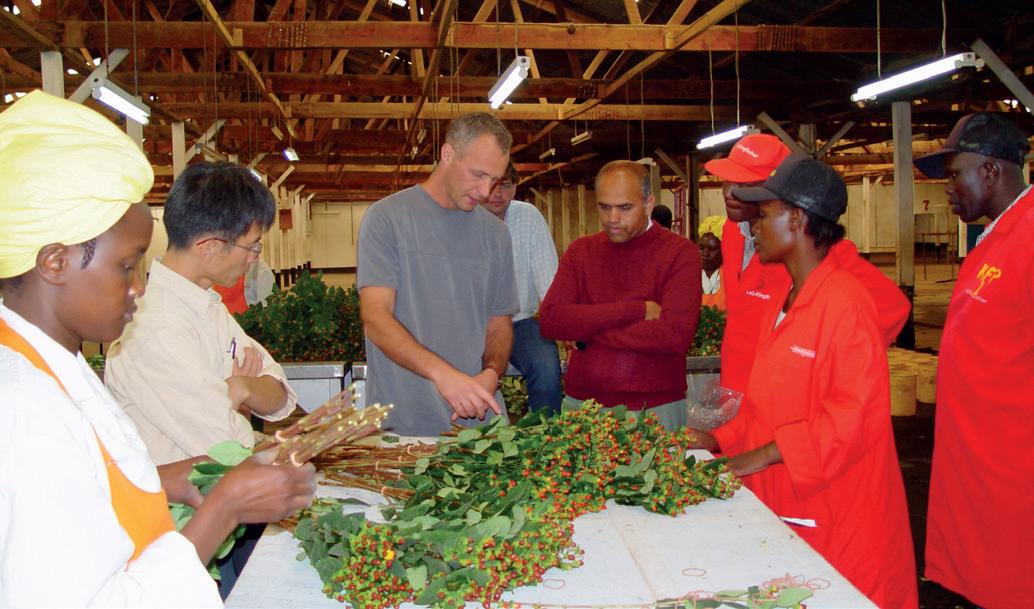
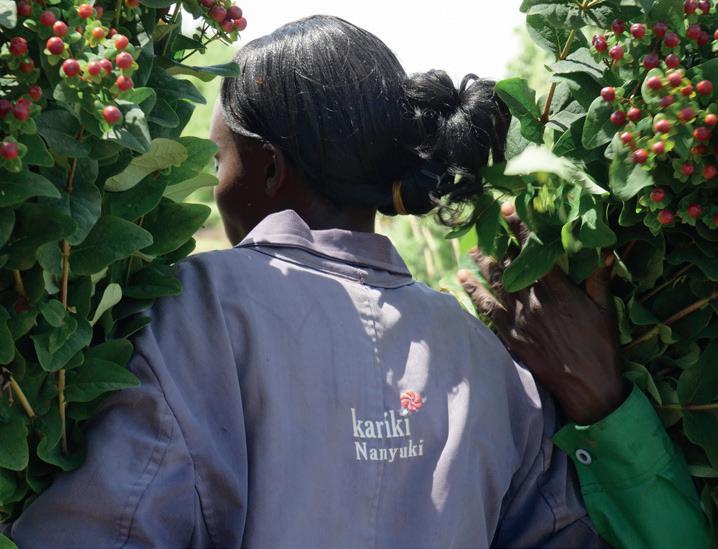
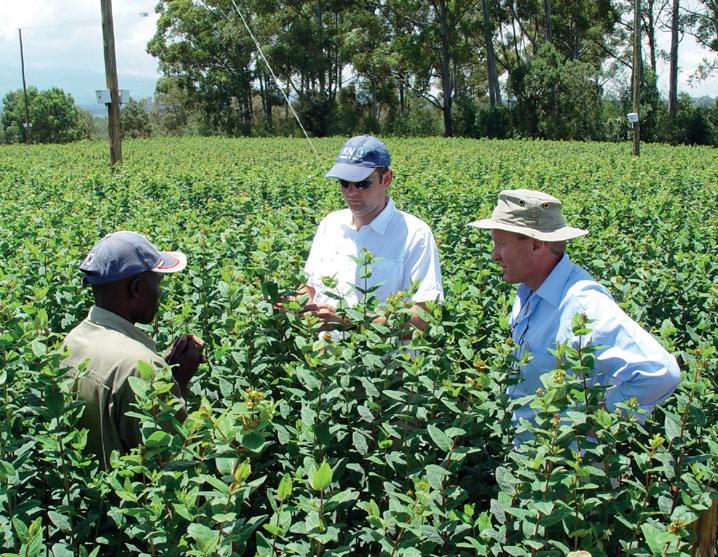
Kiki’s brother Andrew joins the Kenyan team and hard work pays off. The Bondet farm becomes a tremendous success, leading to the construction of three additional farms in Kenya under the Kariki name in the following years. Meanwhile, the development team remains active. A plot of land in Ethiopia is acquired where again everything, absolutely everything, needs to be built from scratch. Construction begins, and in 2008, the first production starts. Marginpar becomes one of the pioneer flower growers to engage in cultivation in Ethiopia. The climate and geographical location of the country prove to be an ideal combination with Kenya. When production needs to halt in one country due to climate conditions, the other country takes over. Later on, this new location proved to be well suited for alternative and new species of flowers, some of which thrive better in Ethiopia compared to Kenya.
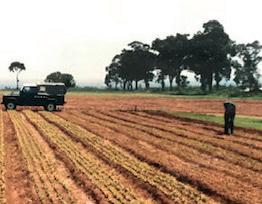
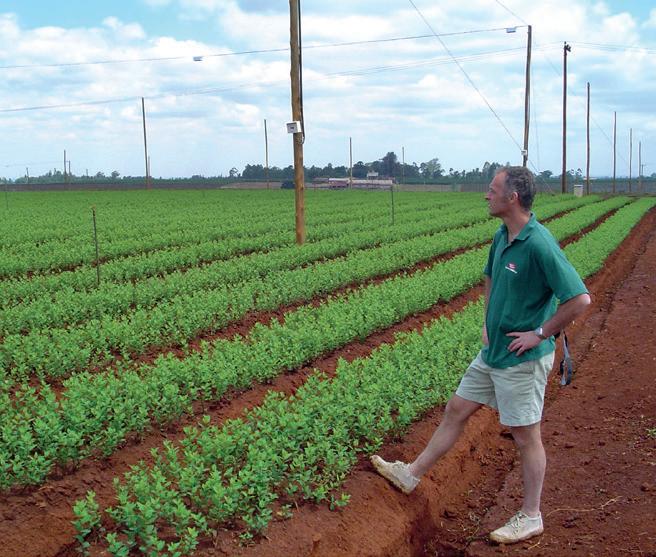



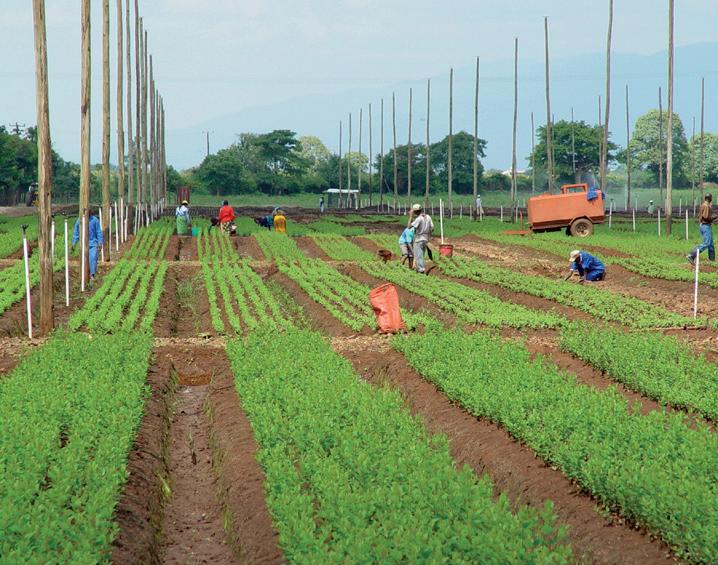
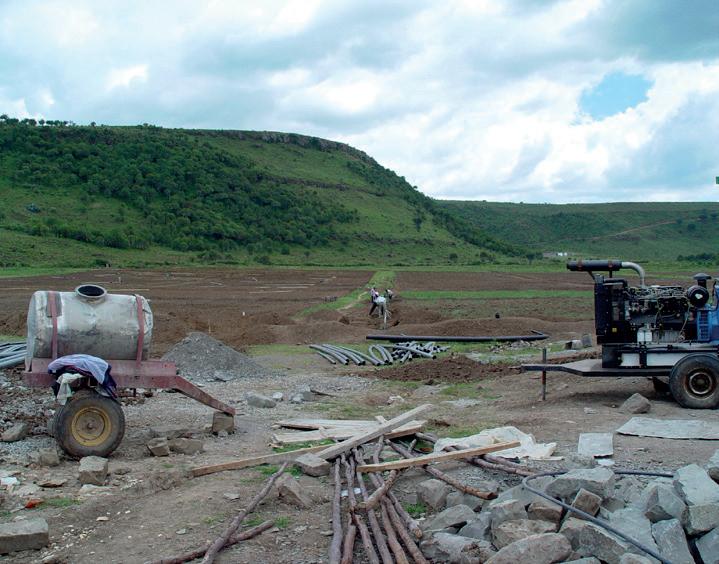
Simultaneously with Kenya and Ethiopia, Tanzania joins the journey. The fields of the discovered location offer breathtaking views of Mount Kilimanjaro, capturing the team’s hearts. Jill and Bate trade Zimbabwe for Tanzania settling on Bondeni Farm (operating company Michiru Ltd). Hectares of an old coffee plantation are replaced with Hypericum on Machame, but the climate and the berry bushes prove to be incompatible. The team finds itself in a predicament: land cleared, farm built - was it all in vain?
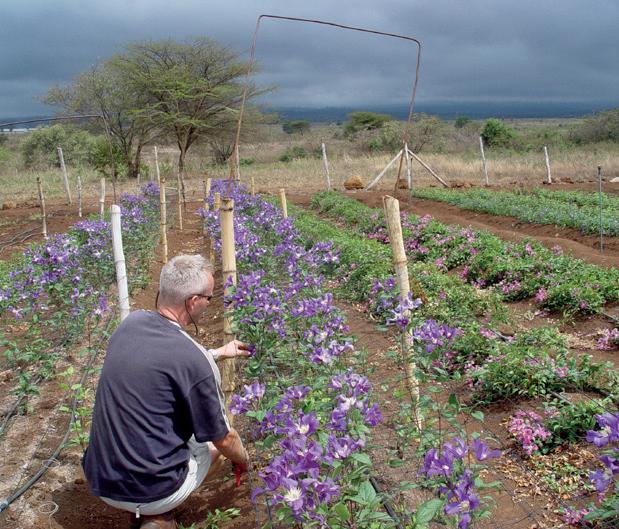
Fate smiles upon them: they receive a phone call from Plantipp, a company that supports breeders, informing them about a nursery in the Netherlands with Clematis that could potentially be suitable as a cut flower. Bate and Rob travel to the Clematis nursery of Van Zoest. There, they spot four flower beds containing a very special Clematis. Van Zoest becomes a partner of the Marginpar model and a lengthy process of testing in Tanzania ensues. And in 2006, success is achieved: Clematis Amazing® Blue Pirouette goes to auction. The breeding and development never stop, and by now, there are 14 cut Clematis varieties, with Marginpar cultivating 99.9% of all cut Clematis for the EU market. Tanzania also proves to have a suitable climate for various grass species, quickly filling up the first farm. Following suit, two additional farms are established, and the fertile soil is planted with various crops, including Gloriosa, Jatropha, and Polianthes. These new ventures mark a further expansion and diversification of Marginpar’s product portfolio.
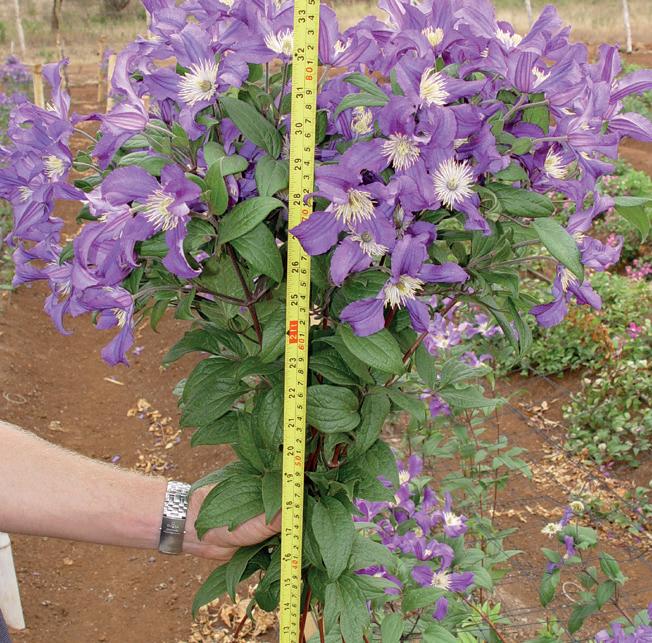
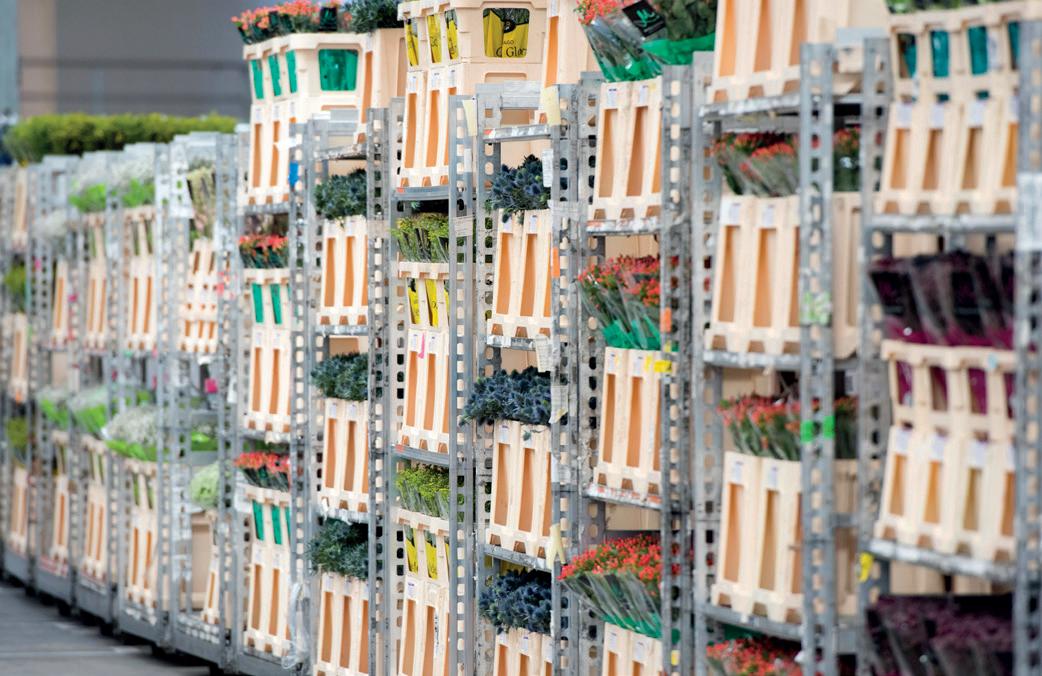
Marginpar’s product range continues to expand significantly during the period 2010 to 2020. From initially having four product categories, the company now offers a diverse selection of 25 different categories. The Eryngium Questar® develops into a complete series, while Astrantia covers extensive hectares. Fields are filled with Gypsophila, Craspedia, Limonium, Scabiosa, Astilbe, Asters, Phlox and many other varieties. However, it’s not just the assortment that grows; in the Netherlands, the office space expands to accommodate all disciplines under one roof: sales, marketing, product development, business development, logistics, IT, and the Dutch finance team.
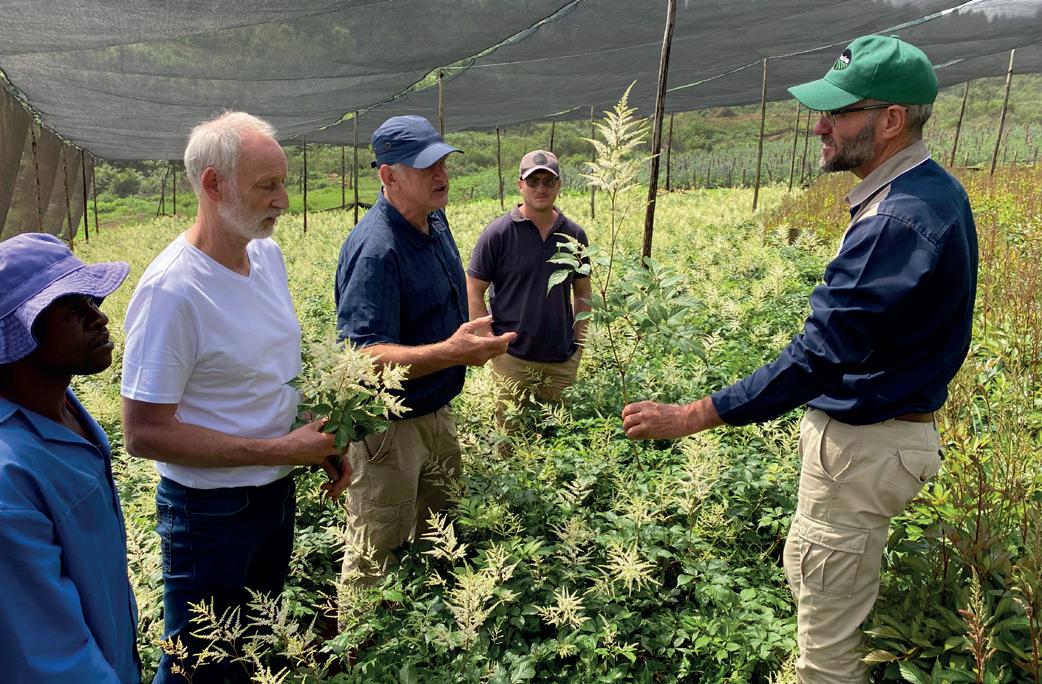
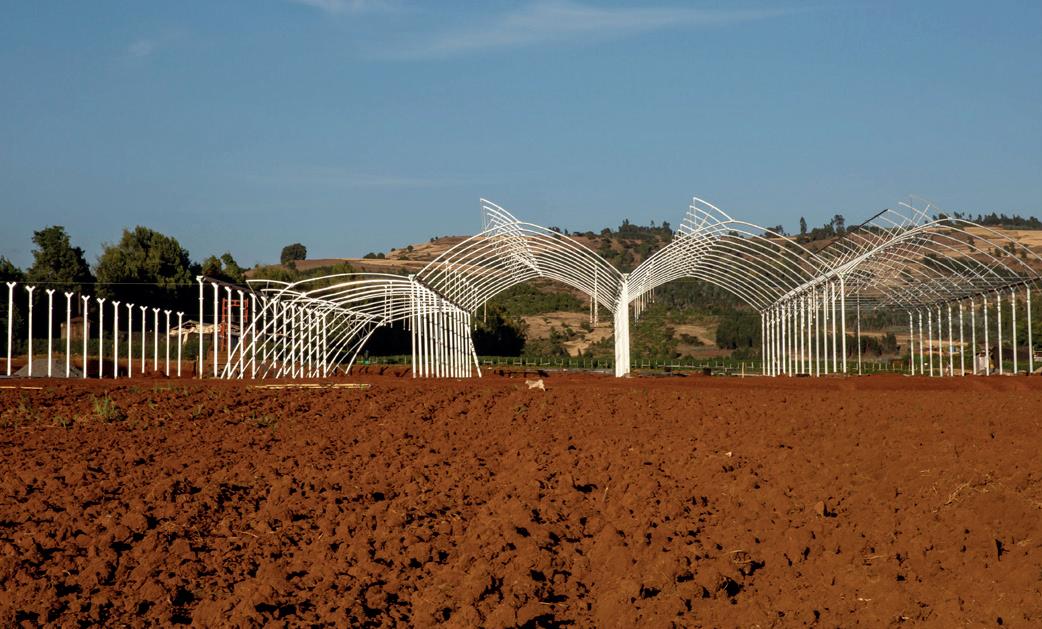
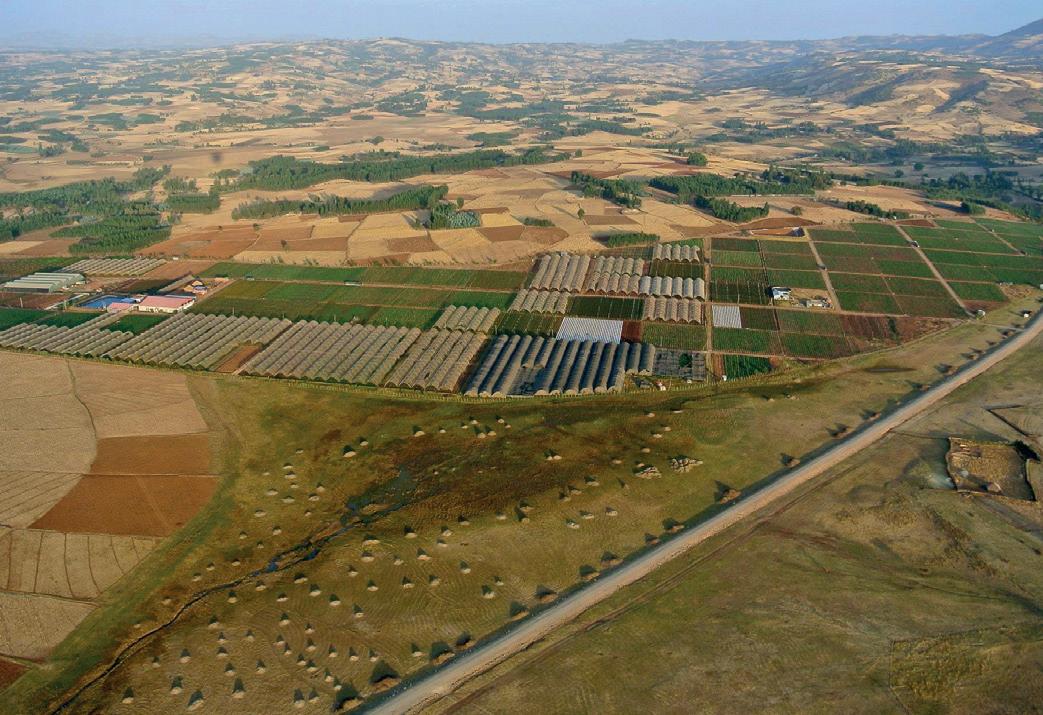
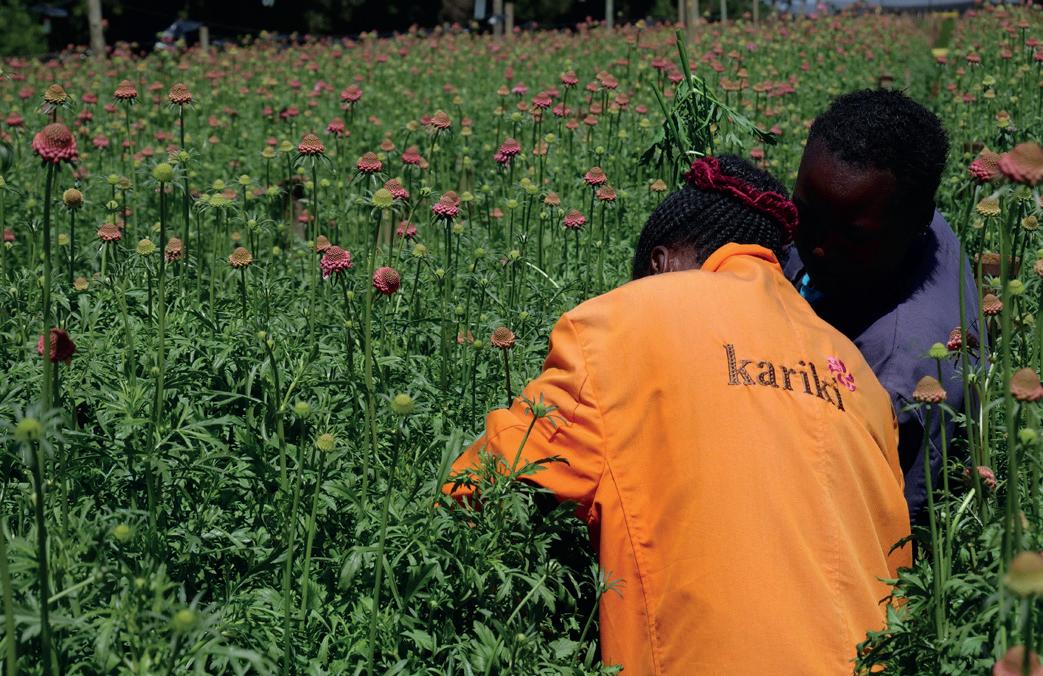
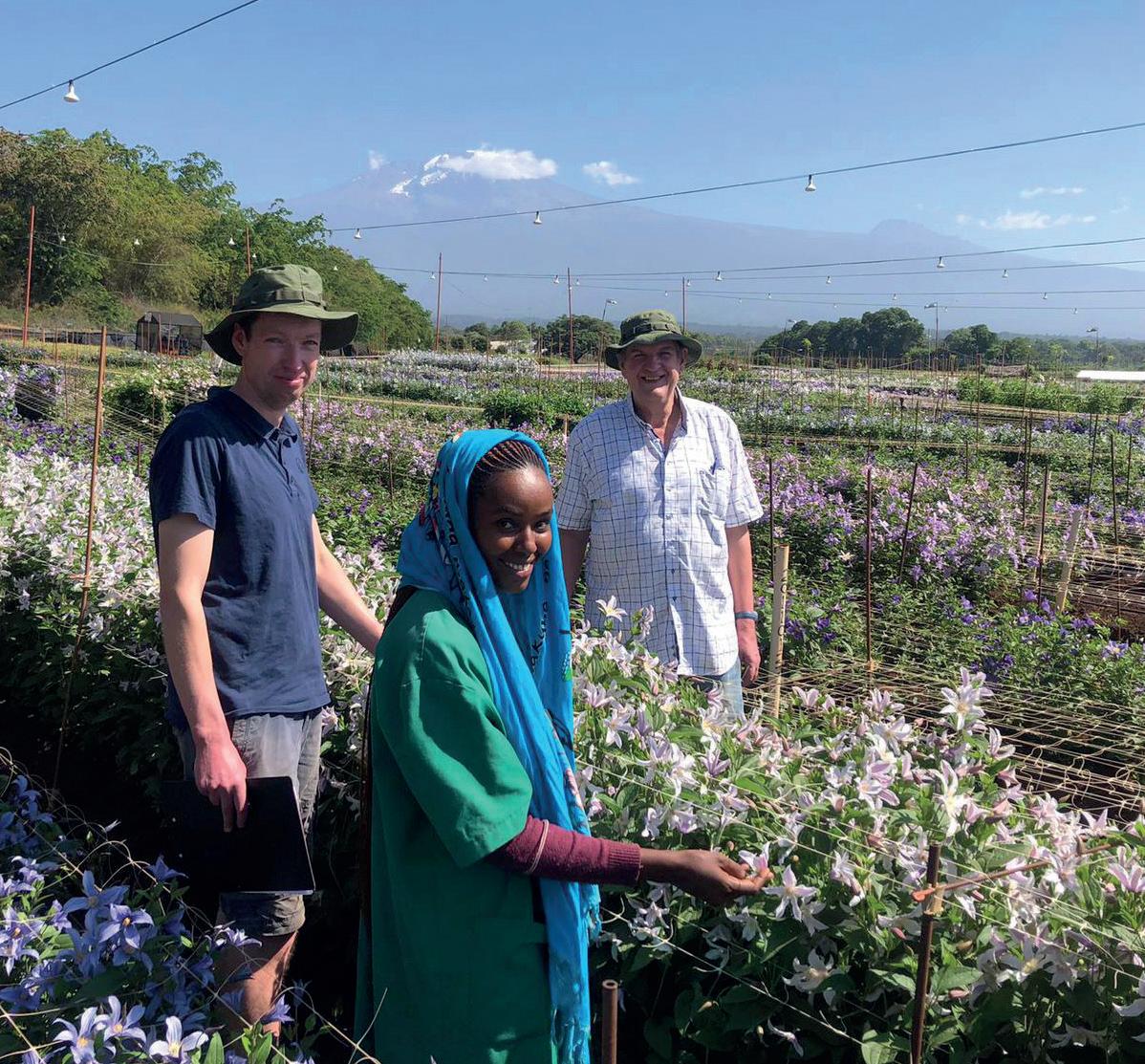 Marginpar Ethiopia areal
Scabiosa field Kenya Zimbabwe: Astilbe breeders van Veen with Rob Lindsay
Marginpar Netherlands
Building new propagation facility Ethiopia
Marginpar Ethiopia areal
Scabiosa field Kenya Zimbabwe: Astilbe breeders van Veen with Rob Lindsay
Marginpar Netherlands
Building new propagation facility Ethiopia
In this period, Kariki introduces the Kaizen way of working in Kenya. This management style called ‘Hamuka’ stems from the five key principles that feed the Marginpar culture today:
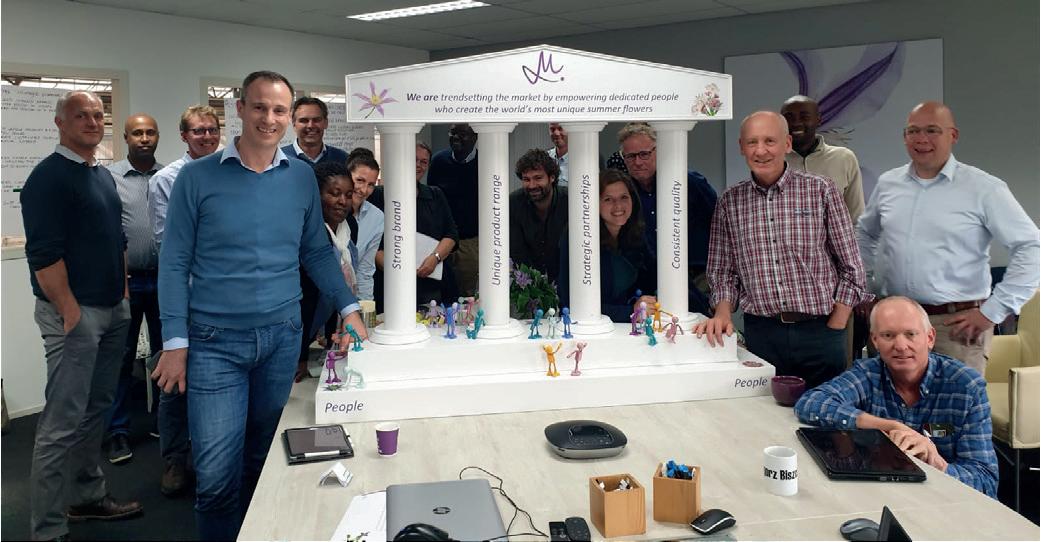
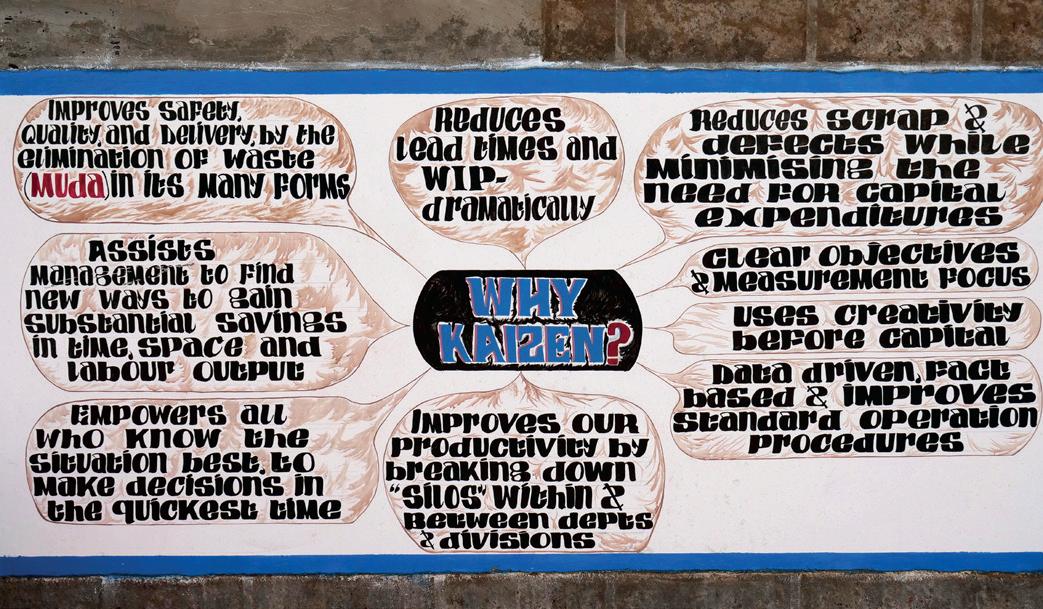
• serving and empowering each other;
• unifying ourselves into effective teams;
• showing respect, friendliness & solidarity;
• caring for the well-being of our people;
• and creating a healthier working environment to live and work in.
Unifying people into effective teams leads to continuous improvement of processes which leads to higher production yields on the same hectares, while at the same time fostering employee satisfaction and growth within the farms. Fernandes: “At the end of the day it’s your people who are going to make the business successful. We employ over 4000 people in Kenya and Ethiopia, who grow and deliver the flowers. It is important to create an environment in which our people value and show respect to each other. In this way we get the best out of everyone and in turn the company is able to deliver better results.”
All Marginpar’s farms have achieved, or are close to achieving their certifications, bringing the company closer to its goal of 100% sustainable flower production. Certifications from the Kenya Flower Council and MPS, recognised by the FSI (Floriculture Sustainability Initiative), not only represent good agricultural

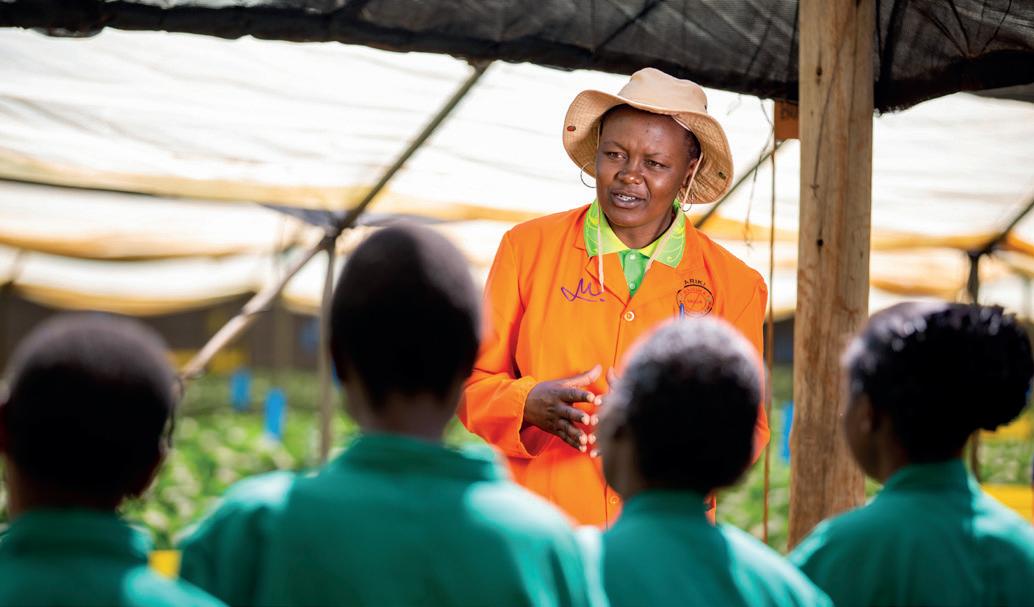
practice (GAP) but also adherence to high social and environmental standards.
In 2018, Marginpar Netherlands is merged with Marginpar Ethiopia and Kariki and Carzan in Kenya. The ten farms in Kenya and Ethiopia with the Dutch office form the core of the Marginpar Group which, with three partner farms in Tanzania and four in Zimbabwe form the wider Marginpar Group. Every production country has its own test field, allowing the team to determine the best-suited location(s) for the continuous development of the Marginpar portfolio of products.
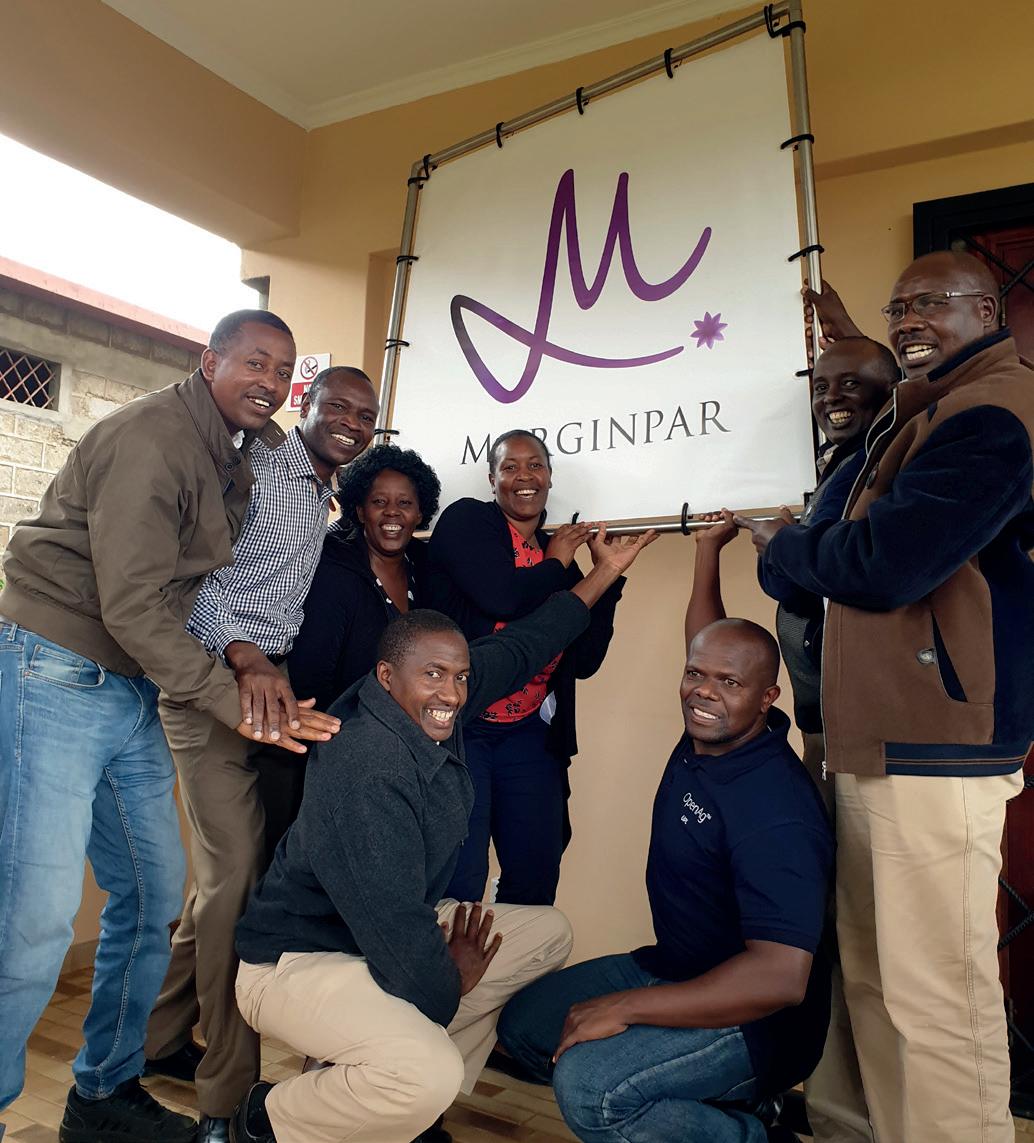
Immediately post-merger, the company starts to work on the enormity of the challenge of aligning all operations across multiple locations, cultural differences, and time zones. In the midst of this work, an unexpected turn of events occurs: COVID-19. The virus spreads rapidly, but Marginpar’s farms are fortunately able to remain open. In Aalsmeer, the main focus shifts to crisis management. The initial weeks are daunting as the auction is forced to discard trolley loads of flowers, countries close their borders, and minimal staff is present at the office.
However, flower demand rebounds very quickly proving that flowers are recession and turmoil proof. The thought of “if you can’t be with your loved one, send them a bouquet of flowers” resonates with many. Another issue arises: air cargo transportation. A significant portion of Marginpar’s flowers typically travel on passenger planes, which are now either grounded or operating at reduced frequencies. Cargo planes are primarily reserved for medical equipment: there is a loss in capacity, resulting in exorbitant airfreight costs. Fernandes: “We went through a phase where we had a strong demand in Europe, but we couldn’t get flowers out of Africa. At some point, flowers were flown in the cabin of passenger planes, occupying otherwise empty seats, overhead compartments and even in the lavatories!”
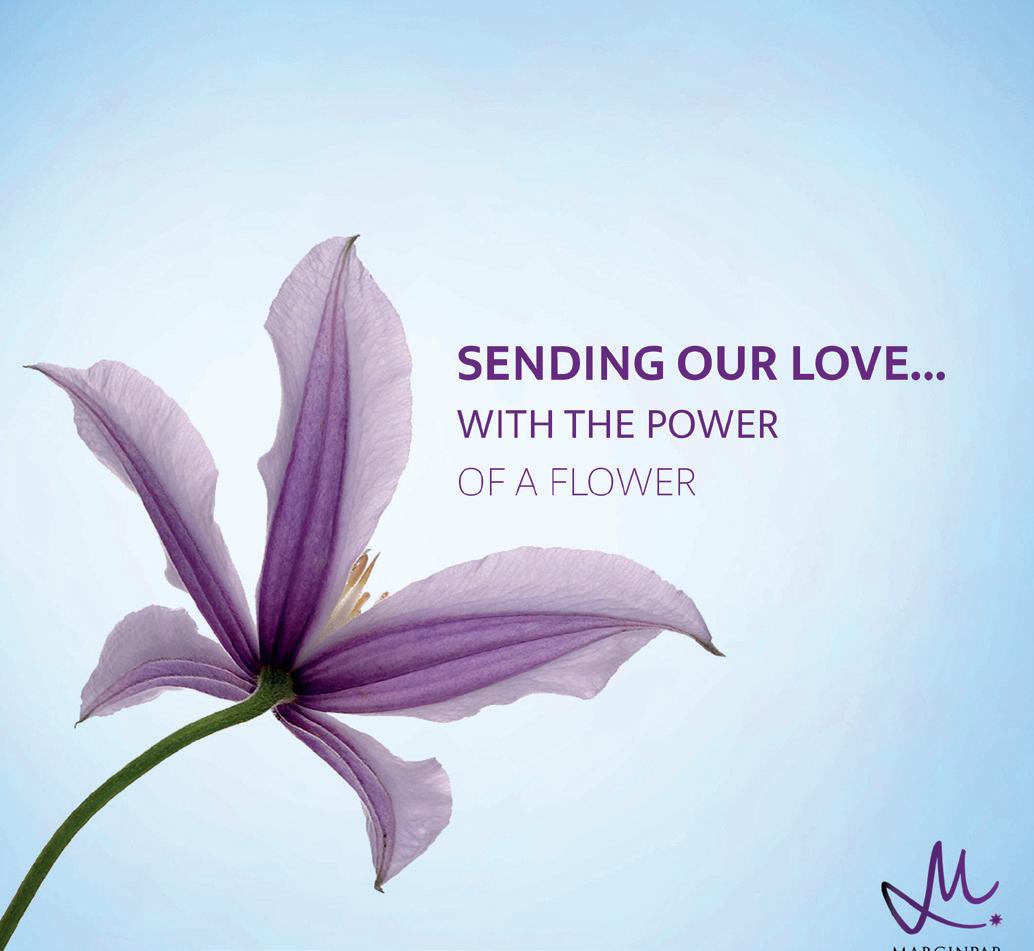

“Creating a strong brand with our unique product range, through people empowerment, strategic partnerships and delivering consistent quality.”
– Marginpar strategy

Ultimately, the pandemic came to an end. Light emerged on the horizon. Both figuratively and literally in Aalsmeer: just across the road. By the end of 2022, the new headquarters was officially opened on the Sierteeltstraat. The building offers numerous advantages, being directly connected to the flower auction (allowing for faster transportation and closer proximity to the market place), featuring state-of-the-art testing facilities, and being future-ready. The roof

adorned with solar panels makes the building carbon-neutral. Sustainability efforts extend to the farms as well. One of the recently completed projects is the Wetlands. This filtration system, resembling beautiful, interconnected ponds, naturally filters wastewater for reuse. Rainwater is collected in our new basins to mitigate dry periods, which are becoming increasingly frequent. We are also testing sea freight. Through the Marginpar Foundation, we support community projects, providing schools with classrooms, solar energy, water wells, improved road infrastructure, among other initiatives.
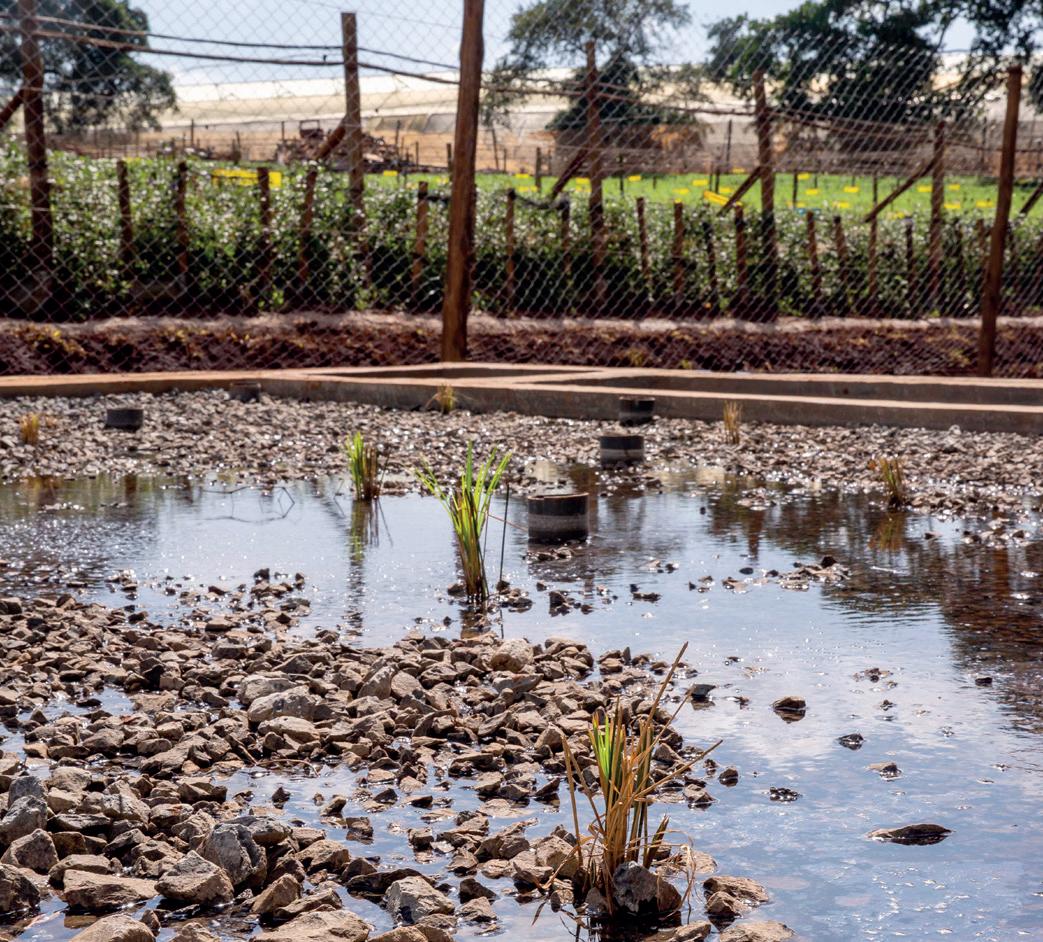

Marginpar continues to prioritise innovation, with the R&D team operating at full throttle. While other floriculture companies narrow their offerings, we continue to expand. 300 million flower stems from over 35 different product categories pass through our sorting line each year. Rob Koning: “We offer a range of highquality, unique flowers, and that’s what we focus on. We have always targeted the florist segment. Because that’s the segment where we can differentiate ourselves, as they are eager for innovation. Florists want to stand out.”
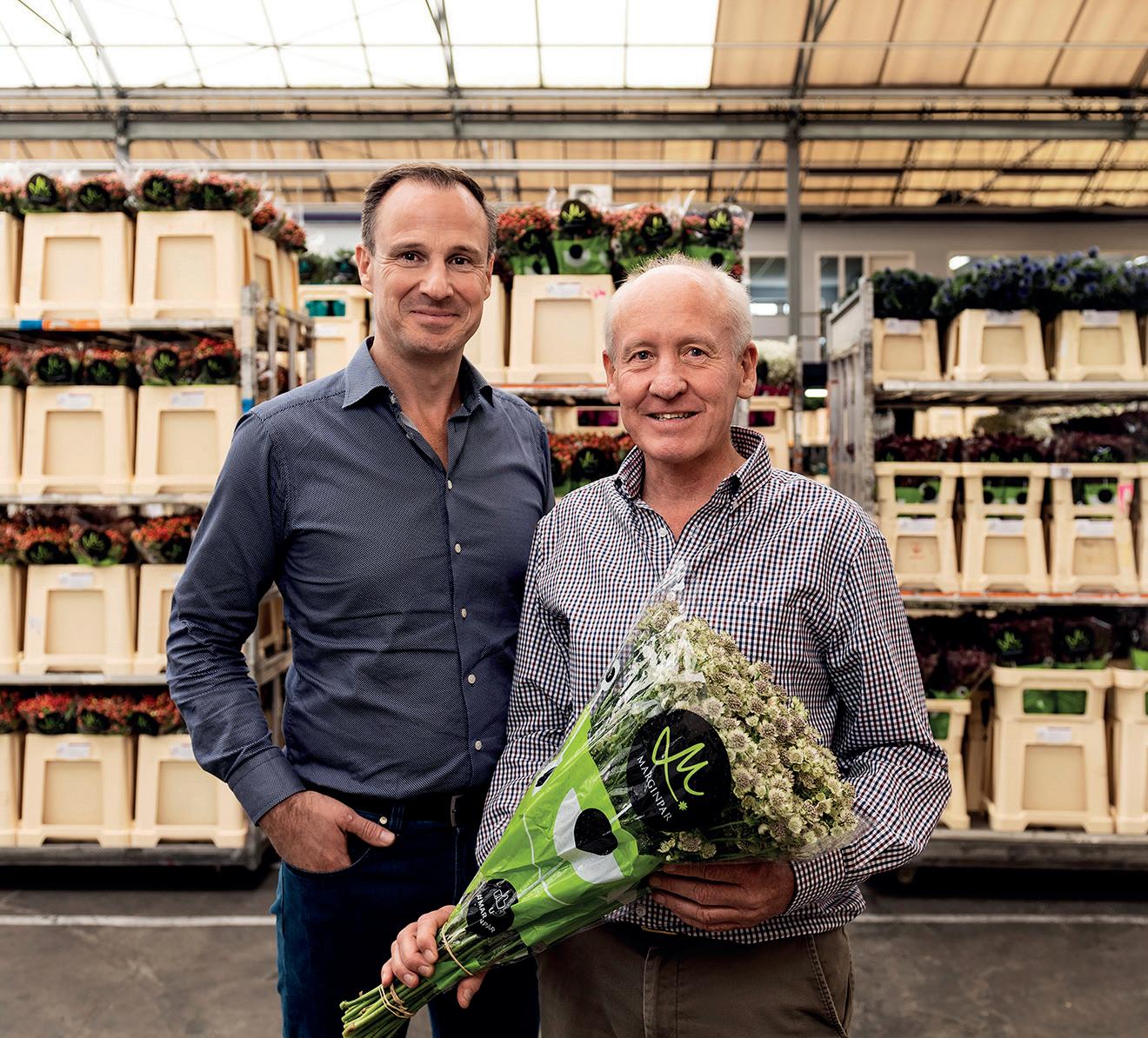
The world around us is changing rapidly. The floral industry is expanding and becoming more professional, with companies consolidating and growing larger. As a result, the overall offering becomes diluted, with more volume but less product choice. We, on the other hand, choose a different path.
We strive to continuously surprise florists with exceptional, interesting, and ideally new varieties. Flowers that truly make a difference. The Marginpar Group and our partner farms put an immense amount of energy and love into achieving this, with a team of over 5000 dedicated individuals.
Kenyan partner farm Livewire merges with the adjacent Hamwe farm in 2021, bringing the complete production in Kenya under our own control. In 2022, a new partner farm joins us, or should we say, an “old” partner farm? One of the first farms in Zimbabwe from the ’80s, Claremont farm, becomes available once again. Its high altitude guarantees stunning thistles. You will be hearing more about that.
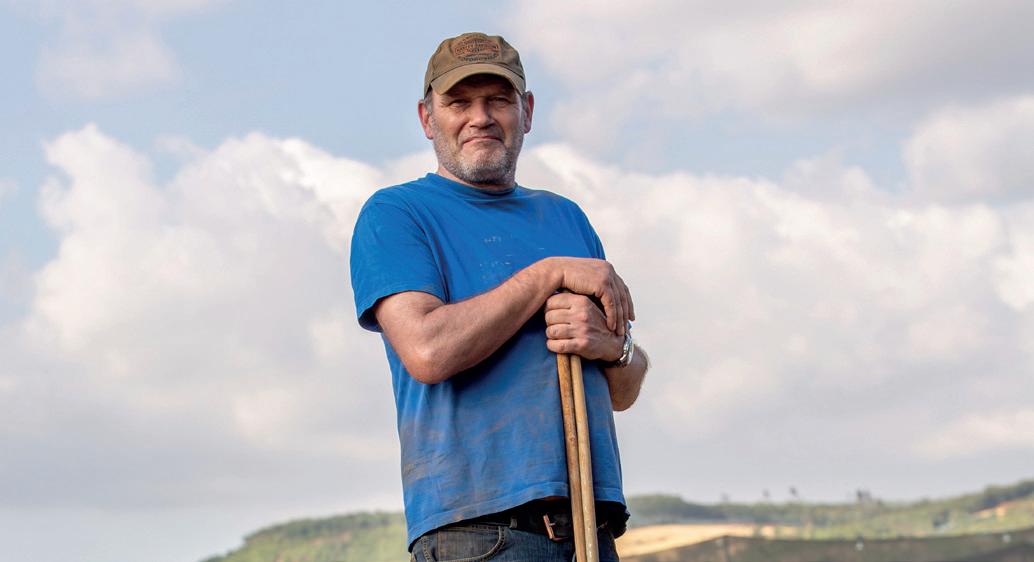
“We are trendsetting the market by empowering dedicated people who create the world’s most unique summer flowers.”
– Marginpar visionRob Koning and Richard Fernandes Photography P-I Studio, Goffe Struiksma Eryngium in Zimbabwe: breeder Peter Sinneger
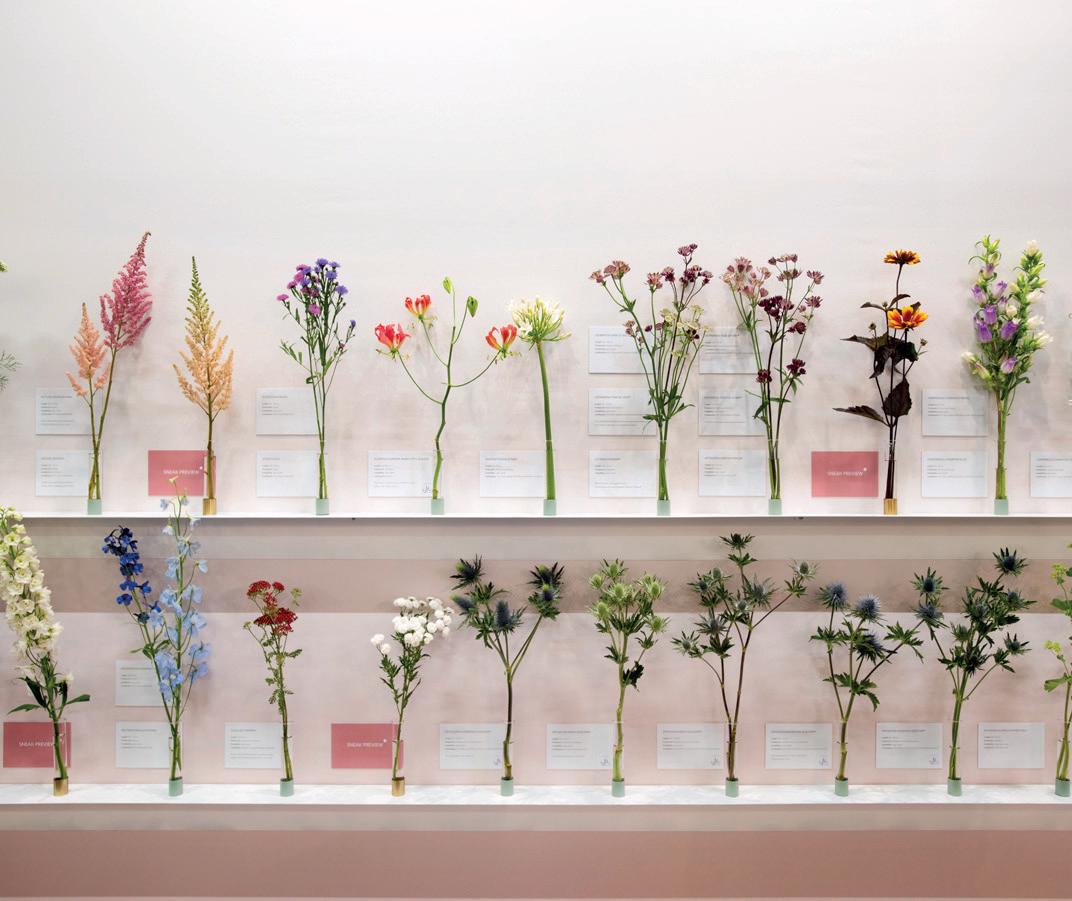
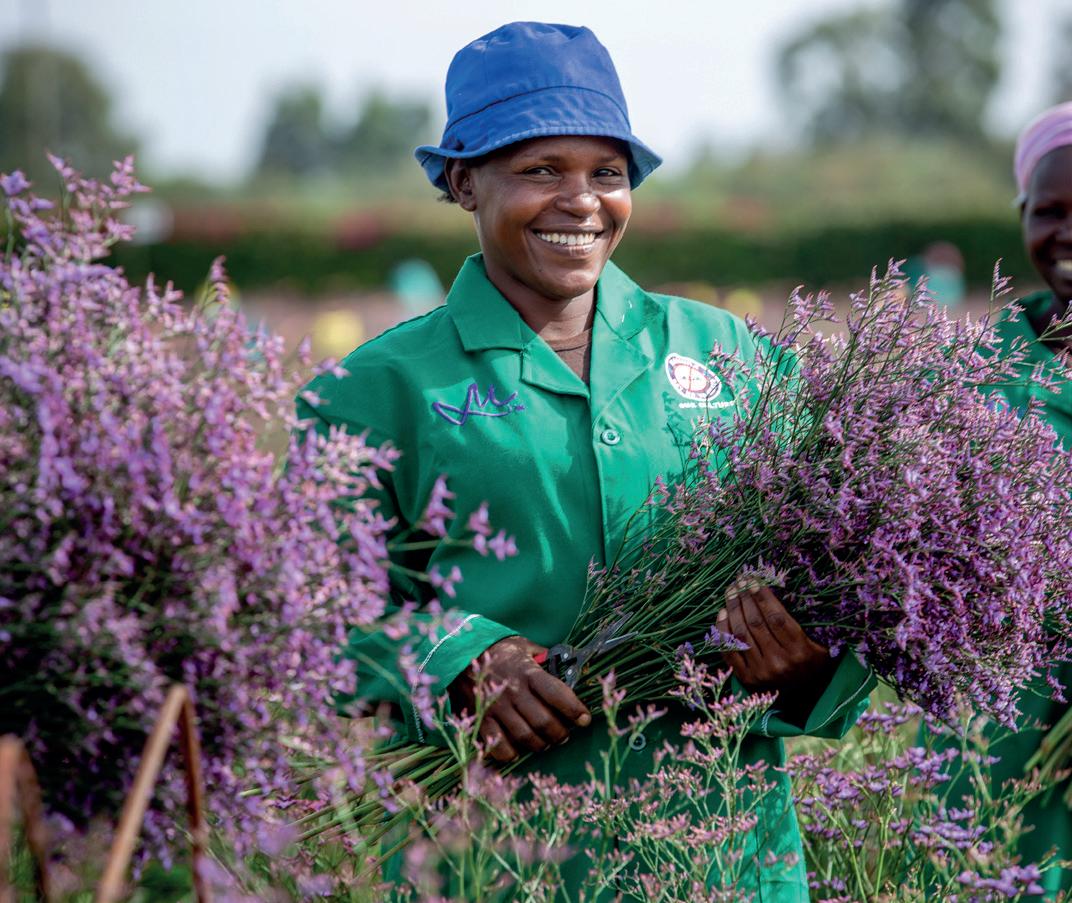
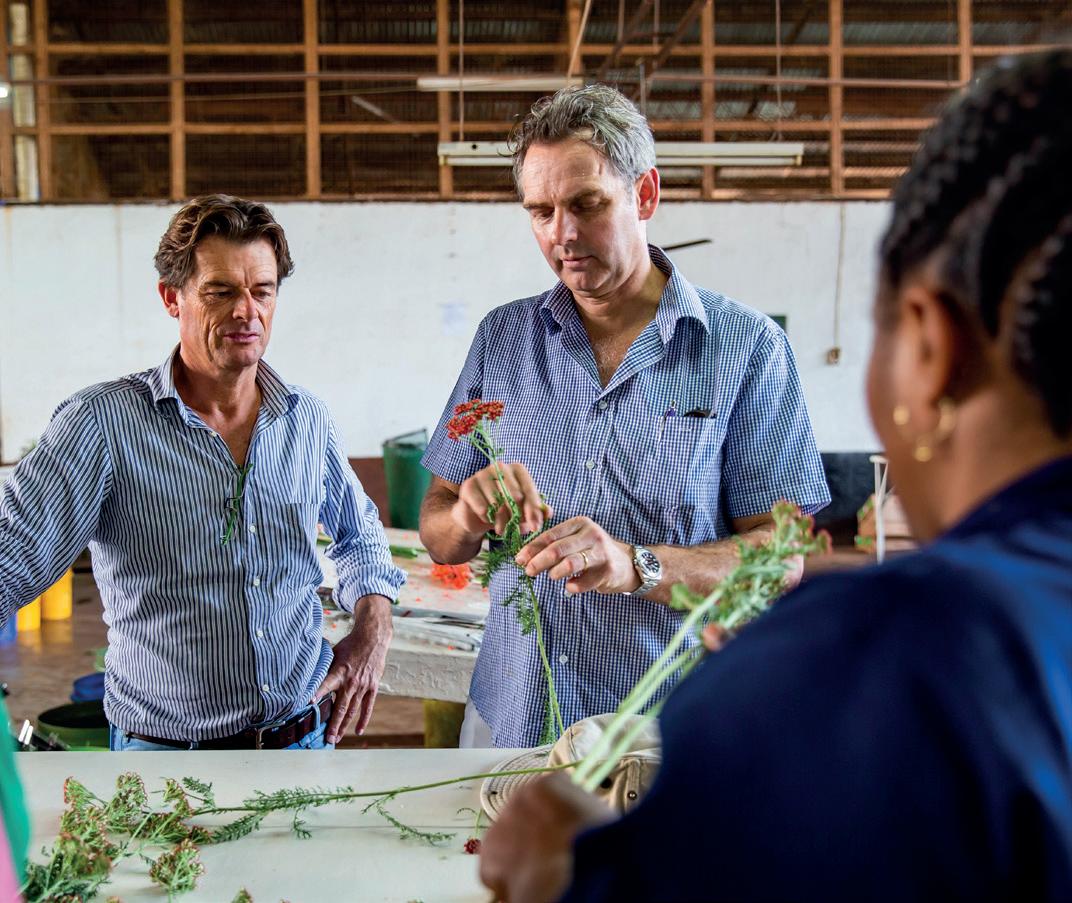

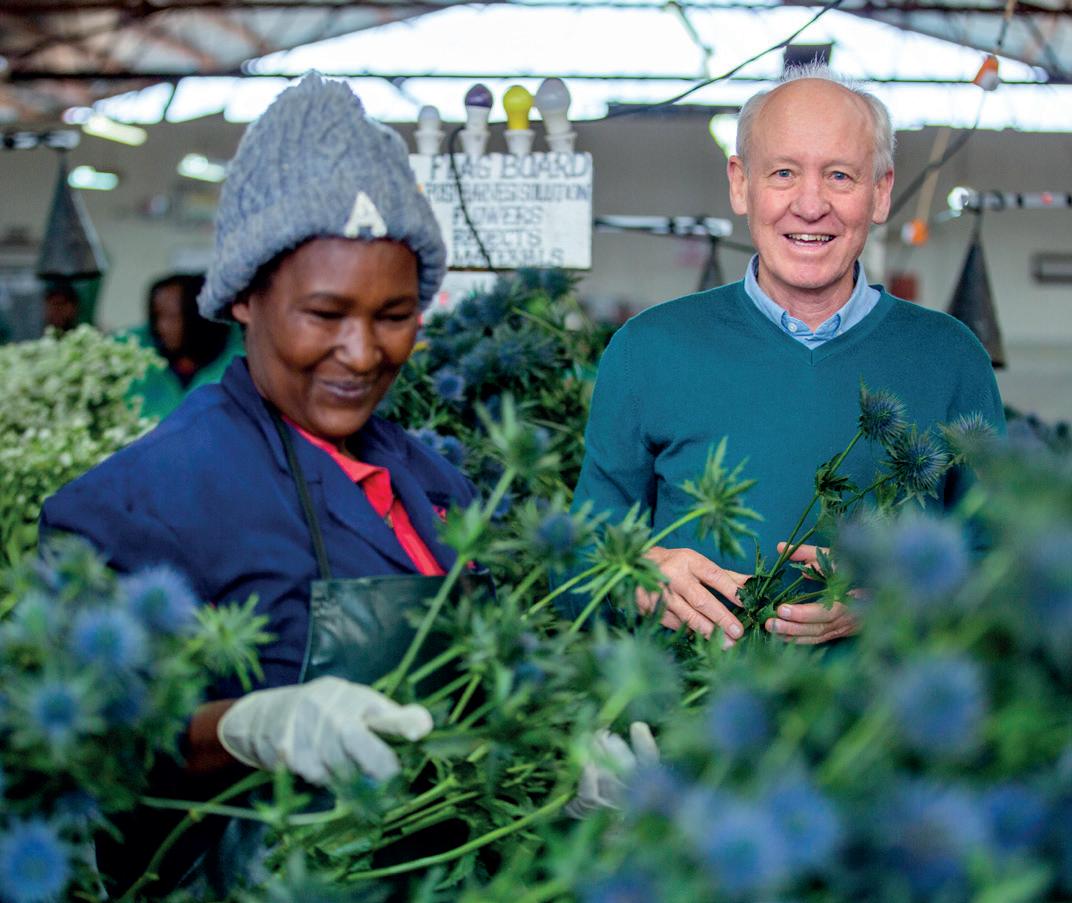
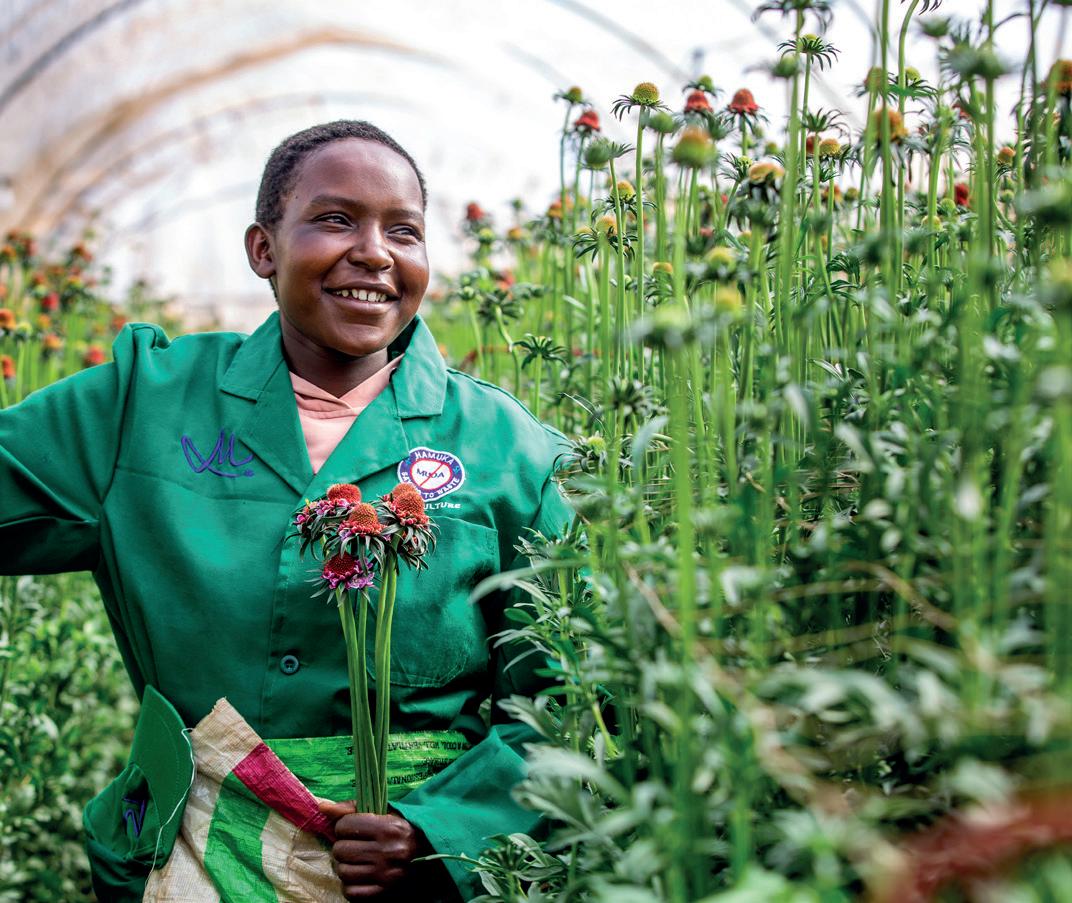
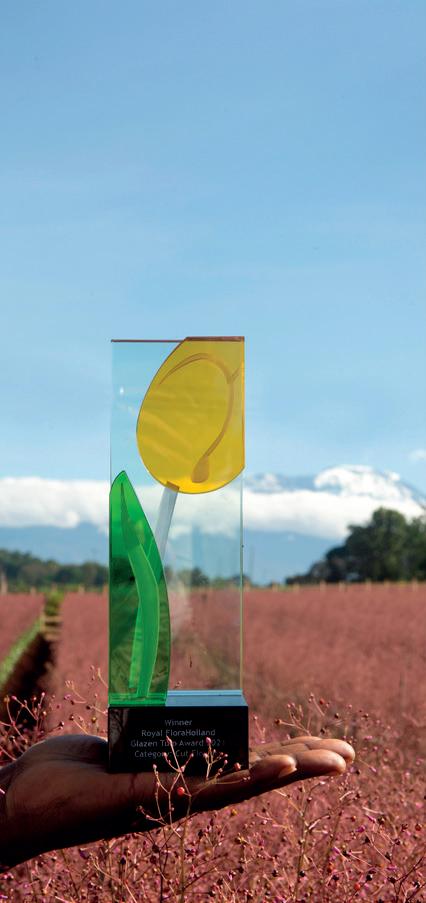
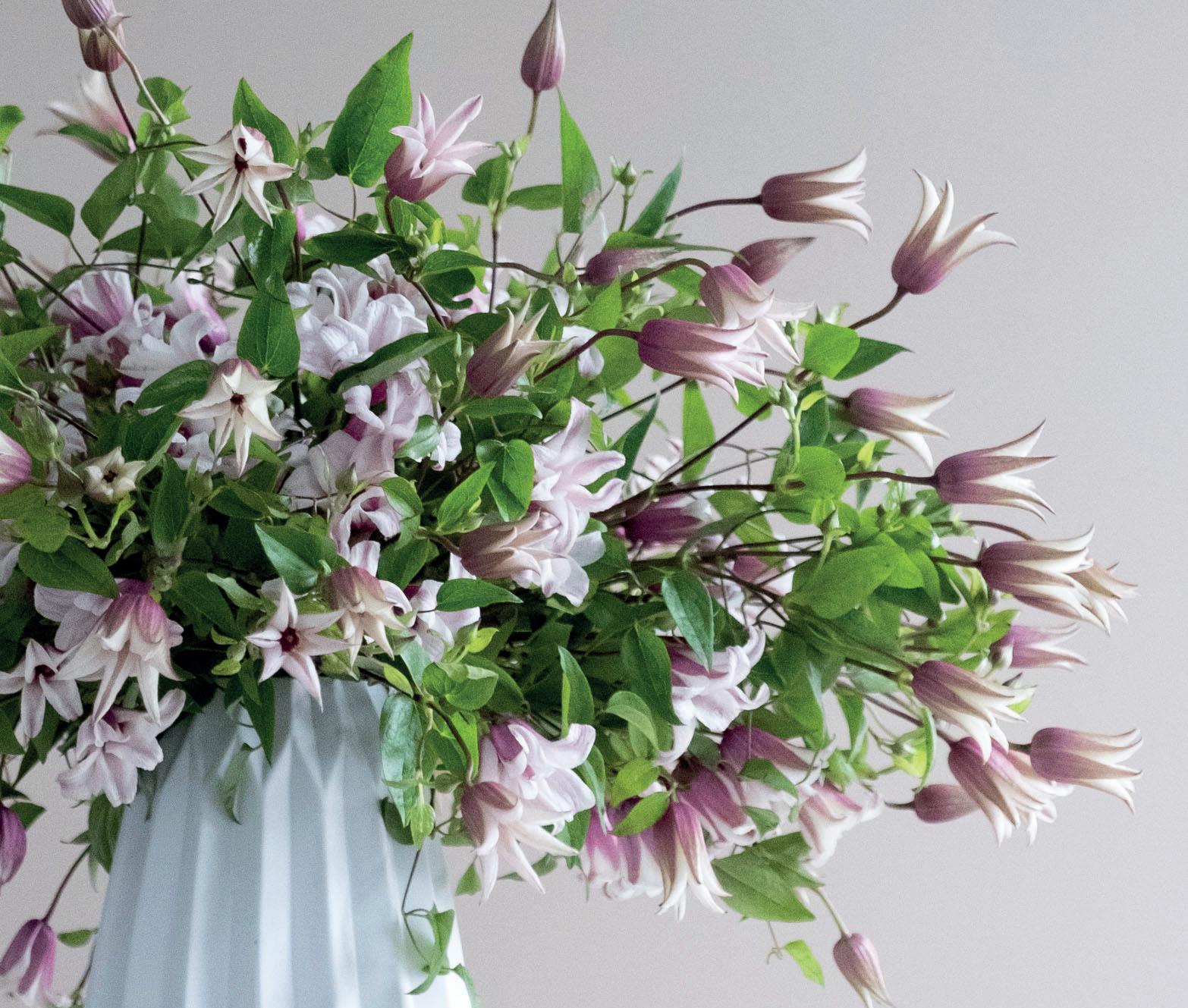

The video series that gives you an insider’s look at the wonderful world of flowers! In this brand new series, we delve into a wide range of fascinating topics that will expand your knowledge and deepen your appreciation for Marginpar’s flowers.
Join our floral investigators, Colin and Emanuel, as they answer your burning questions and uncover the secrets of our farms. With the help of their colleagues, they explore everything from new varieties of flowers to the science of cultivation.
So whether you’re a seasoned flower enthusiast or just starting out on your floral journey, “Ask Marginpar” has something for everyone. Get ready to learn, be inspired, and experience the beauty of flowers like never before. Watch it here:

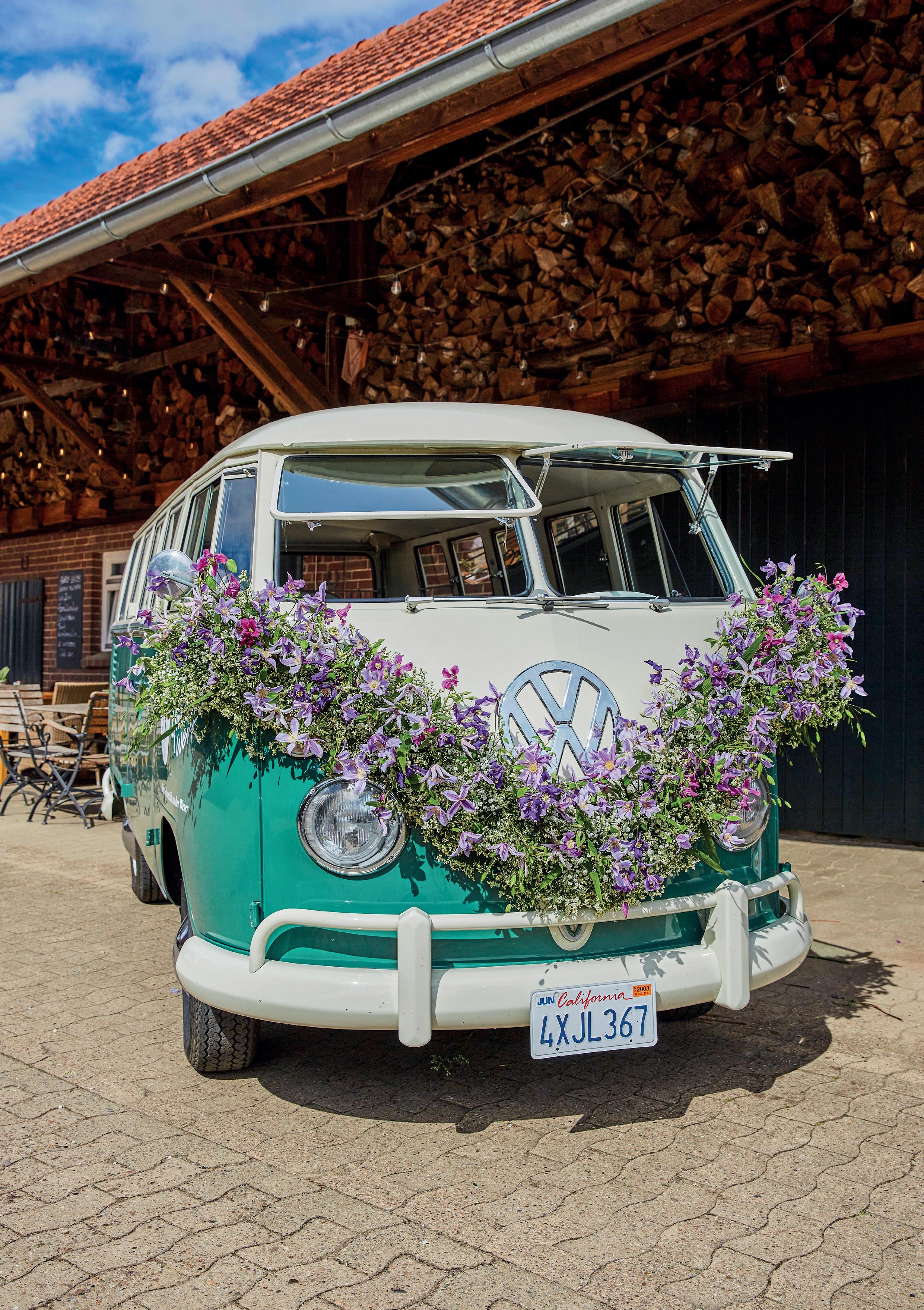
For many people, it is a dream come true: marrying the love of their life. Besides picking out the rings, people are carefully choosing the perfect dress, an amazing venue, and beautiful flowers. And for the latter, not only we, but also BLOOM’ S got excited. They chose our Clematis Amazing® varieties: the perfect wedding guests.
Not only is the wedding venue decorated, the decoration for the wedding car should also not be missing. Adorned with a beautiful flower wreath made of Chasmanthium
Latifolium Mantis, Gypsophila Xlence®, Limonium China
White, Clematis Amazing® Kyiv, London, Rome and
Star River, this Volkswagen bus is ready to ride into the future with the bridal couple. The flowers are inserted into foam dipped in water and tied together with nylon threads like a garland and attached to the bus. The journey to happiness can begin!
For many, saying “I do” is the highlight of the day. Surrounded by the most beautiful flowers and the most colourful decorations, love can grow and be sealed with a kiss, a ring, and loving words. A true delight for the eyes, four of our Clematis Amazing® varieties (Kyiv, Miami, Blue Pirouette, and Rome) form the flower arch of love. Delphinium Blue Donna and Guardian Lavender also stand out cheerfully as a positive note. Gypsophila Xlence® symbolises love and couldn’t be left out. In addition to these stunning flowers, beautiful Daucus Carota Dara, Limonium Princess Diamond, Miscanthus White Cloud, and Scabiosa Focal Scoop™ Bicolor Pink were also given a worthy place. During the ceremony, the bridal couple could sit on chairs decorated with Clematis Amazing® Oslo, Star River, Vienna, Daucus Carota Dara, Delphinium Guardian Lavender, and Miscanthus White Cloud wrapped like a bouquet in a ribbon of white mesh.
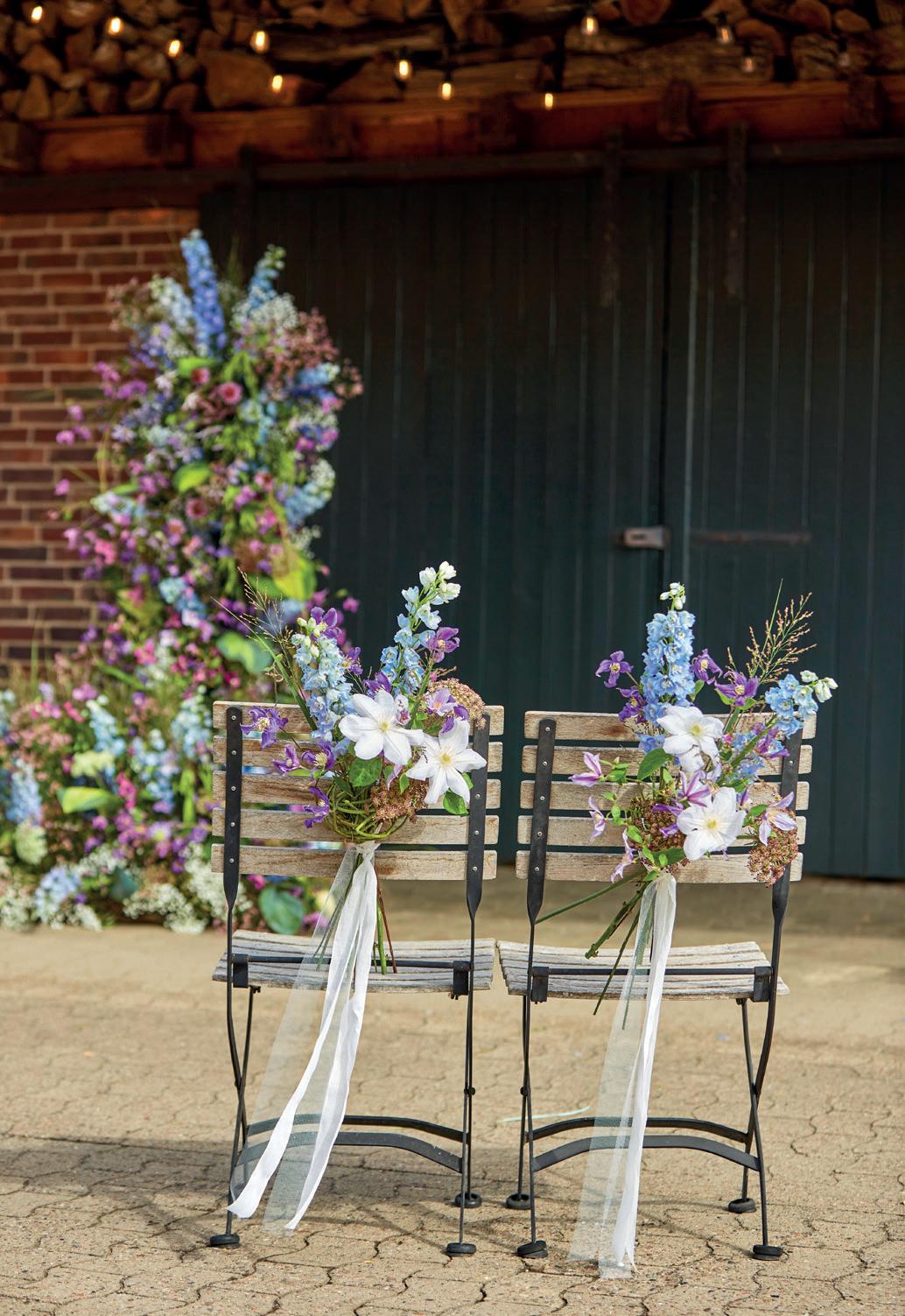
Until the ‘90s, it was the groom’s job to choose the bridal bouquet, a tradition dating back to Victorian times. In this way, the groom could surprise the bride with a beautiful bouquet. Nowadays, most couples assemble a bouquet together, with the help of a florist. This bouquet consisting of only Clematis Amazing® Miami shows that a mono bouquet wrapped in white romantic ribbon is also a fantastic choice and that sometimes less is more.
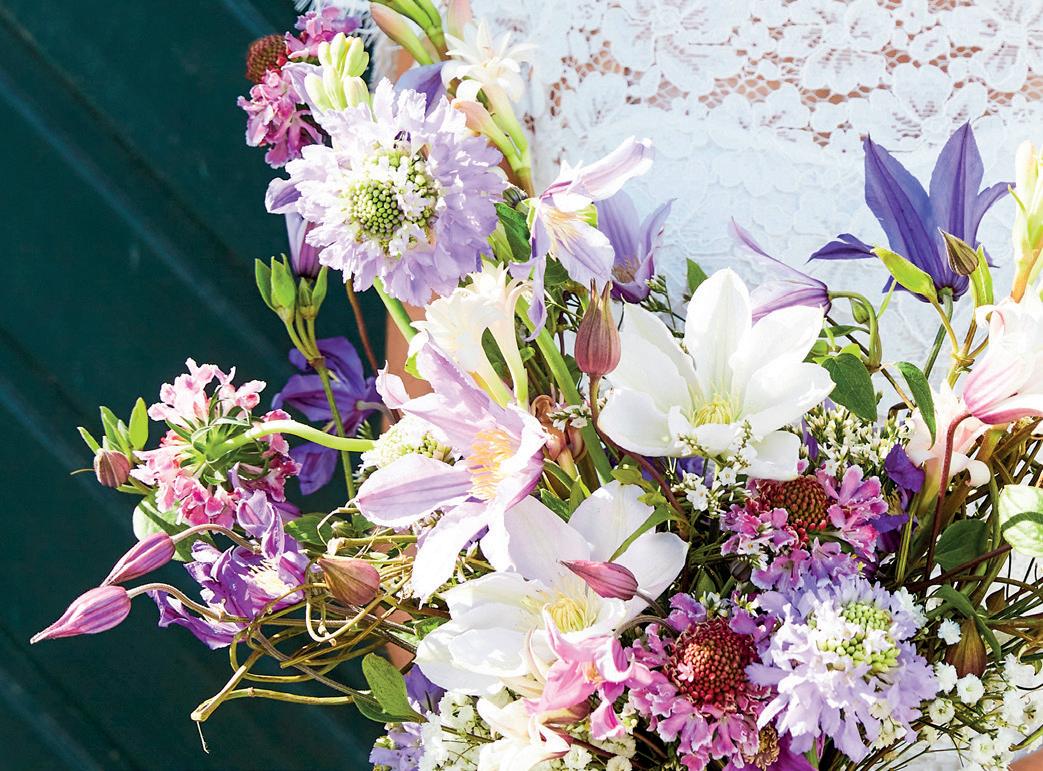
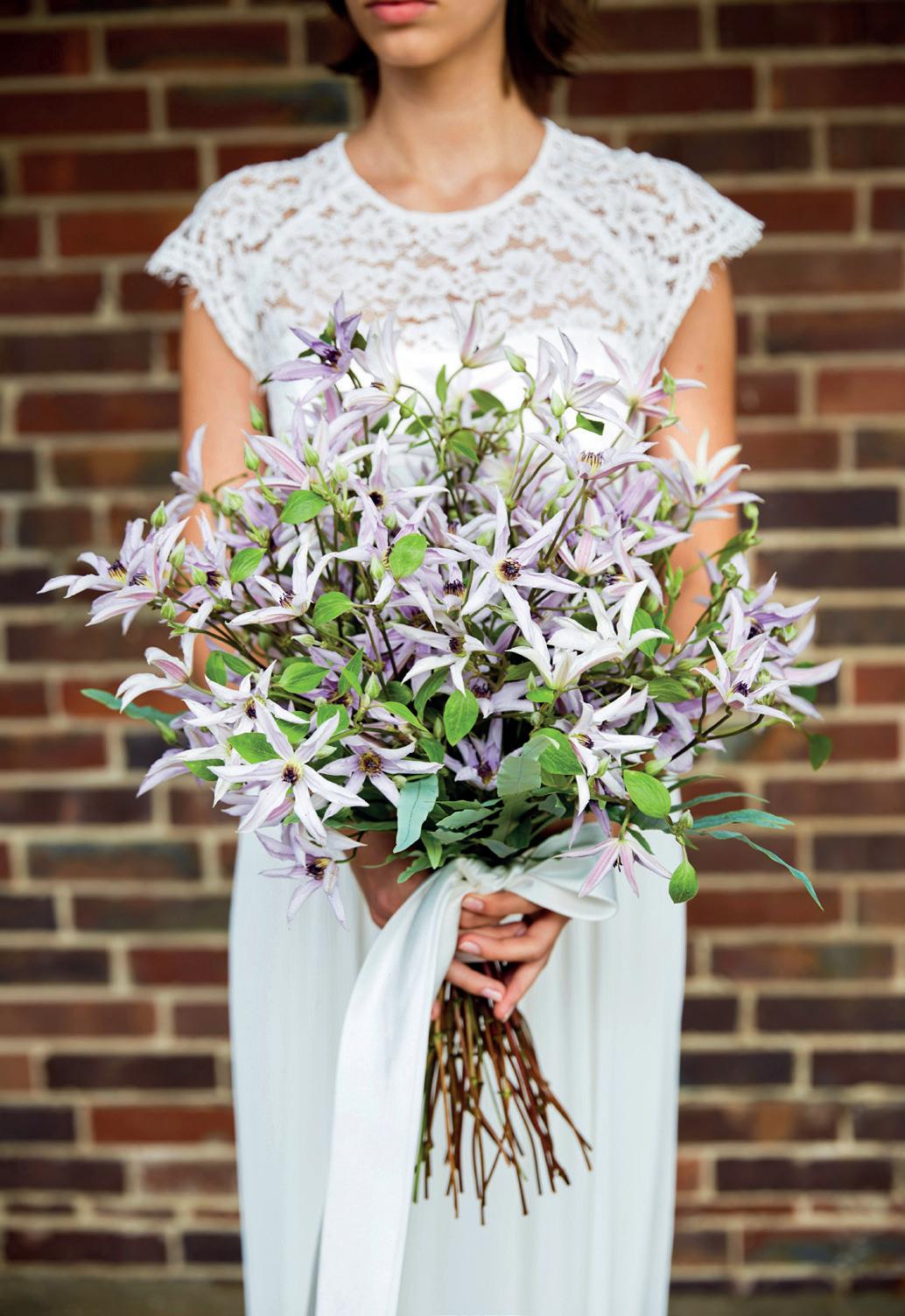
The tossing of the bridal bouquet originated in 14th century England. This tradition arose because it was customary to give a piece of your wedding dress to your wedding guests. To preserve the bridal gown, it was decided to throw the bridal bouquet into the air: whoever catches it will be the next bride! For this large joyful bouquet, a U-shape was chosen so that the bride does not disappear behind the bouquet. The Clematis Amazing® London, Oslo, Sevilla, Star River, Rome and Vienna take centre stage in this bridal bouquet. They are accompanied by the Limonium China White, Polianthes Pink Sapphire, and Scabiosa Focal Scoop™ Bicolor Pink. All the flowers are tied together with white ribbon, making it an easy-to-carry bouquet. Ready for the catch of your life!
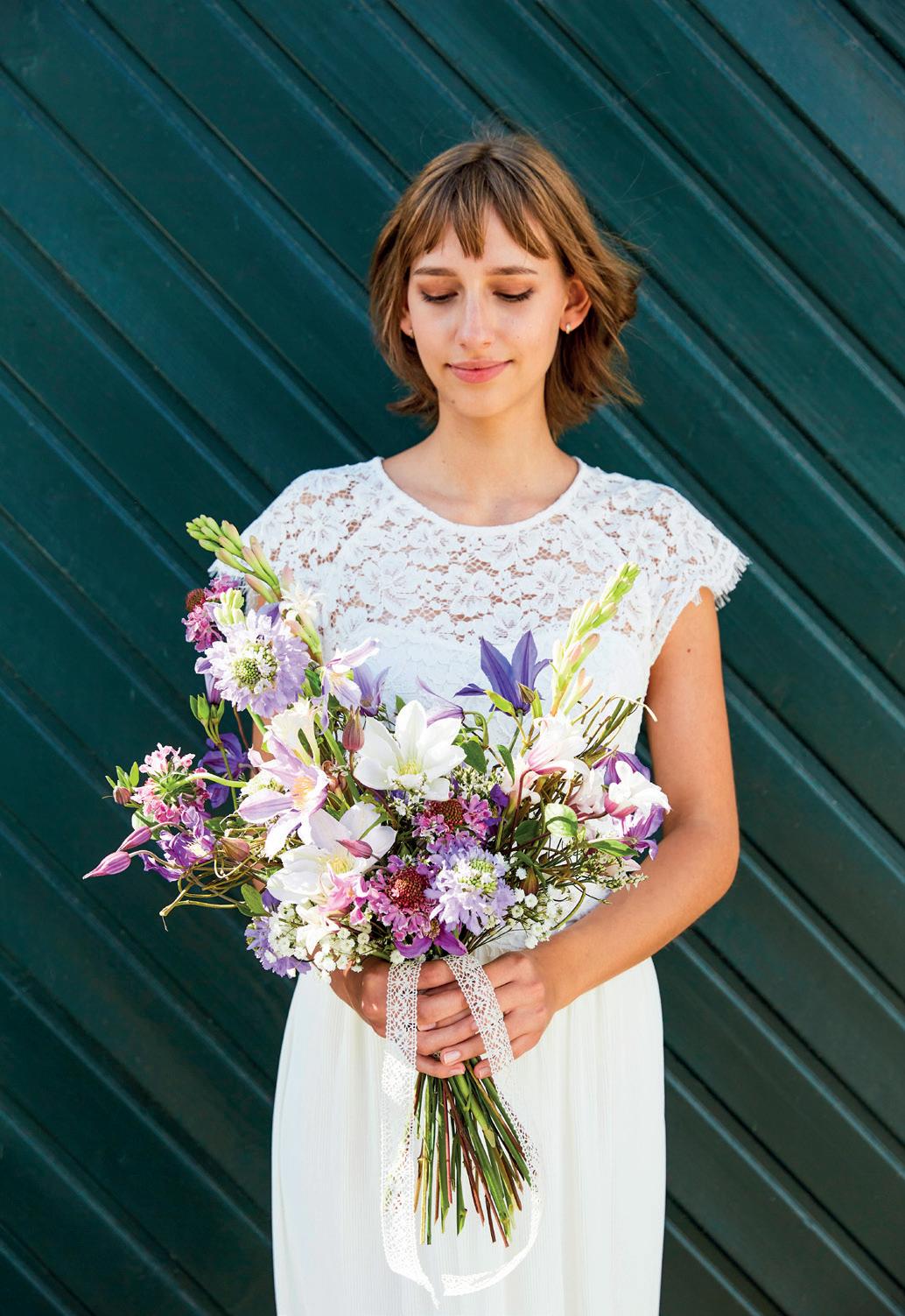
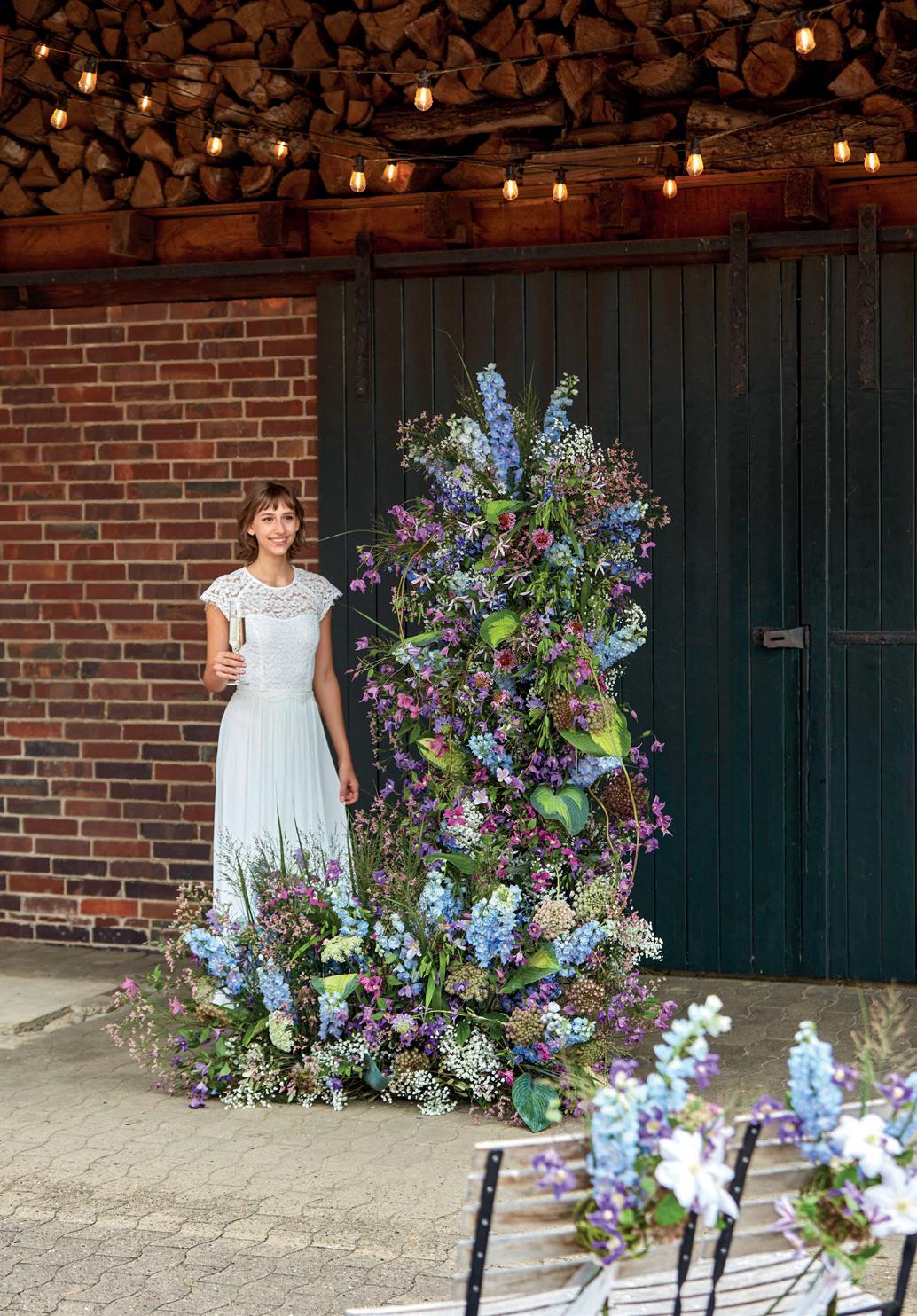
Time to celebrate love!
The Clematis Amazing® varieties are heavy drinkers. If you are going to make this design, keep in mind that Clematis works best in water, so make the design shortly beforehand or incorporate tubes of water into the design.
There are more designs to see. Visit our website for the full story: www.marginpar.com

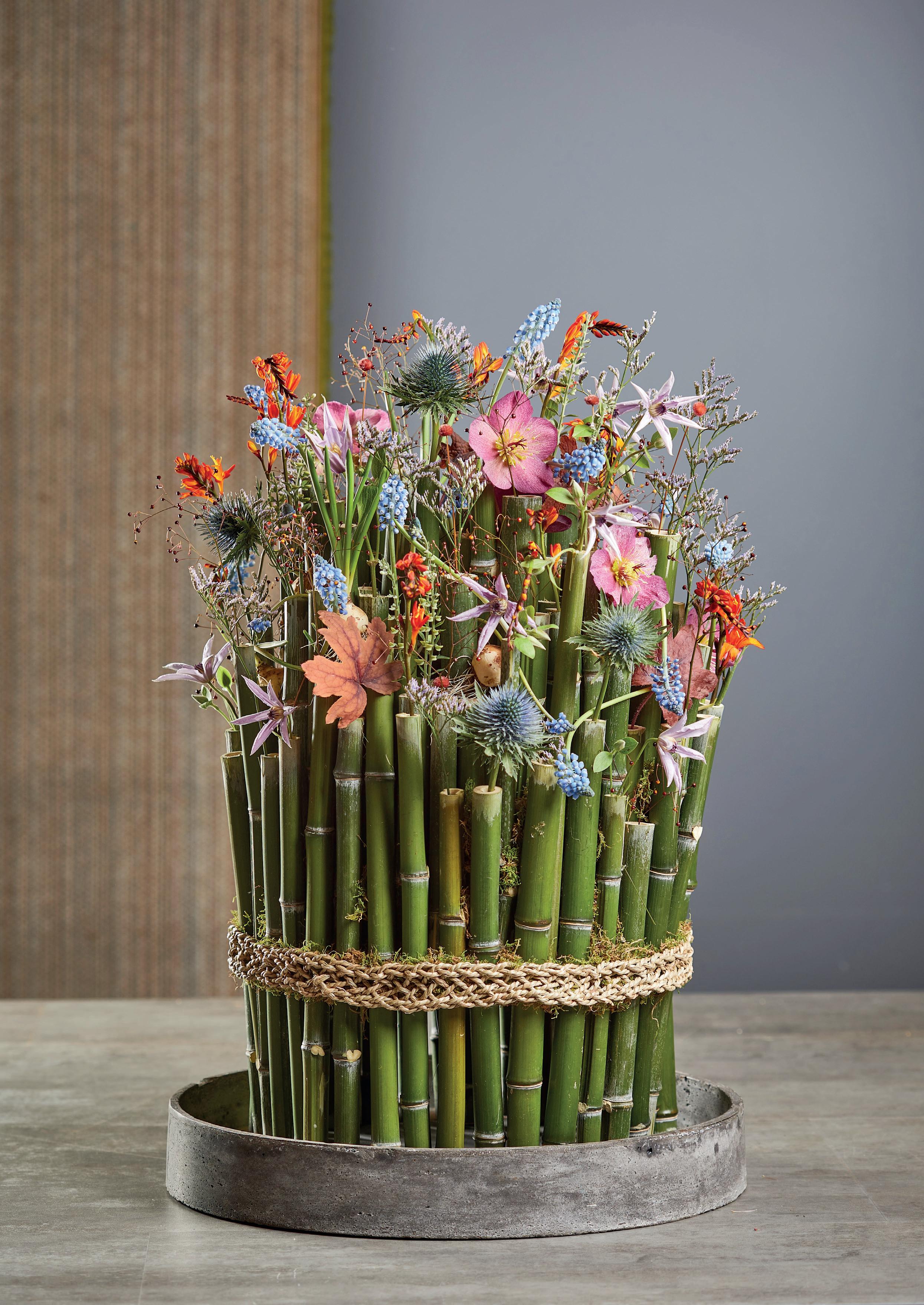
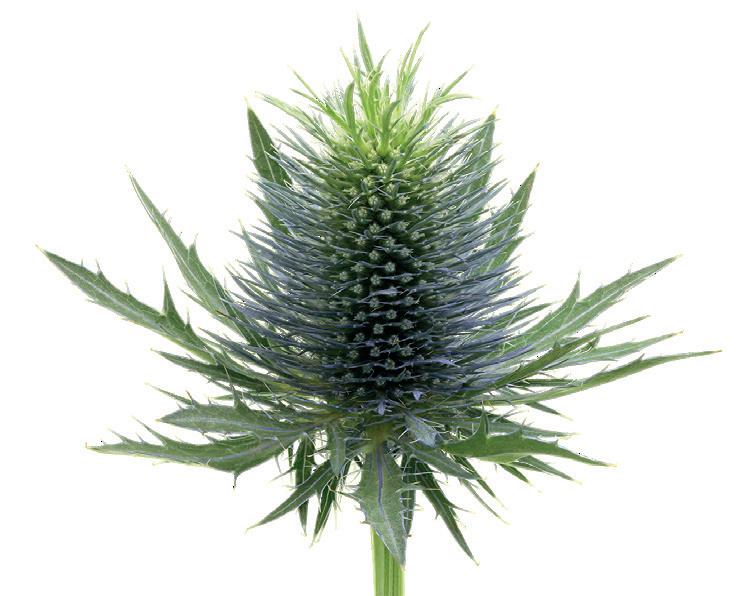
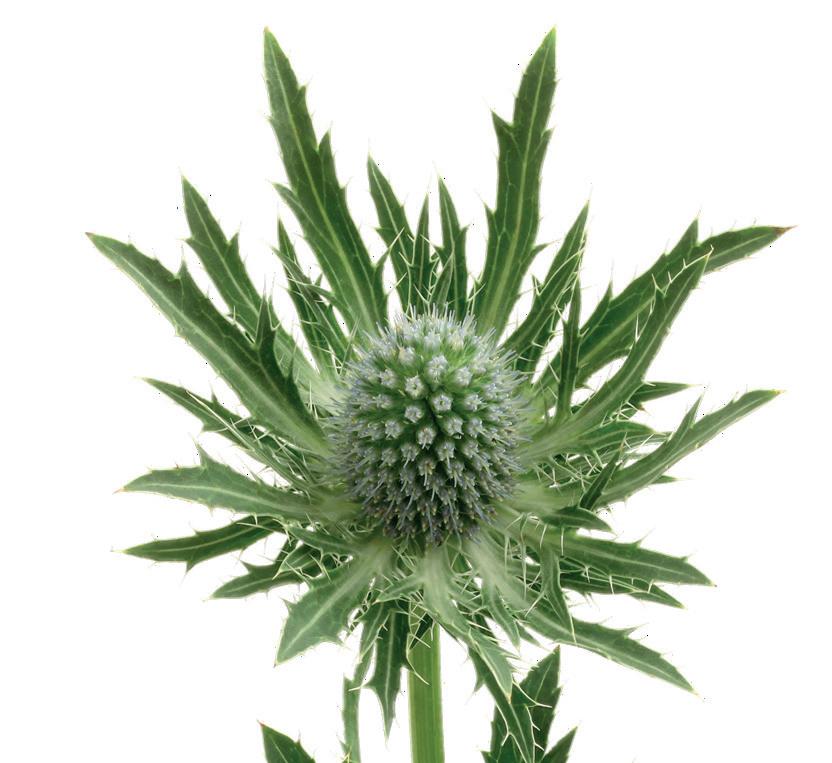
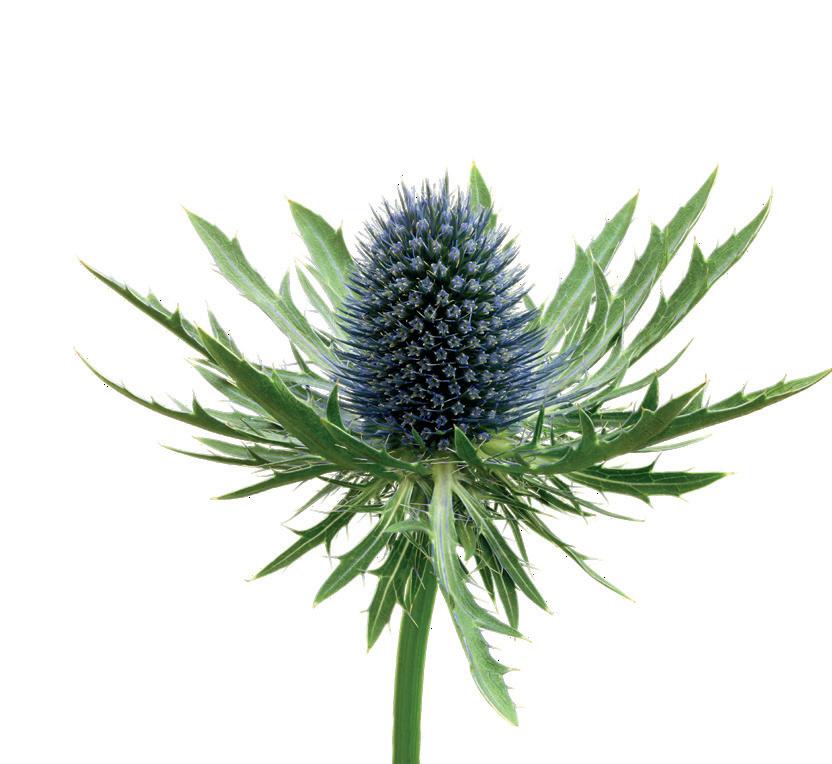
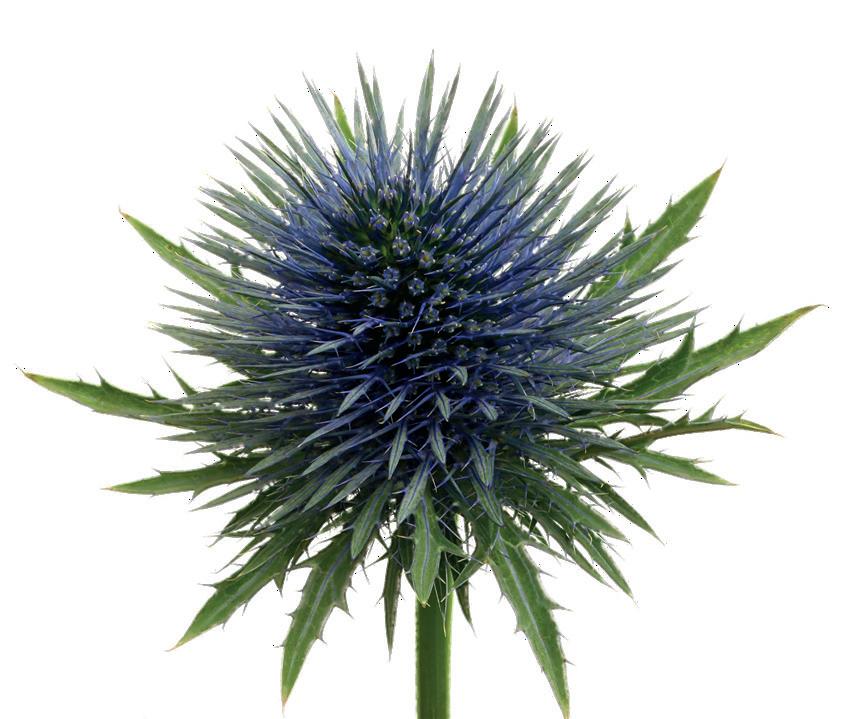
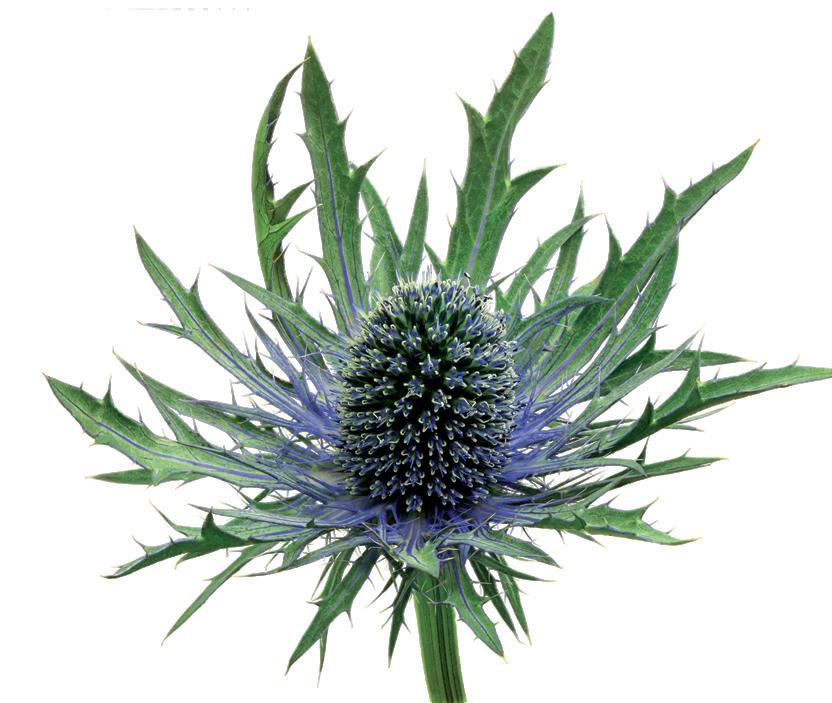

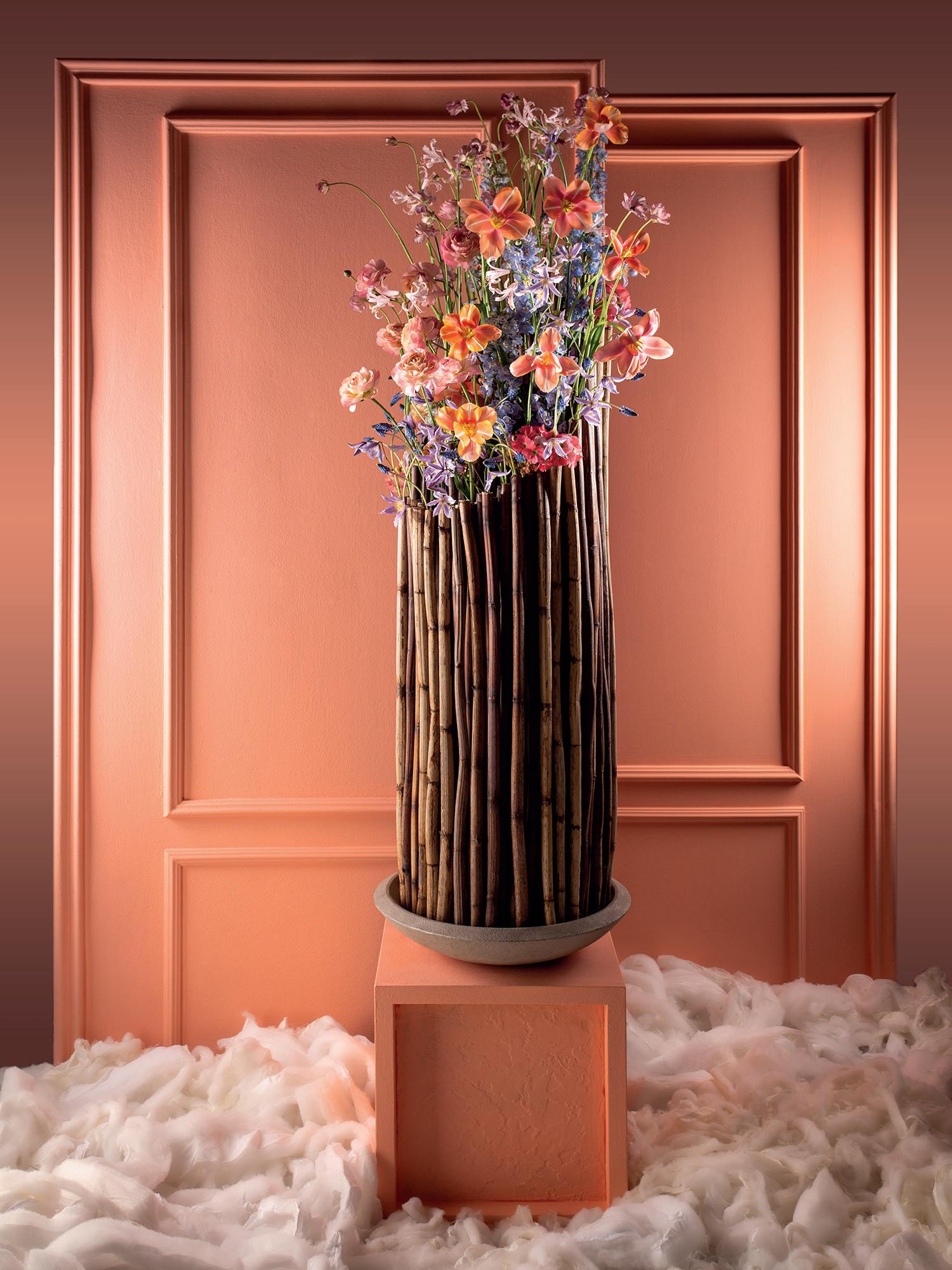
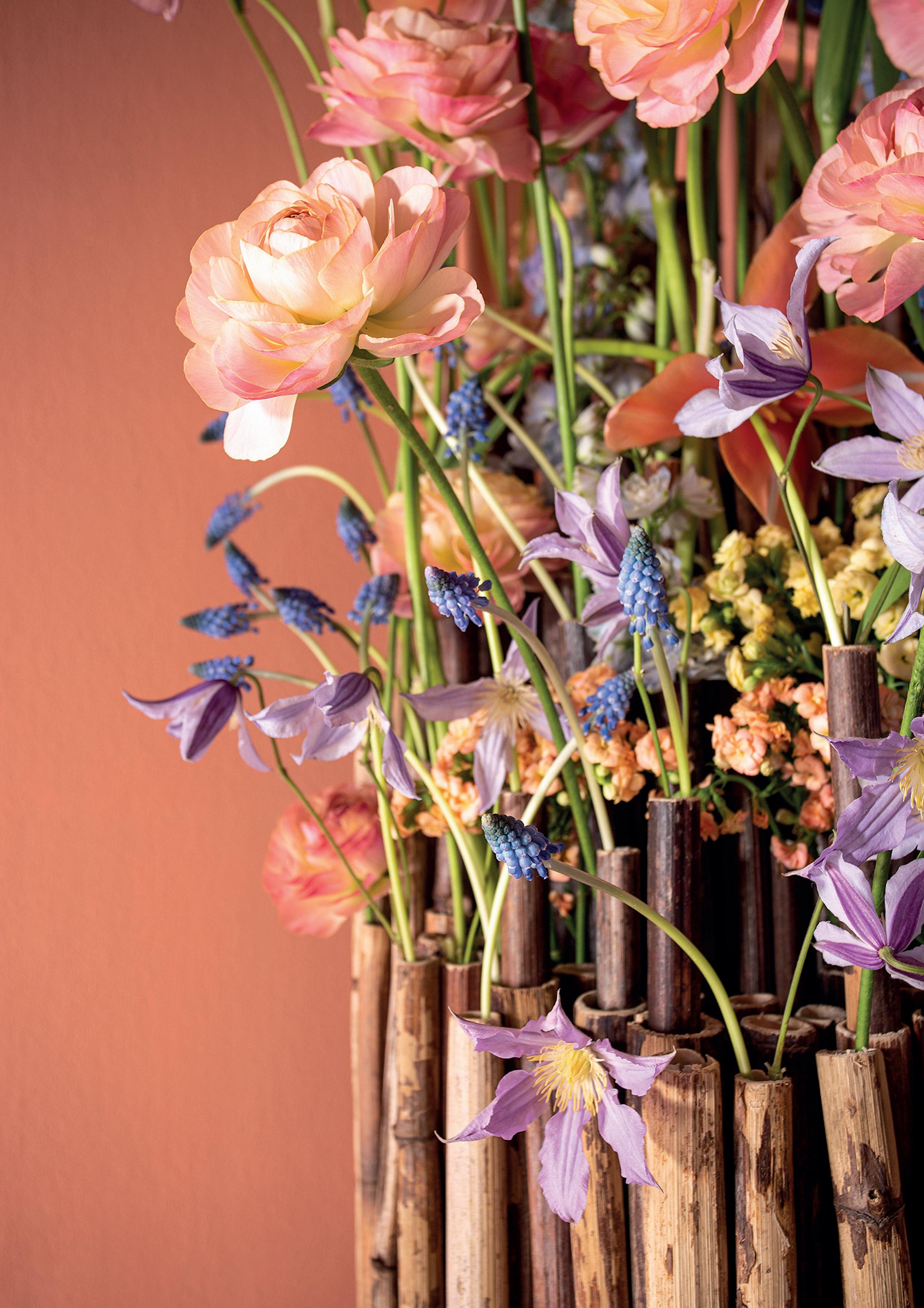
Jan 20 - Feb 18
The Eryngium is a strong and powerful flower that is not afraid to stand out. Just like you, Aquarius! You too are strong and known for your independent and lively character. It’s a good thing we have you, otherwise the world would look very different: you love change and are not afraid to share your opinion. But be careful not to become too judgmental and contrary. Channel this energy into something positive and 2024 will smile upon you!
Feb 19 - Mar 20
Is your zodiac sign Pisces? Then you have probably noticed that besides being sensitive, you are also very creative and dreamy. The Scabiosa symbolises love and, just like you, is a true romantic! The flowers are richly filled with nectar and attract many butterflies and bees; you too are very receptive to others! This can be very nice, but sometimes you also have to be careful not to let the energy of others influence your energy too much in 2024.
Mar 21 - Apr 19
The Clematis is naturally a true climber and, just like you, goes its own way. You are confident, like to take the lead, and your curiosity is quickly piqued. With you, Aries, it’s never boring, you like excitement and adventure. Sometimes it’s difficult for you to concentrate on something for a longer period of time, something to work on in 2024!
Apr 20 - May 20
If there is one trait to describe the character of Taurus, it is stubbornness. And that’s not for nothing! A Taurus loves peace and stability and wants nothing more than to cultivate that security. The Campanula stands for loyalty and gratitude; two qualities that also fit you, Taurus. But don’t let yourself go too crazy, let go of the reins sometimes. You’ll see that it will pay off this year!
May 21 - June 20
Is your zodiac sign Gemini? Then the Hypericum is your flower; modest, positive, and full of energy! And infecting people with your energy is definitely something you do. You are energetic and involved, but only as long as you are interested, as boredom quickly sets in with you. You are incredibly good at communicating and can be on the move all day long. Take a step back from time to time this year!
June 21 - July 22
The star sign Cancer is guided by emotions and strives for stability and love. You have a lot of love to give which makes the flower Gypsophila an excellent match for you! This flower symbolises love and kindness, a perfect match. Don’t dwell too much on the past, Cancer, there is so much beauty in the future; 2024 will be your year!
July 23 - Aug 22
The Craspedia is a beautiful flower that stands out for its striking appearance. With its bright yellow colour, it’s not afraid to stand out, just like you, Leo! You love attention, are very funny and have a positive attitude. You like to take charge and like a bit of excitement in your life. Don’t forget to look around you in 2024!
Aug 23 - Sept 22
Reliable, honest and perfectionist are character traits that suit you perfectly, Virgo. You are meticulous and only want the best for yourself and for the people around you, which ties in nicely with the Jatropha Firecracker flower. In fact, this flower requires careful care to perform. Don’t be too critical of yourself Virgo, in 2024 you may let go!
Sept 23 - Oct 22
Like the Astrantia flower, the Libra constellation is all about harmony and elegance. The beautiful little petals have an enchanting radiance, just like you. You are charming, a team player and a true romantic. You value a good atmosphere and therefore prefer to avoid confrontations, which can sometimes make you come across as a bit indecisive. In 2024, you may show your emotions Libra!
Oct 23 - Nov 21
With its popping colours and unique petals, the Gloriosa is a powerful flower that suits you well. You are determined, honest and a tad stubborn. To the outside world you may look like a cold fish, but deep down inside... You are curious and when your interest is aroused, you dig until you know everything. Letting go is therefore not your strong point, maybe in 2024 it will be?
Nov 22 - Dec 21
Optimistic, honest and enthusiastic. Do you recognise yourself in this, Sagittarius?
Because these are character traits that suit you! And not just you... Also the Delphinium. This positive flower sticks out enthusiastically everywhere, a great match for you.
You don’t live in the past, but always look forward to the future. A good quality but don’t forget to process your feelings first!
Dec 22 - Jan 19
You are a stable factor, Capricorn. You are responsible, loyal and exude a lot of calmness. These traits perfectly match the Limonium. This stable flower stays beautiful for a long time and also looks good as a dried flower, so you can enjoy it for a long time.
You also like to invest in long-lasting friendships; fleeting contact is not your thing. You are ambitious in every way, but don’t be too hard on yourself, Capricorn!
Hanneke Frankema - Design
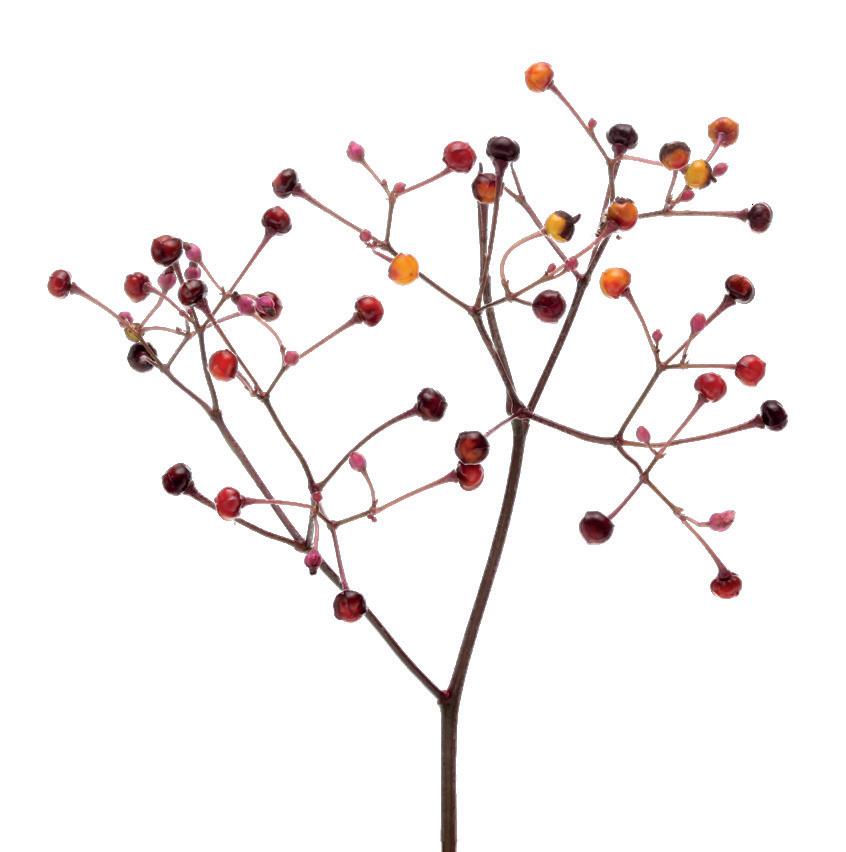
Nico Alsemgeest - Photography
Created for De Pook Florist Magazine
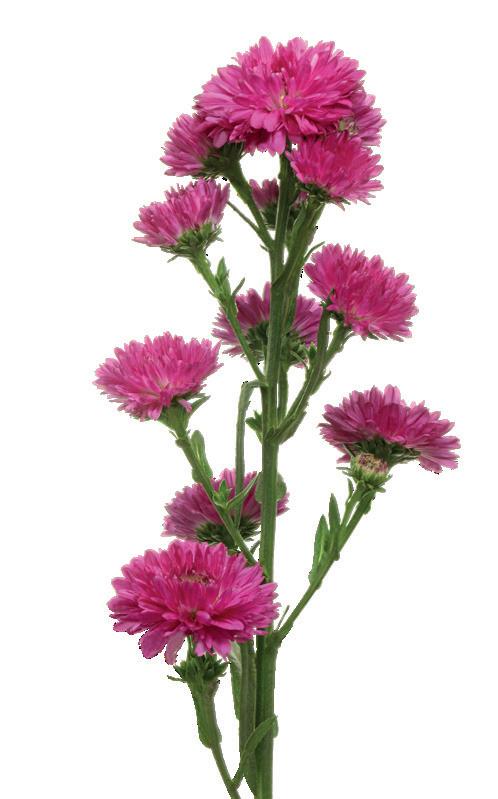
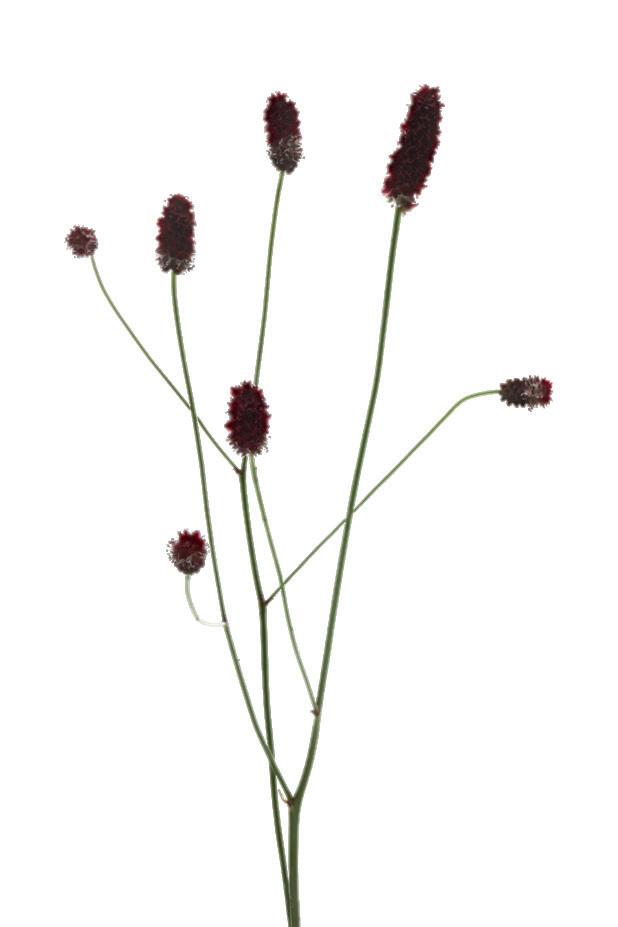
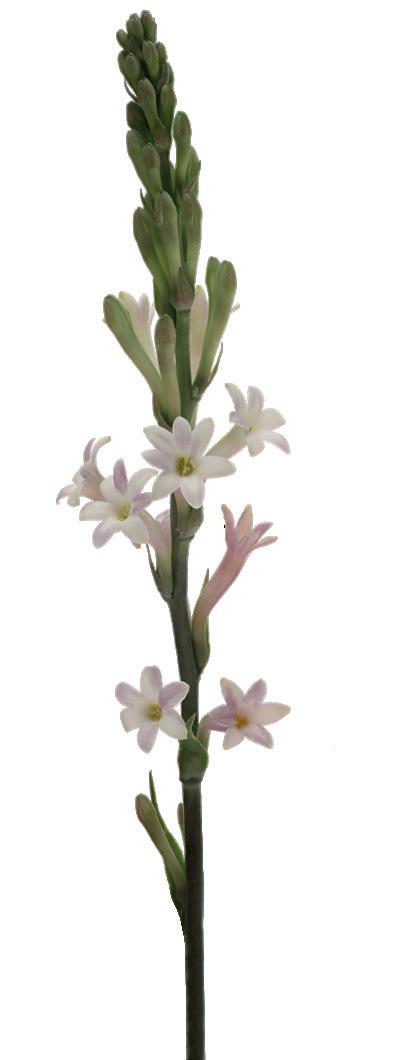
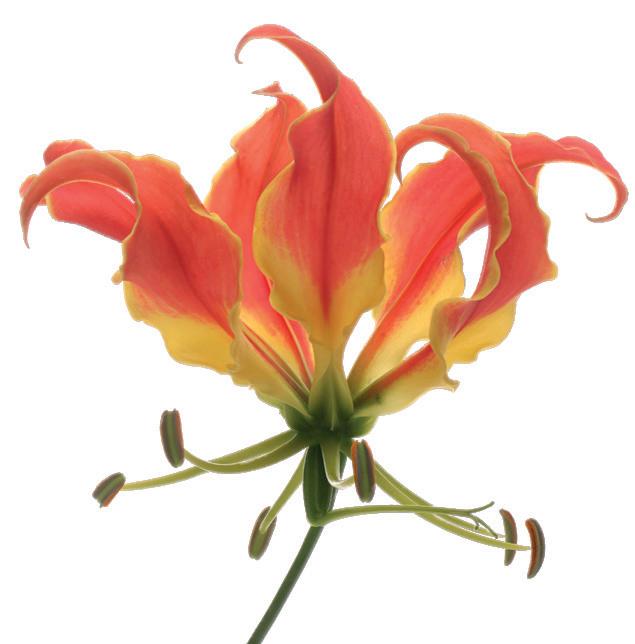
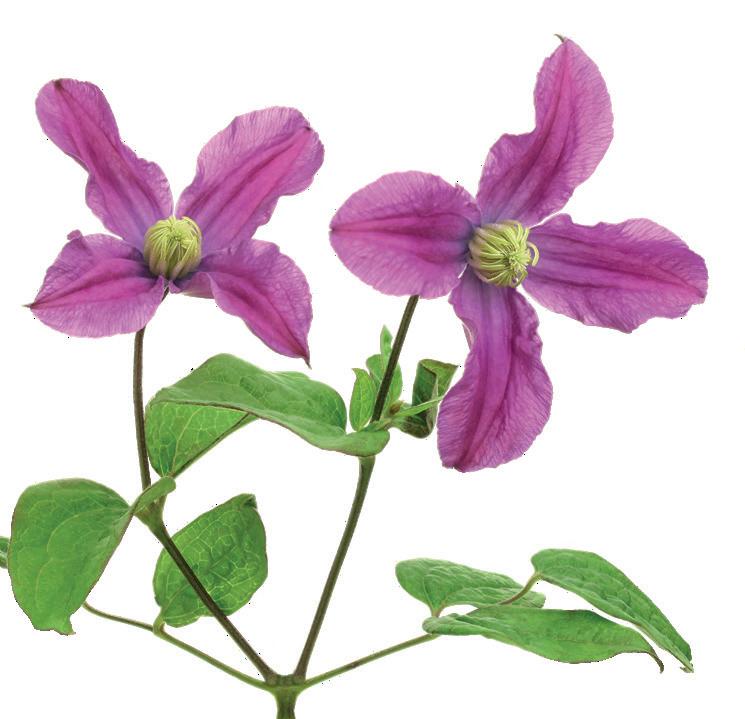
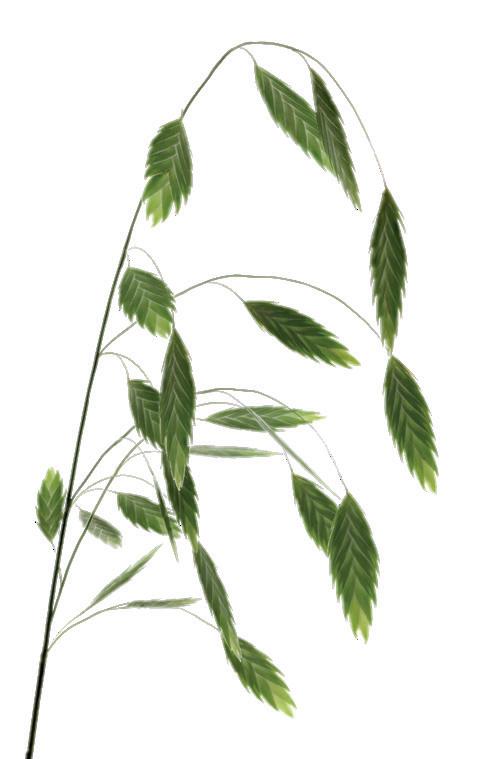
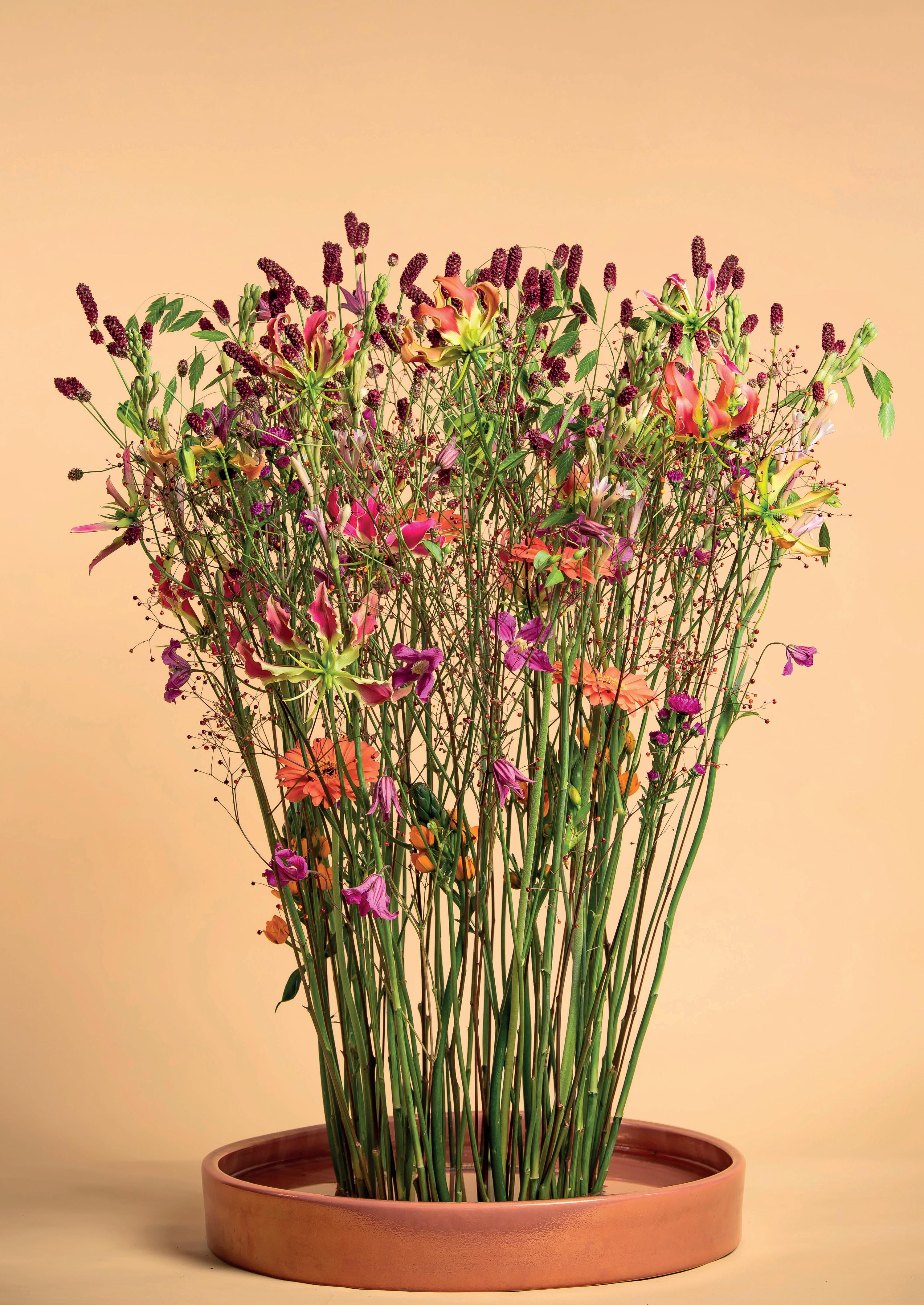
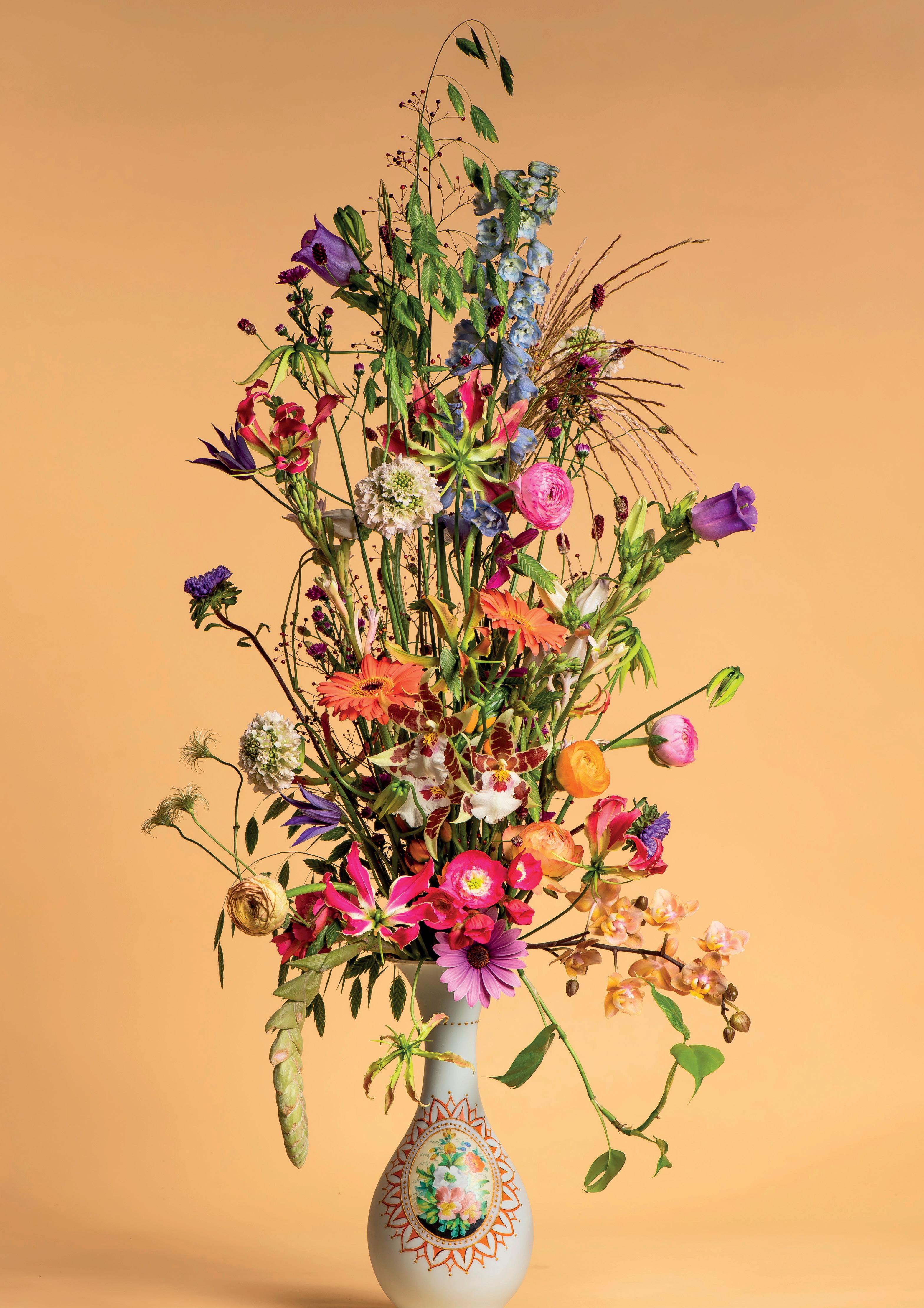
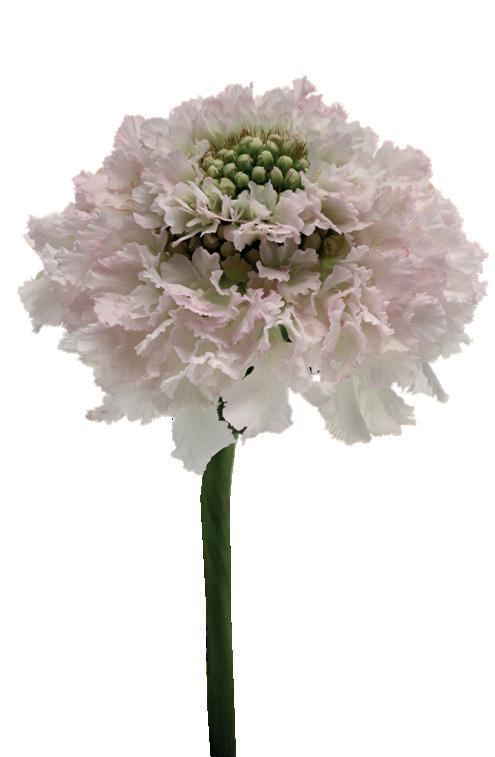
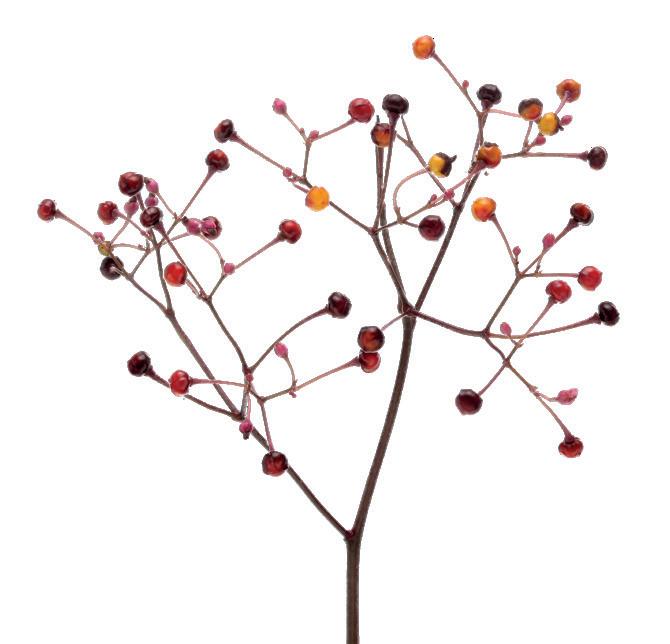
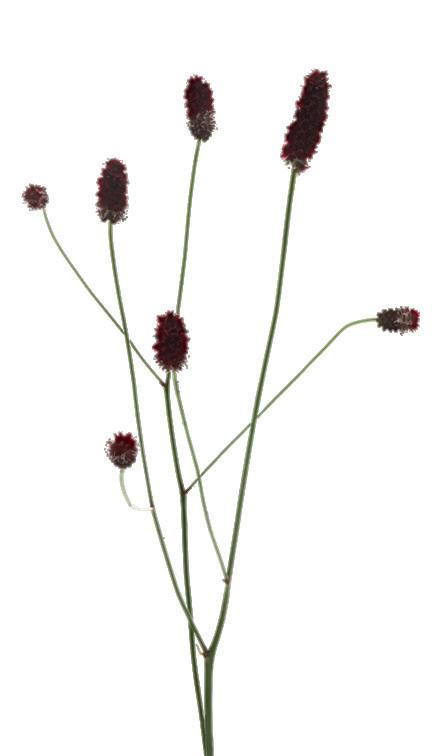
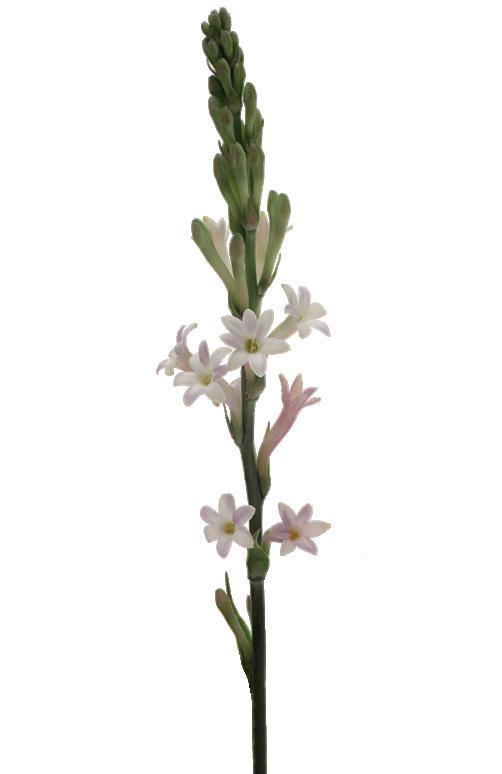
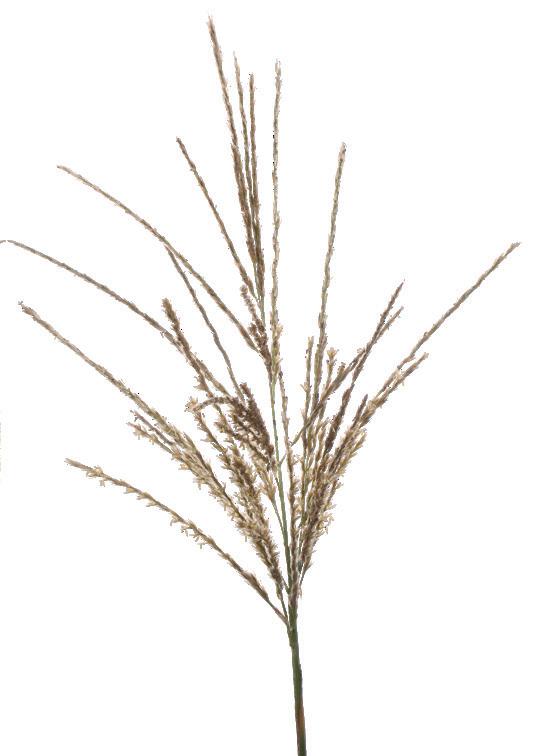
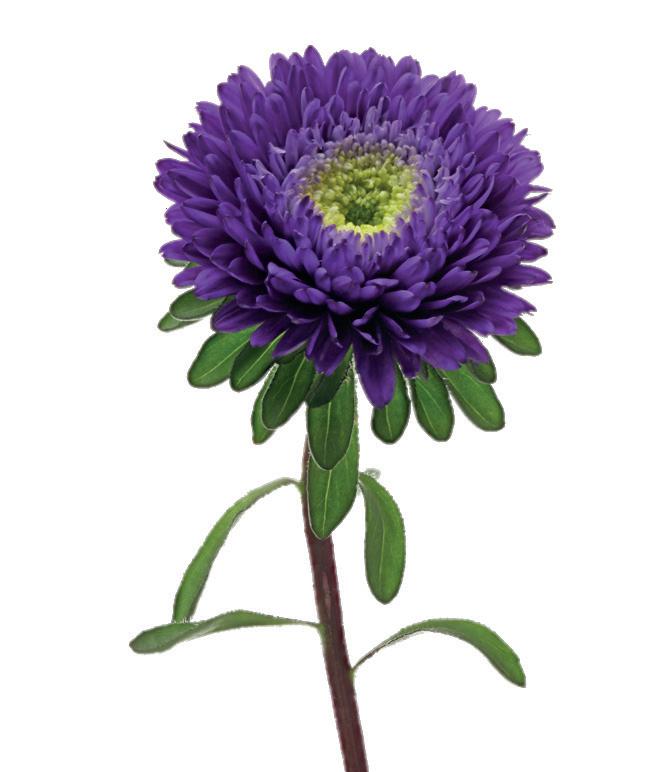
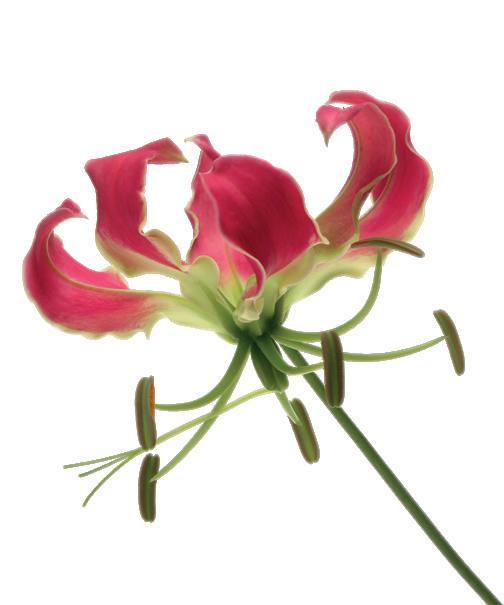
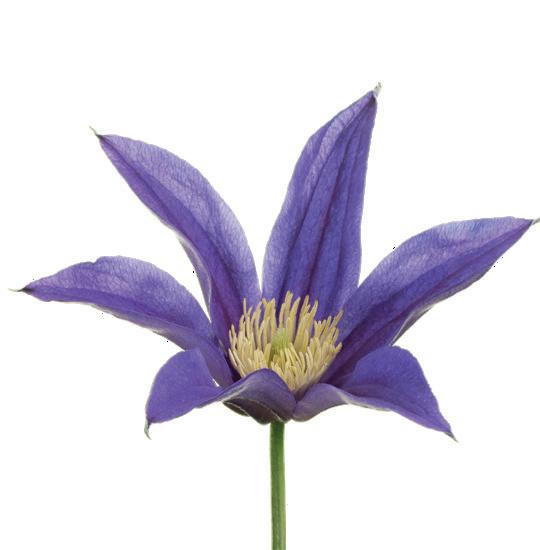
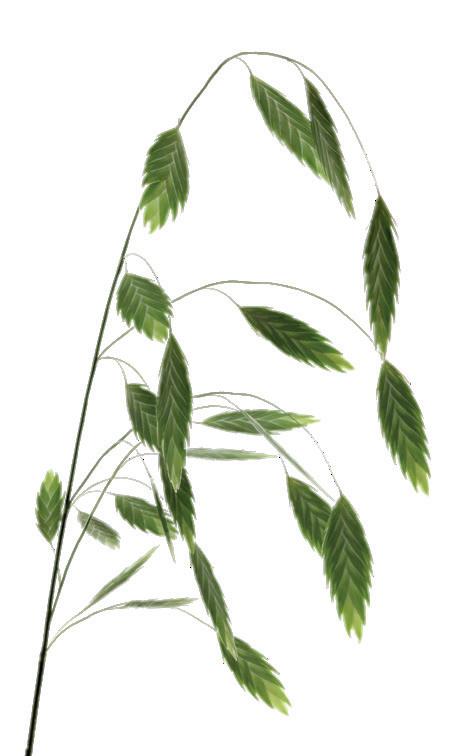
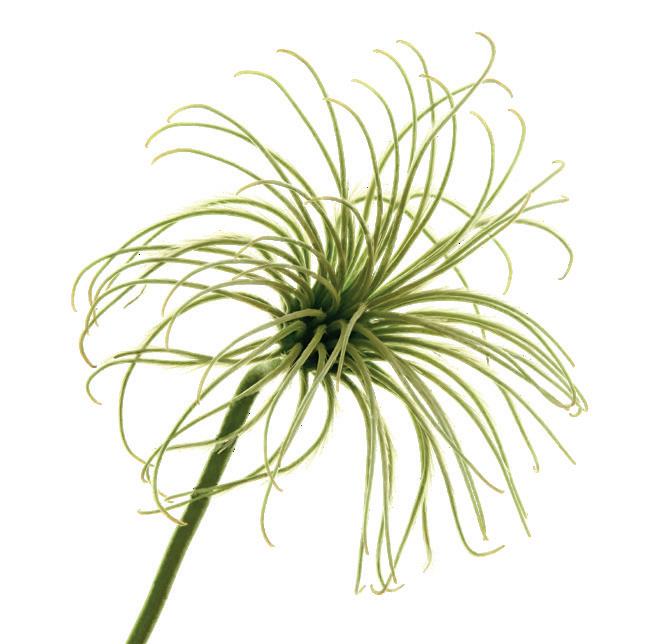
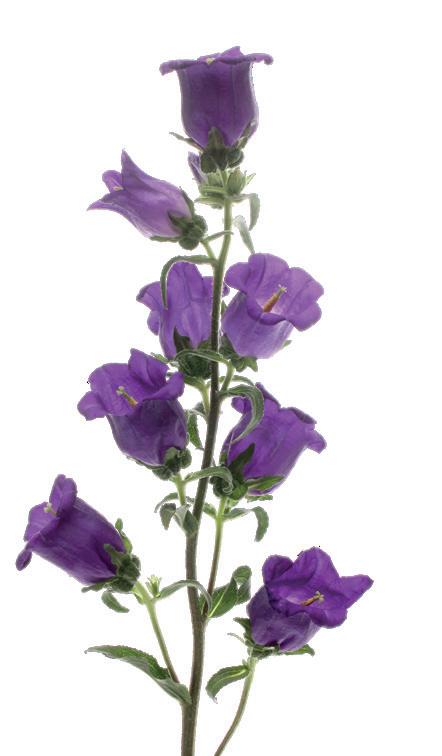
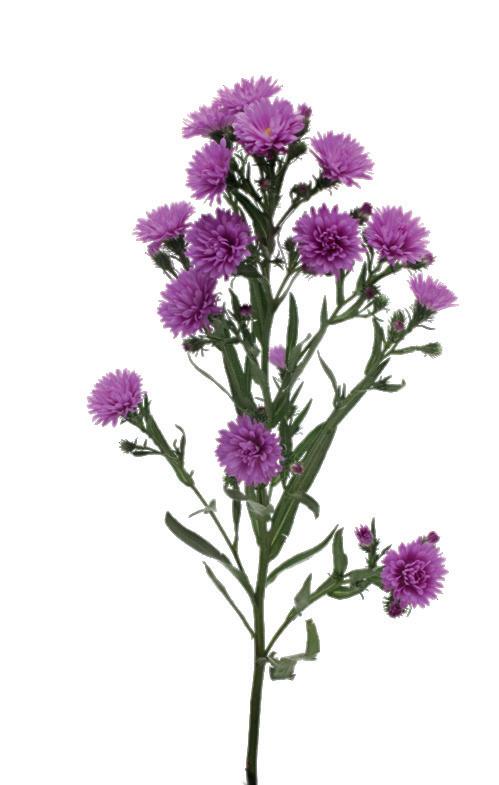

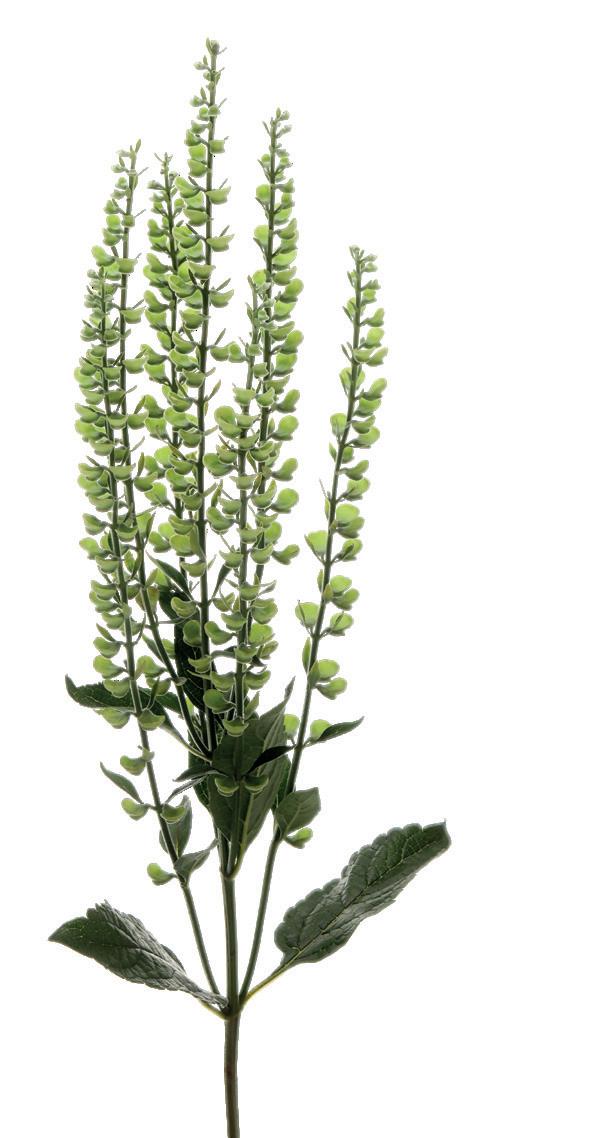

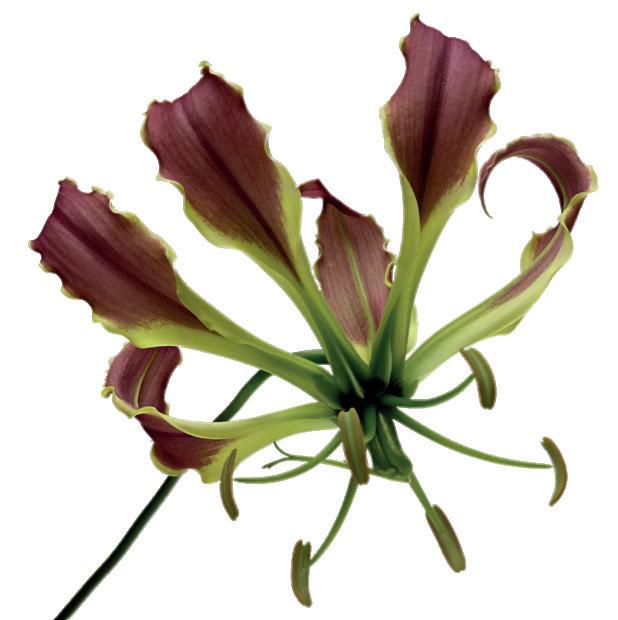
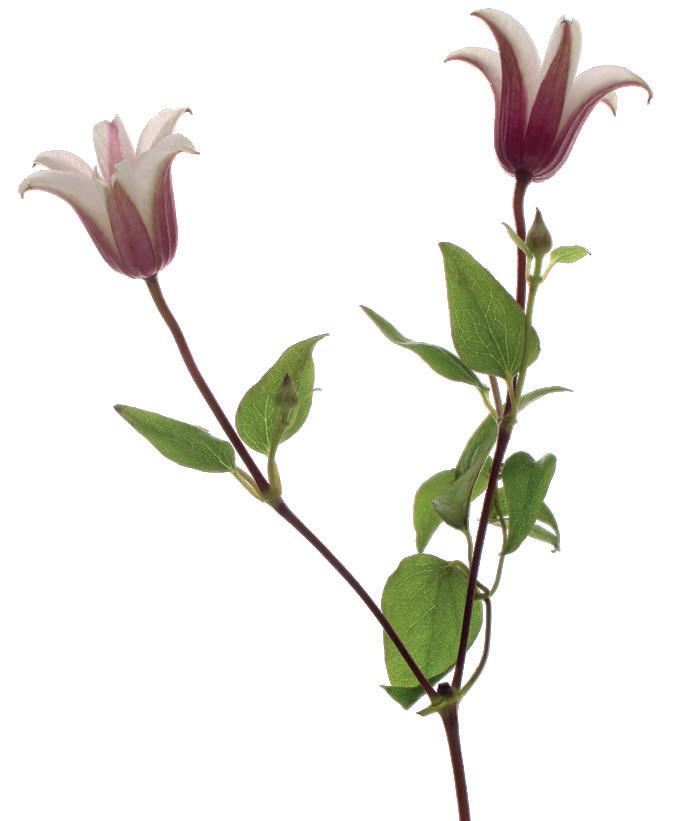
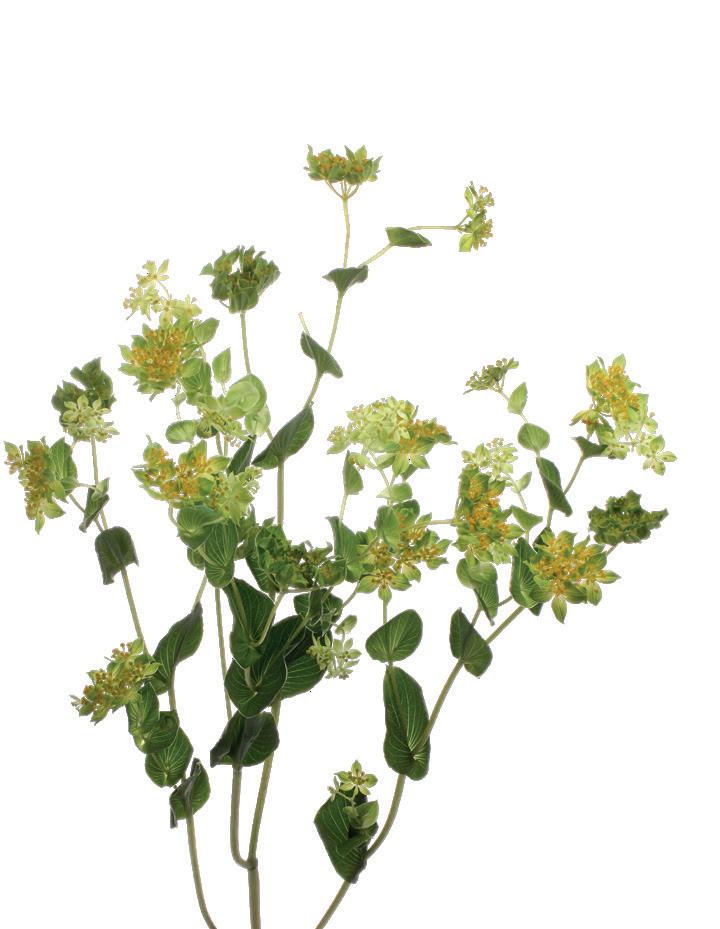

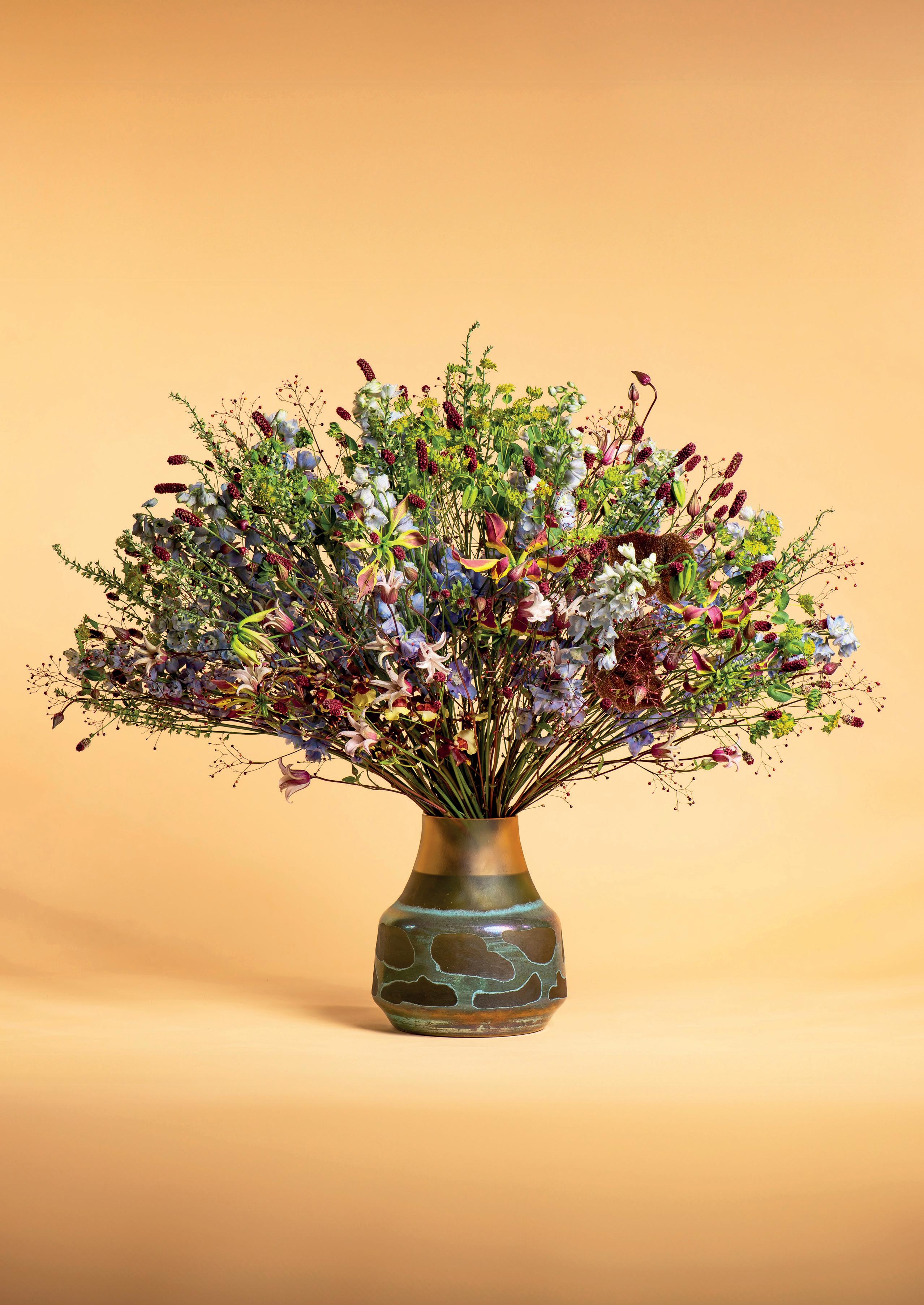
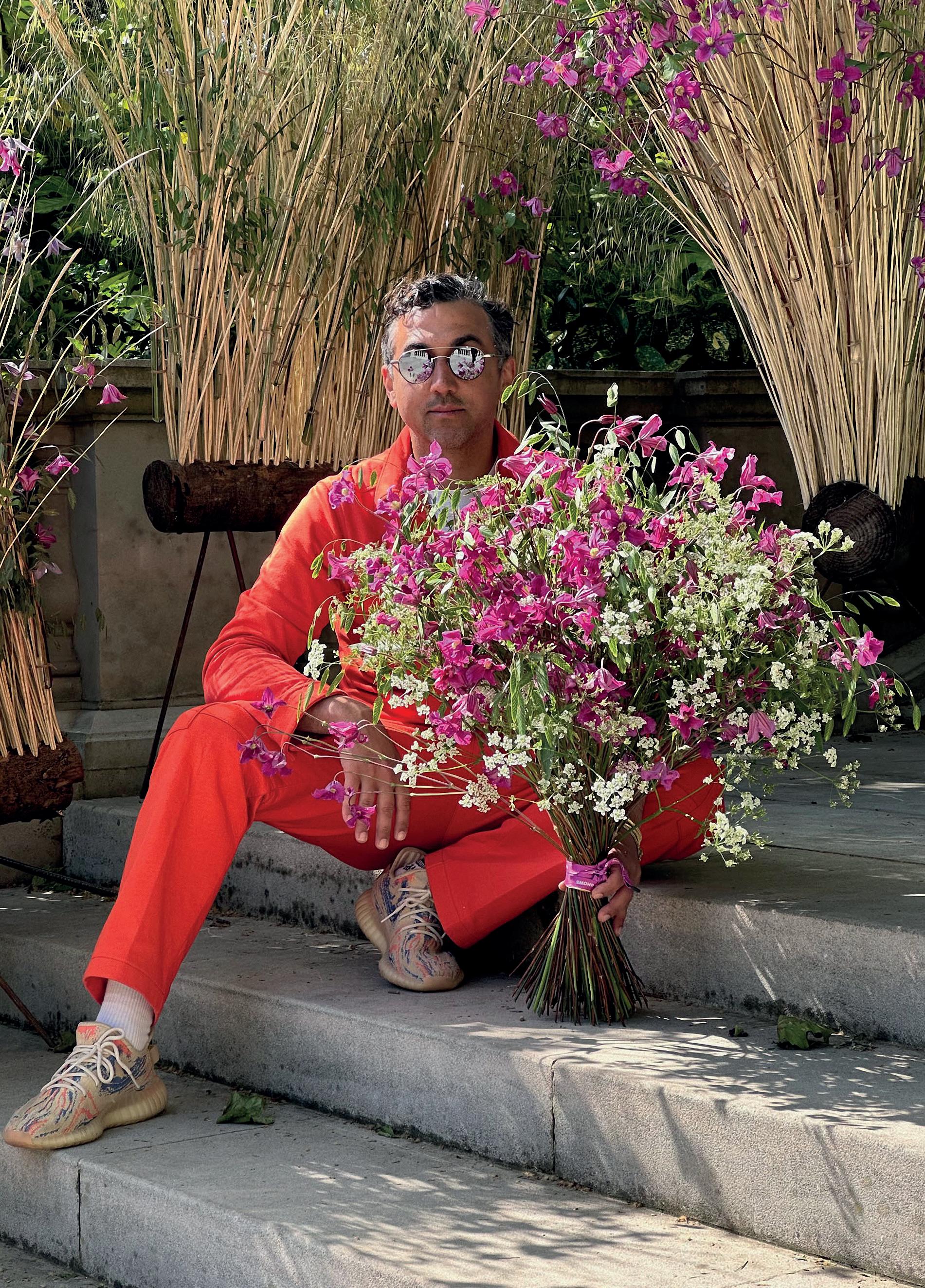
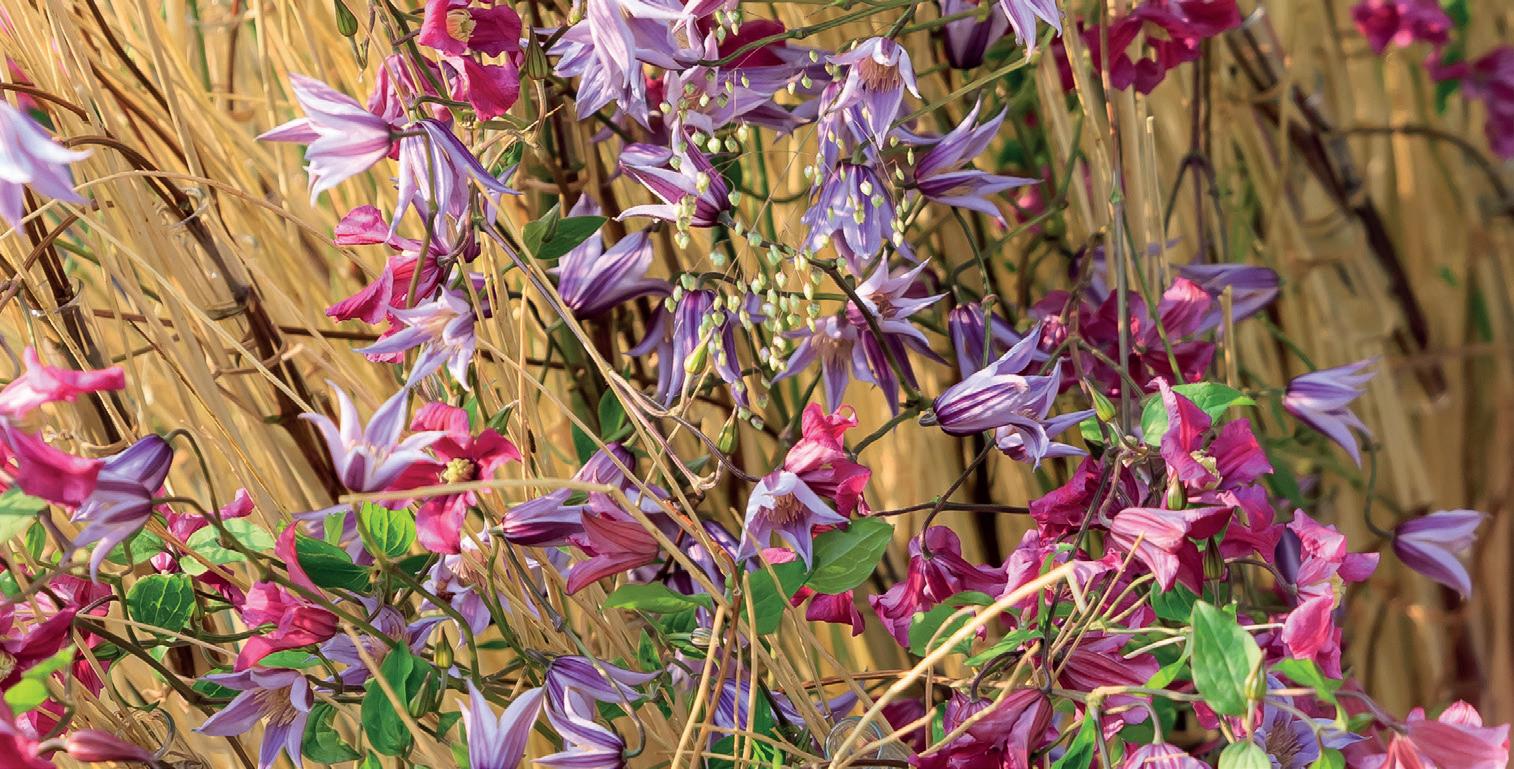
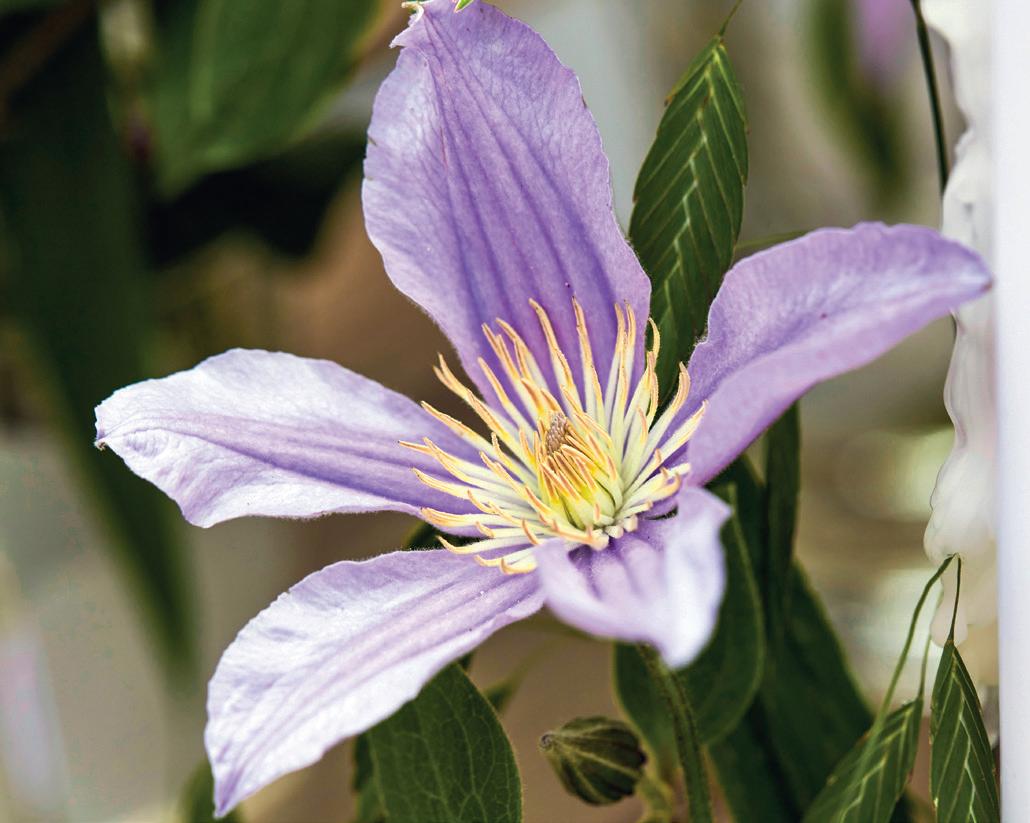
Since the first introduction in 2006, our Clematis Amazing® cut flowers have been loved by many in the florist profession and beyond. The delicate petals of the Clematis are quite the eyecatchers. Floral designer Dmitry Turcan describes it so poetically: “The flower that floats over a bouquet like a butterfly flies over a flower meadow.”
Looks can be deceiving. This delicate flower is a tough little fella; because of its high resistance to Botrytis and its woody stems, it’s super sturdy. But how do you best treat this flower?
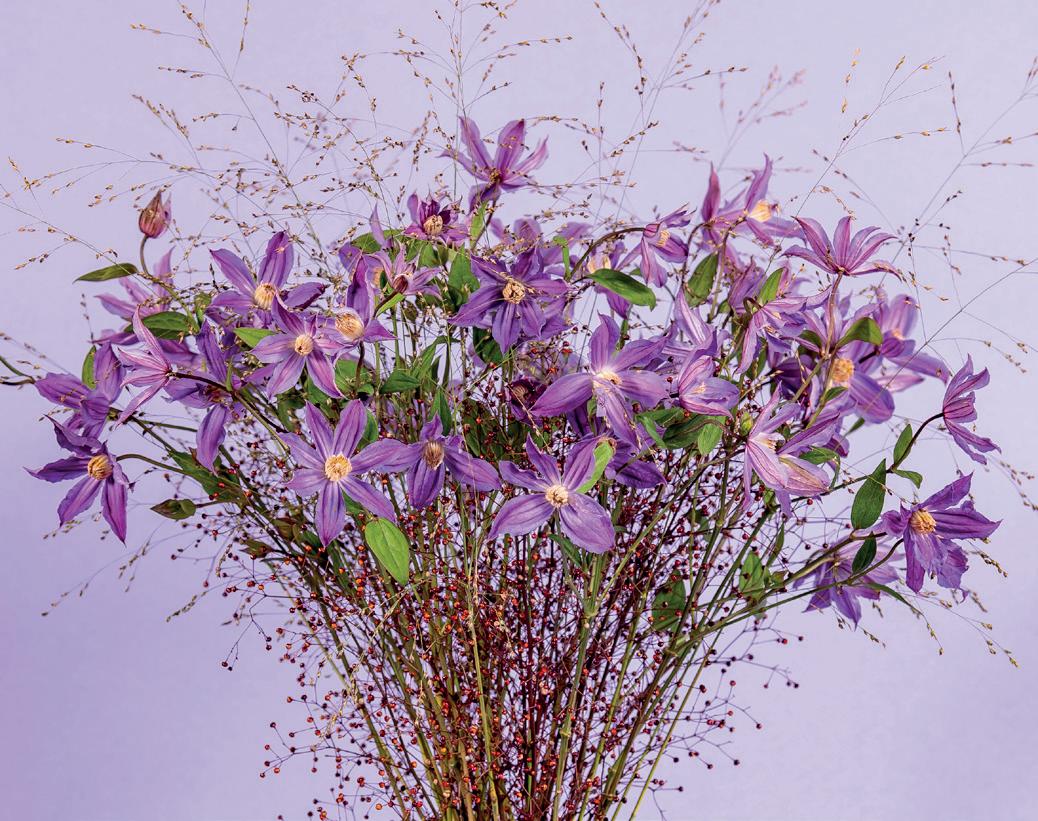
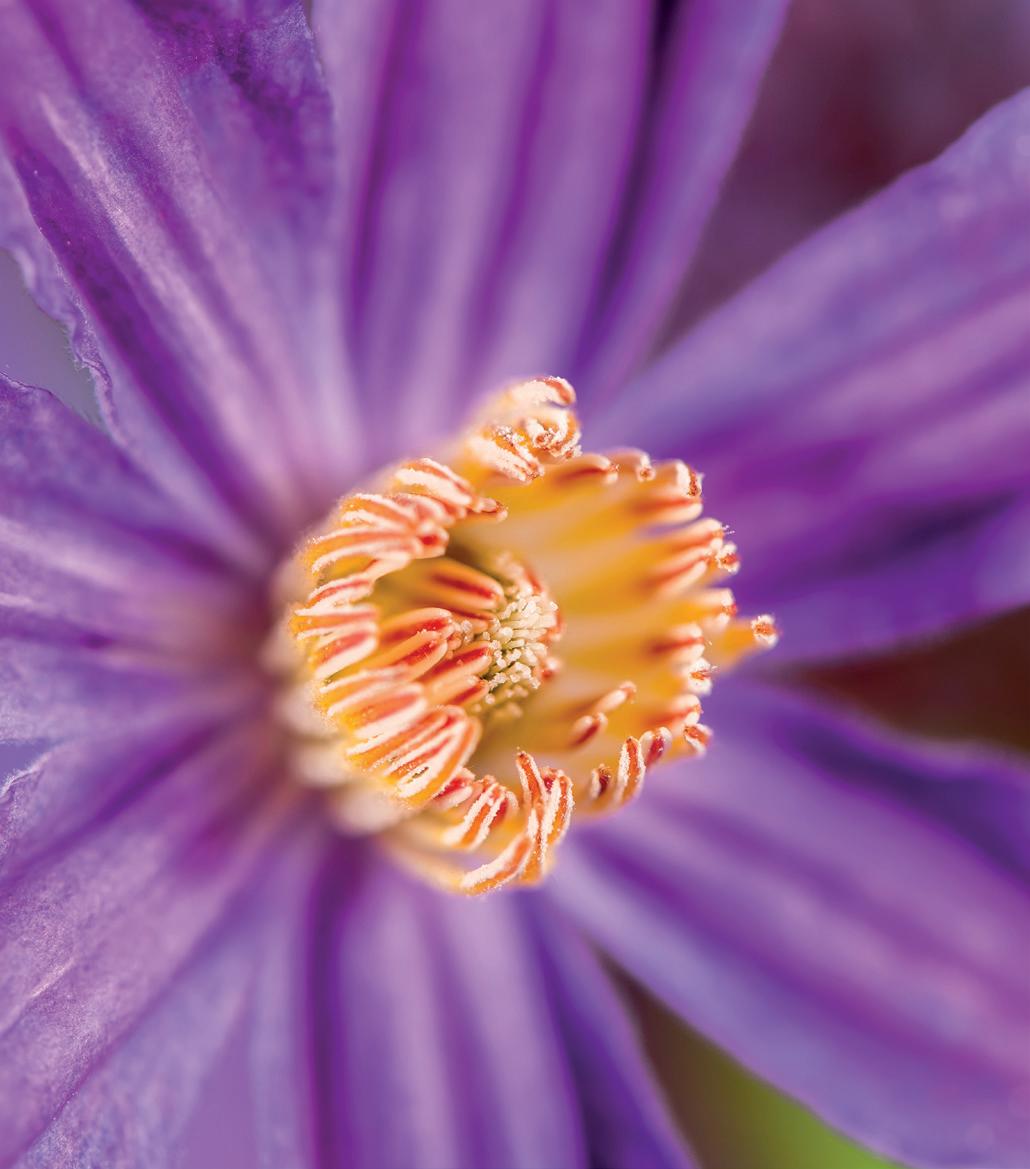
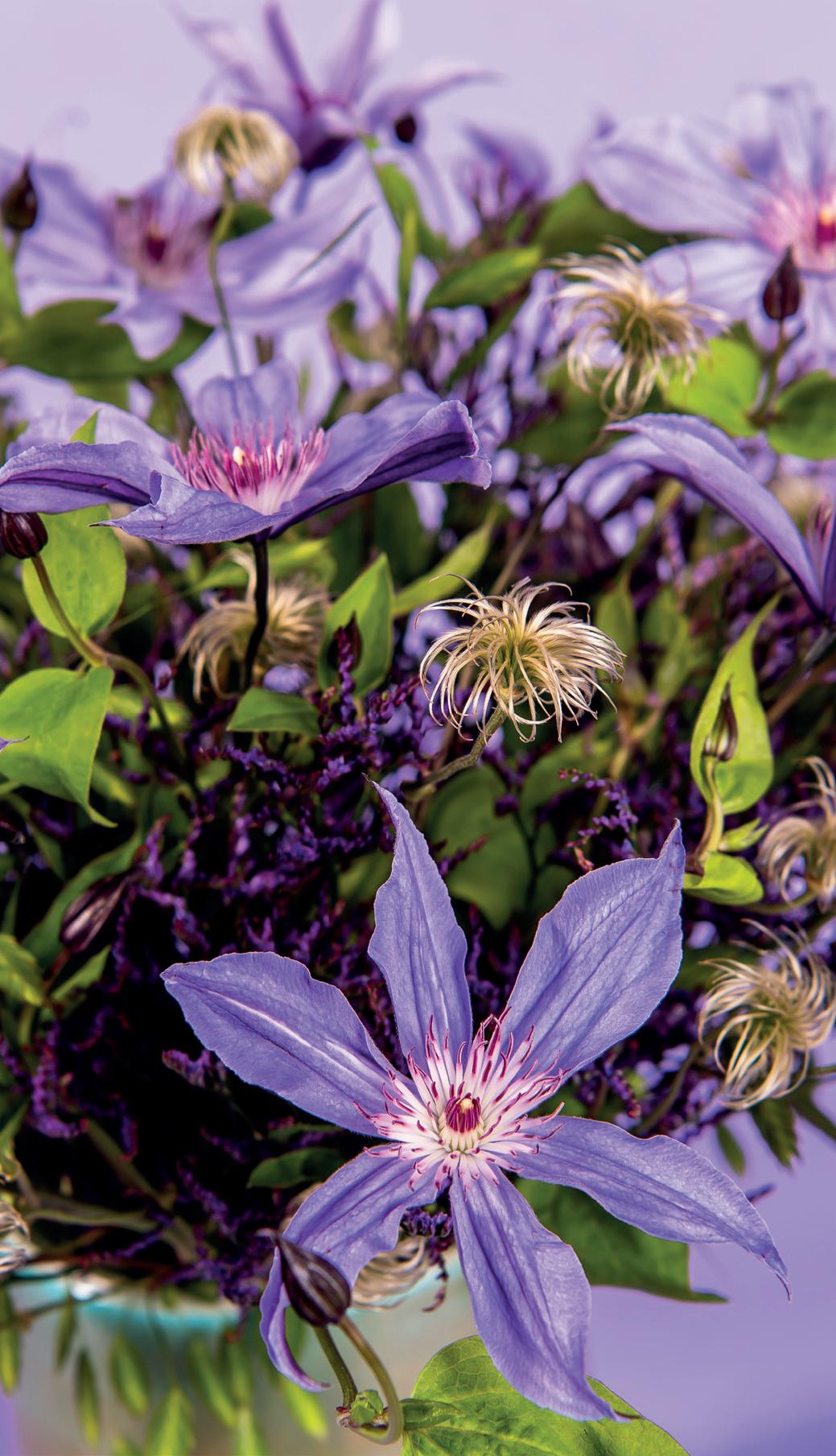
Clematis is a grateful flower and if you treat her right, she has a vase life of 10 days minimum. In a cool and light room, the flowering stems last for over 2 weeks. Here are a few tips that reveal ‘the secret’ to this long life span and fresh-looking flower that makes your arrangement ‘pop’.
Clematis is a heavy drinker. She loves fresh, clean, cold water, and lots of it. The thirsty Clematis, therefore, dislikes small water tubes and floral foam.
It’s also important to make sure that both the water and the vase you’re using are clean. Preferably clean the vase with bleach or detergent before use. Adding flower food will ensure it stays that way. Dirty water blocks the water supply in the stems, which will make the flowers drop.
When preparing Clematis for your bouquet or arrangement, use clean sharp scissors to cut off the bottom part of the stem. Make sure to cut between the nodes, not on them.
If you remove some of the foliage, the flowers will last even longer. Make sure to take off a few of those leaves if you like your Clematis to shine for at least those 10 days.
In addition to keeping the water clean, flower food –as the name suggests – also provides nutrition to the flowers. We recommend Chrysal (universal) flower food.
Place your vase with Clematis in a spot where it is as light as possible but not in direct sunlight. These sturdy flowers last best in a cool place. If the vase will be placed in a warm room, make sure to put the vase in a cool place for 24 hours prior to placing it in its warm spot.
As for all flowers, make sure to not place them near a fruit bowl. The presence of the fruit accelerates the aging process of the flowers. Also remember, Clematis does not like drafty spaces. If you had it next to a door or open window, you can revive the flowers by cutting them again, renewing the water and floral food and placing them in a better spot.
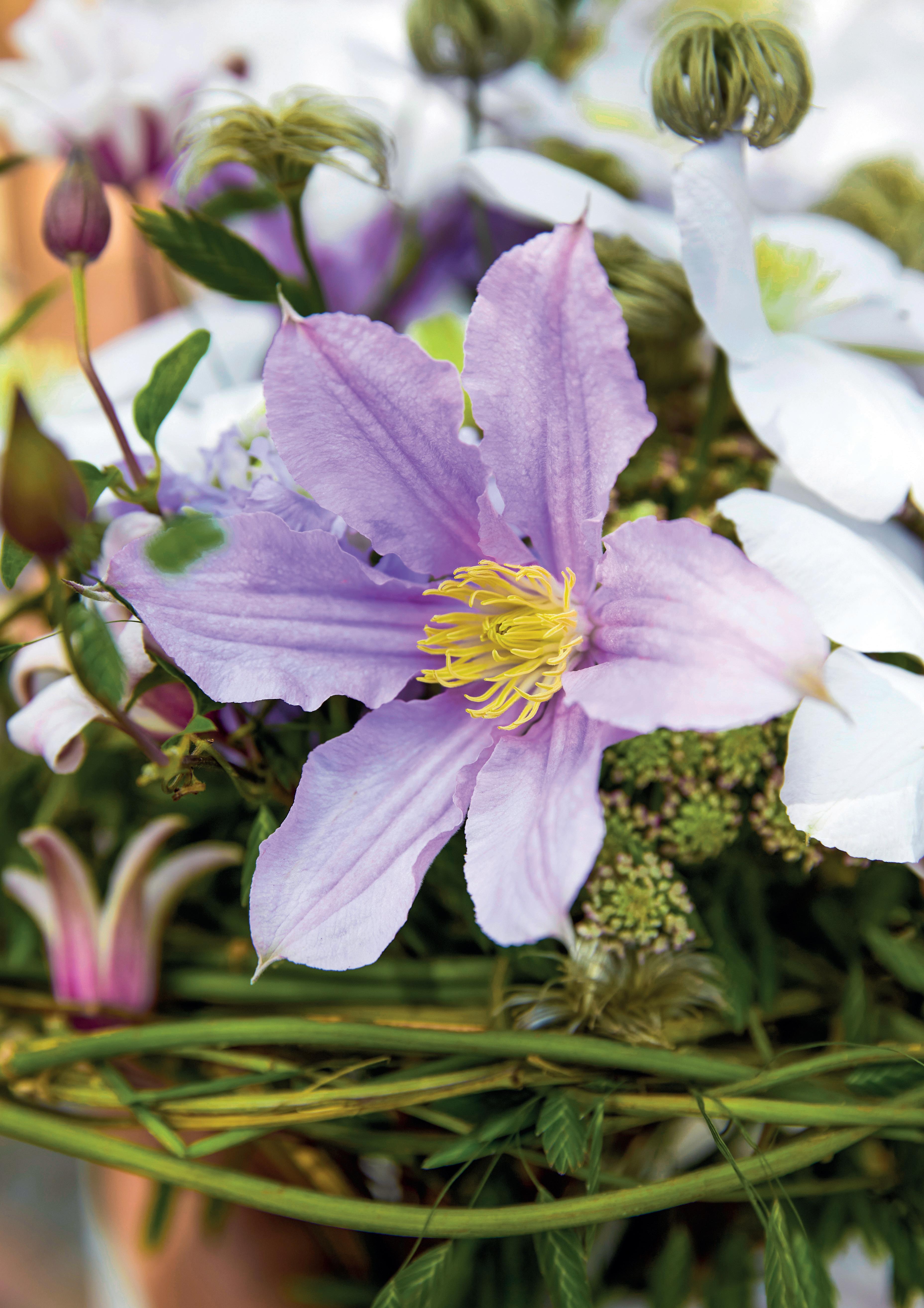
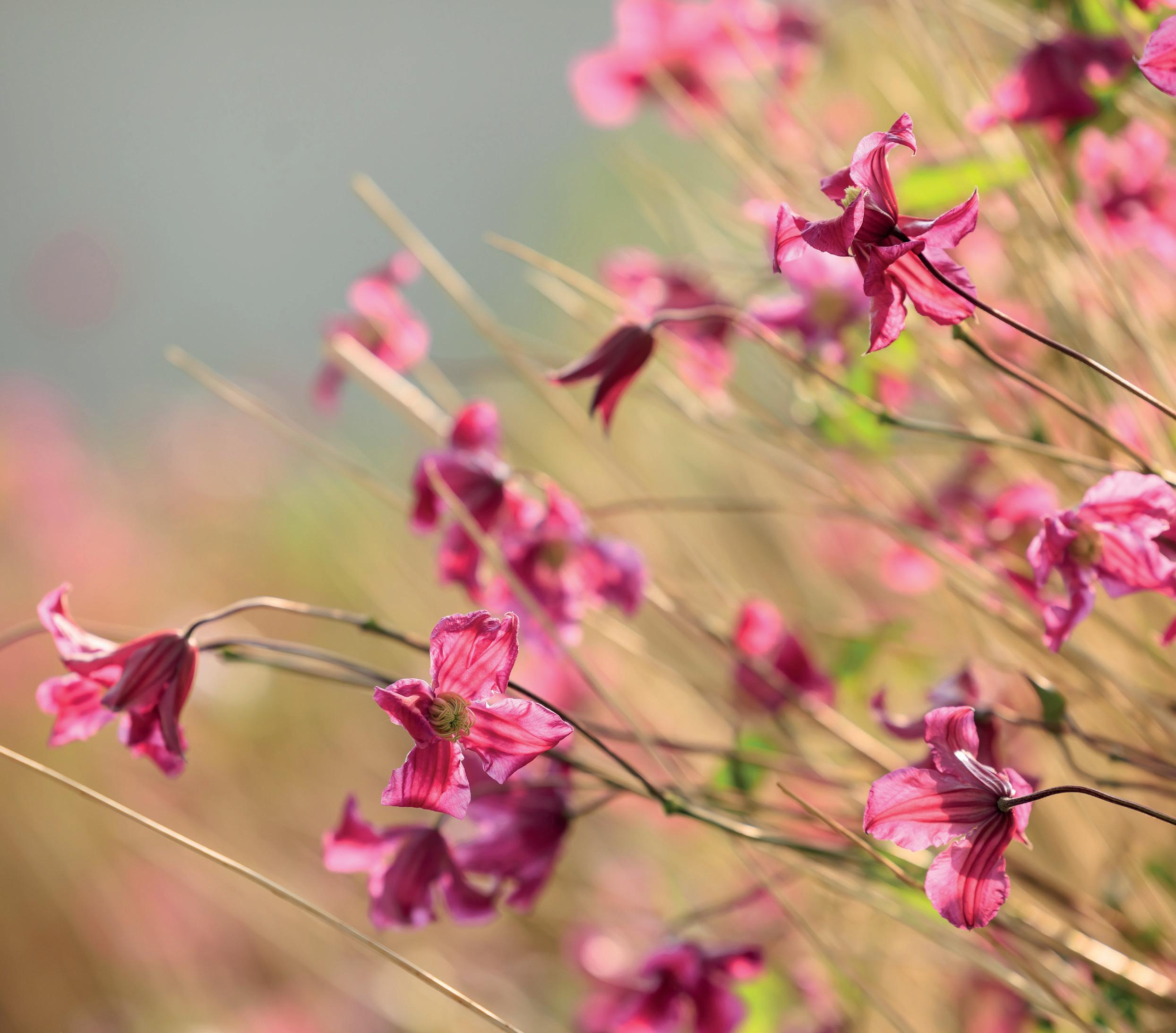
“Clematis is a strong flower that lasts a long time, as long as you know how to use it: where to cut, what to do with the leaves.”
- Dmitry Turcan, designer & Clematis fan
Do you want to learn more about our Clematis Amazing® Family? Download our free guide here.
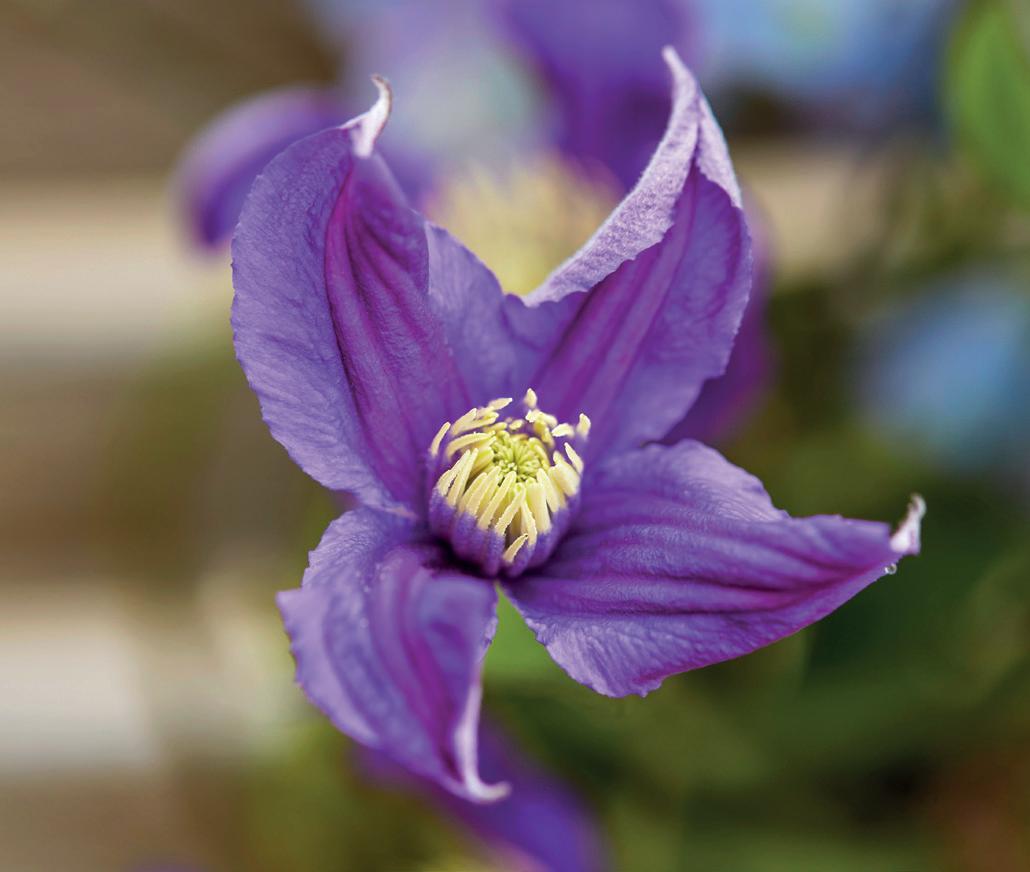
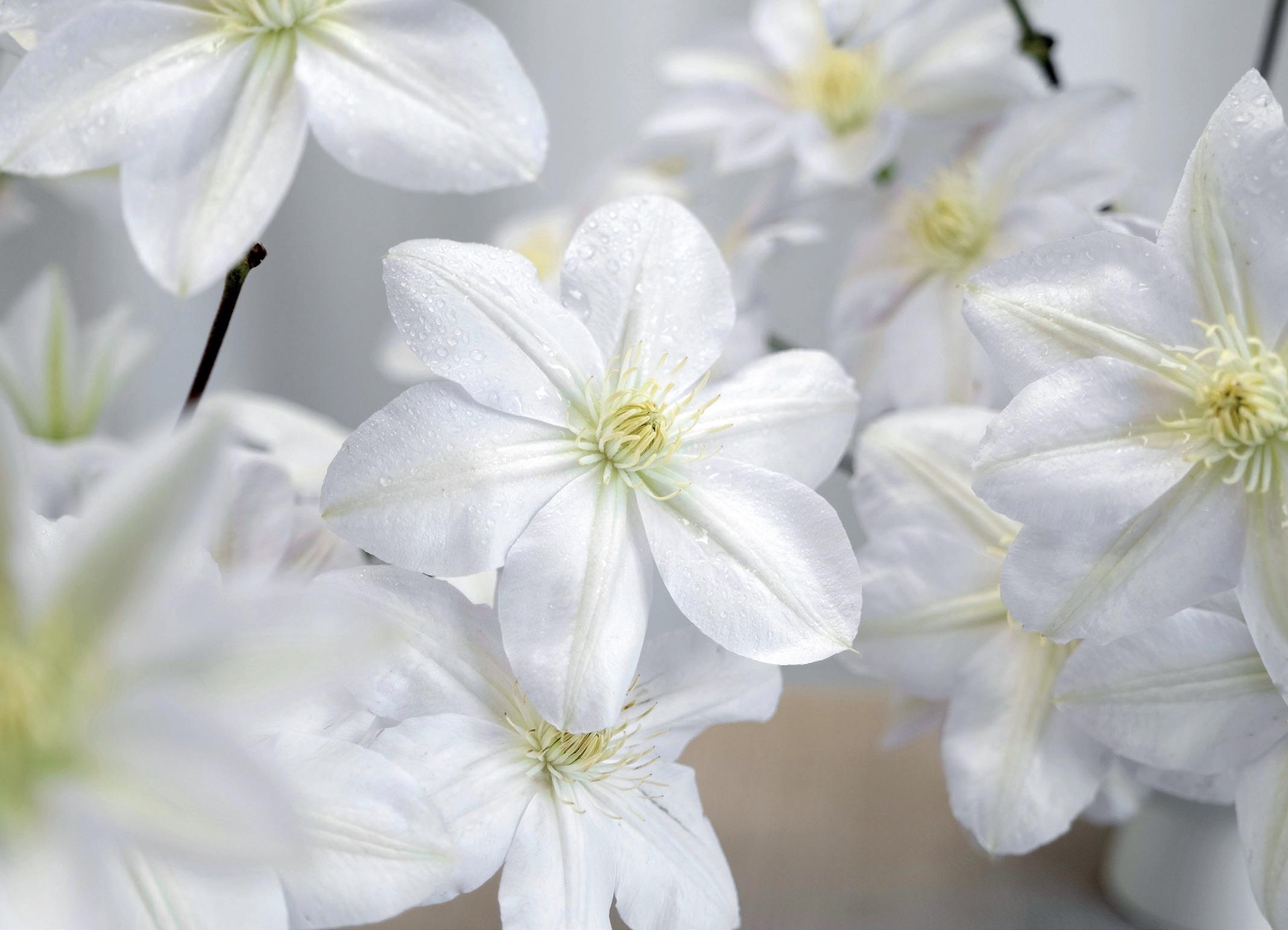
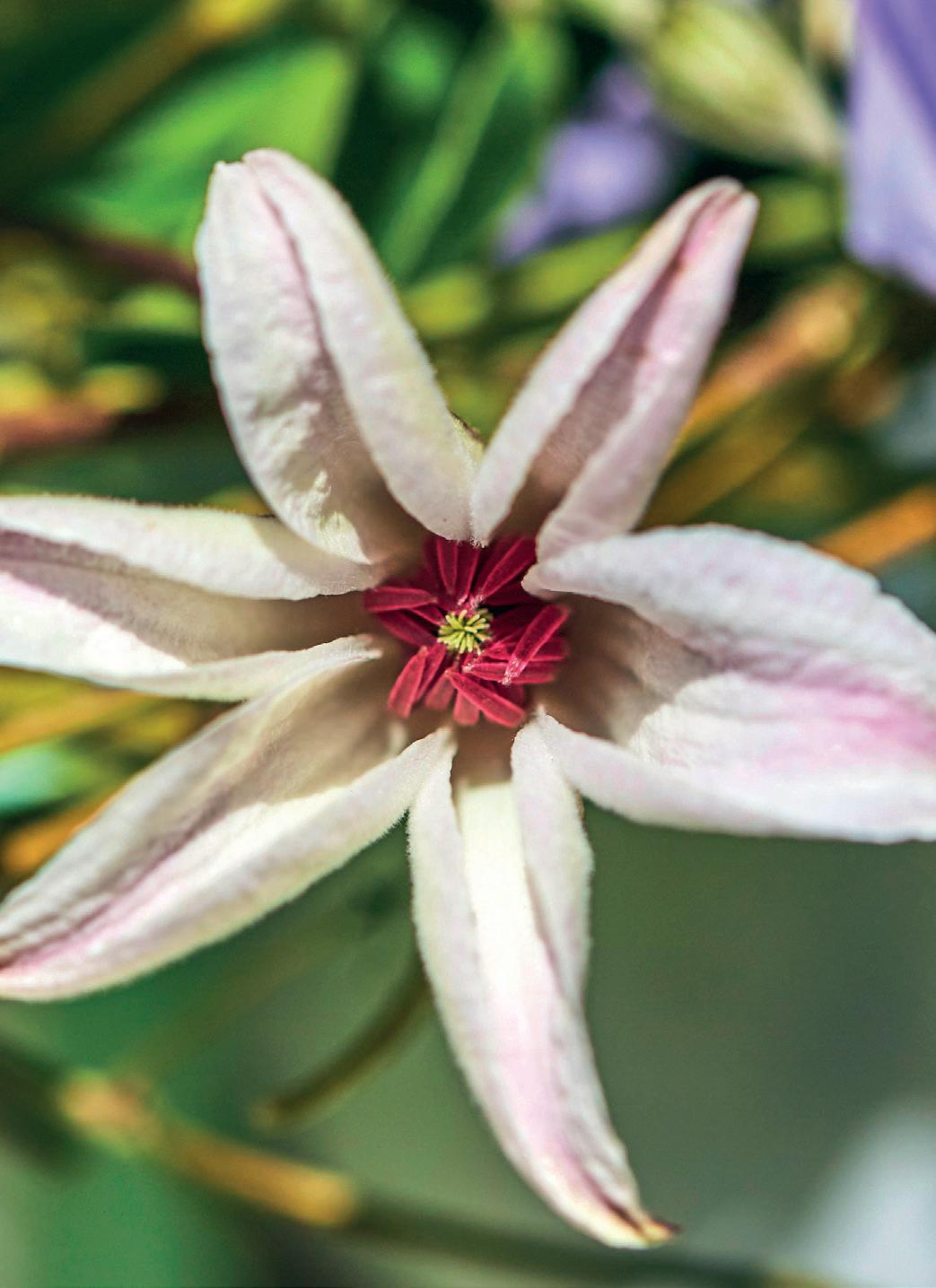
Instagram @clematisamazing
Facebook @clematisamazing

Ronald Bosch, an internationally experienced agronomist, shares his journey of passion and innovation at Marginpar Kenya and Ethiopia. His goal? To cultivate our flowers sustainably and strive for continuous improvement every day.
Now, this one’s for those who truly want to delve deep. Deep into the soil, as soil is Ronald’s expertise. So put on your thinking caps and discover what a week as an agronomist at Marginpar looks like. Need a little help?
Check out the glossary on page 66.
Ronald began the week assessing trials on two of our farms. His focus is on replacing chemical control with organic methods against soil-borne diseases. At MR Farm, he examined the impact of organic soil resetting and the addition of specific microorganisms. These trials contribute to our evolving Crop Establishment Manual, a living document of triedand-tested methods. This manual is part of the agronomy five-year plan to make the production process more sustainable.
At ST Farm, Ronald checked up on the newly planted Limonium trials, to find that after using the Crop Establishment Manual for planting, a second flush is now possible for some varieties! The yield has improved, and the grade split has become more favourable. He also passed the compost area. Last month, all the farm teams
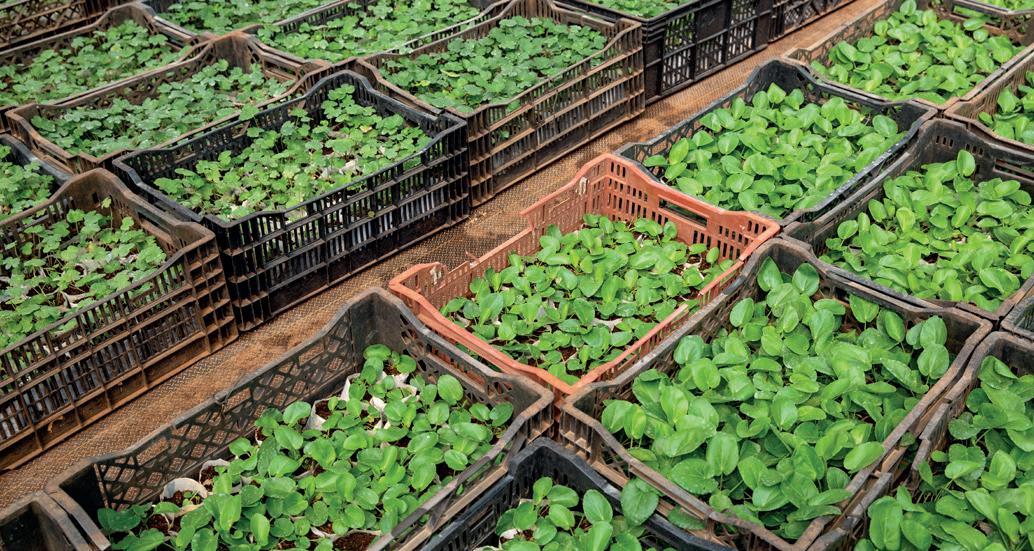
visited ST Farm to observe the process of vermiculture and biochar production and to get a refresher on compost production. A great example of our strategy of horizontal learning; we test on one farm and then roll it out on the other farms. The new organic inputs are important to maintain the level of soil life after the cutback of a crop. After building up the level of microorganisms in the soil, less fertiliser is required.
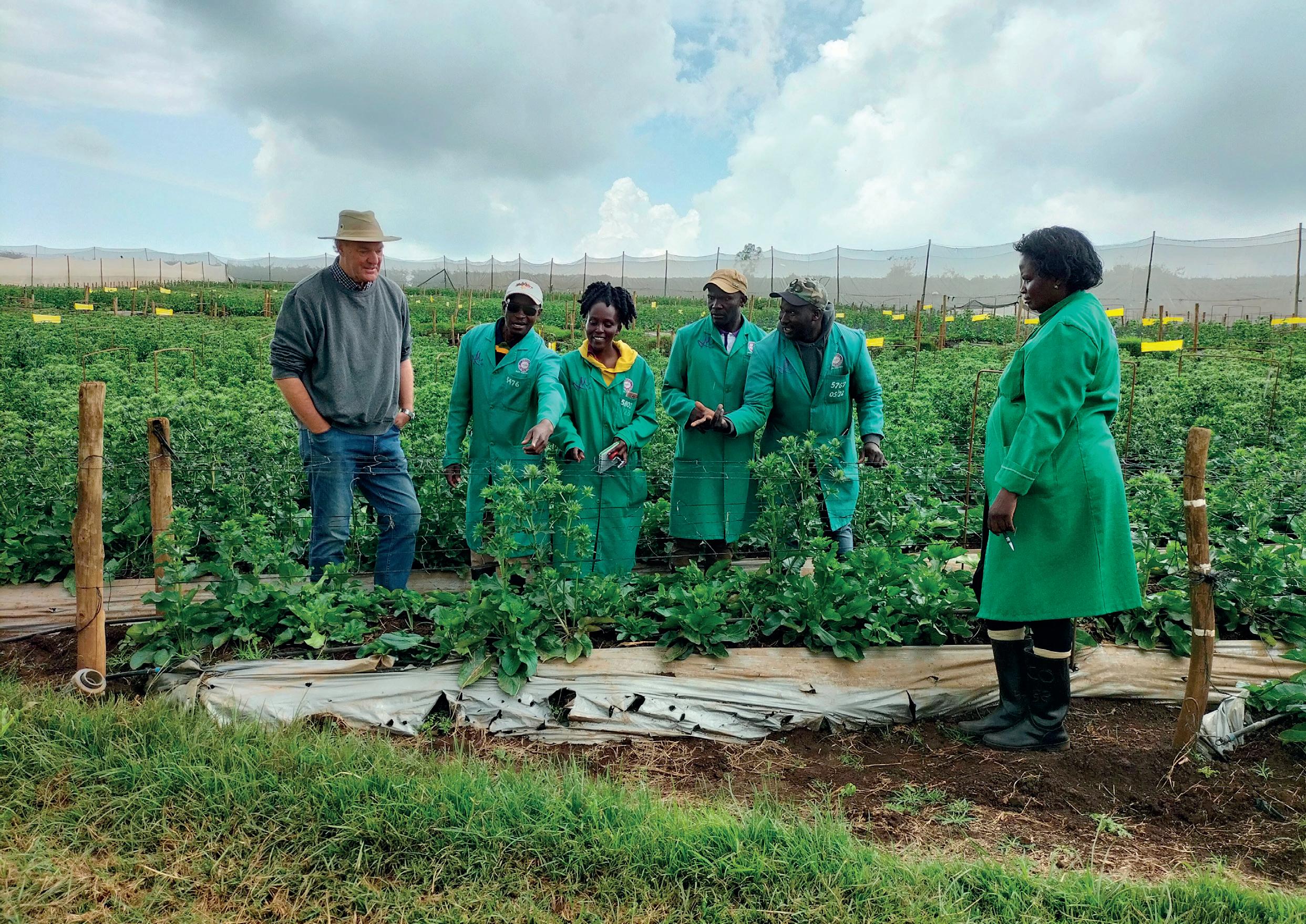
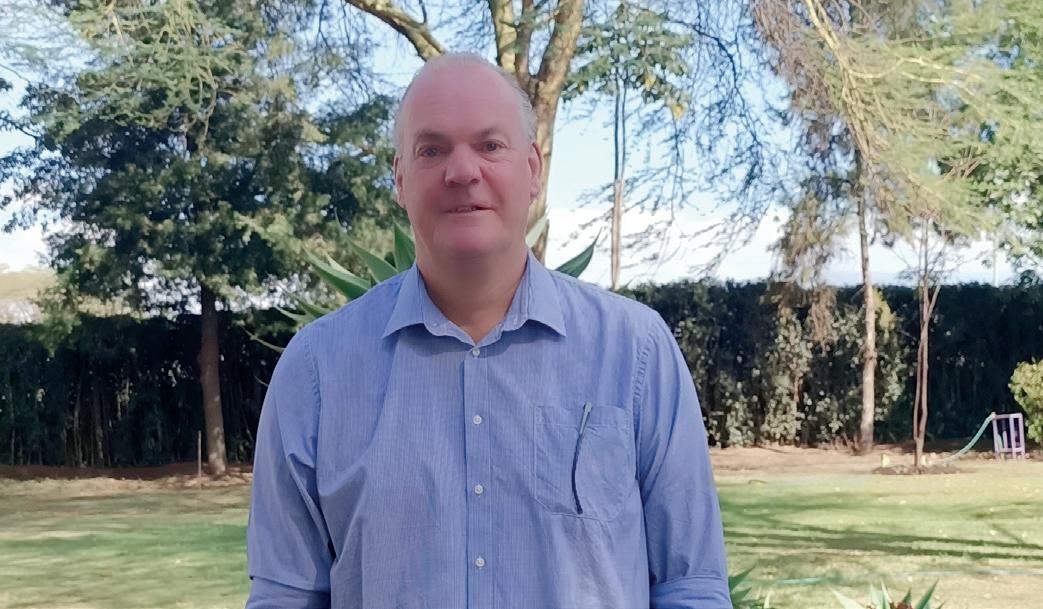
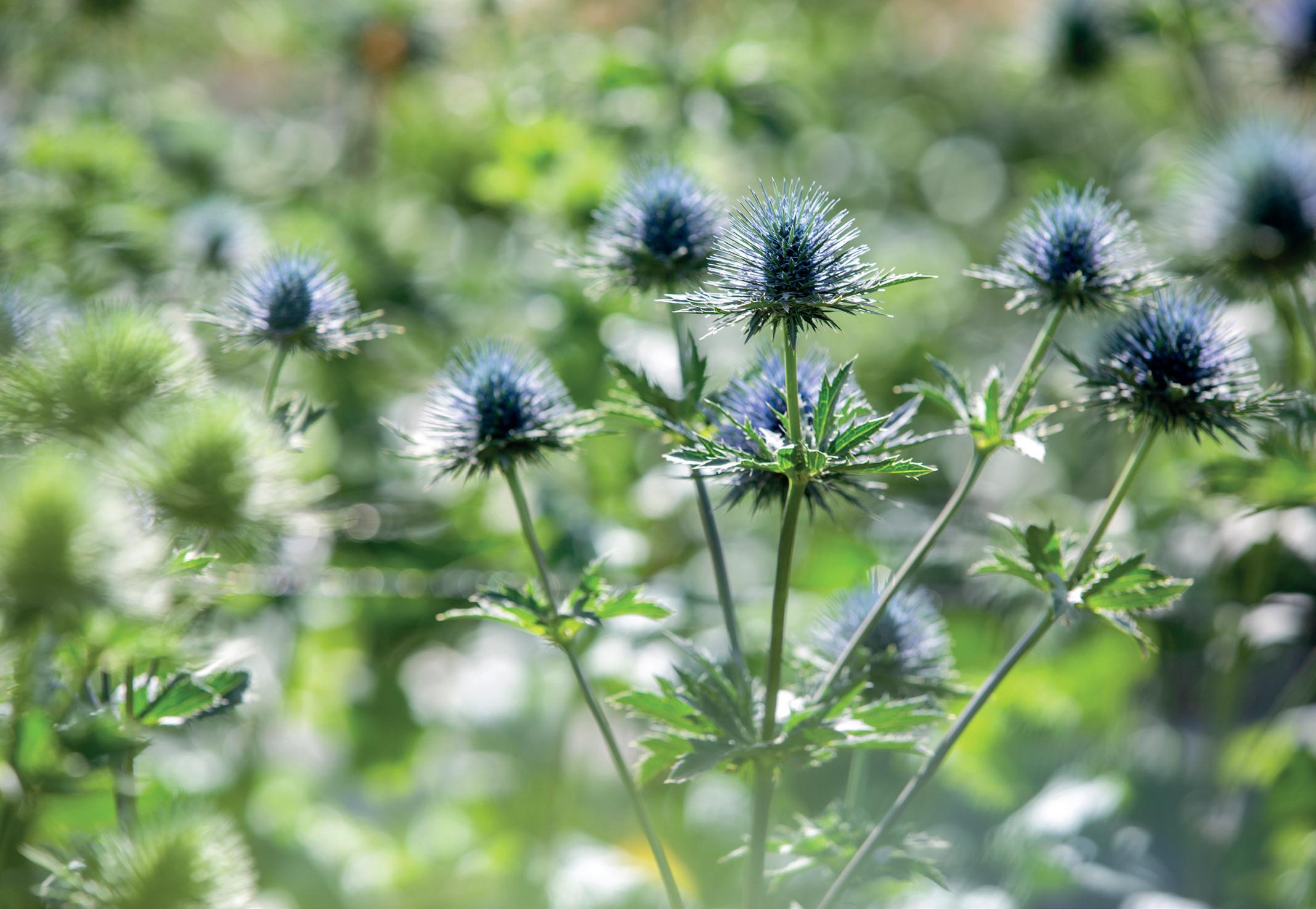
In the quest for continuous improvement, Ronald immerses himself in a diverse range of projects. And he definitely doesn’t do it alone. Ronald: “At the Armada meeting – which is a yearly meeting with all farm managers to discuss the challenges they foresee in meeting the Market Demand - we made a list of actions that might lead to production or quality improvement. Currently, we are working on 124 different actions, which we call Tags.”
“An interesting Tag is to determine the nematode population in the different farms. It is important to know that there are different types of nematodes. Saprophytic nematodes are the good type. They decompose organic material and recycle nutrients back into the soil; their presence indicates healthy soil. Plant-pathogenic nematodes on the other hand are
the bad type. They can cause different types of damage to the crops, for instance by providing entry points for fungi and bacteria, and reducing uptake of water and nutrients.” Ronald found that the soil’s biological activity (by the good nematodes) is low, and that plant-pathogenic nematode counts are high. A new program has started to monitor and manage nematodes in different crops.
A full day for Ronald and the team at Kudenga Farm. Here, new Eryngium and Gypsophila blocks have been planted according to the Crop Establishment Manual. Time to observe the progress! Ronald: “The Eryngium plants have established nicely, without any losses. Even though this also depends on the clone, it is a very promising observation. We also found that the production of Gypsophila has increased. We changed the light regime, sanitation protocol, and reduced fertiliser and growth hormone application. Improvement was also seen in the Gypsophila opening room.”
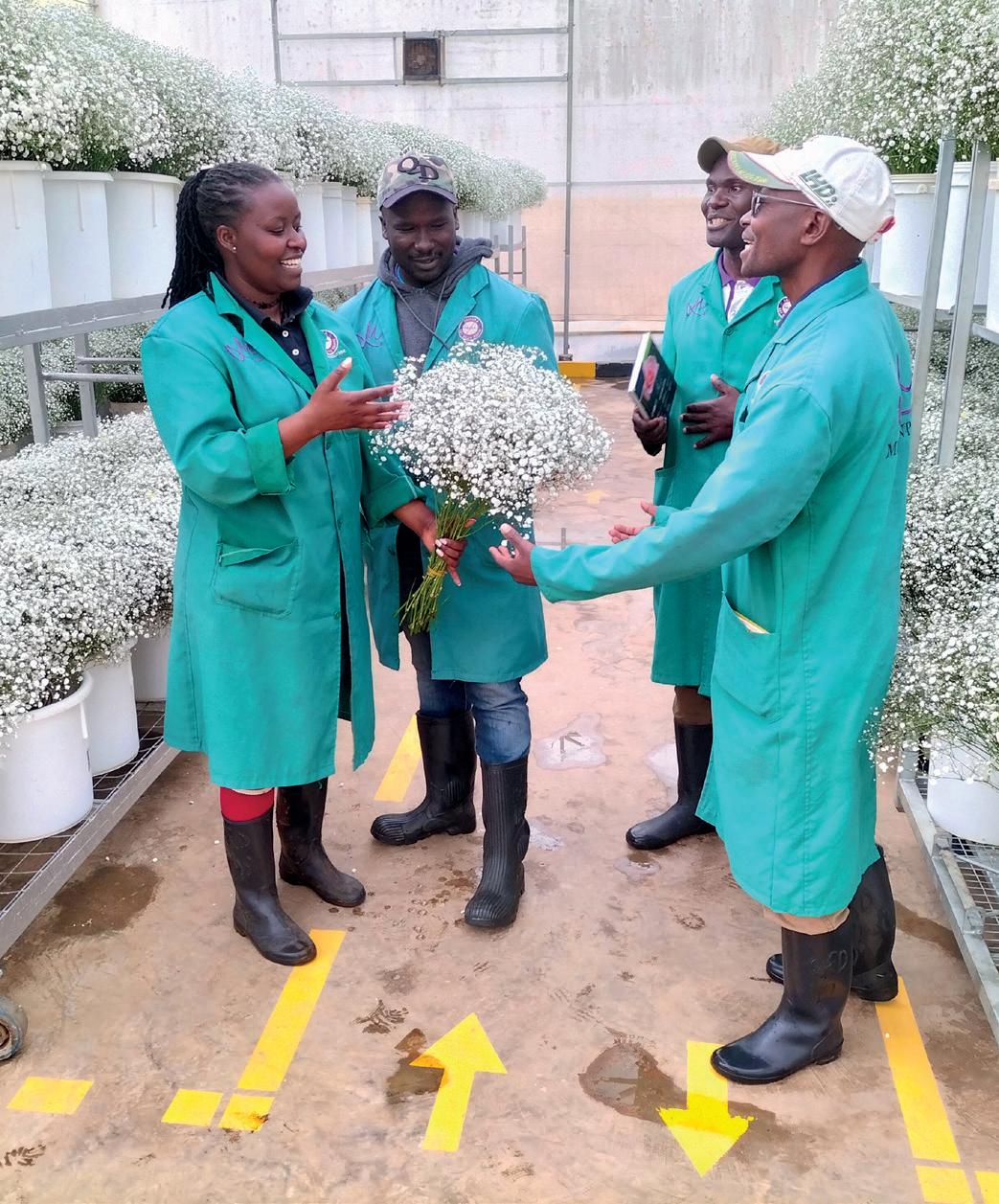
The afternoon was filled with check-ups on multiple projects, like Thrips and Whitefly control, establishment of the Astilbe mother stock, a quality concern with Ornithogalum, and a new way of packing that was suggested by the team a few months ago. Together, we embark on a journey of growth, leaving no stone unturned in our pursuit of excellence.
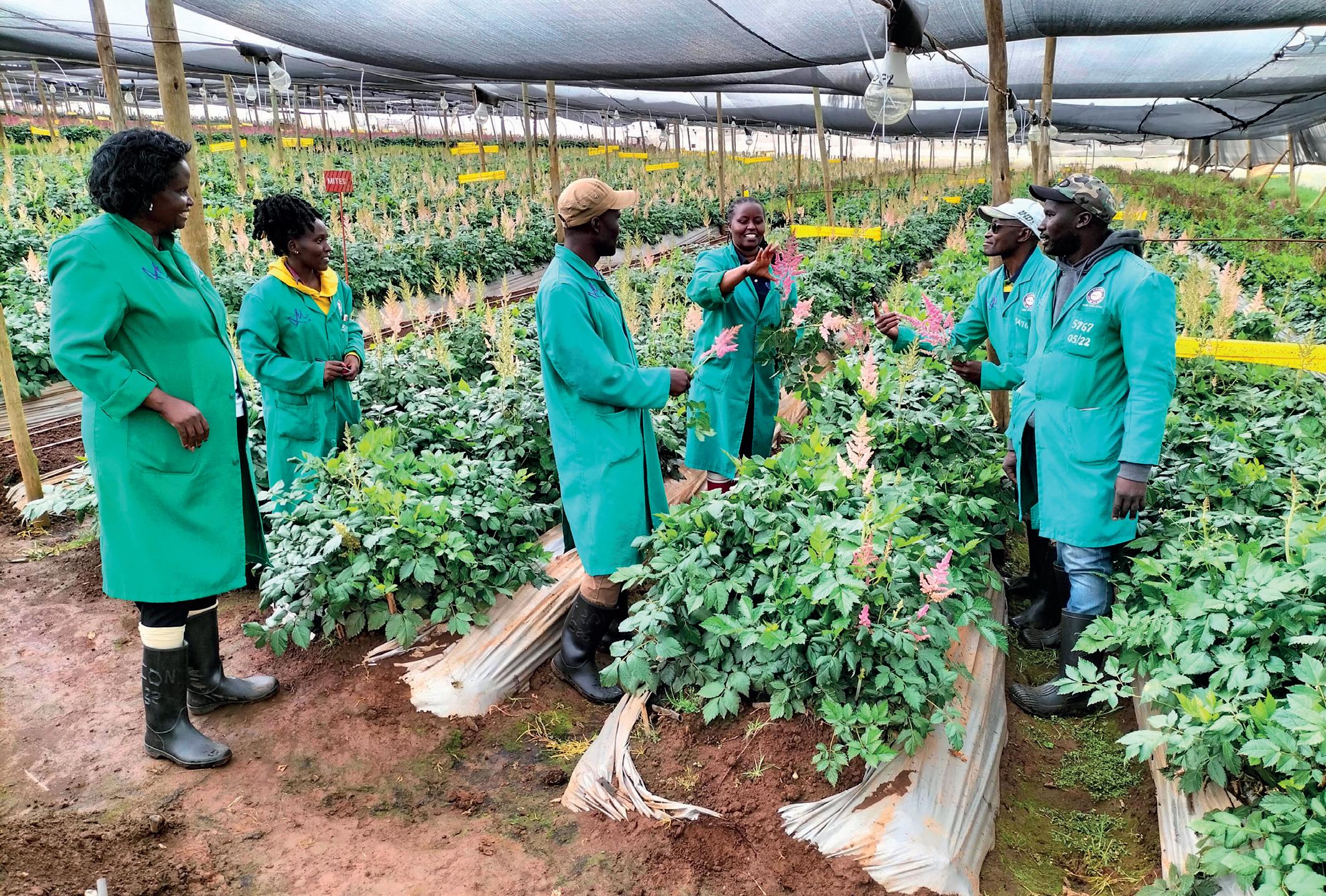
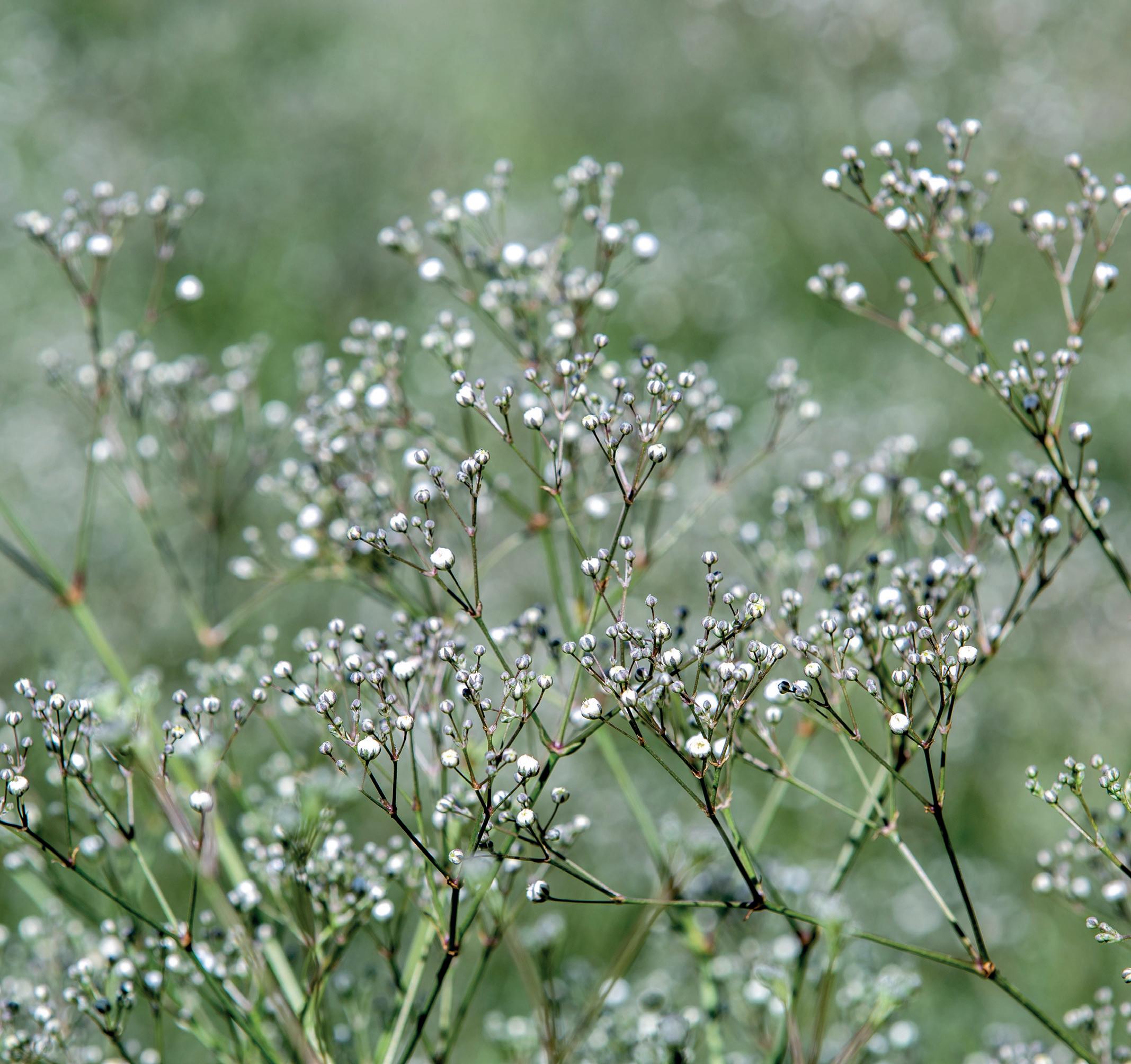
Ronald is all about sharing his knowledge. He spent his Thursday working on two more manuals; the Crop Protection Manual and the Soil Improvement Manual. The first describes the new quantitative scouting method that has been introduced. Ronald: “Currently, different management systems have been added for specific pests and diseases. We are aiming for biological or organic control methods first before we start looking for chemical solutions.” The Soil Improvement Manual is
used to describe the different activities that have to be carried out between uprooting an old crop and planting a new crop. Ronald: “This morning I worked on three different checklists that describe the sequence of the activities that need to be carried out. Each step is checked, and major steps are signed off by the farm management. The good thing about a checklist is that corrections can be made immediately, before the next step has started.”
With all that scouting data being collected by Ronald and the teams, it is key to store all of it in a proper database. This database is currently running for MR Farm. Ronald: “We are now starting to roll it out into the other farms. Farm maps have been collected and are now getting incorporated into the database. Secondly, we are working on a list which includes all the active ingredients, biologicals, and bio-stimulants we use; all will be incorporated into the scouting database.”
The afternoon was all about sugar. The relationship between sugar levels and stress levels in plants that is. Ronald: “Stress can be from biotic (living) and abiotic (non-living) origin. To assess sugar levels, we collected sap from various plant parts and at different growth stages, including leaves, stems, internodes, and roots. Ultimately, we determined that sap extracted from the
internodes provided the most consistent and reliable measure of sugar levels. Now, I have to do more tests and develop a manual. This can assist the farm teams in the early detection of stress in plants and they will therefore be able to correct the issue early on.”
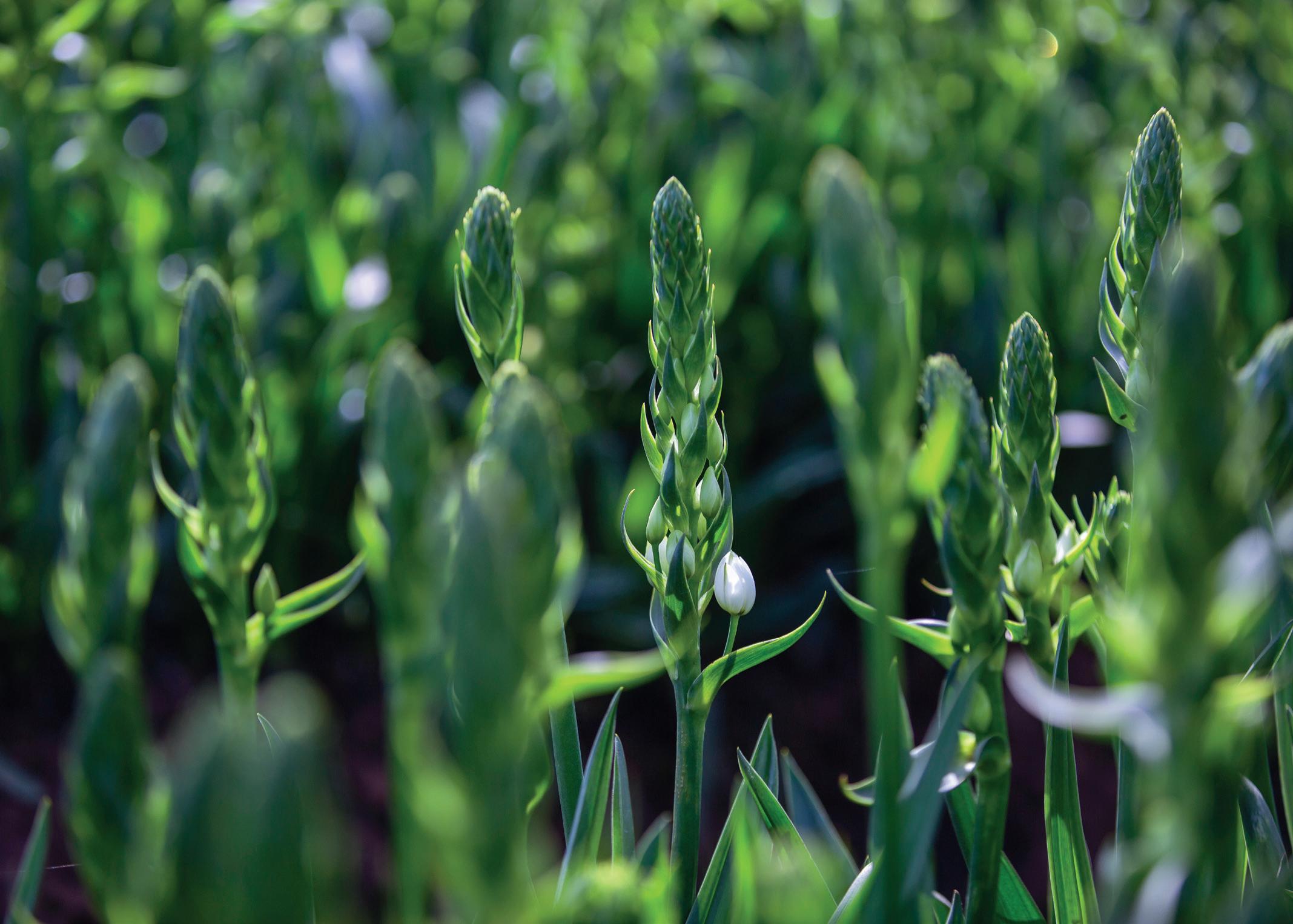
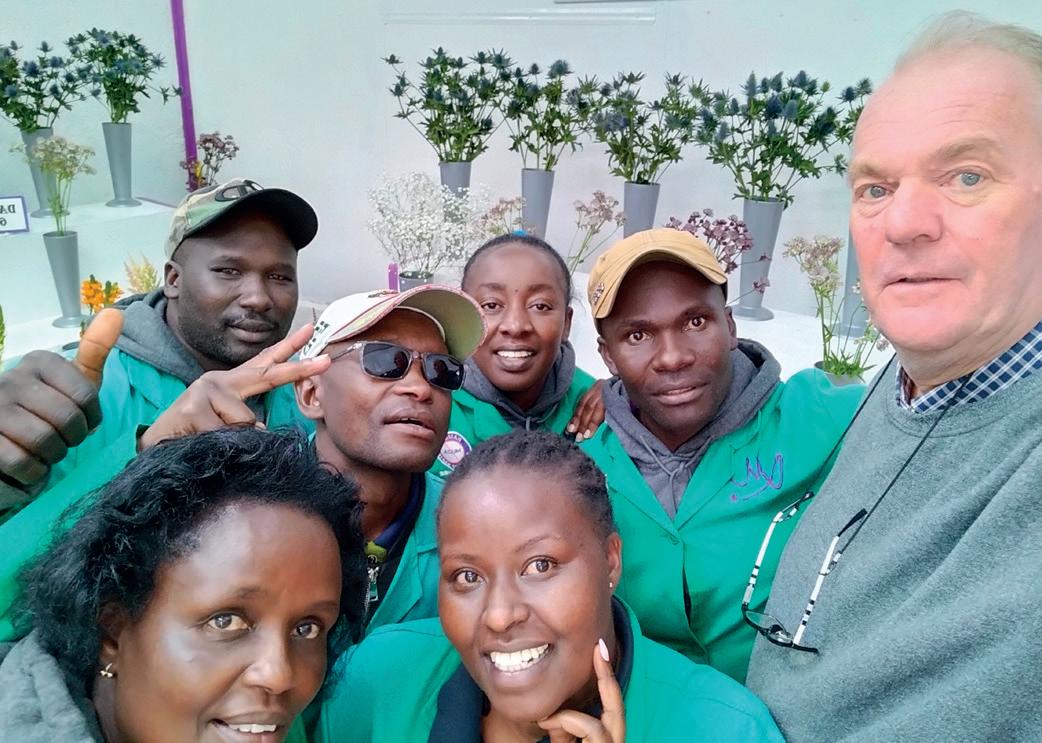
The week draws to a close as Ronald embarks on a Saturday morning literature study. He researches the impact of cover crops on the soil bio life, soil organic matter and earthworms. Secondly, what is the best method to terminate a cover crop? And what will be the impact on the planning for the crop over a longer period of time?
We can consider ourselves very lucky to have such a knowledgeable and dedicated agronomist on our team. Ronald explores the frontiers of innovation, unlocking nature’s mysteries, and sculpting a more sustainable future for Marginpar. Together, we embrace the beauty of our flower-growing craft, intertwining nature’s splendour with our unwavering commitment to excellence and sustainability.
Agronomist
An expert in agriculture who focuses on studying and improving crop production. Their goal is to optimise crop health and productivity while considering environmental sustainability and economic viability.
Biochar
A type of charcoal that is produced by heating organic biomass. This carbon-rich material enhances soil fertility, moisture retention, and nutrient availability.
Biologicals
Products or substances used for pest management, that are derived from living organisms, such as bacteria, fungi, viruses or natural compounds.
Bio-stimulants
Substances or microorganisms that are applied to plants or the soil to enhance plant growth or performance. They improve nutrient uptake, enhance stress tolerance, and promote overall plant health.
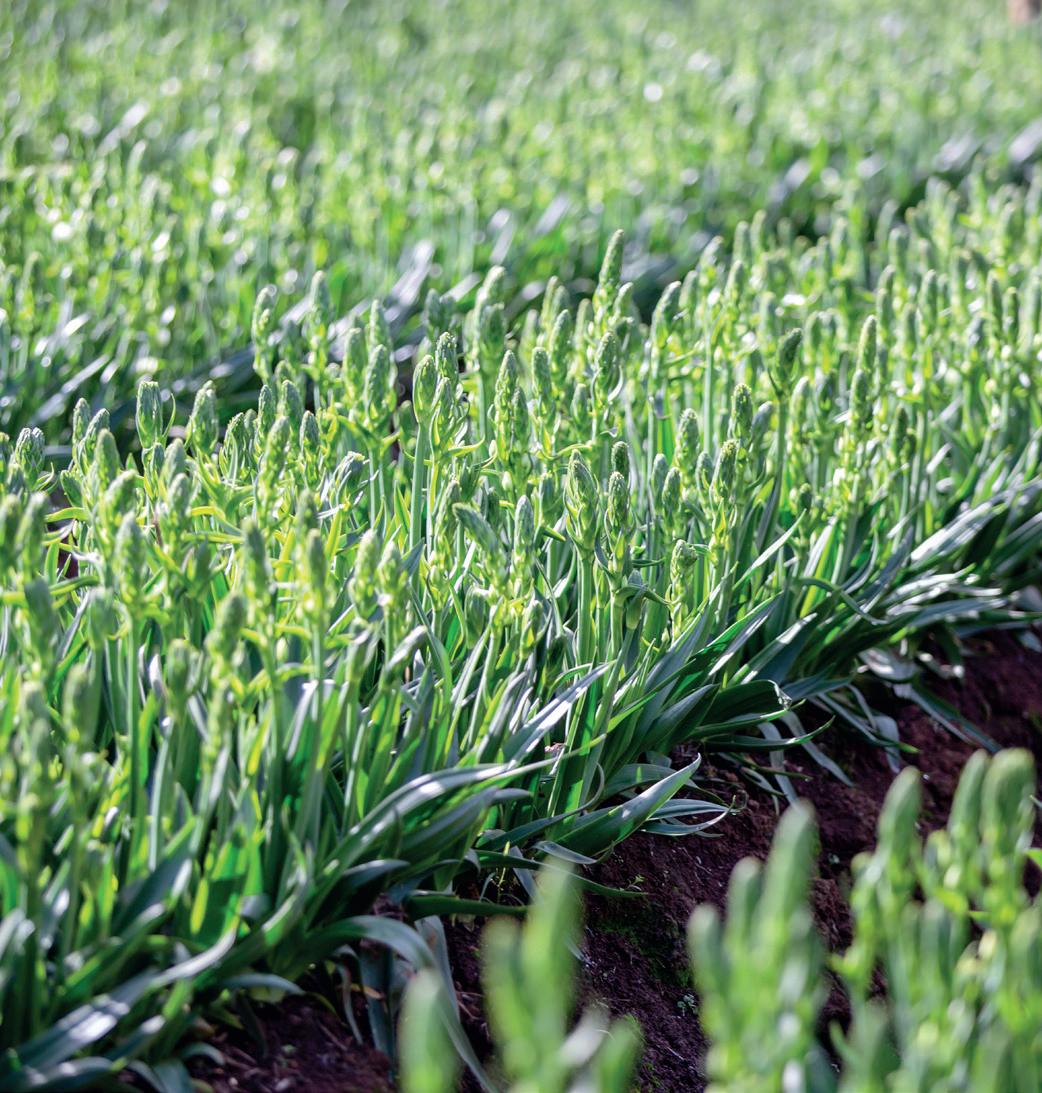
Clone
A genetic copy of a parent plant. The resulting clone will exhibit the same genetic makeup as the parent plant, including traits such as flower colour, growth habit and disease resistance.
A dark substance that is created through decomposition of organic materials. Microorganisms, such as bacteria and fungi, break down the organic matter into a nutrient-rich soil enhancer.
Flush
A type of plant that is deliberately grown to provide benefits to the soil and the overall ecosystem, rather than for harvest or sale.
Grade split
A period of abundant flower production, during which harvest takes place.
Mother stock
The categorisation of flowers based on their length and weight.
Nematode
A group of plants that are maintained for the purpose of propagating new plants. This ensures we can deliver consistent and uniform flowers.
Organic soil resetting
Roundworm (typically microscopic) that can live in soil, freshwater, or marine environments. Different types either benefit plant health, or harm it
Thrips
A process in which the soil’s natural balance and fertility are restored using organic methods and techniques.
Vermiculture
Small insects that feed by piercing plant tissue and sucking out sap, leading to distorted growth, reduced crop yields, and sometimes transmission of viruses.
Whitefly
The practice of using earthworms to decompose organic waste materials into nutrient-rich compost.
Small sap-feeding insects that typically stick to the undersides of leaves. Their feeding can weaken plants, cause yellowing and wilting and transmit plant diseases.
Ronald is not the only one who kept a diary of his week! Discover how we go the extra mile to provide you with the finest quality flowers and ensure that our customers can always depend on us.
Have you always been curious to know how me manage to ensure that your blooms arrive as vibrant as the day they were picked? Then you’ll want to read the diary of our Quality Manager Werner van Sprang. He is based in Aalsmeer, but is often found in Kenya and Ethiopia to support the post-harvest teams. In this diary he’s taking us on a week-long trip to Kenya!
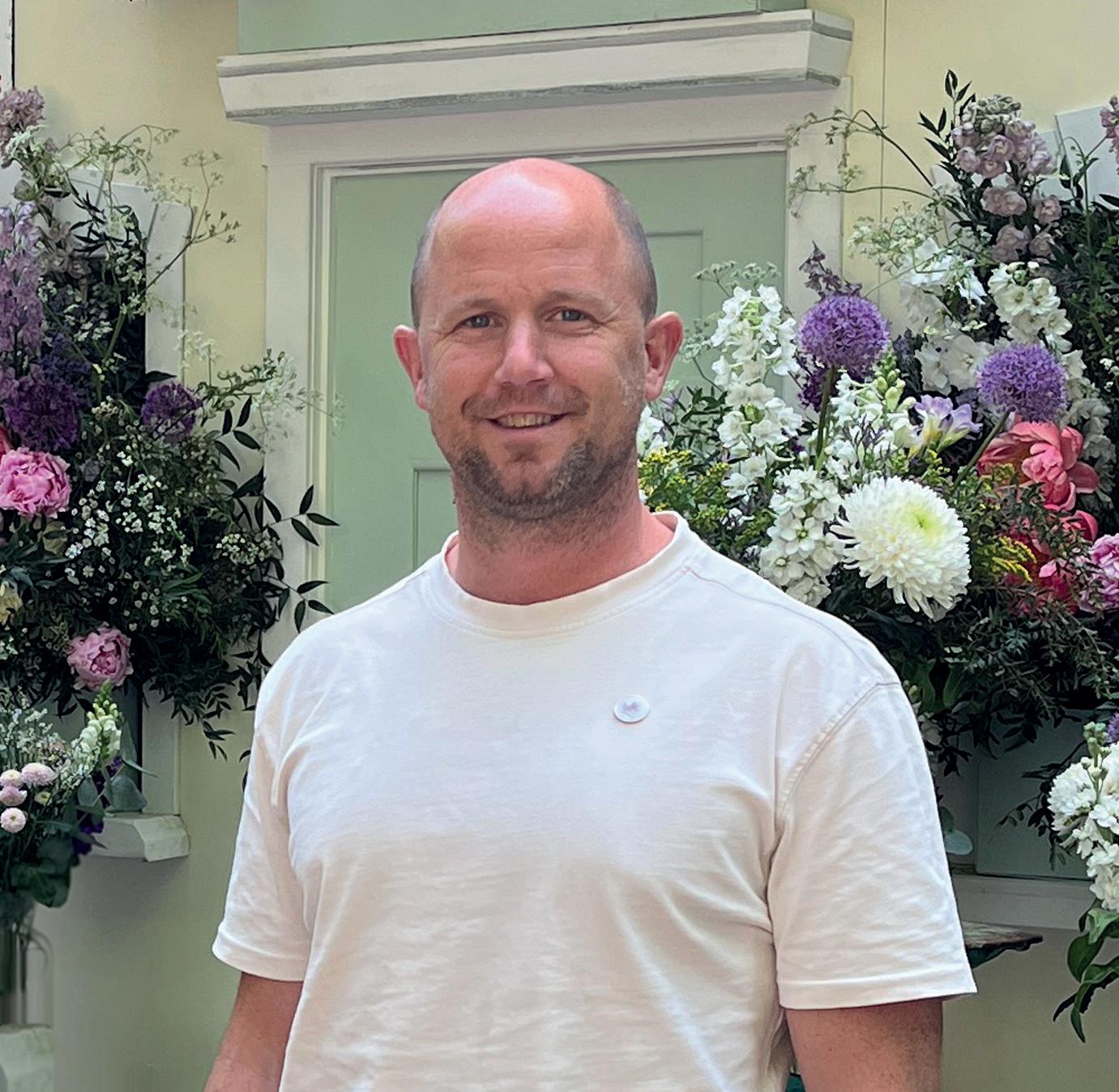
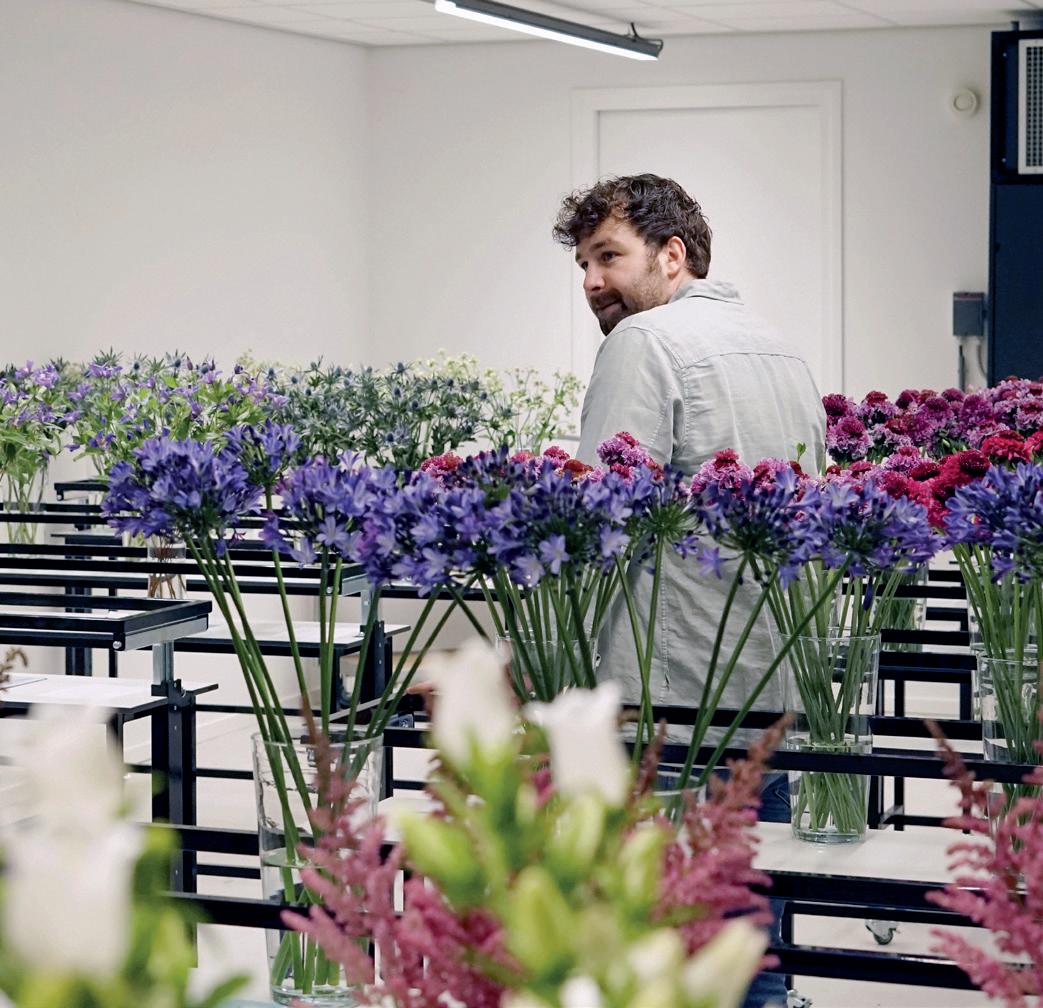
A little snippet:
Friday: Bondet Farm
“As part of our sustainability journey, we have been conducting sea freight tests for several months now. We do this primarily with products from the Bondet Farm, specifically Eryngium and Astrantia. Now, of course, the most obvious concern is the time it takes to travel by sea. Flowers transported by air freight take just a few days from harvest to arrival in the Netherlands. Sea freight takes over 30 days. How do we keep the flowers fresh all this time? For that, we are collaborating with Chrysal.”
In the world of flower trade, cultivating strong relationships with customers and partners is an ongoing pursuit. Jamie den Haan, Account Manager EU, takes us along on a busy week in his life. As a pivotal link between Sales, Logistics, and Marketing, Jamie plays a crucial role in maintaining a steady flower flow to our customers, even in the face of unforeseen challenges.
A glimpse into his week:
Monday: building partnerships
A visit from Hoek Group was scheduled in the afternoon. Jamie emphasises the importance of maintaining communication with partners about both current and future ‘standing orders’, as we call our pre-arranged, ongoing agreements regarding the purchase and supply of a specific set of flowers on a weekly basis. Jamie: “We are building partnerships with our customers, fostering a relationship that we mutually engage in and strive to strengthen across various aspects, including Sales, Logistics, and Marketing.”
Eager for more?
Read his whole story here:
Curious about how we do that?

Read all about it here:

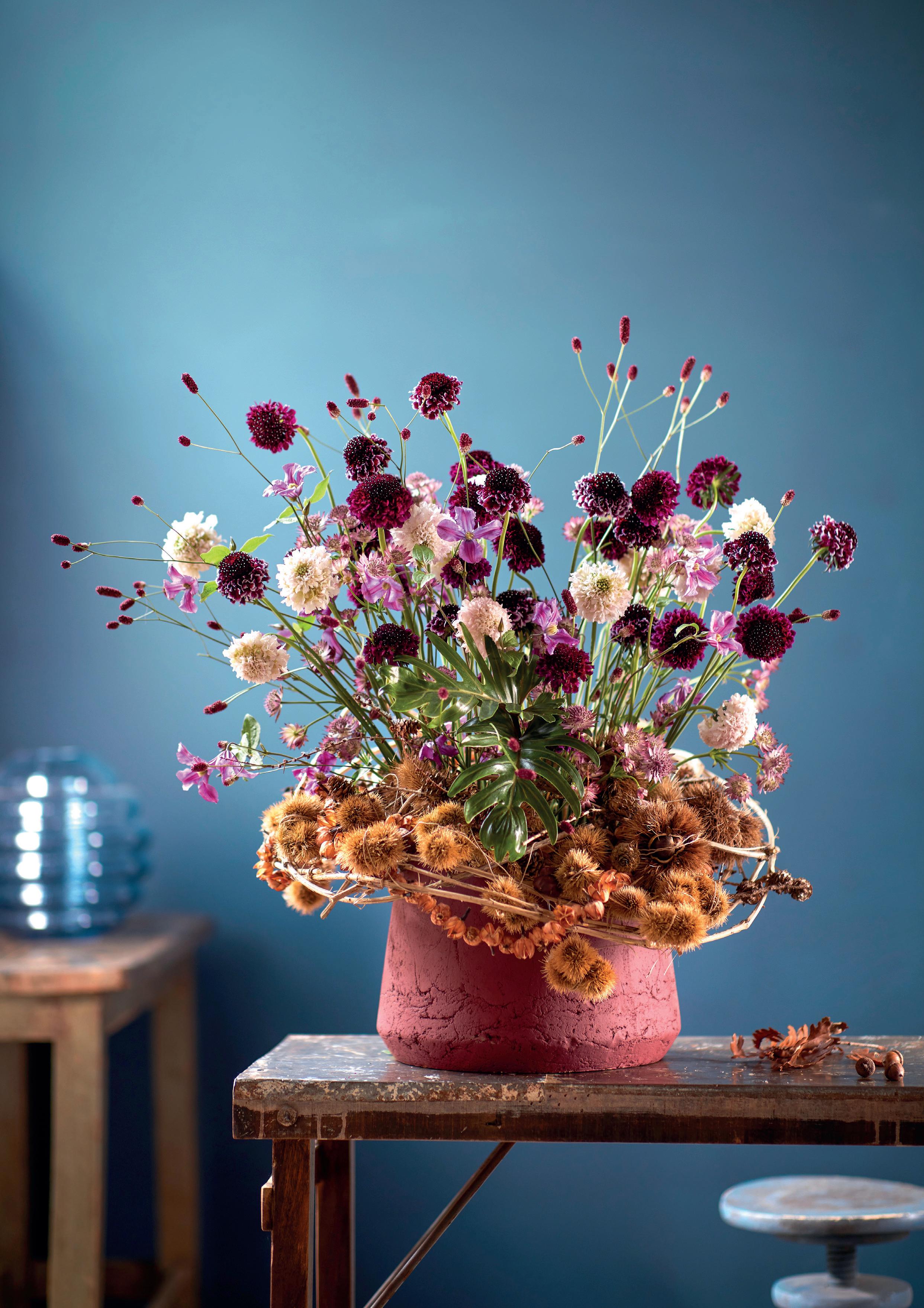
WHEN ASKING FLORISTS, DESIGNERS, AND BUYERS ABOUT THEIR OPINIONS ON MARGINPAR FLOWERS, THE TWO MOST COMMONLY HEARD RESPONSES ARE ‘HIGH QUALITY’ AND ‘UNIQUE ASSORTMENT’. AND WE ARE QUITE PROUD OF THAT. BOTH ASPECTS HAVE BEEN HELD IN HIGH REGARD SINCE OUR ESTABLISHMENT IN 1988, BUT OUR ASSORTMENT HAS TRULY TAKEN OFF SINCE 2010, NOW BOASTING OVER 100 DIFFERENT VARIETIES OF SUMMER FLOWERS
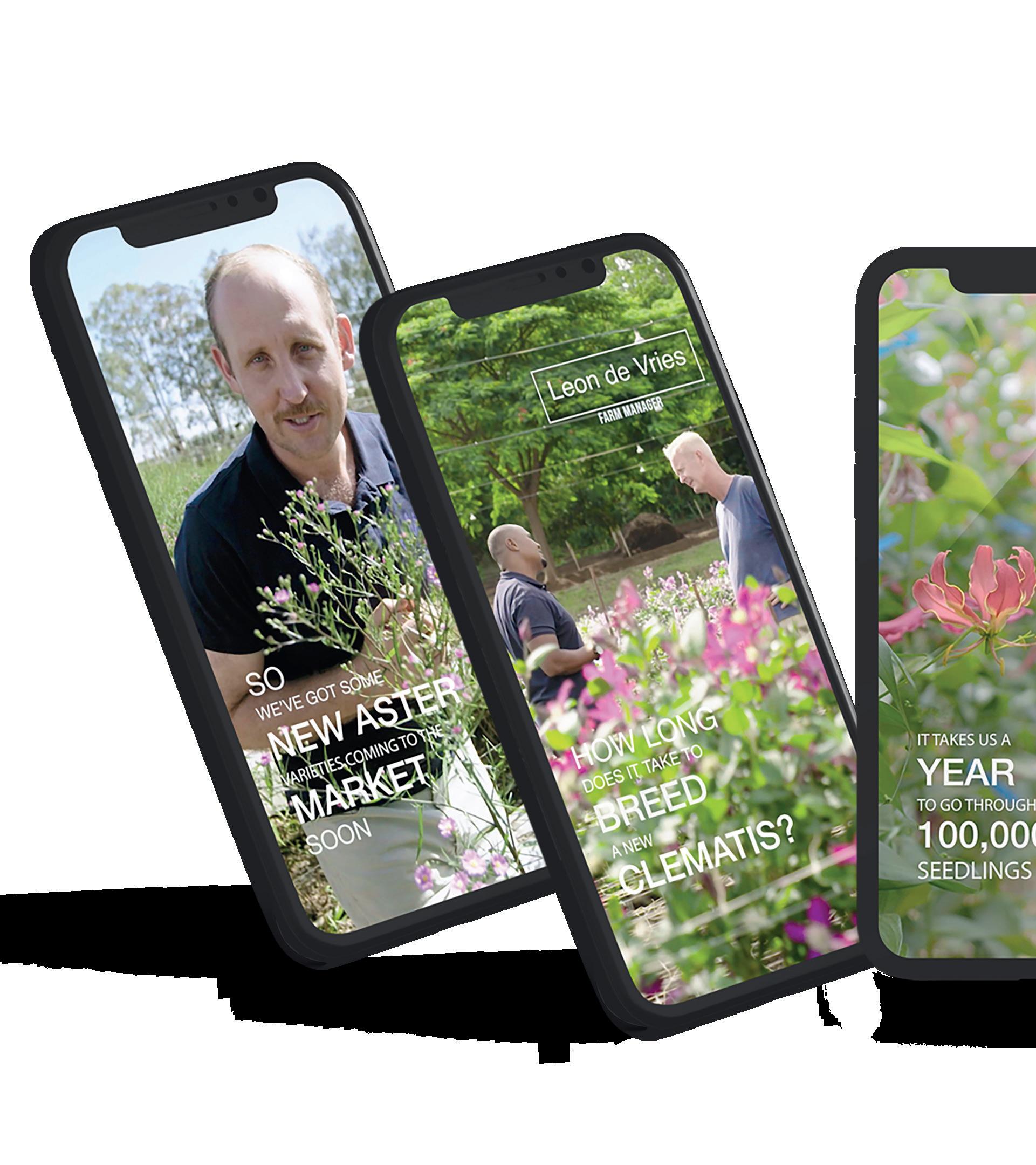
OUR R&D TEAM IS ALWAYS ON THE LOOKOUT FOR EXTRAORDINARY FLOWERS AND WORKS CLOSELY WITH VARIOUS BREEDERS. UNUSUAL SHAPES, COLOURS, LENGTHS, AVAILABILITY OUTSIDE THE EUROPEAN SEASON, OR A CUT FLOWER PREVIOUSLY KNOWN ONLY AS A PLANT – THESE ARE THE TRAITS OF MARGINPAR FLOWERS. A SIGNIFICANT PORTION OF OUR RANGE IS EXCLUSIVELY AVAILABLE THROUGH US.
SO, WHICH FLOWERS ARE WE TALKING ABOUT? AND WHAT MAKES THEM SO SPECIAL?
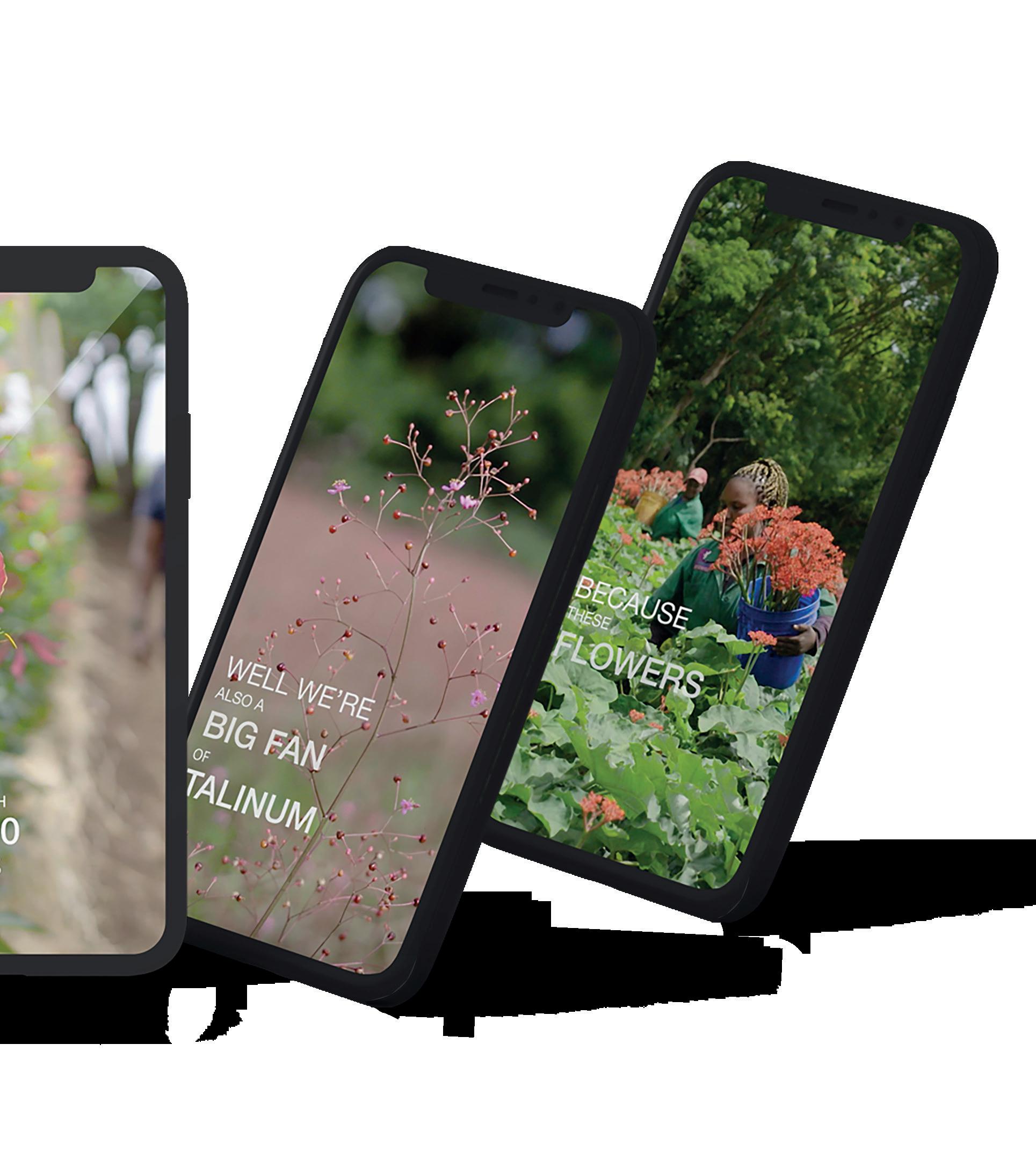
Perhaps the most well-known is the Clematis Amazing® family. Since its introduction in 2006 as a cut flower at the flower auction in Aalsmeer, this flower has become beloved by many florists worldwide. The family has since grown to 14 varieties, with new members being added regularly. However, this expansion doesn’t happen effortlessly. Farm Manager Leon de Vries discusses the challenges in this video, shot on the test fields in Tanzania:

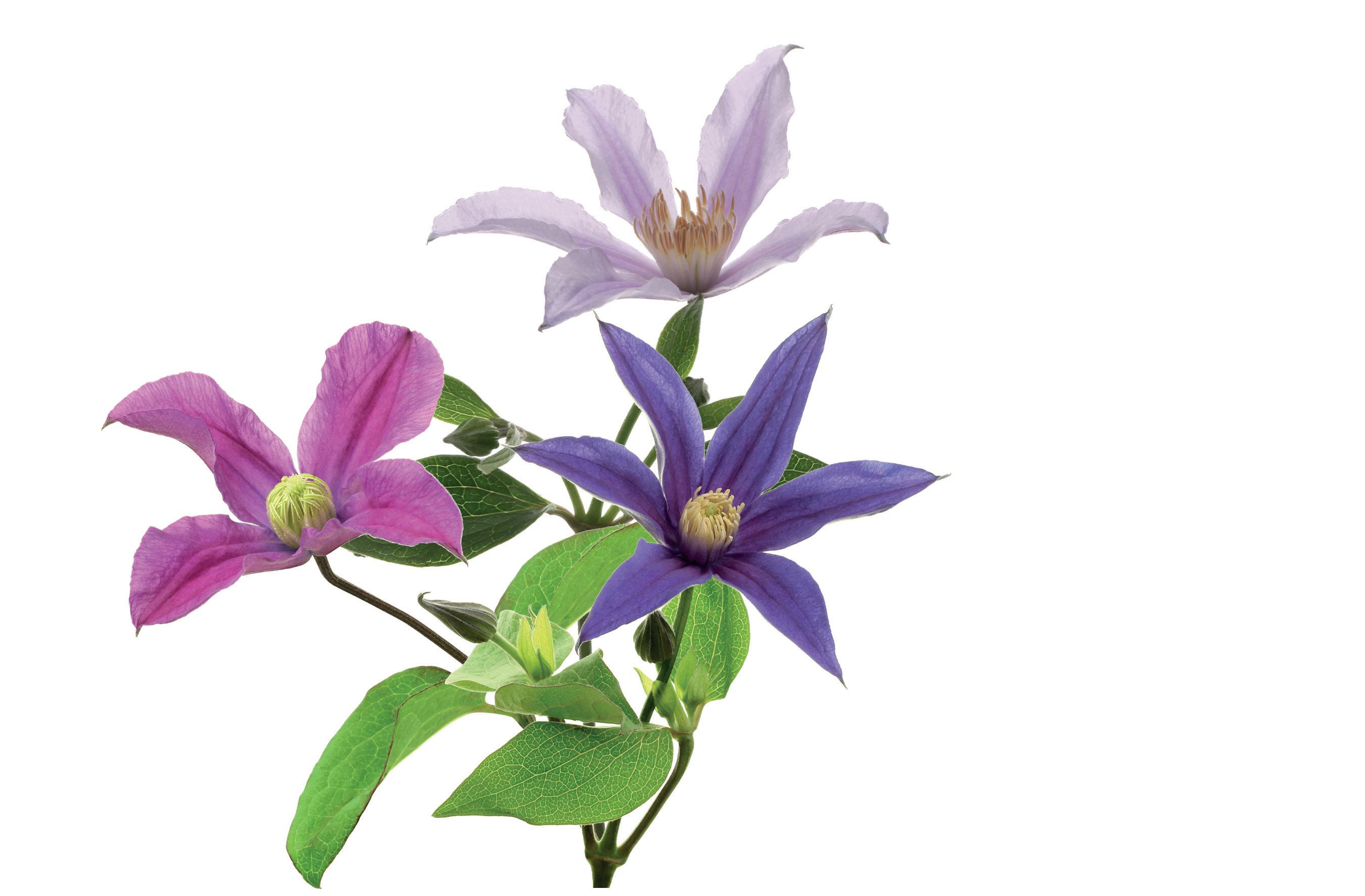
Want to see more? Our floral investigator Emanuel talks about the importance of the perfect harvesting moment in this video:
Ps. Clematis may appear delicate but is incredibly resilient—provided you take good care of it, of course. Check out our care tips here:





One of the flowers that has been on the fields of Marginpar the longest is the Eryngium. The Questar® series consists of several blue, one white, and one blue/ green thistle. The latter is the only one of its kind! The series is named after celestial bodies. Want to know why? Read the story from our breeder here:
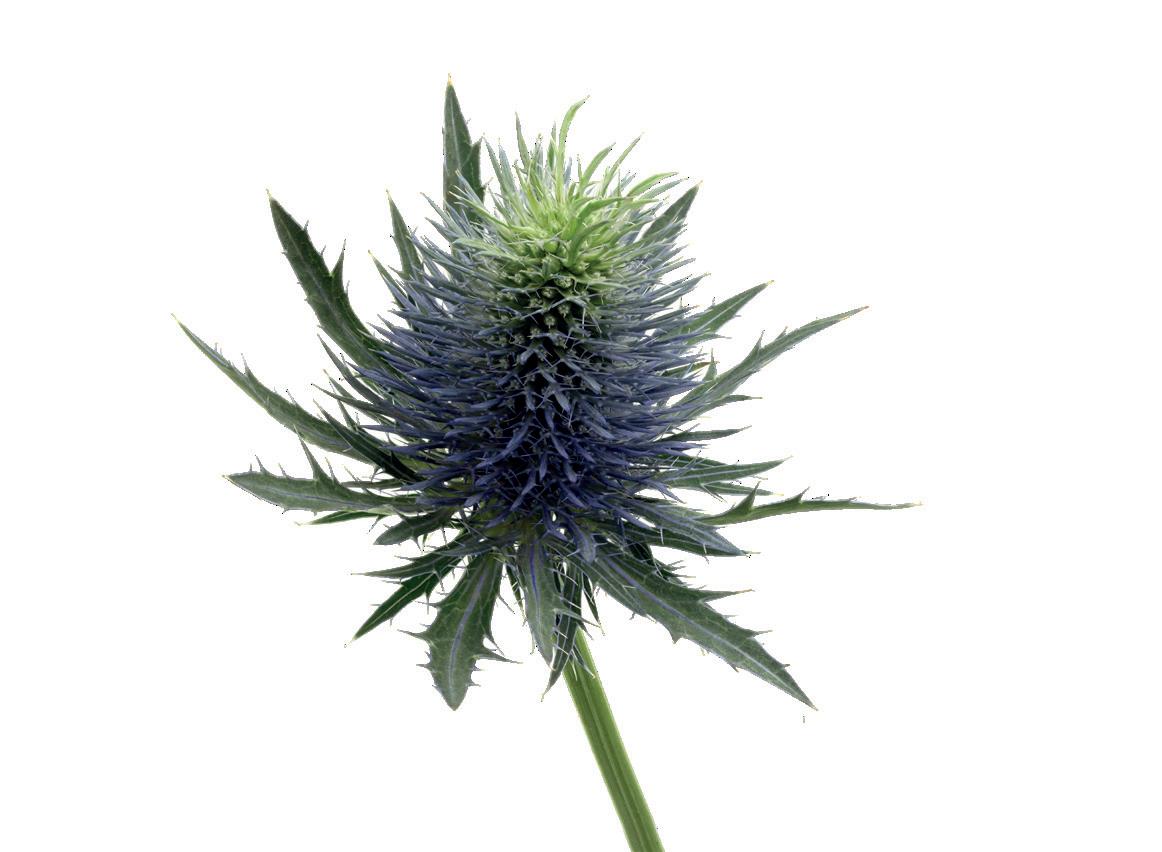
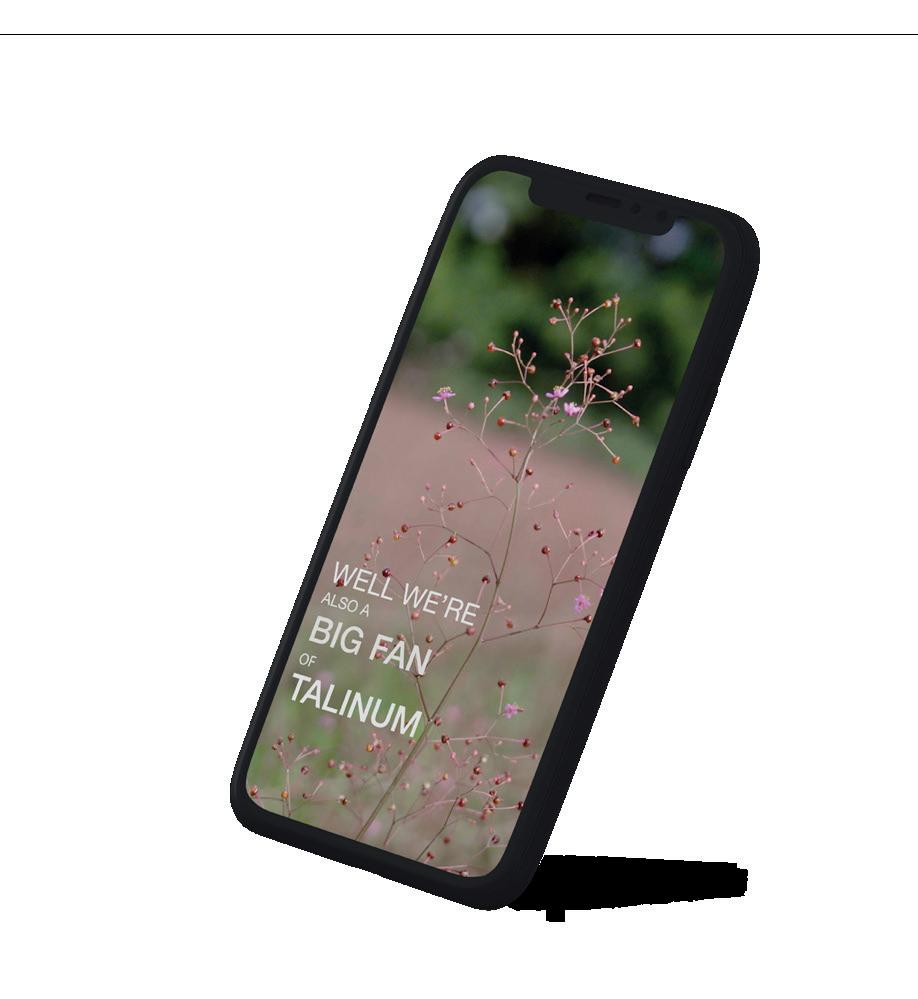
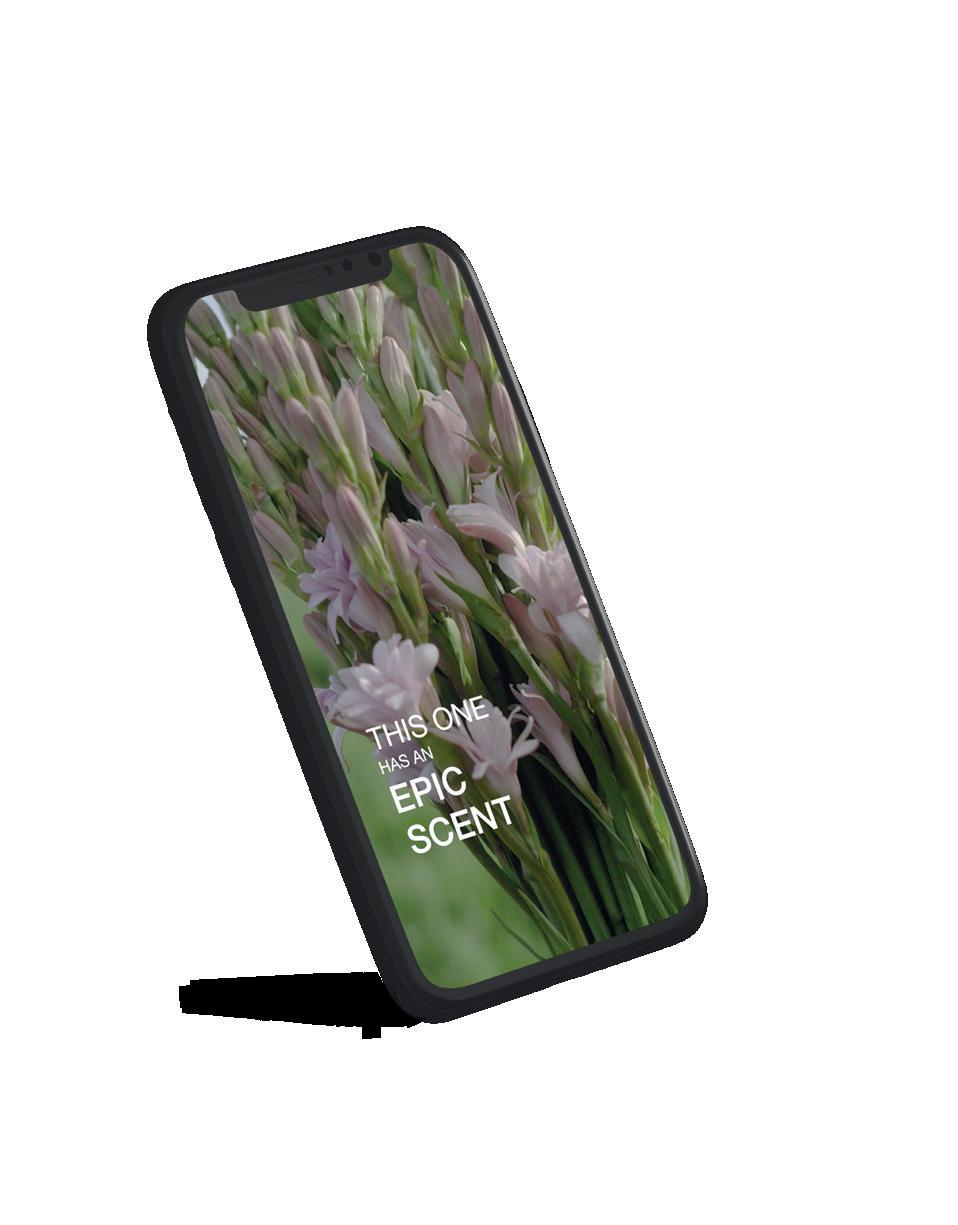
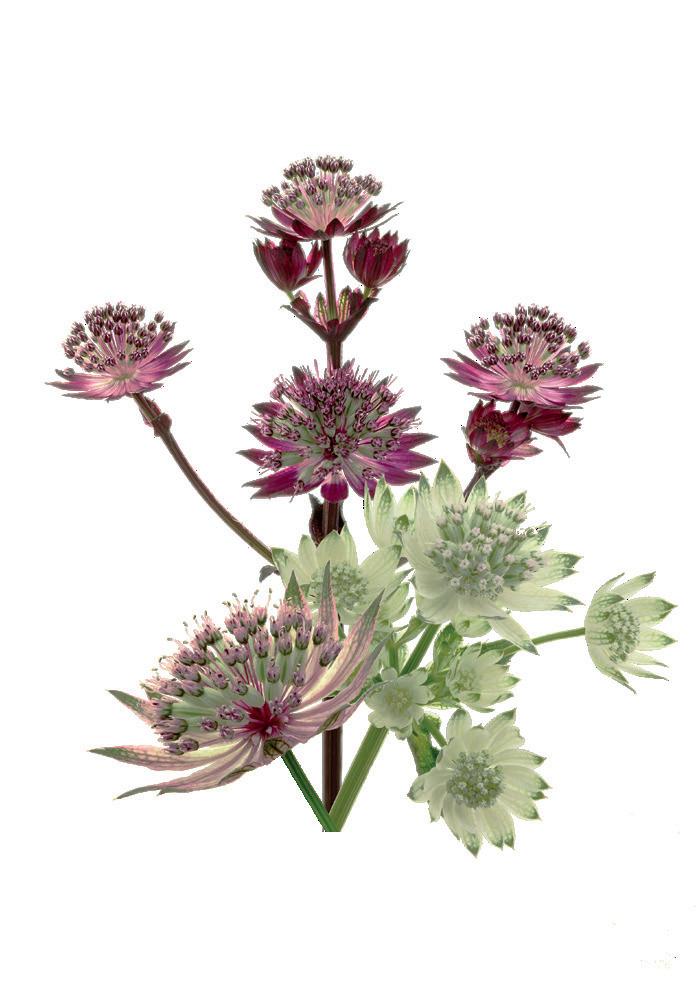
A golden girl within our range is the Astrantia. Our Star® series covers many hectares in Kenya, Ethiopia, and Zimbabwe. Have you ever taken a close look at Astrantia? The large petals are actually bracts, with the real flowers clustered in the middle. A stunning sight indeed.


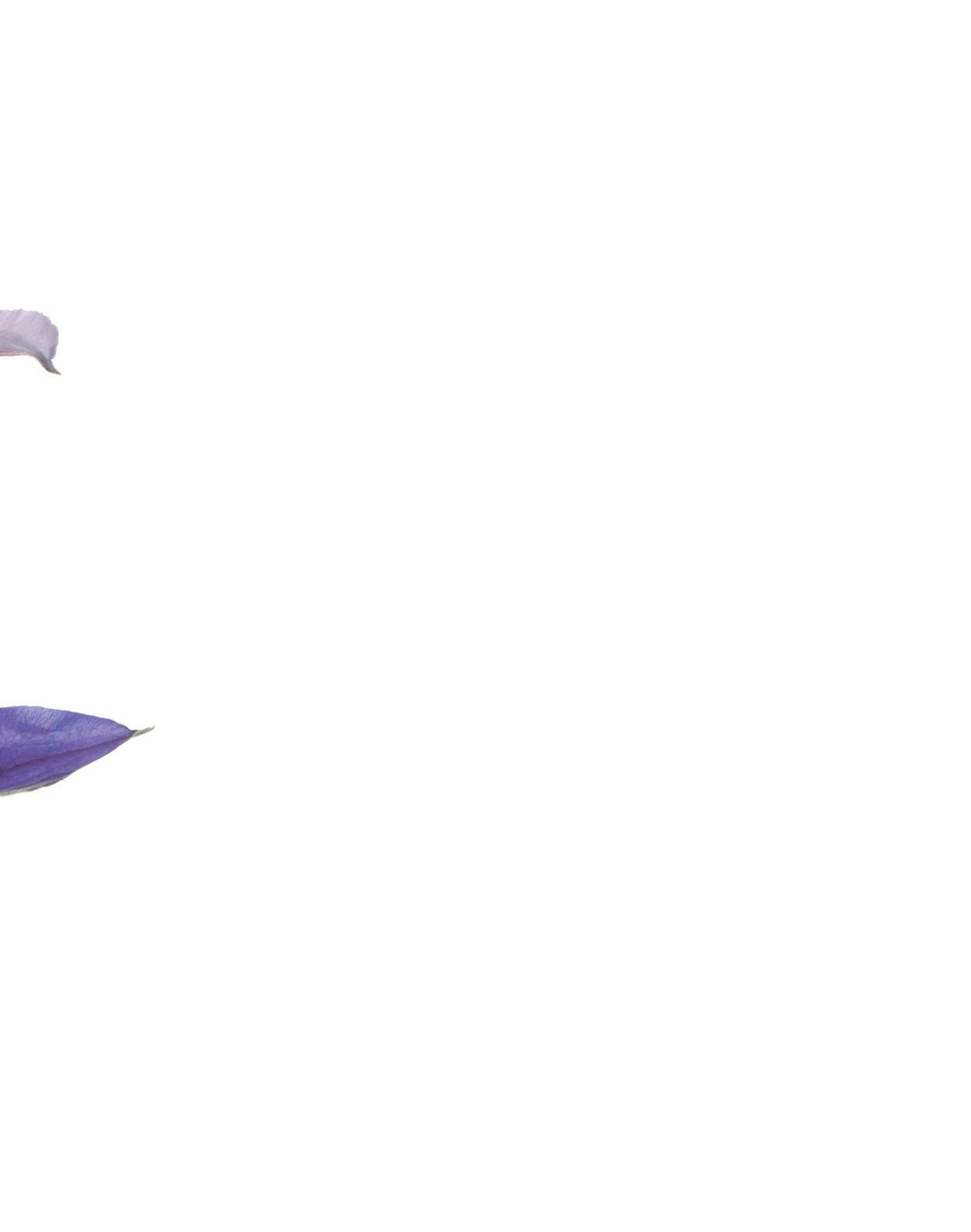
This unique branch with small seed pods in red and rusty tones won the Glass Tulip award for best innovation in 2021. Woohoo! In the field, before harvest, the plants are adorned with small pink flowers in the evening, which close during the day. A ‘nocturnal’ flower, as they say. Our floral investigator Emanuel has made a video about it too.
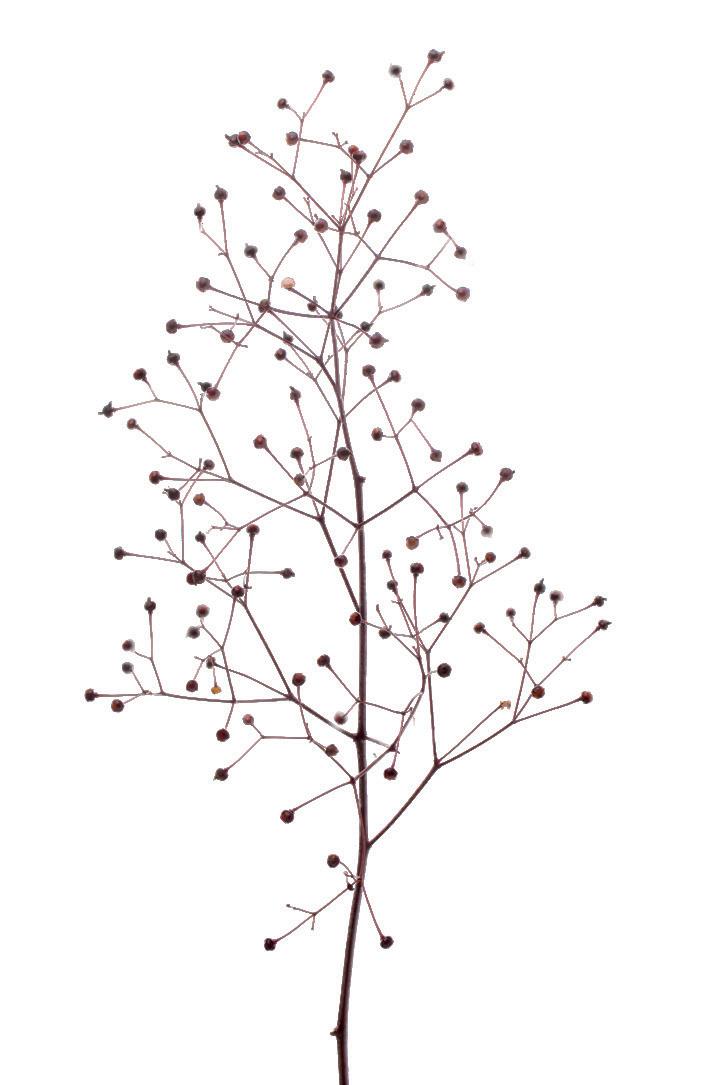
Our partner farm in Tanzania diligently cultivates a complete Polianthes series. This fragrant flower series is truly ‘Epic.’ Want to see how the fields look at the foot of Mount Kilimanjaro? Check out our Ask Marginpar video series, where we take you right into the heart of them!
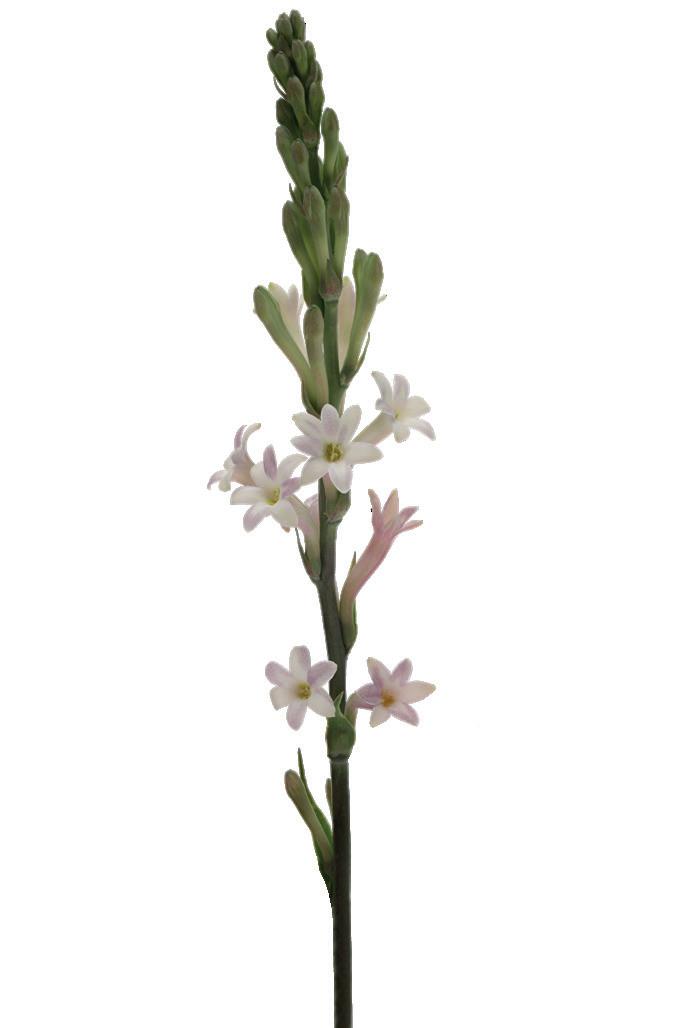
Speaking of seed pods, we have another remarkable flower: Scutellaria. In the fields, it’s a favourite among bees due to the white flowers that still adorn it. The flowers eventually fade, making way for green seed pods. The sturdy Scutellaria is not only a beautiful addition to bouquets but also suitable for temporary installations where little to no water can be added.
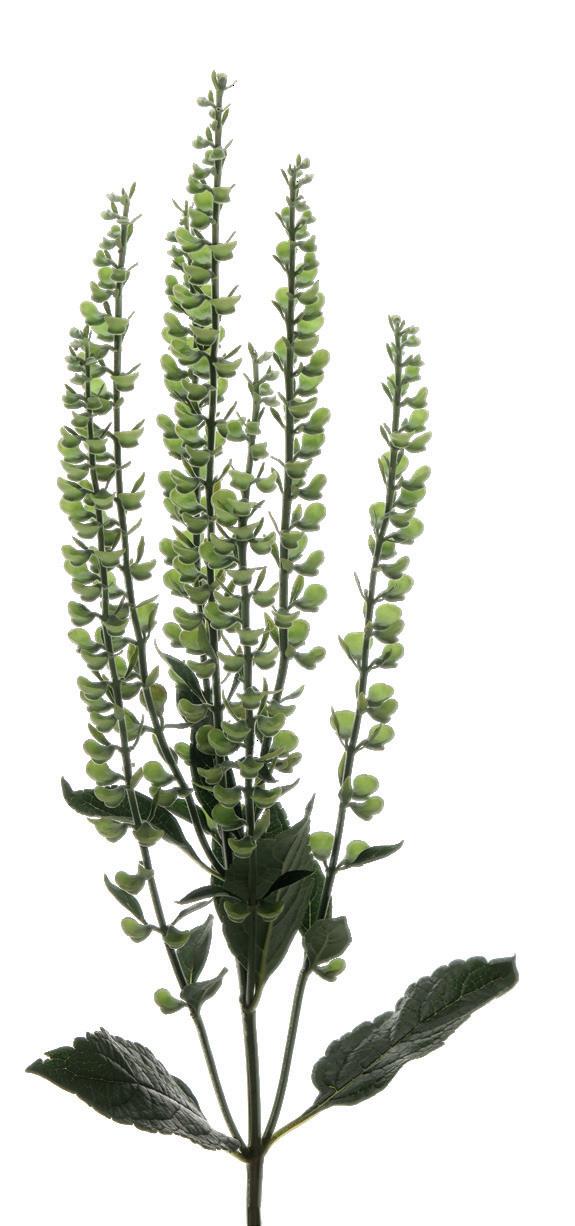
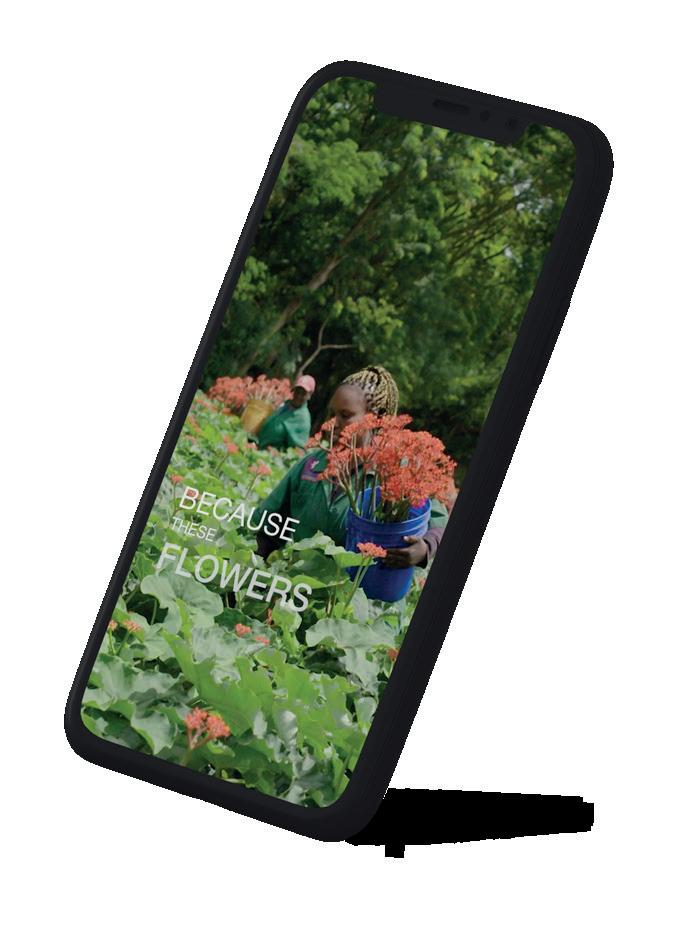
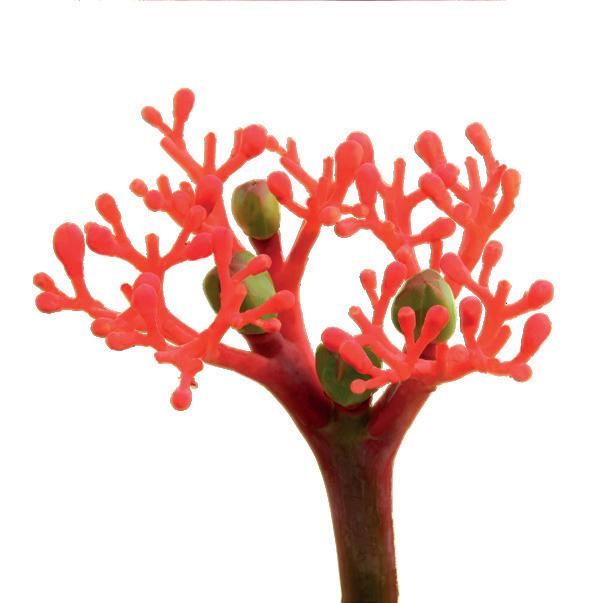

A flower that resembles coral is a rare sight, but we’ve been cultivating this red eye-catcher for quite a few years. Did you know that after harvest, this flower is carefully cleaned to reach you in the most beautiful condition? There’s a fabulous video about it, shot in the flower fields of Tanzania:
This extraordinary two-tone Agapanthus comes from our breeder in South Africa. What a beauty, right? The flowers transition from blue to bright white and not only have a stunning but also a cheerful appearance.
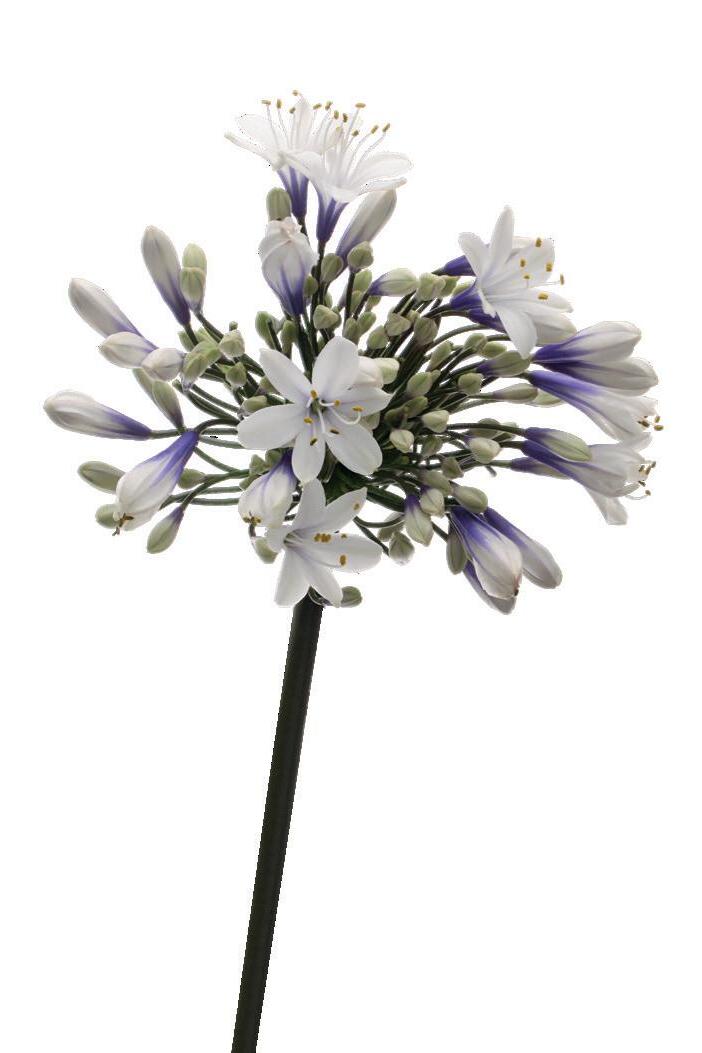
Another extraordinary flower: Gloriosa. The Simba Fifty Shades comes in a mix of different colours. Recently, a new colour was added: purple. This newcomer earned the nickname ‘coffee’. Gloriosa is a native flower in Tanzania and not only grows on our flower fields but was also discovered in the coffee fields of the same farm. Surprised, the R&D team took the flower and investigated its suitability to be added to the mix. And it certainly was! We hope you’re ready because Emanuel has also been there with the camera crew. Watch it here:
Ps. This is the only place in Africa where Gloriosa is professionally cultivated! Remarkable, isn’t it?

Introducing a captivating addition to our floral range: the Callistephus Buttons series. These charming blue, white, and pink flowers have found their place in the fertile Kenyan flower fields, producing impressive stems of up to 80 centimetres. Known as the ‘China aster’, the Buttons series stands out from the current China asters with its larger flowers, reaching up to an impressive 6 centimetres in diameter!
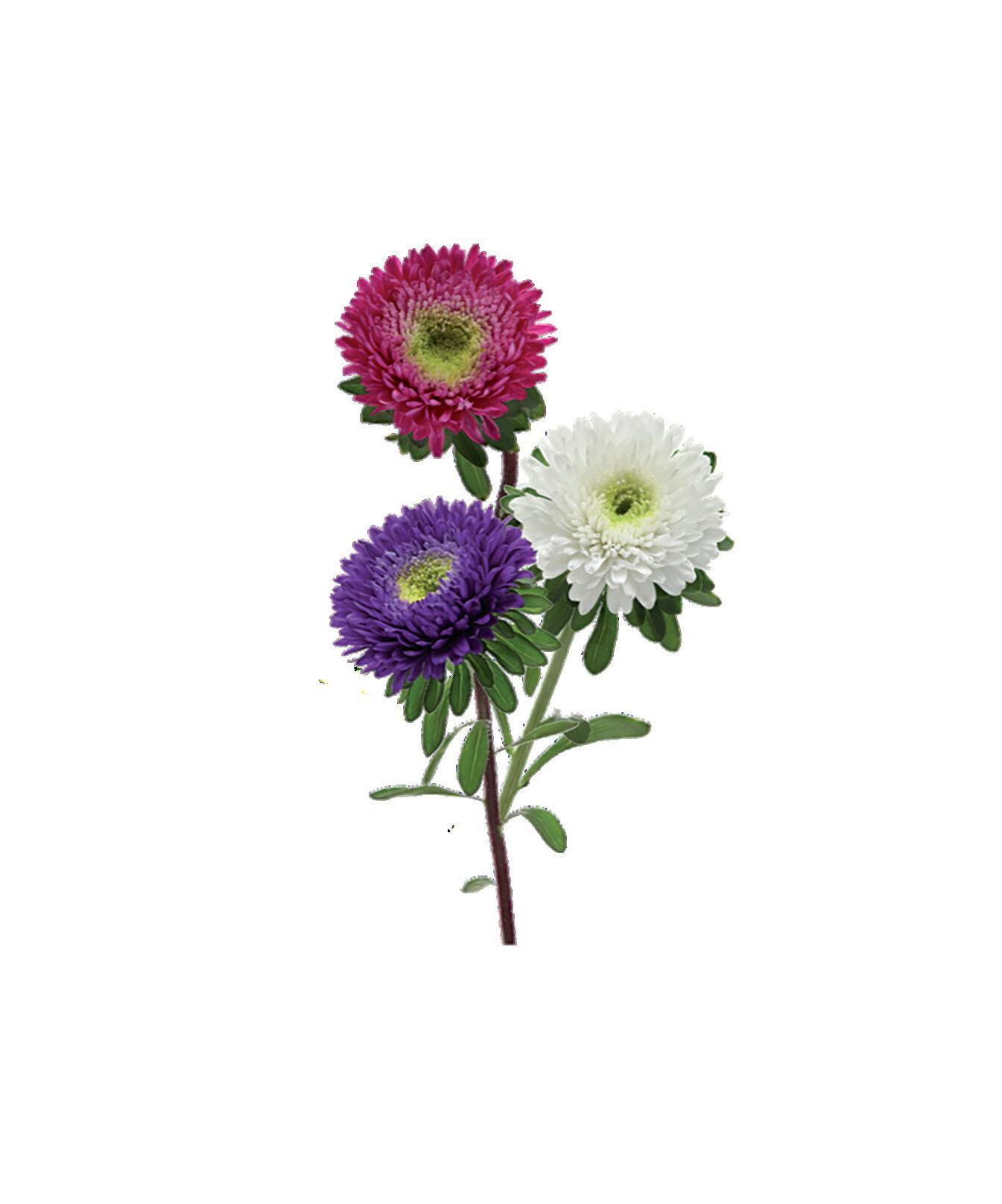
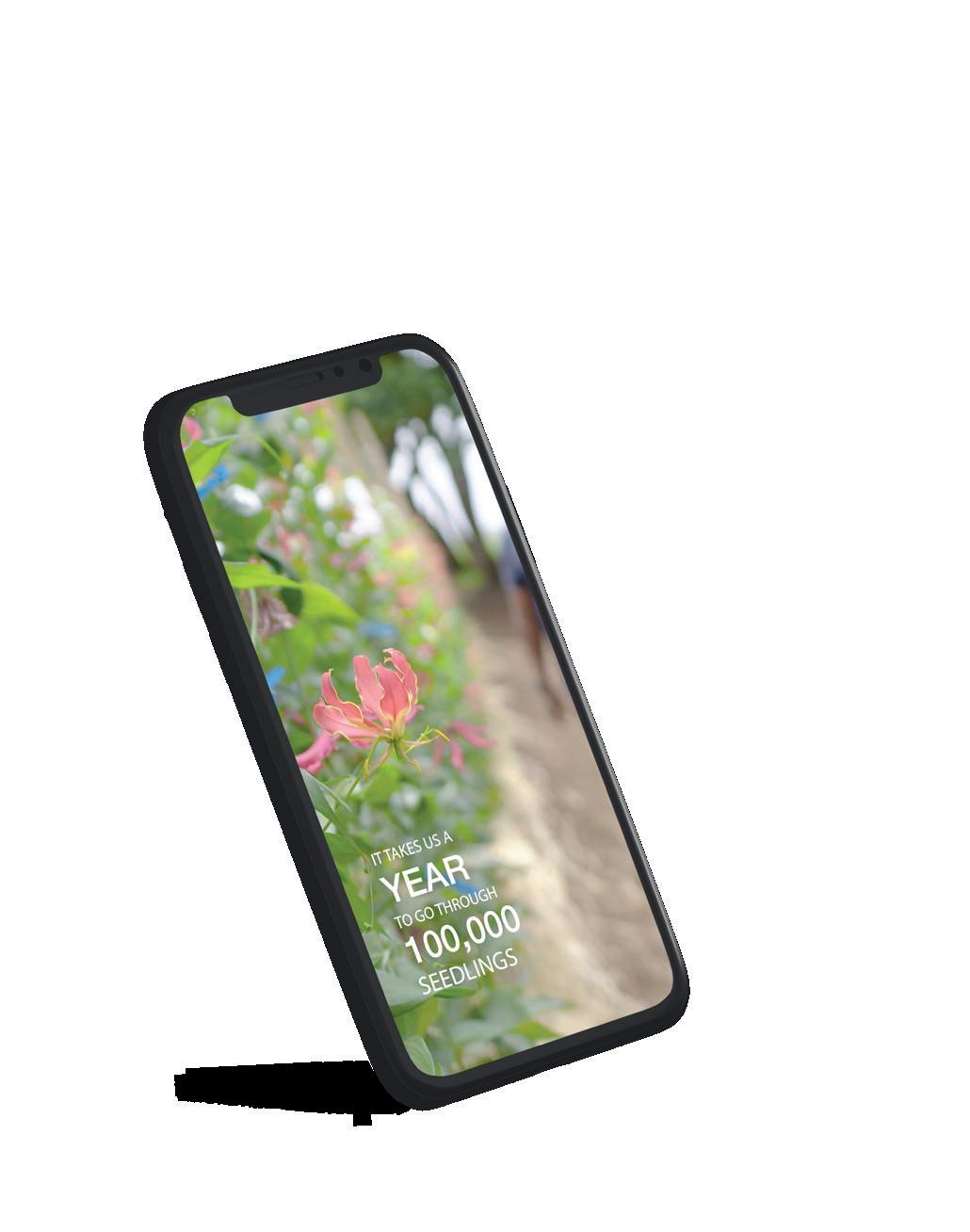
Astilbe, a plant native to the northern hemisphere, may seem like an unexpected sight in African flower fields. However, the challenge of cultivating this remarkable
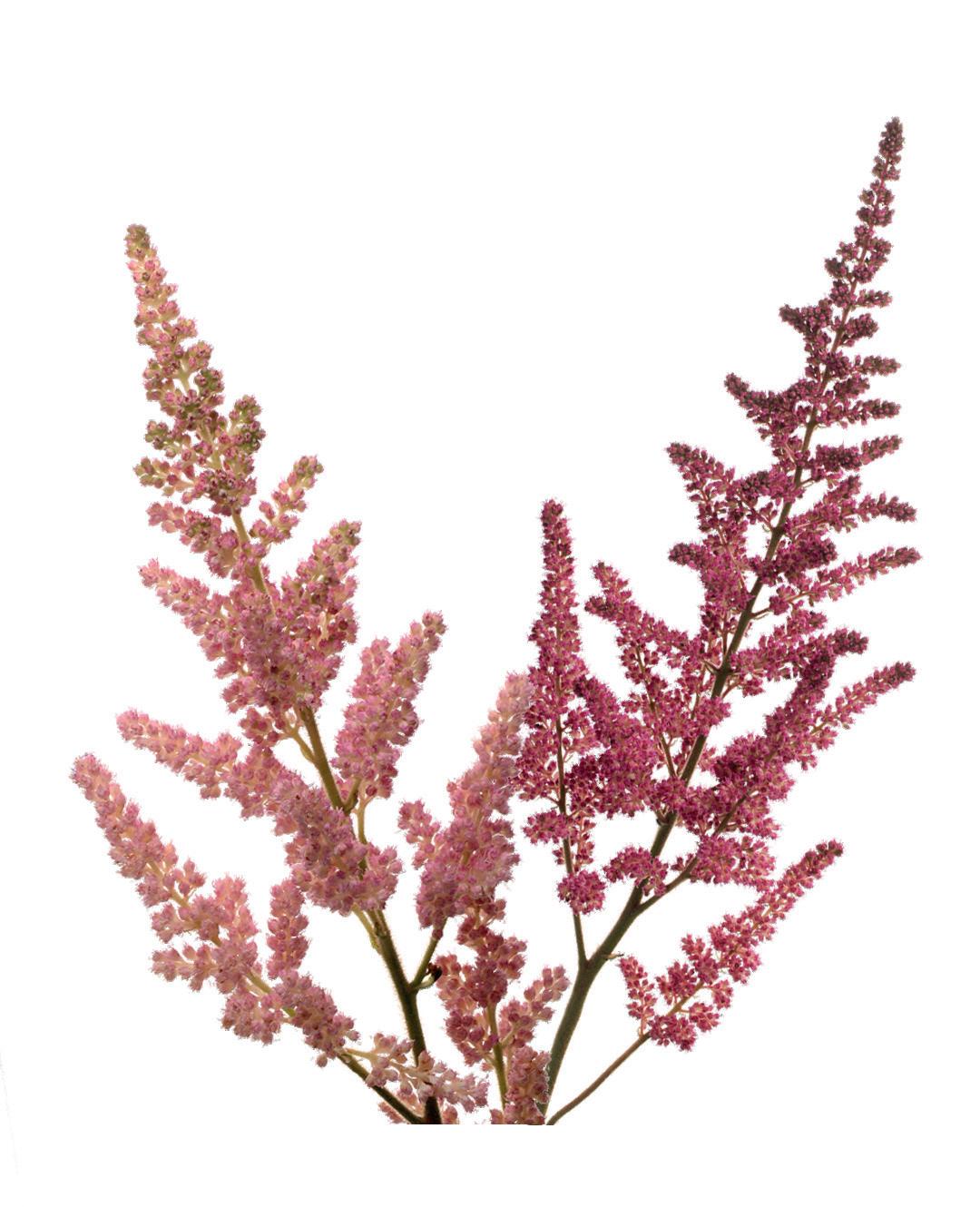
Our Aster collection is flourishing with the latest arrivals: the enchanting double-flowered ‘Double Date’ Pink, Milka, and Carmine, as well as the irresistibly adorable ‘Teeny Tiny’ Pink and Blue varieties. The Teeny Tiny series boasts a single row of petals, which gracefully showcases its cheerful yellow heart. In this video, floral investigator Colin shows you
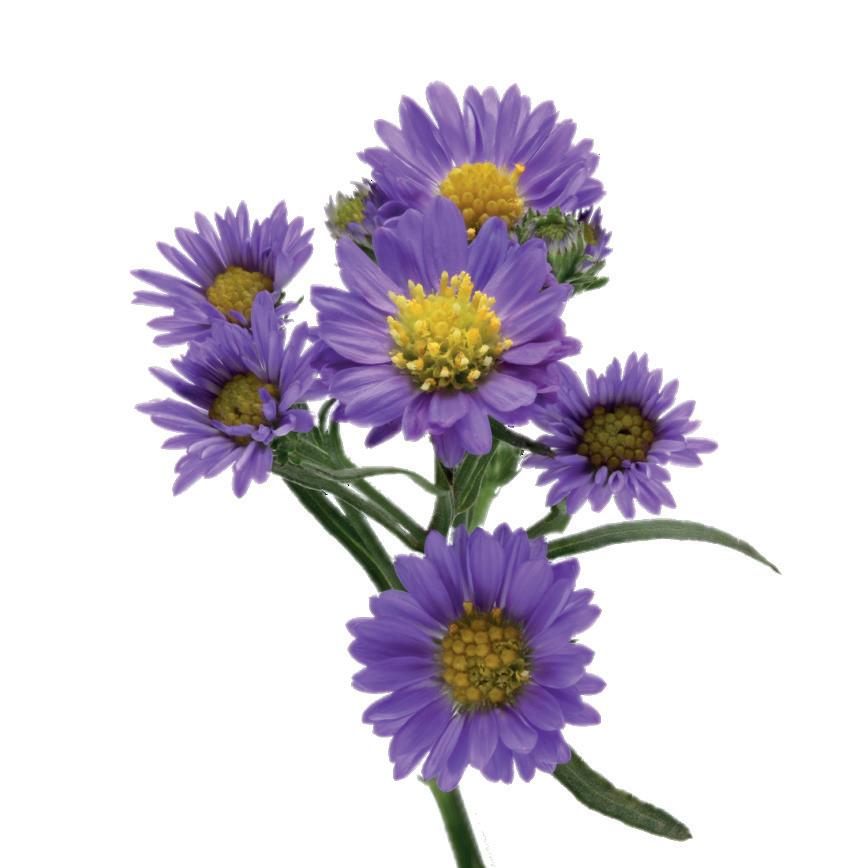
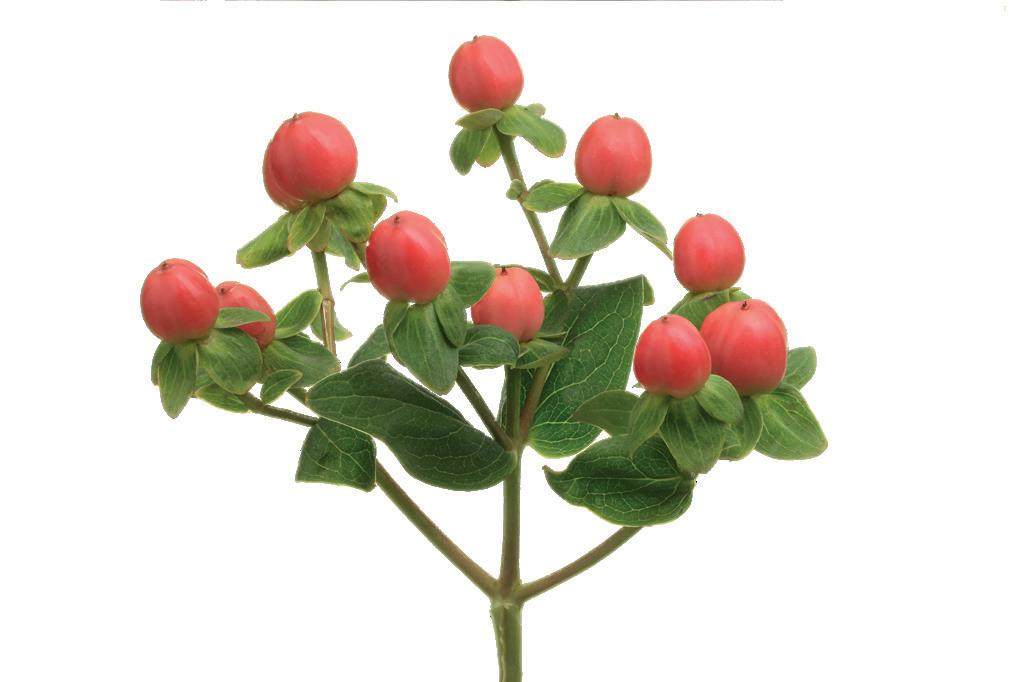
The very first in the Marginpar range: the Hypericum. Marginpar is the pioneer in cultivating this flower in Africa. Hypericum Flair® held a significant share in our range for a long time before our pursuit of diversification. Luckily, the Hypericum fields still flourish. Be sure to read the story ‘Pioneering the Flower Industry’ on page 23 if you wish to learn more.
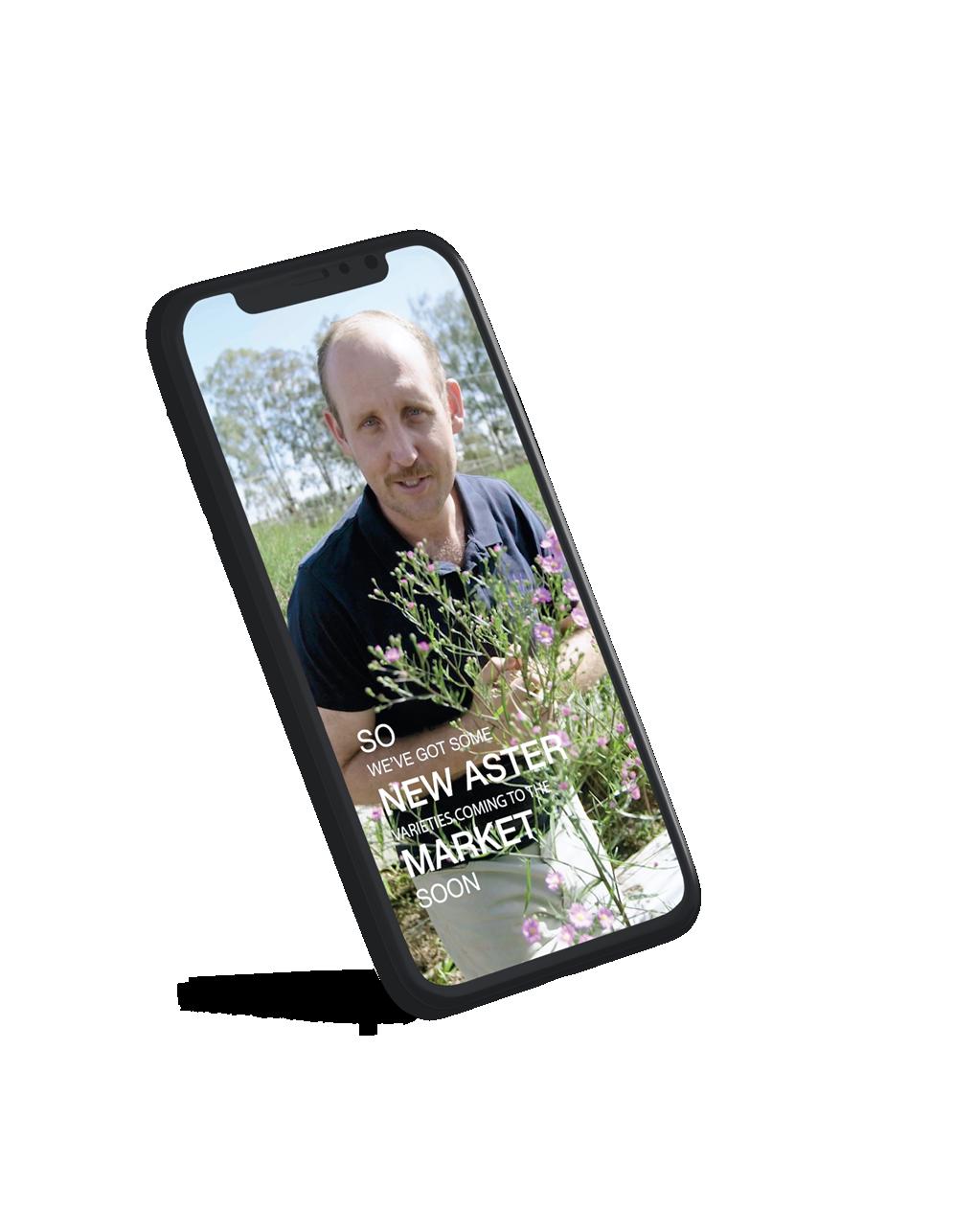
It doesn’t get yellower than this Solidago. A sunny sight for any bouquet. The Carzan Glory is named after the former Carzan flower farms in Kenya, which have been part of the Marginpar Group for several years now.
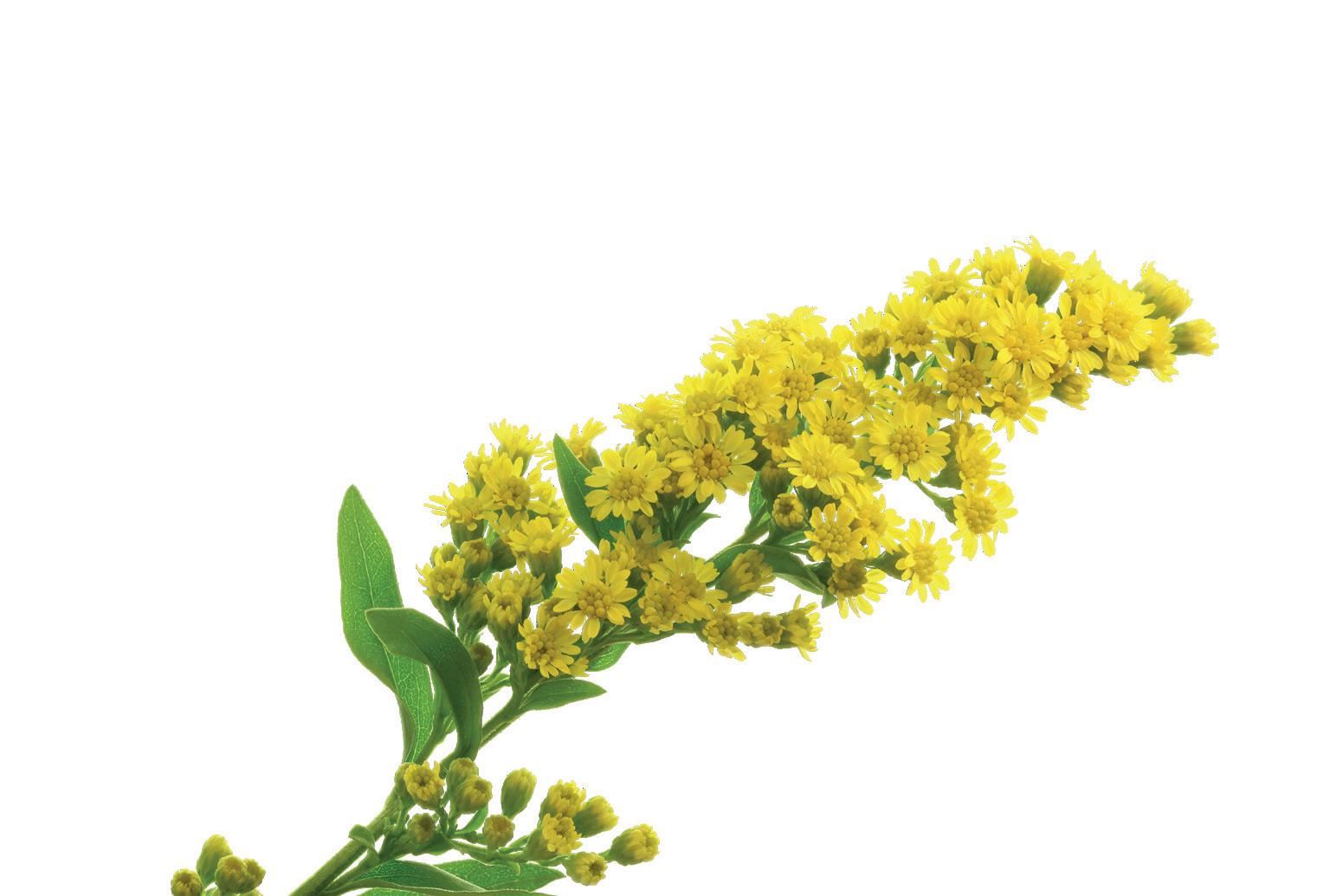
for our complete and most up-to-date assortment.


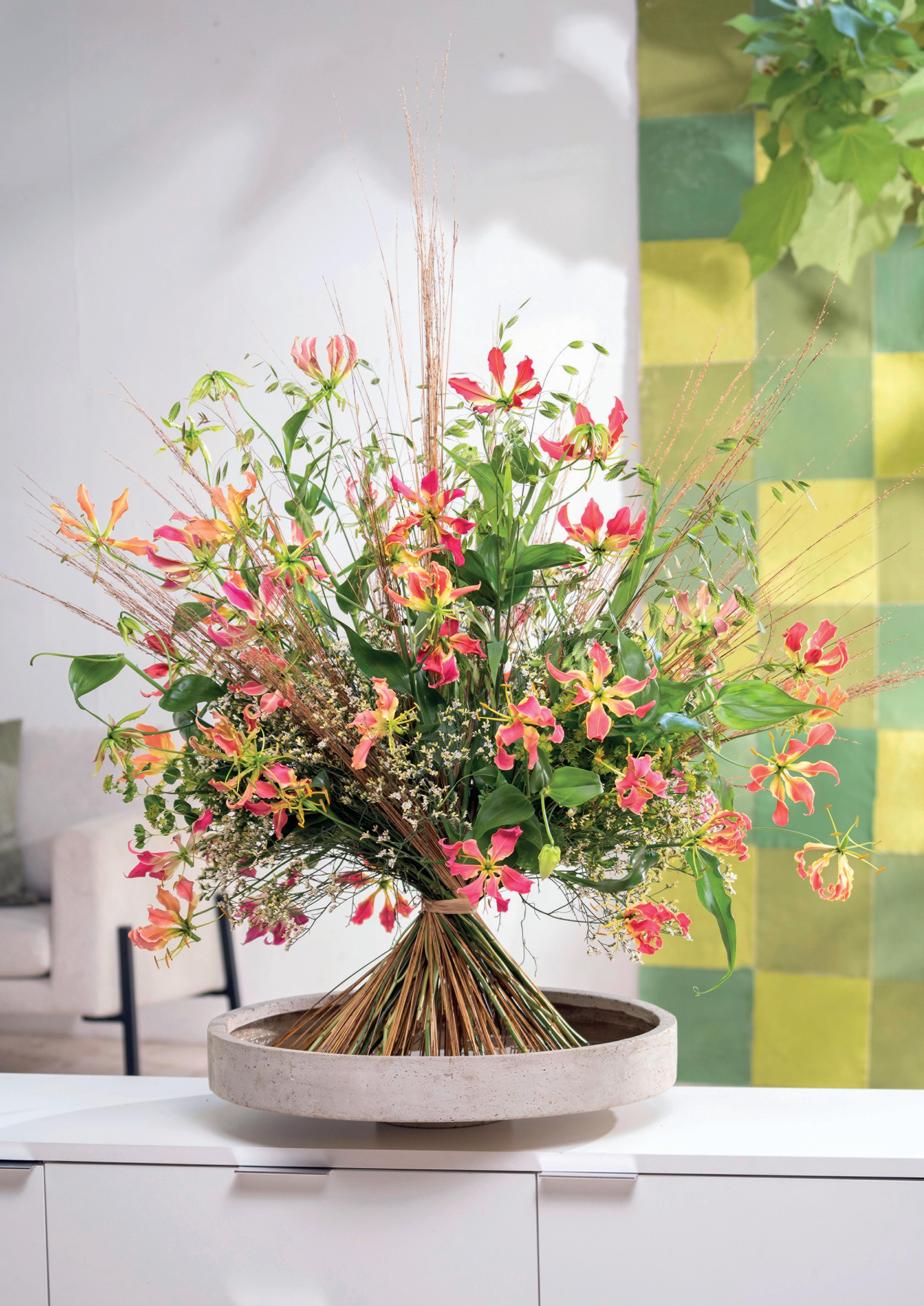
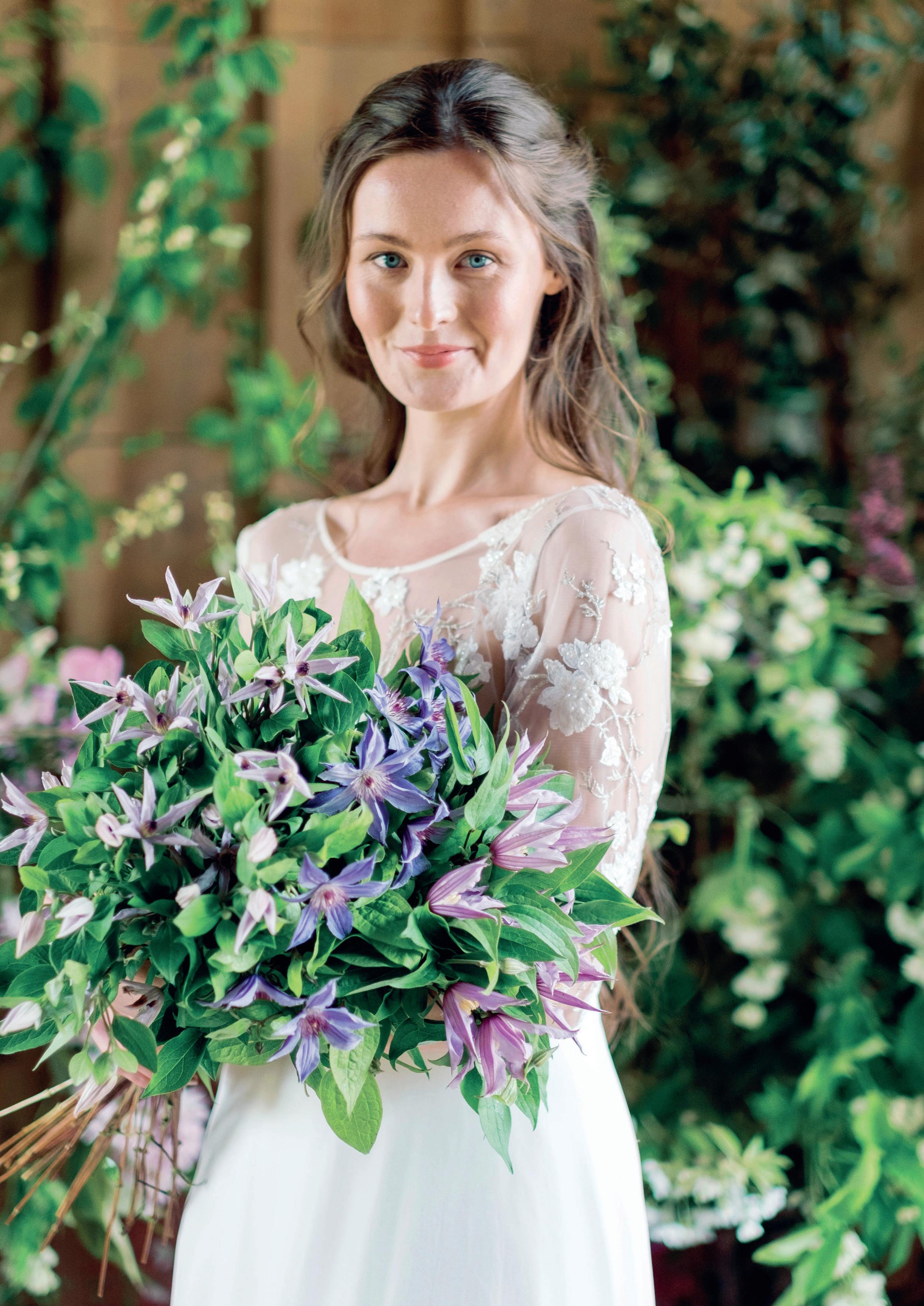
Sabine Darrall is a renowned wedding and event florist with a career spanning over four decades. Through workshops, Sabine inspires emerging florists to blend their artistic vision with environmentally friendly practices. Her passion, innovative approach, and down-to-earth nature have established her as a prominent figure in the industry.
Did you know that floral arrangements are at the heart of wedding decorations? Flowers symbolise love, whether it’s a classic, bohemian, or extravagant theme; using flowers emphasises the love of the couple. For Sabine Darrall, this provided ample inspiration to organise a three-day bridal workshop, all centred around environmentally friendly practices.
Sabine’s expertise lies in creative installations and event designs, all infused with a profound commitment to sustainable practices. Currently, Sabine divides her time between managing a thriving floral design business and imparting her extensive knowledge through floral workshops. All of this takes place at her organic farm in Herefordshire, where the idea for this three-day bridal workshop was born.
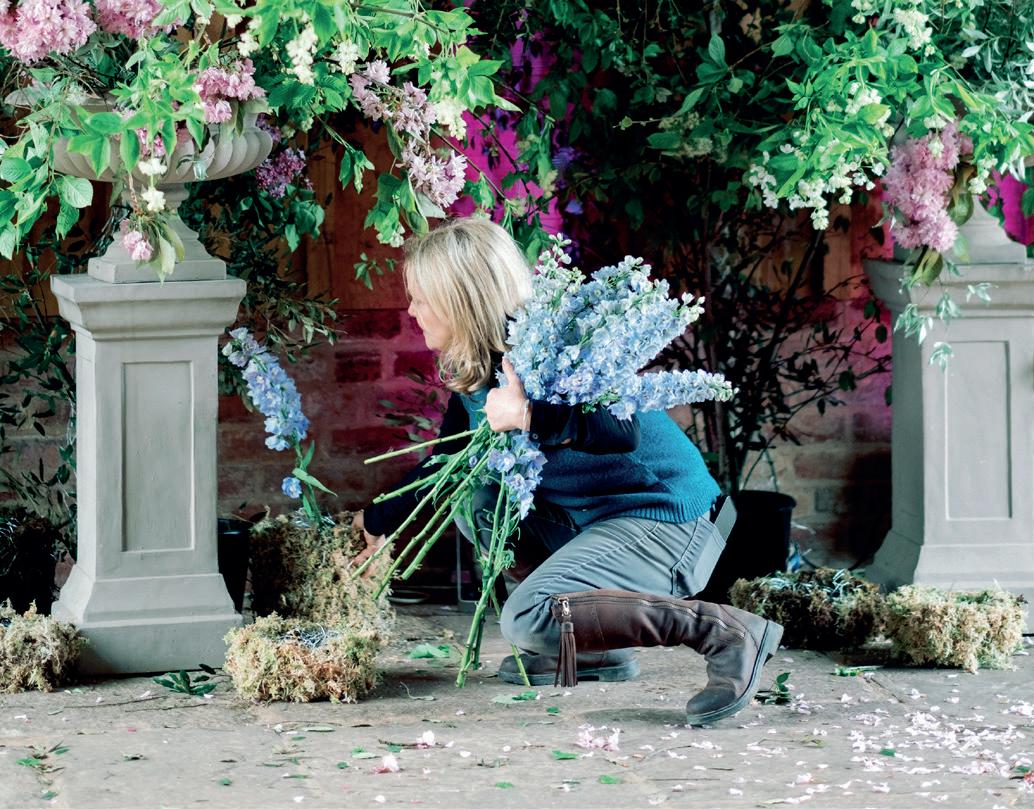
Together with the talented participants, Sabine created a series of stunning floral designs, with each day dedicated to a different wedding theme. They crafted a beautiful ambiance that made it feel like an actual wedding
celebration was taking place. From beautiful bridal bouquets consisting of only Clematis Amazing® to creations with Aster, Scabiosa, Astilbe, and Delphinium; this course was not only aesthetically pleasing but also ecologically responsible.
Whether you are new to the craft or have been in the industry for years, it is crucial to keep learning and growing. Staying up to date with the latest trends and techniques is essential to keep your creations fresh and relevant. By expanding your skills, you enable yourself to master various styles and techniques, elevating your work to new heights. Not only can you view the images of this workshop, but you can also get hands-on with creating a sustainable floral table runner using this tutorial.
Keep learning, creating, and blossoming in this enchanting world of flowers, where beauty and care for our planet go hand in hand.
Sabine Darrall: “I fell in love with Marginpar
when I first saw the Clematis Amazing® Sevilla, just the most perfect flower for my style of bridal bouquet. Then I discovered all the other beautiful flowers that Marginpar grows.
I love the varieties, the quality, and the story behind the blooms…”
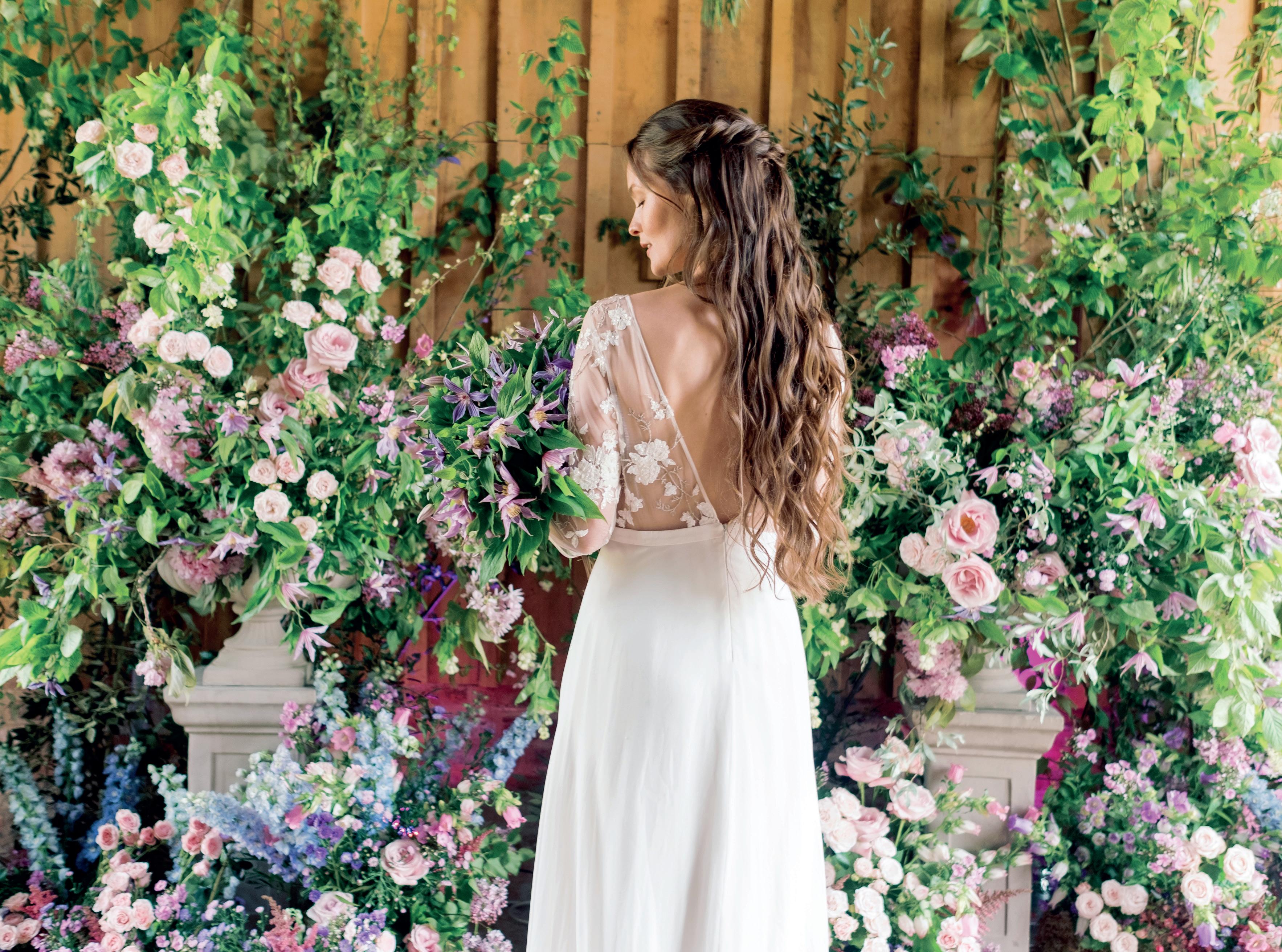
What do you need:
• Lightweight wood plank +/- 1.80 meters
• Wire netting
• Oasis FibreFloral™ Design Media (plastic free)
• Compostable bags
• Staple gun
• Osmanthus foliage
• +/- 80 stems of the Clematis Amazing® series
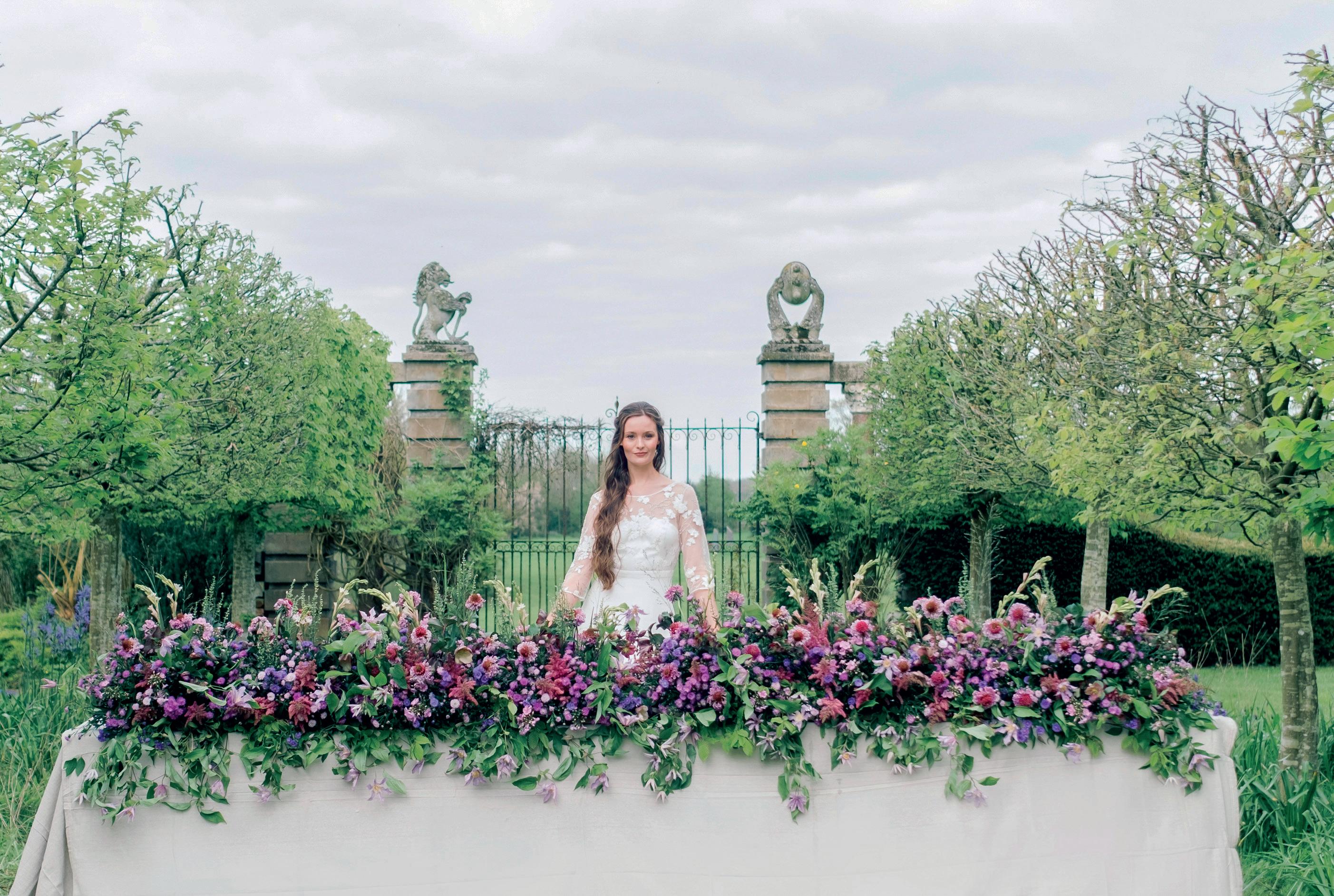
• +/- 60 x Scabiosa Focal Scoop™ Bicolor Pink
• +/- 60 x Panicum Heavy Metal
• +/- 80 x Scutellaria ‘Tinkerbell’
• +/- 80 x Helleborus Moondance
• +/- 20 x Polianthes Epic Elsa
• +/- 40 x Phlox Pink Eyes
Take 7 blocks of Oasis FibreFloral™ and place each one within a compostable bag. This prevents water drips and makes it easier to insert the flower stems later. Position the foam blocks on the wood plank. Lay the plank on a flat surface and arrange the compostable bags with the foam blocks evenly spaced along the length of the wood plank.
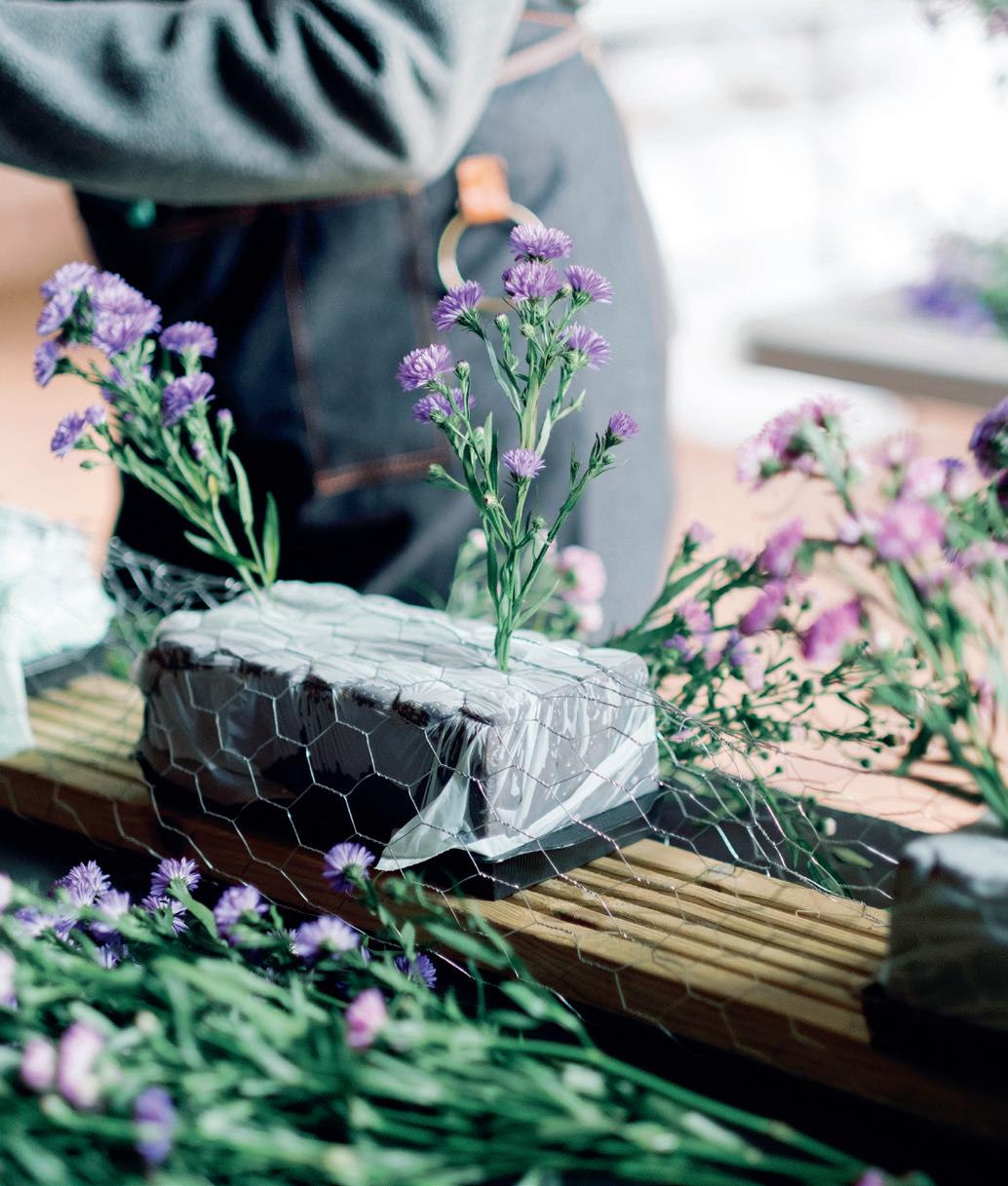
Cover the entire arrangement, including the compostable bags and foam blocks, with a layer of wire netting. Use a staple gun to firmly secure the wire netting to the wood plank, ensuring the foam blocks are held in place.
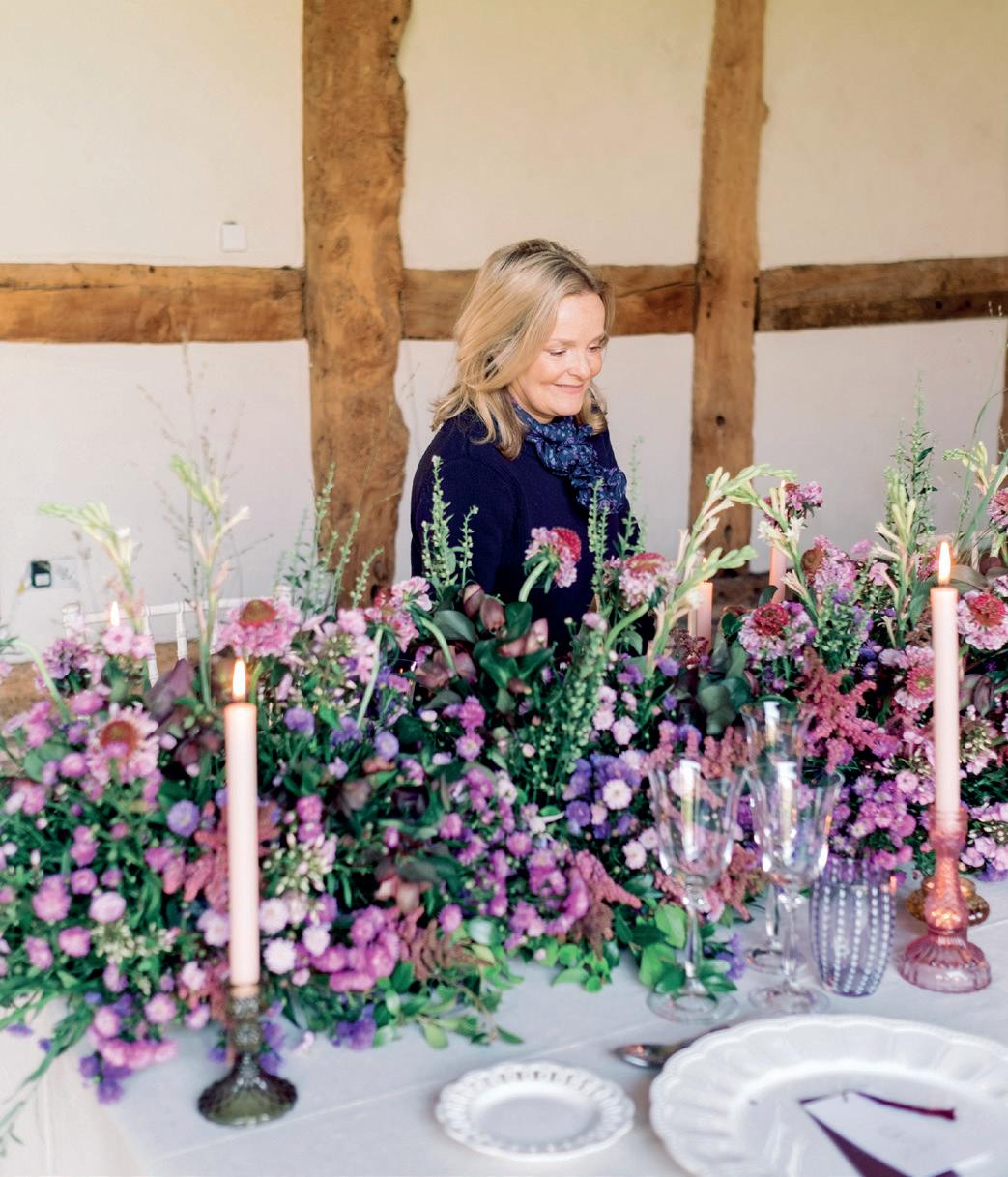
Start by inserting a layer of Osmanthus foliage into the wire netting. This covers the mechanics and serves as the base for the design. Add a layer of Aster, then layers of Astilbe, Polianthes, Scabiosa, Helleborus, Panicum grass, Phlox, Scutellaria and Clematis. The design can then be lifted in one piece and placed in the right place. Finish by adding more Clematis stems to trail down the front of the table.

After the event or occasion, the design is easy to adapt and repurpose as a floor meadow. This showcases the adaptability of this sustainable floral design, making it suitable for various occasions, particularly weddings.
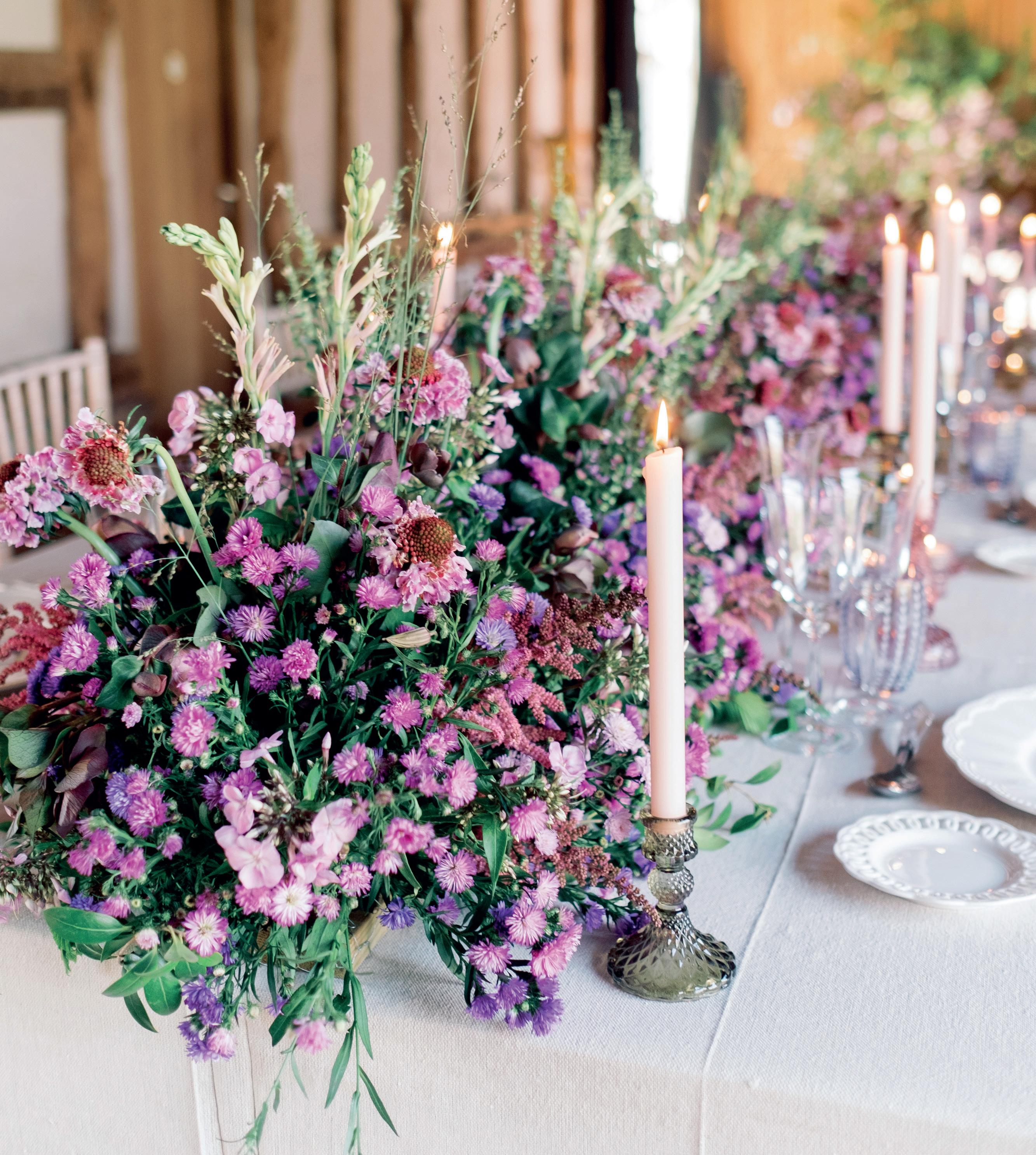
All the mechanics used in this floral table runner, including the wood plank, wire netting, and compostable bags, are reusable. The compostable bags and any plant-based materials can be composted,
while other recyclable components should be appropriately recycled, promoting an eco-friendly approach to floral design.
Hungry for more?
Website www.sabinedarrall.com
Instagram @sabinefloral
Facebook @sabinefloral
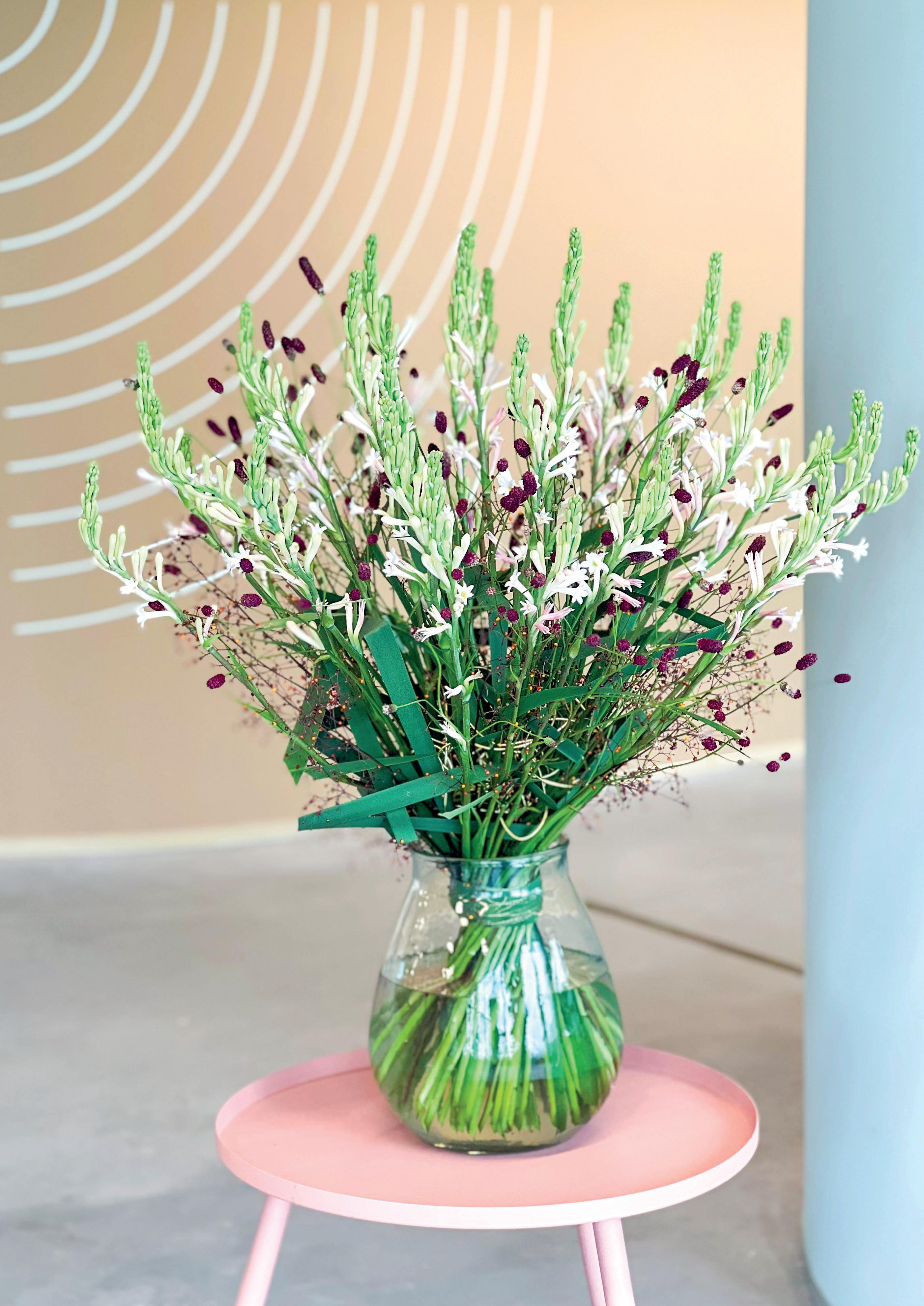
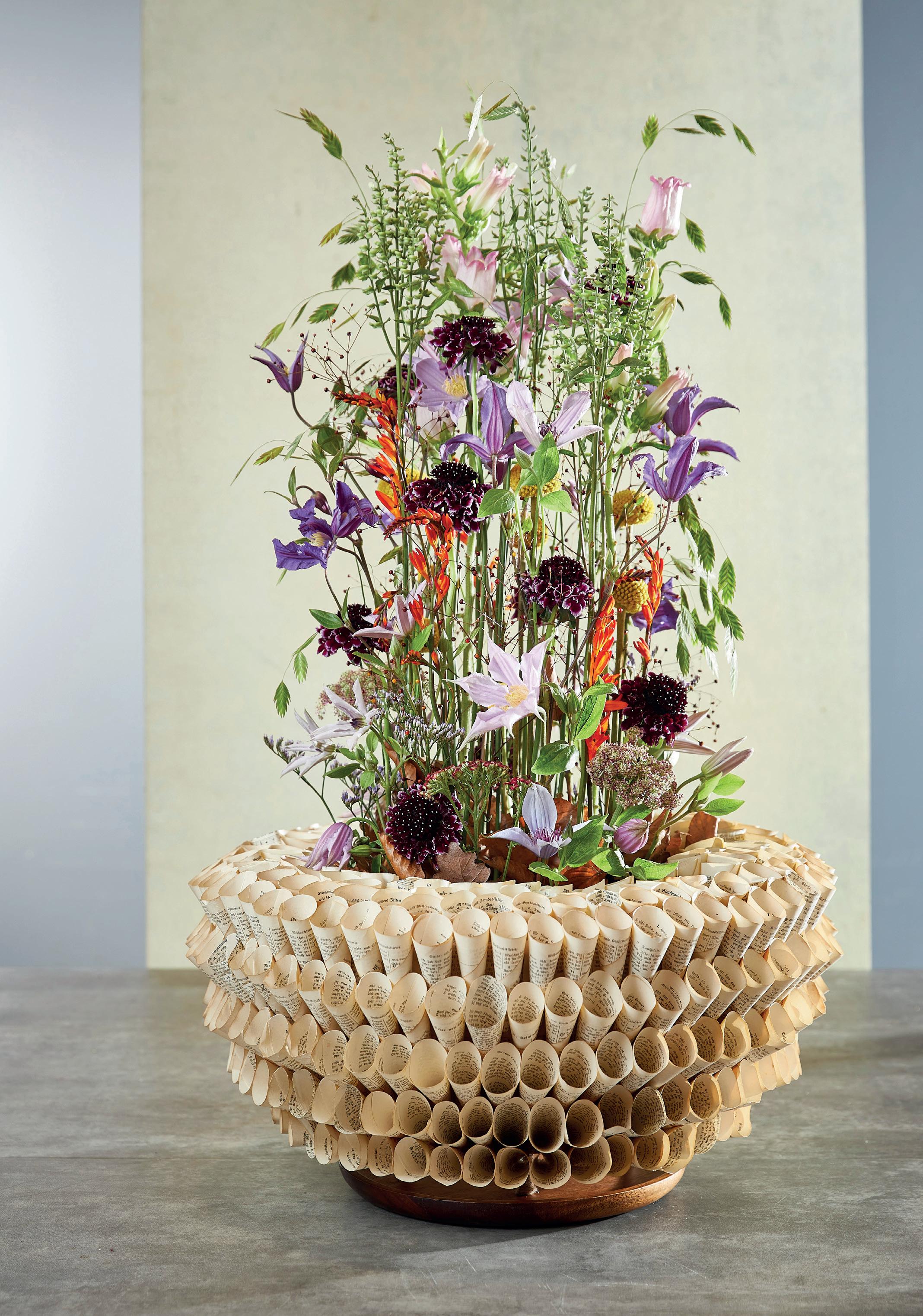
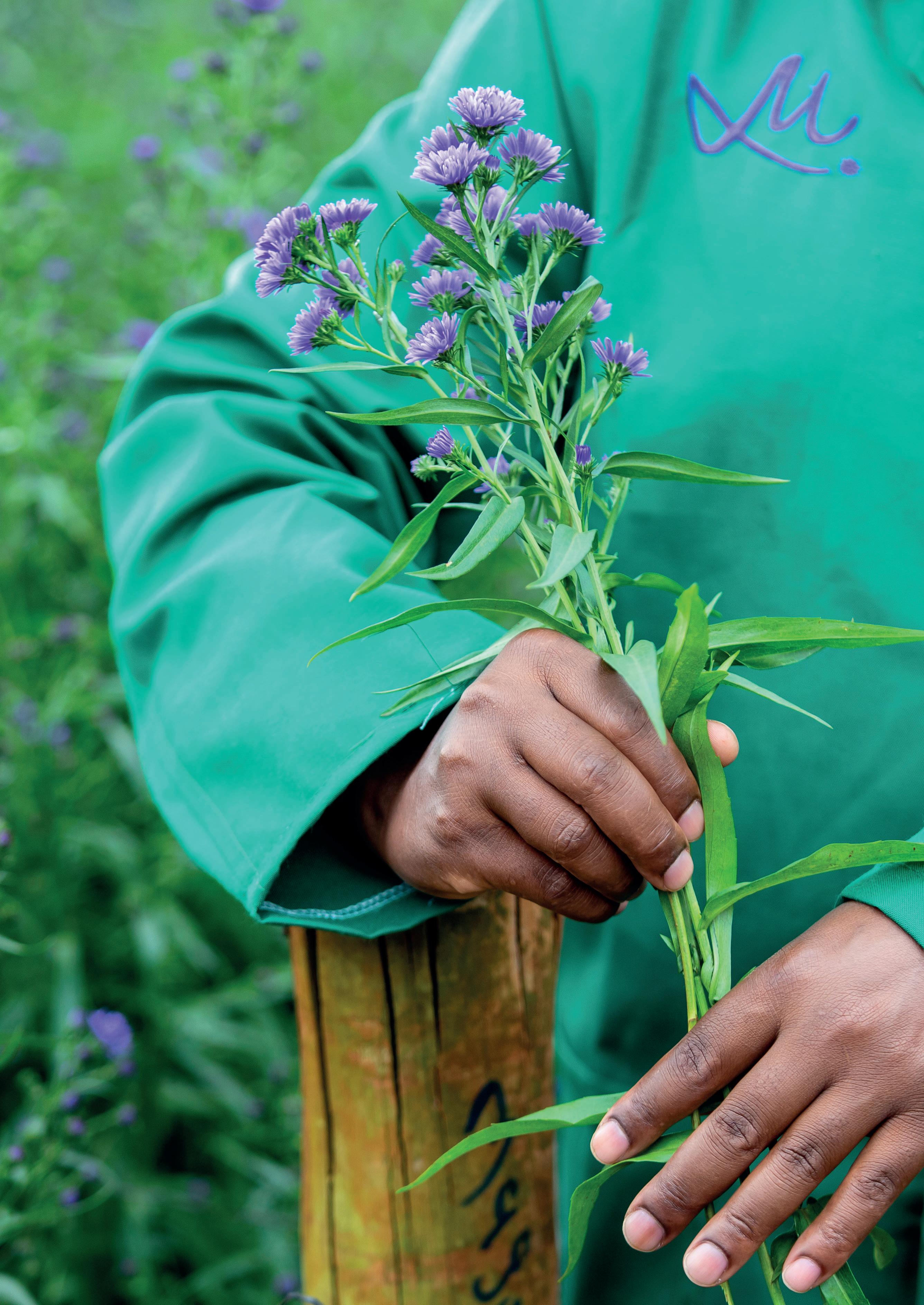 Aster Dark Milka
Aster Dark Milka
The floral sector has long been cherished for its beauty, elegance, and emotional significance. However, like many industries, it faces the challenge of operating sustainably to protect the environment and preserve its resources for future generations. As consumers become increasingly conscious of their ecological footprint, the importance of sustainability in the floral sector cannot be overstated. Marginpar, as a leading floral brand, recognises the urgency to address these concerns and has taken significant steps towards becoming an eco-friendly industry leader. With a forward-looking vision, we have committed ourselves to achieving 100% sustainable production by certifying all
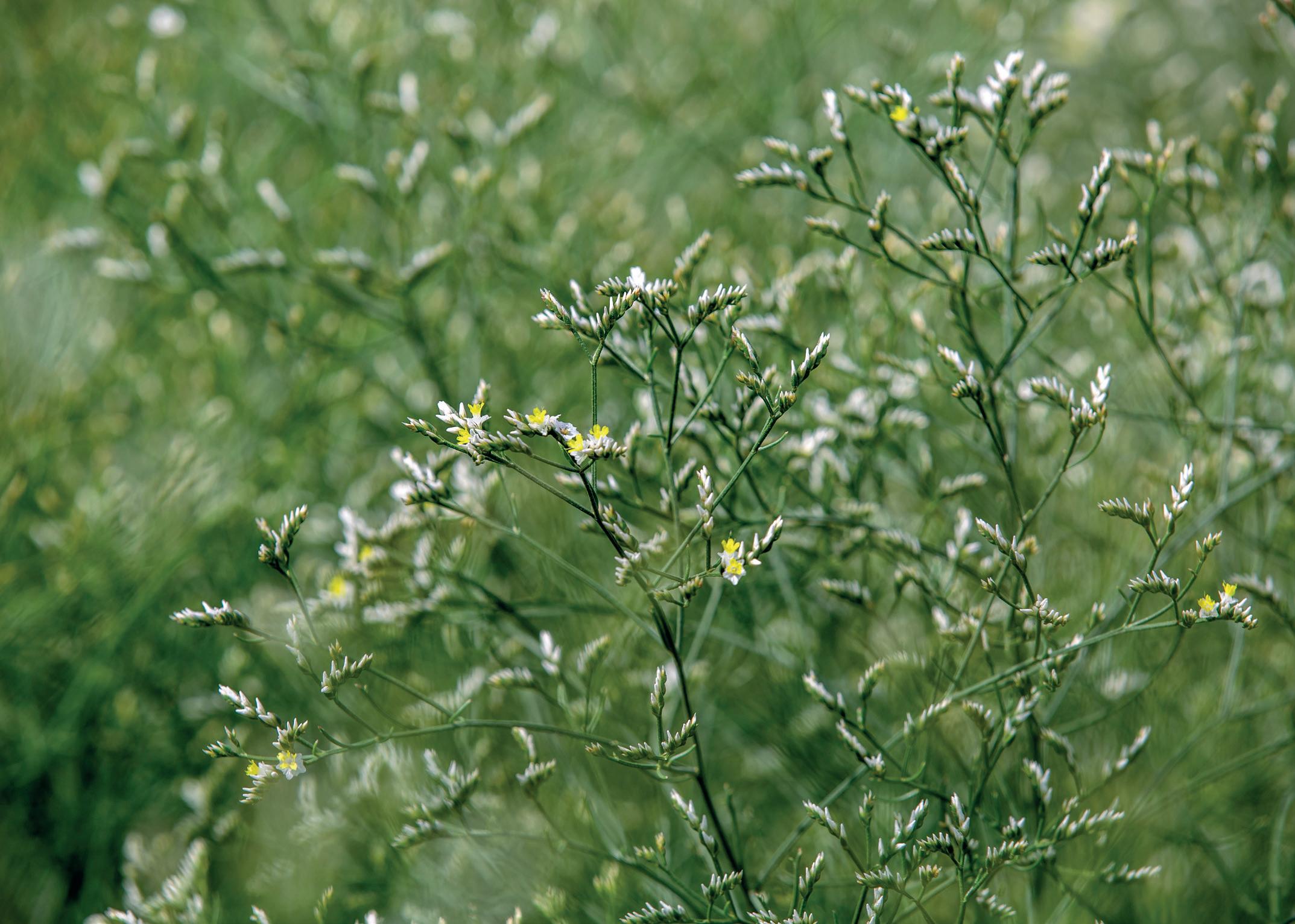
flower farms within our supply chain. At the moment, 95% of our flowers are sustainably produced: all our own and almost all our partner farms are certified with either MPS (ABC, Social & GAP) or KFC. This ensures that our flowers are grown in a socially and environmentally responsible manner.
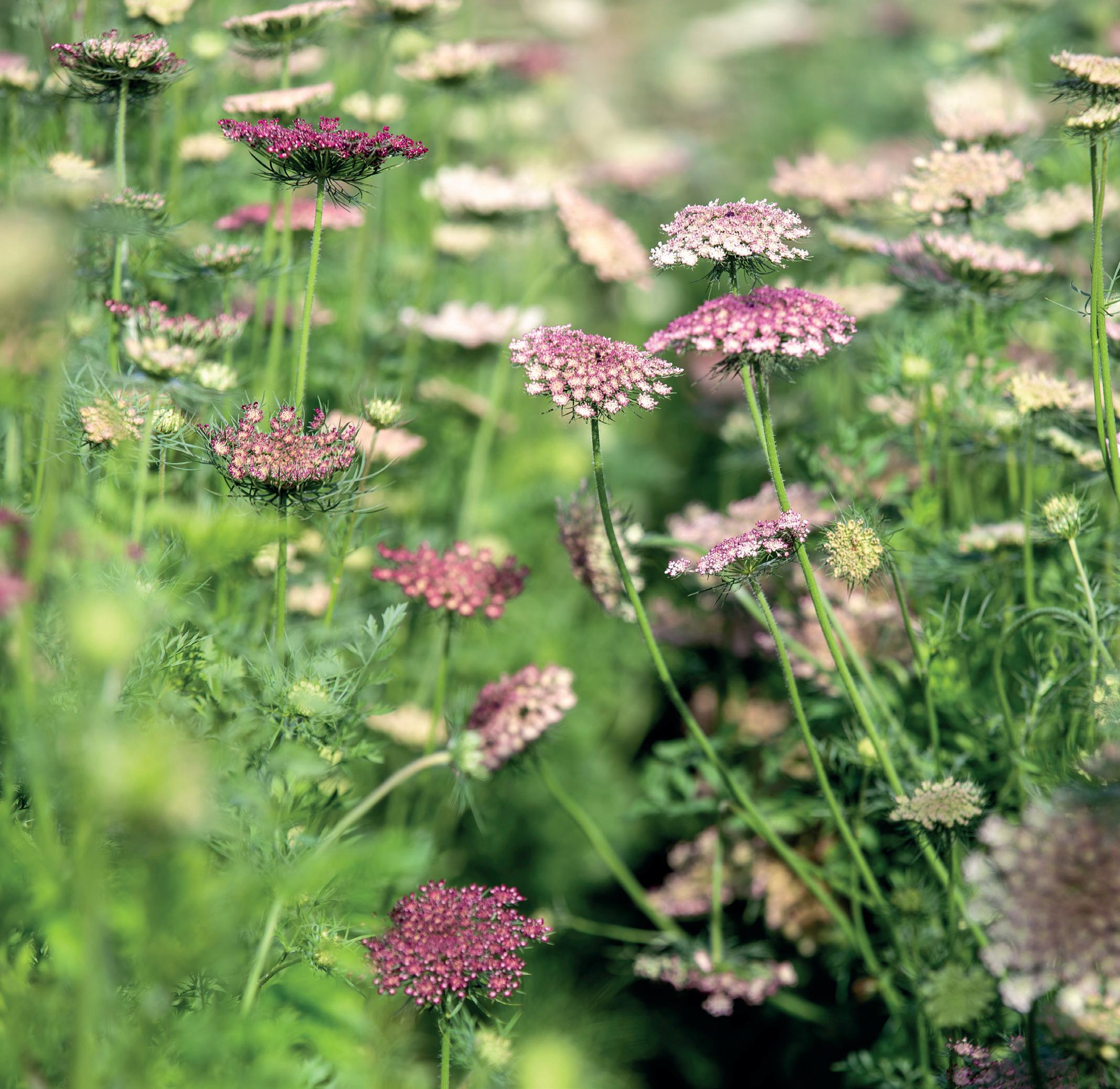
Quite impressive, isn’t it?
But we know you’re curious about how this all translates into practice.
Marginpar focuses on implementing sustainable farming techniques that prioritise environmental conservation and biodiversity. We are reducing the use of chemical pesticides, opting for integrated pest management systems and natural alternatives to protect the crops. On page 60, you can read more about this in Ronald’s journal.
Marginpar has invested in energy-efficient technologies and equipment to reduce energy consumption on our farms and in our processing facilities; like LED lights and solar panels. The new Dutch headquarters has so many solar panels, it’s completely carbon neutral.
We have employed water-saving practices, such as drip irrigation and rainwater harvesting, to minimise water usage and preserve this valuable natural resource.
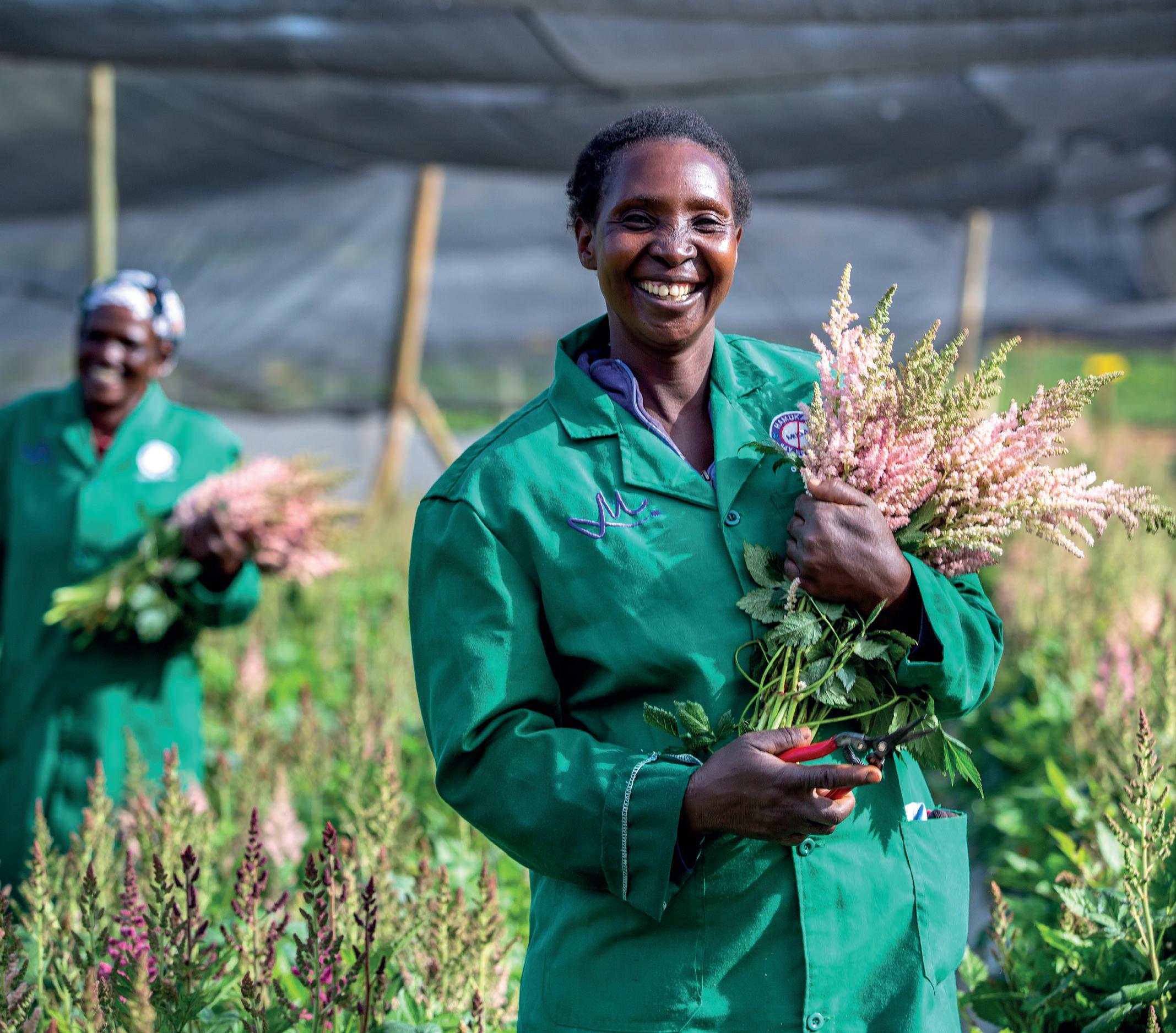
We ensure our employees receive fair wages, experience safe working conditions, and have access to healthcare and education. Everyone receives a warm lunch at the farms, with ingredients grown in our own vegetable gardens. The Marginpar Foundation helps with new classrooms, infrastructure, clean water, and hygiene projects in communities around the farms.
The ‘Kaizen’ method of working empowers us to constantly enhance processes, promoting a culture of improvement for greater efficiency, quality, and sustainability in our floral operations. This approach instils employee ownership, fostering happiness and pride in our work. As consumers become more conscious of the impact of their purchasing decisions, sustainability in the floral
sector has emerged as a key consideration. Marginpar’s commitment to 100% sustainable production by certifying all flower farms within its supply chain sets an exemplary standard for the industry. As we embrace this transformation, we not only protect the environment and foster social responsibility, but also preserve the timeless beauty of flowers for generations to come.
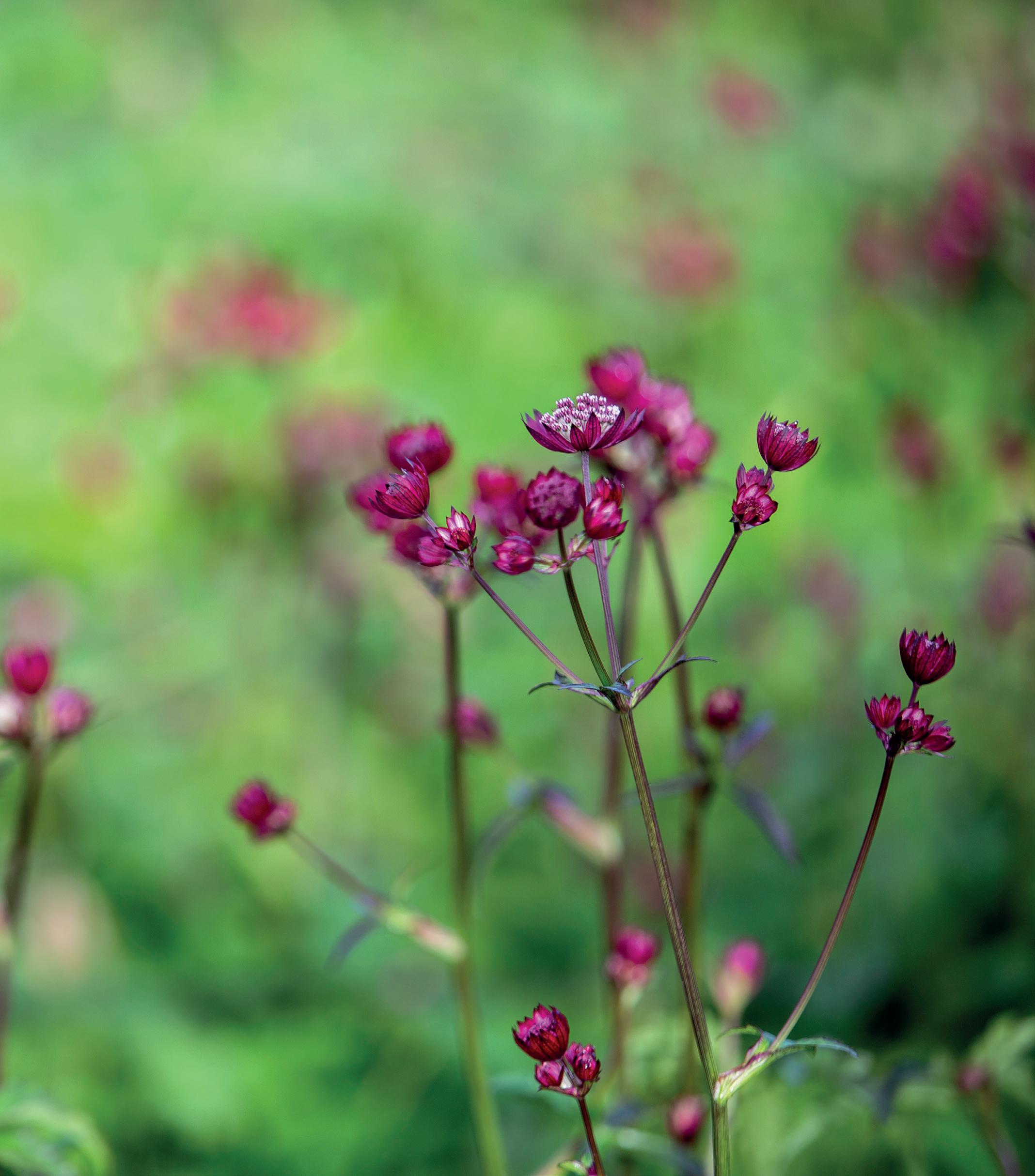
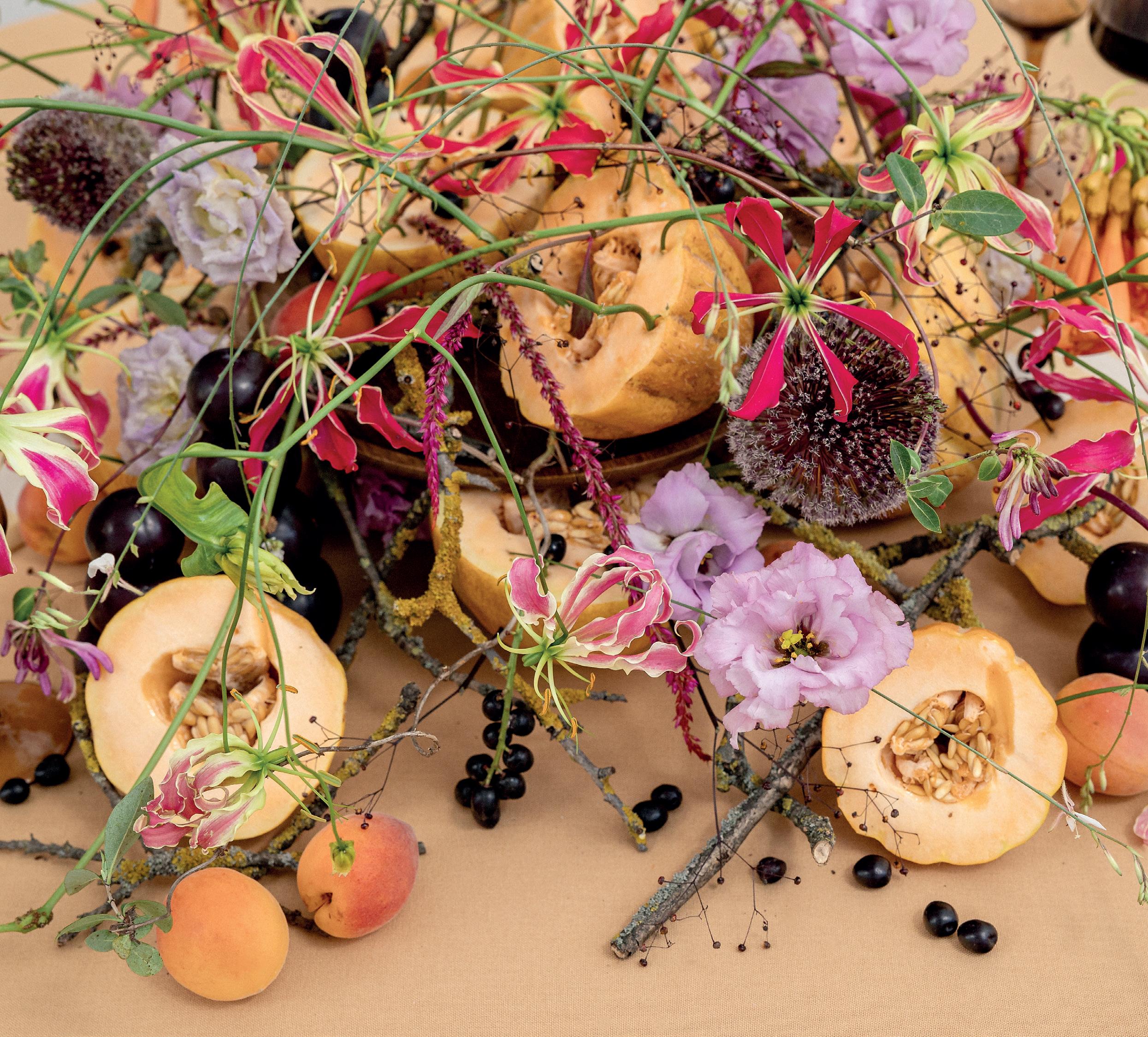
Welcome to the much-anticipated annual trend report that has florists, designers, and event stylists buzzing with excitement. Each year, we tap into the insights of a renowned floral designer or trend aficionado to illuminate us.
This year, we’re honoured to give the stage to Nicu Bocancea, a true luminary in the field. He’s unveiling his vision on the floral trends for 2024, offering a wellspring of creative inspiration for fellow floral enthusiasts and professionals alike.
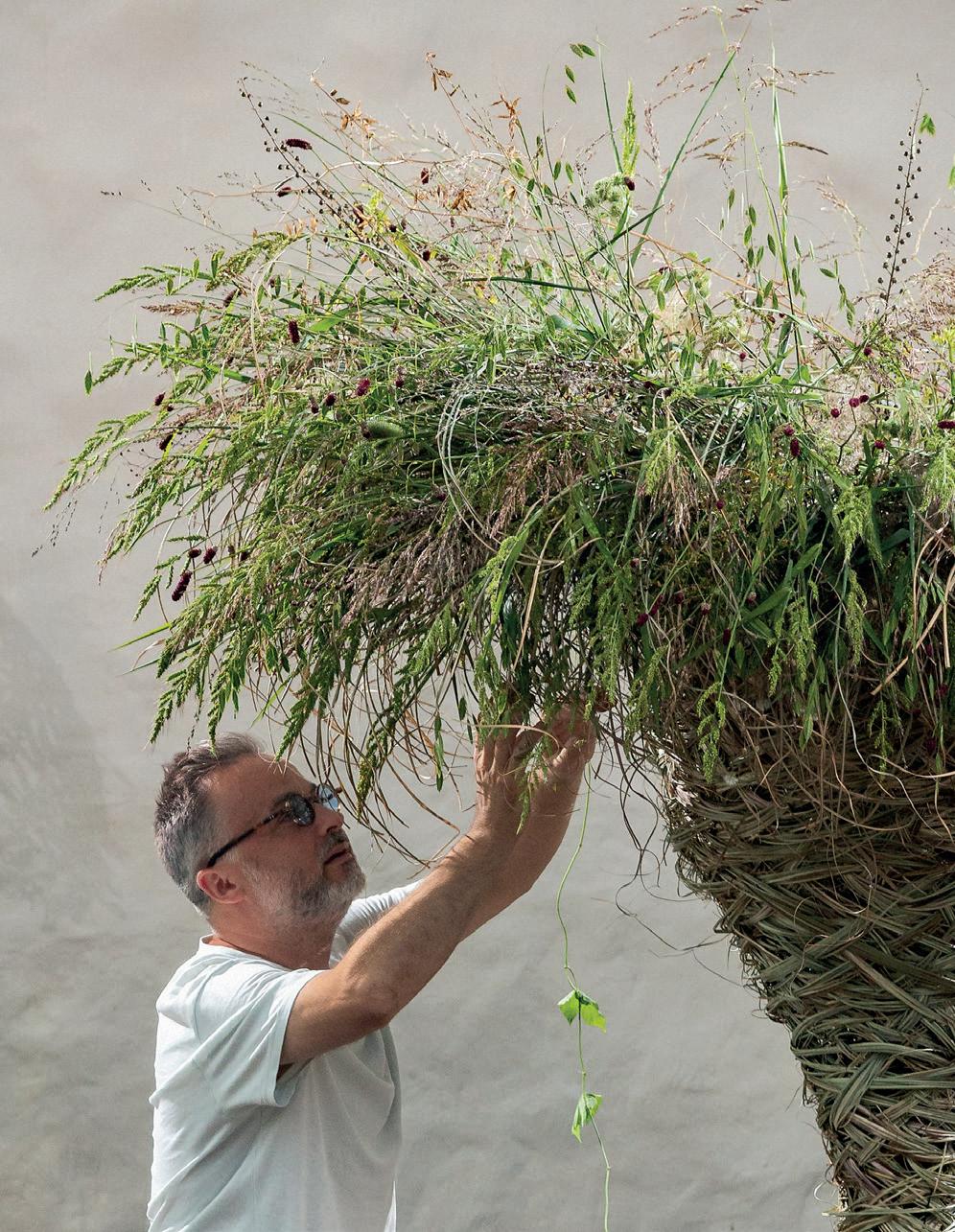
Nicu: “My predictions are based on the likely combination of global design trends, societal changes, consumer behaviour patterns and environmental concerns. By aligning these trends with wider developments in the world, I propose to create a vision of floral design that resonates with contemporary values and aspirations.”
The trends of 2024 are divided into 4 categories:
1 • Transparency
2 • Natural Look
3 • Vegetables, fruits and flowers
4 • Simplicity of the painting NICU BOCANCEA
ALL THE DESIGNS ARE INSPIRED BY NATURE AND REFLECT AN INNOVATIVE APPROACH TO FLORAL DESIGN. NICU: “BY FOCUSING ON TRANSPARENCY THROUGH THE CREATIVE USE OF RECYCLED MATERIALS, EMBRACING THE NATURAL LOOK, INCORPORATING UNCONVENTIONAL ELEMENTS SUCH AS VEGETABLES AND FRUITS AND CAPTURING THE SIMPLICITY OF A PAINTING, I ALIGNED MYSELF WITH A SUSTAINABLE AND ARTISTIC VISION FOR THE FUTURE.”
“THROUGH THIS APPROACH WE WANT TO SHOW OUR COMMITMENT TO ECO-CONSCIOUS PRACTICES. THE FOCUS ON REUSING MATERIALS AND CREATING BEAUTY FROM DISCARDED ITEMS ADDS A UNIQUE AND IMPACTFUL DIMENSION.”
Natural compositions and organic designs have been consistent trends in the world of floristry. The overall trend of this forecast is creating arrangements that feel less structured and more inspired by nature. Now, how does one do that? A few key principles highlight this approach:
• Use a variety of unique flowers with a light and fluid texture.
• Incorporate a variety of leaves, branches and foliage to add texture and depth to the arrangements.
• Use unique containers such as reused items or eco-friendly materials to enhance the natural atmosphere.
• Make the arrangements loose and airy.
• Opt for neutral, muted colour palettes.
• Use dry elements: sticks and dried flowers, herbs and preserved leaves.
Nicu urges florists to be resourceful, and ‘make something from nothing’. Nicu: “This way of thinking is rooted deep in my upbringing. My parents’ teachings about finding new uses for things you no longer need
instilled valuable resourcefulness and creativity in me.” The ability to see potential in what others might overlook is a wonderful trait that can lead to unique and meaningful creations.
“By embracing this motto, I’m not only emphasising the ability to transform overlooked or discarded materials into something beautiful and meaningful, but I’m also showcasing the potential for imagination to bring forth new ideas and solutions.”
Nicu: “I have noticed a growing global focus on sustainability, driving the need for innovative materials such as transparent plastic. I advocated their reuse in artistic and functional floral structures. I’ve also noticed a growing desire among consumers for ecological products, motivating the adoption of transparent structures as a symbol of transparency and responsible design.”
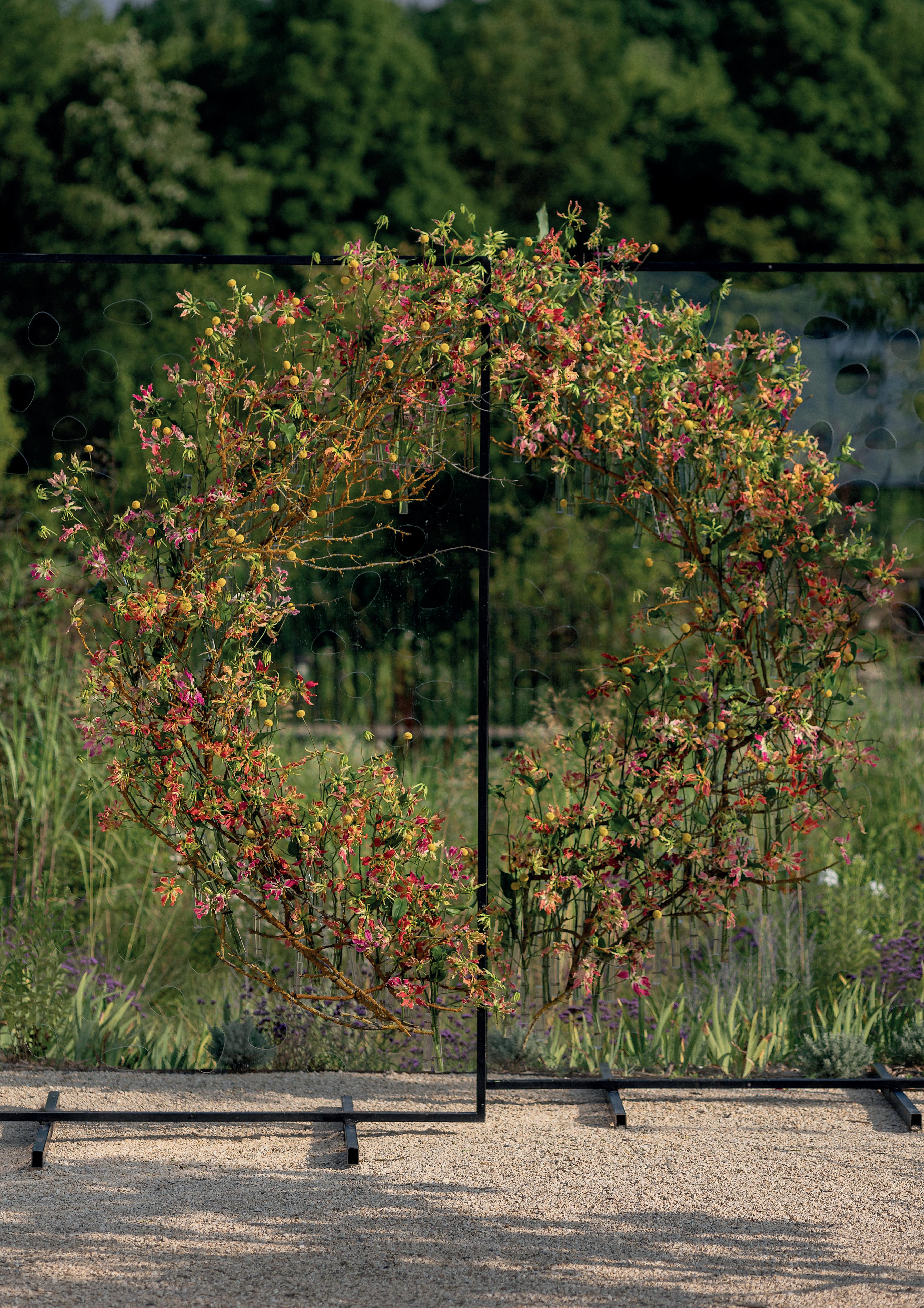
Imagine a captivating masterpiece brought to life through artistic ingenuity. A metal frame provides the foundation, its strong lines contrasting with the delicacy of nature’s offerings. A plexiglass base, adorned with strategically placed holes, invites exploration of visual perspective as you peer through.
Against this backdrop, vibrant yellow moss branches intertwine, weaving a tapestry that bridges the gap between the industrial and the organic. Amidst this composition emerges the exotic beauty of Gloriosa flowers, their fiery shades igniting the senses.
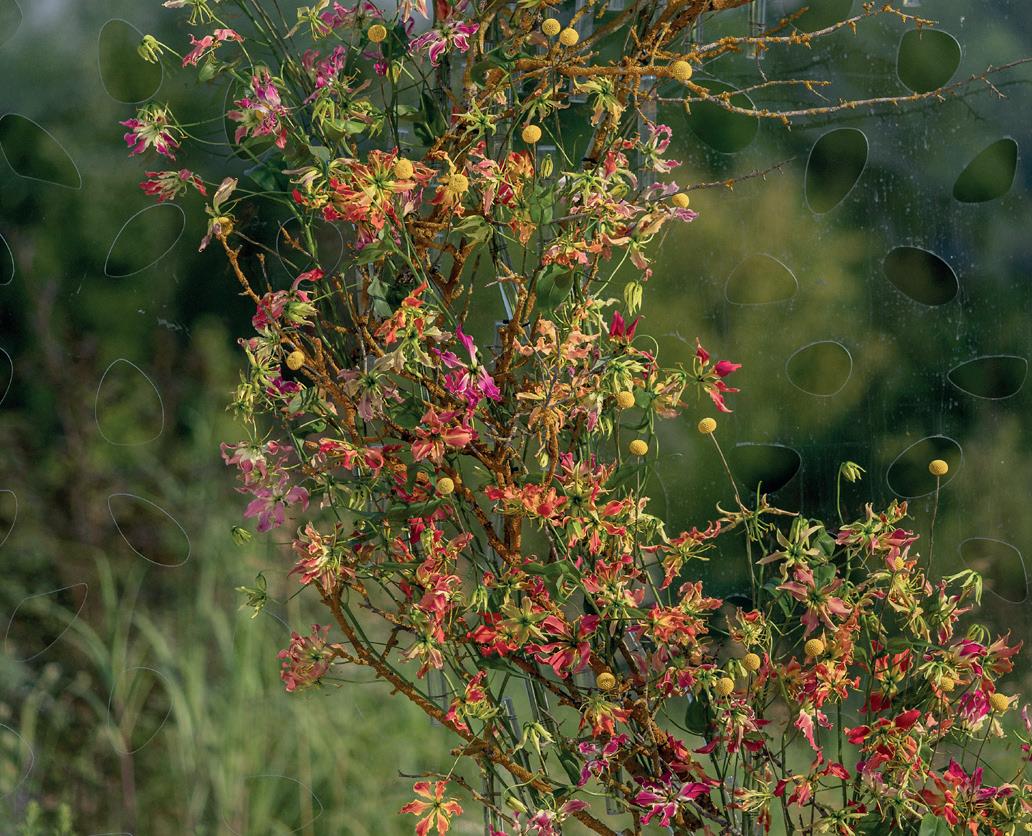
Creating a transparent structure using recycled plastic materials and adorning it with fresh flowers, like Gloriosa, is a brilliant combination of modernity and natural beauty. The transparent structure would allow the flowers to stand out while also showcasing commitment to eco-friendly practices through recycling. Gloriosa’s striking appearance brings a touch of elegance and vibrancy to the arrangement, creating a captivating visual contrast against the transparent background.
This harmonious fusion embodies contrasts: strength and fragility, transparency and opacity. It’s a creation that beckons you to explore, to see beyond the surface and immerse yourself in the interplay of elements that transcend the ordinary.
Conceive an artistry that channels the quiet strength of nature’s essence. Plexiglass drops cascade like glistening jewels, suspended in mid-air, capturing the beauty of fleeting moments.
Using plastic scraps for a floral structure can be a creative way to upcycle and repurpose materials that might otherwise go to waste. While it’s an innovative approach, keep in mind that plastic doesn’t have the natural beauty or eco-friendliness that organic materials do. However, with careful design and consideration, you can still create unique and eye-catching arrangements that highlight your commitment to sustainability and resourcefulness.
Long vertical lines, reminiscent of nature’s silent guidance, guide the eye through this ethereal landscape. Amidst this enchanting scene, white flowers unfurl their petals, offering a canvas for the play of light and shadow. At the heart of this masterpiece, the white Clematis Amazing® Vienna reigns supreme, an embodiment of nature’s timeless elegance.
This arrangement morphs into a living ode to the majesty of the natural world. Through delicate blooms and shimmering droplets, it whispers a testament to nature’s enduring power and grace, an ethereal waterfall of white that captures the heart and soul.
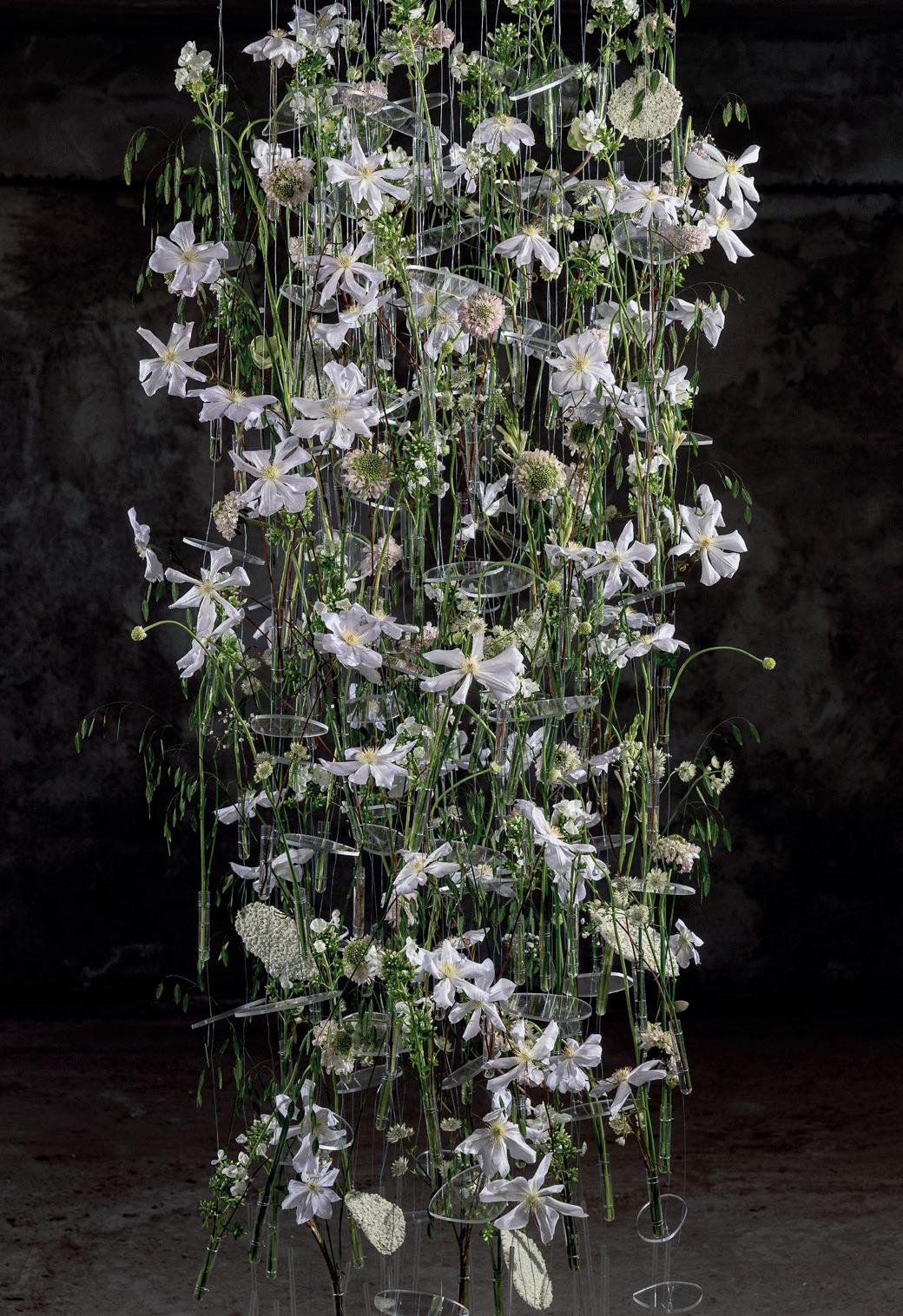
Nicu: “A cultural change is happening. People are looking for a closer connection with nature and authentic experiences. Minimalist and natural aesthetics are gaining ground in design, influencing floral trends towards simplicity and elegance. The desire for calm and serenity in a fast-paced world led me to make arrangements that mirror the tranquillity of nature.”
Imagine an artistic endeavour that encapsulates the essence of both nature’s untamed beauty and human creativity. Begin with a vase of irregular shape, a tribute to asymmetry, crafted from dried grasses – a nod to the tactile wonders of the outdoors.
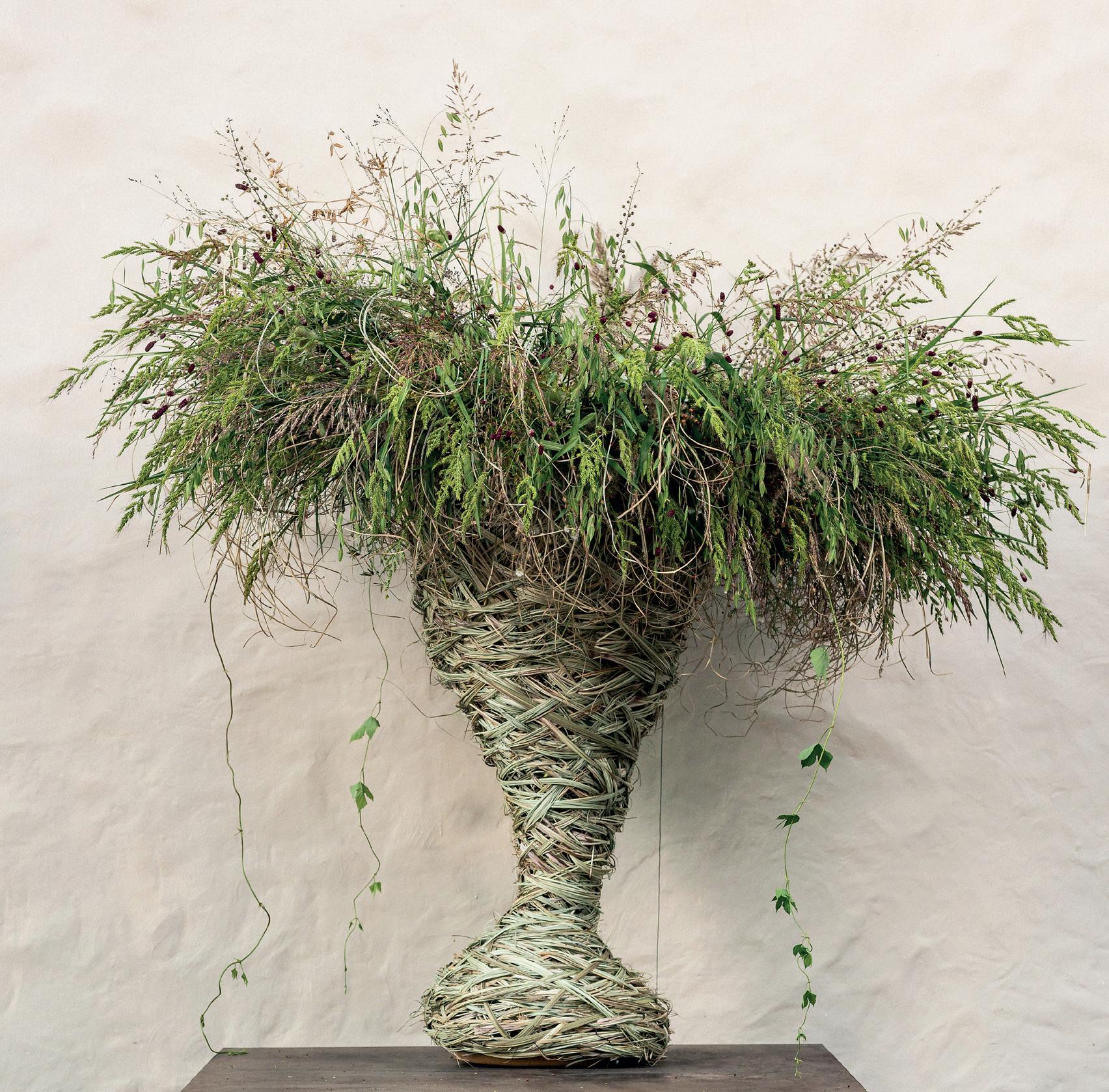
Using dry materials from our gardens can significantly reduce the cost of creating this floral arrangement.
Plus, we can keep this beautiful ‘tornado’ for many years.
Within this vessel, a dance unfolds. Wild grasses and flowers intertwine, creating a ‘flower tornado’ that mesmerises the eyes. Picture the graceful chaos of elements spiralling upwards, a living sculpture that embodies the organic vitality of nature’s whirlwinds.
Each flower, with its distinct floral structure, becomes a brushstroke in this living masterpiece. As you contemplate this creation, you’re invited to experience the harmony in chaos and the wild elegance that exists when we embrace the beauty of imperfection.
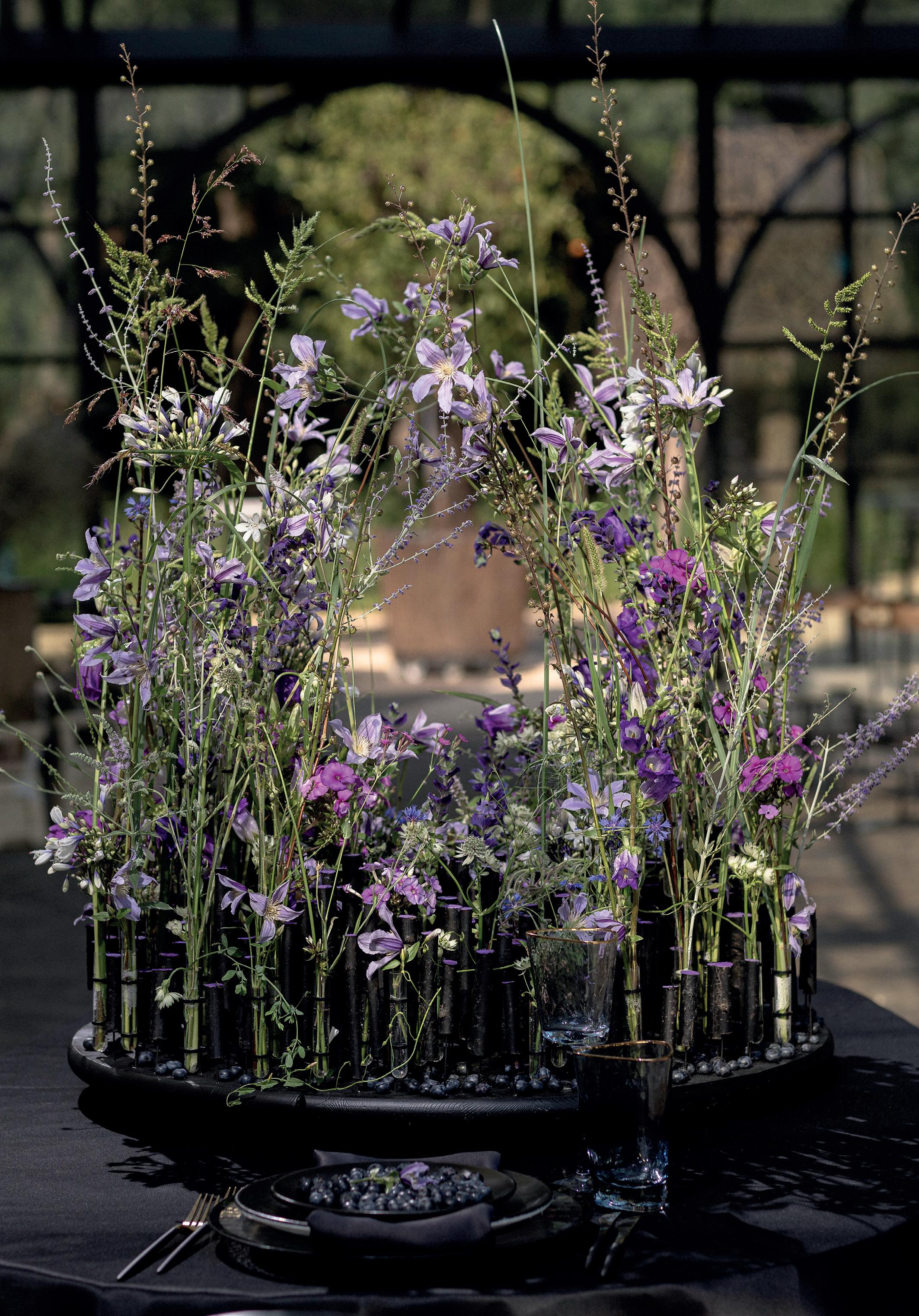
Using materials from gardens and houses aligns with sustainable and budget-friendly practices. This approach emphasises creativity with local and accessible resources, contributing to a unique and personalised touch in floral arrangements.
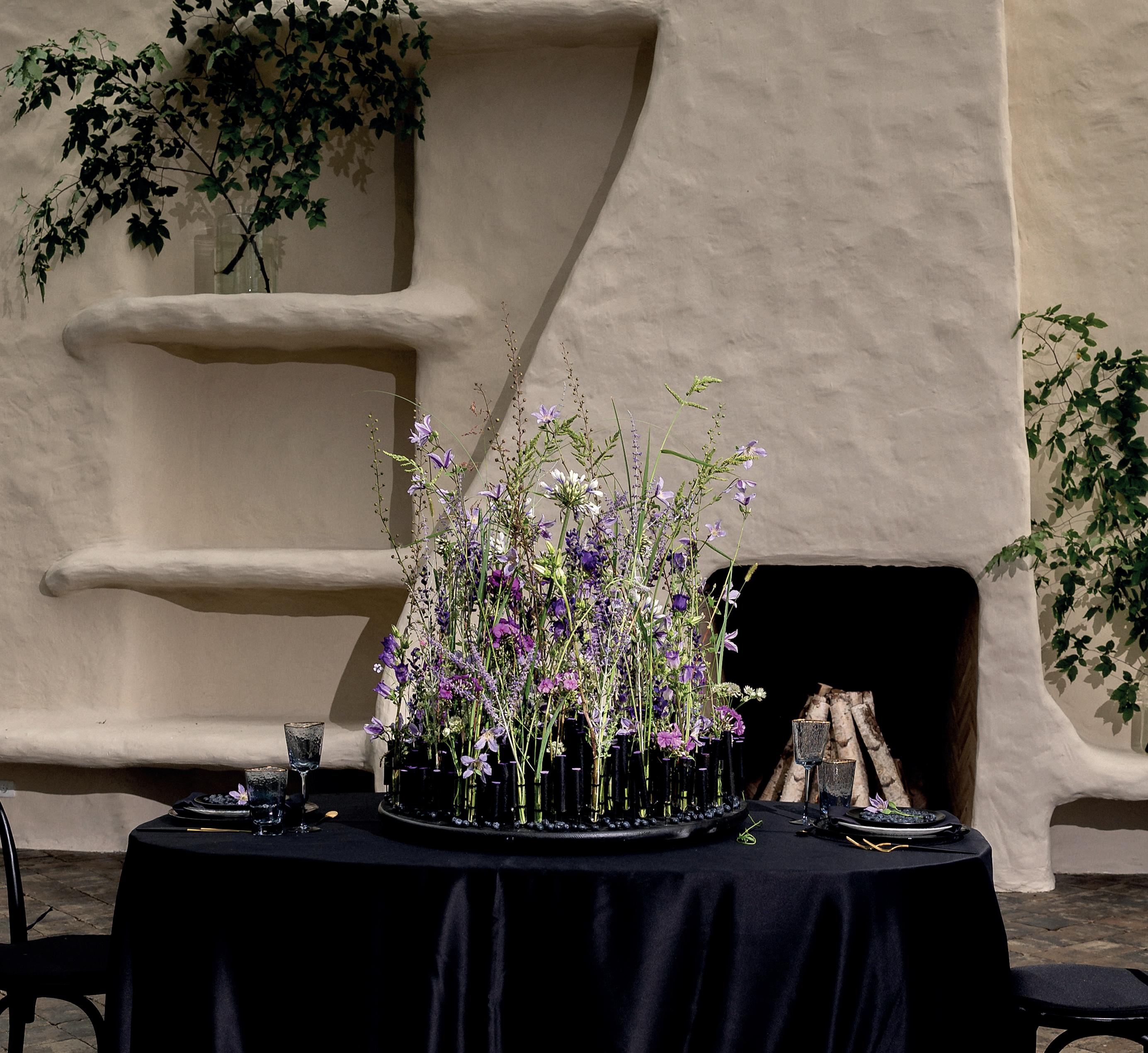
Crafting an enchanting table decoration is akin to orchestrating a visual symphony that celebrates the beauty of flowers. Each flower, with its unique floral structure, becomes a note in this masterpiece. As the heart of the arrangement, envision a central element that captures attention - perhaps an arrangement of purple flowers in varying shades, exuding elegance.
To add depth, introduce wooden sticks, mimicking nature’s organic lines. Against a backdrop of black design, the vibrant purple shades take centre stage, creating a striking contrast that draws the eye.
The result is a tableau that marries artistry and nature, where the delicate beauty of flowers harmonises with the tactile charm of wood and the backdrop of deep hues, culminating in a visual masterpiece that graces your table with sophistication and allure.
Designing a mushroom-shaped floral structure with a combination of flowers, grapes and autumn fruits in purple, green and yellow colours can be a visually captivating concept. Bunches of grapes and autumn fruits add a touch of nature’s bounty.
This arrangement celebrates the rich colours of fall and creates a unique centrepiece or decor for the season.
Opting for reusable elements allows us to create beautiful arrangements without having to constantly invest in new materials, making the approach more sustainable and efficient.
Creating a structure using vine branches offers a natural and rustic aesthetic. You can arrange the branches in various ways, such as weaving them together to form a decorative arch, creating a wall hanging, or crafting a centrepiece for a table. The versatility of vine branches allows for both indoor and outdoor decor ideas. The Clematis flowers add a touch of elegance and vitality. Their climbing nature makes them perfect for adding height and dimension to an arrangement. We wove Clematis Amazing® flowers through the structure.
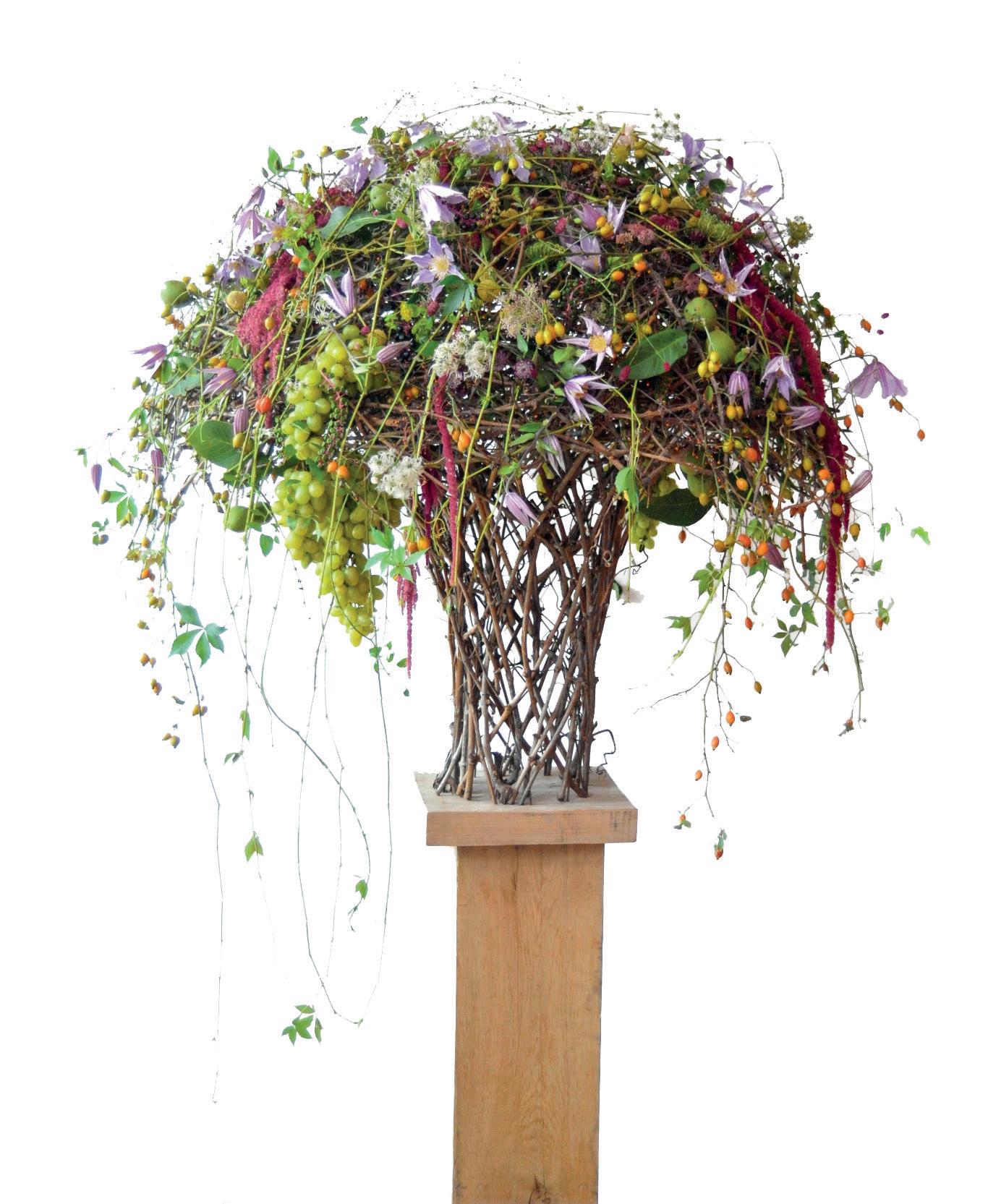
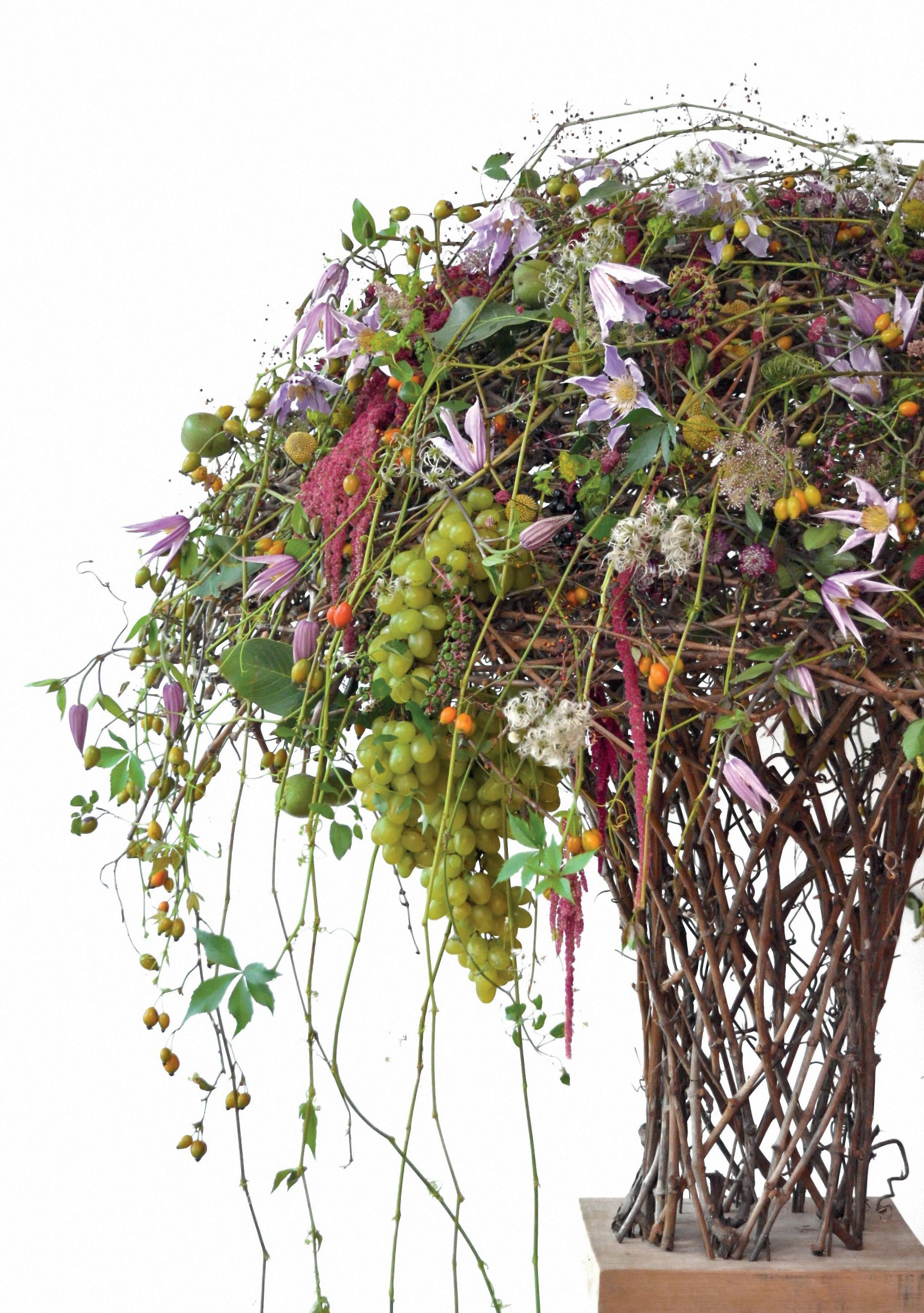
The use of structures that are not only aesthetically pleasing, but are also able to dry well, allows us to create long-lasting floral arrangements.
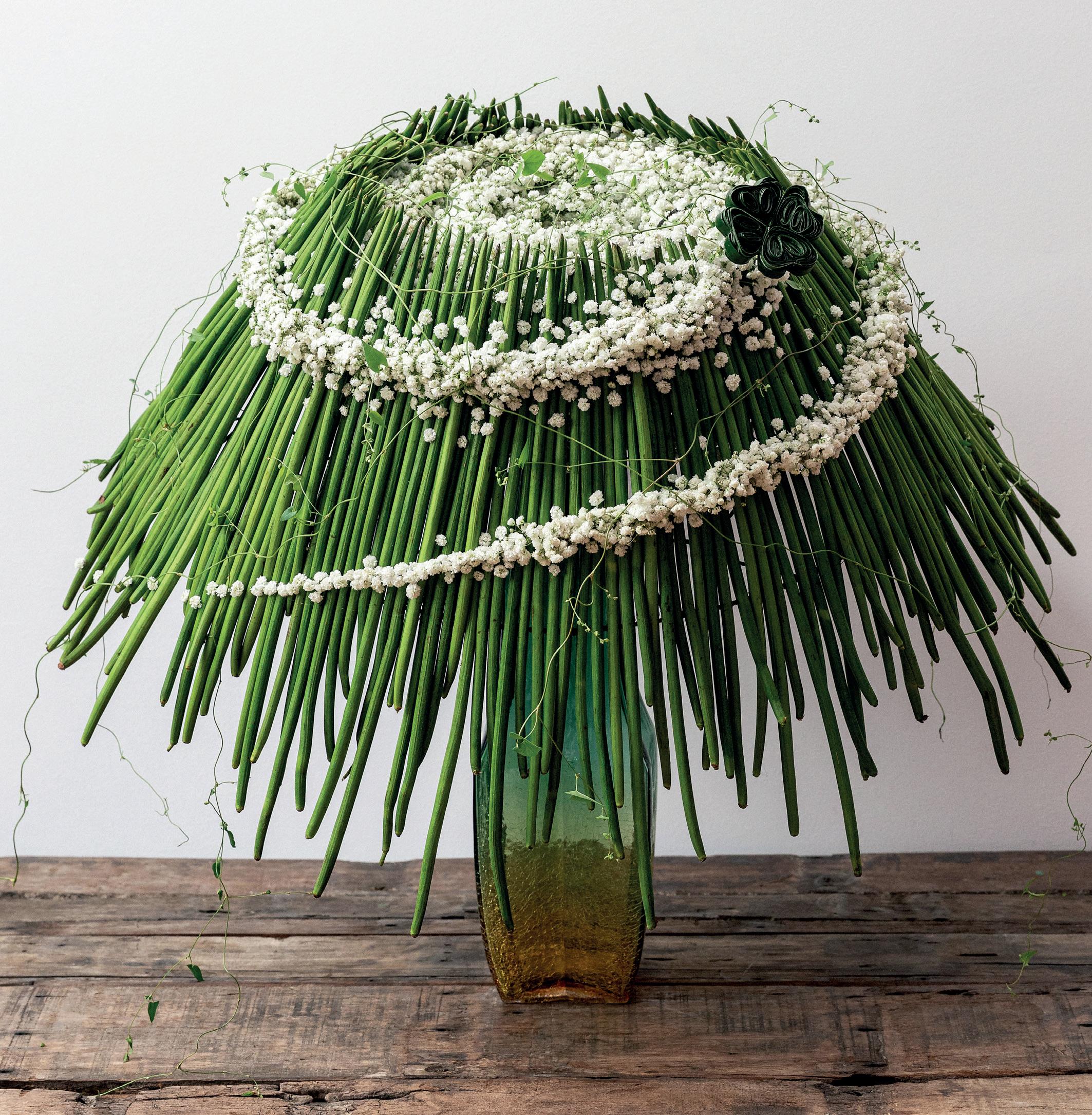
Picture an interior bouquet that tells a story of nature’s poetry. Begin with a base formed of long tree fruits, reminiscent of nature’s enduring strength and rooted connection.
Soft Gypsophila flowers cascade like a river of white, introducing a soft touch that contrasts against the sturdy
foundation. Amidst this serene flow, a clover leaf emerges as a visual accent, drawing the eye like a cherished secret hidden in the landscape. This arrangement epitomises the dance of contrasts. The interplay between gentle white blooms and robust tree fruits creates a symphony of textures and colours. It’s a visual journey through the subtleties of nature’s design, where each element, no matter how delicate or strong, weaves a narrative of beauty and unity.
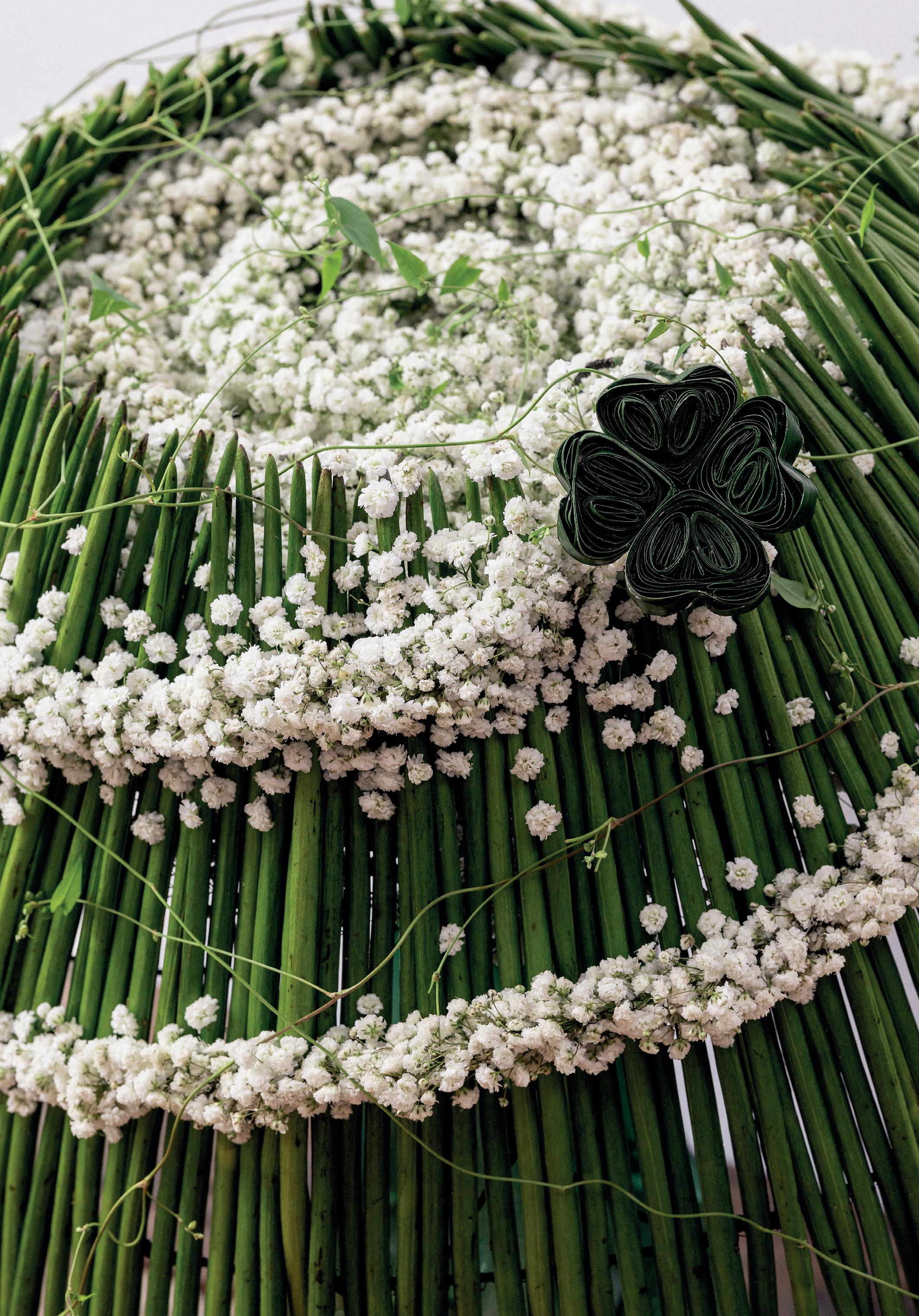
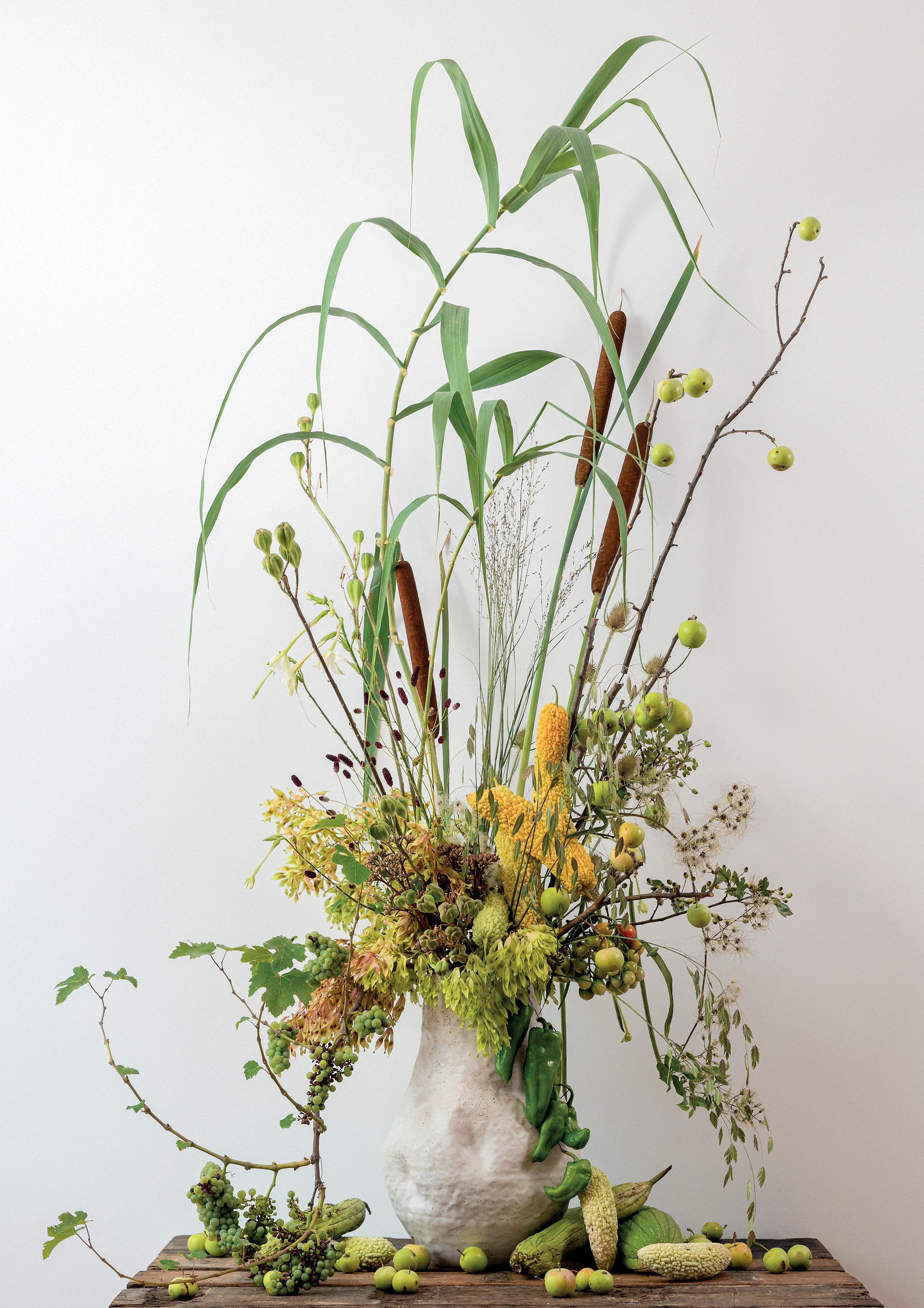
Nicu: “The focus on health and wellness inspired me to integrate edibles, aligning with the broader movement towards mindful living.”
‘Wild gifts of nature’ refers to the incredible and diverse offerings that the natural world provides. Using fruits and vegetables from our garden in our floral designs aligns with sustainability and low-budget approaches. This creative use of readily available materials shows ingenuity. This could encompass a range of things, from the beauty of wildflowers and scenic landscapes to the resources nature provides for sustenance and inspiration. It’s a reminder of the richness and wonder that our environment offers us, often in untamed and unexpected ways.
Creating a floral structure using herbs and flowers in a ceramic vase is a creative way to bring the beauty of the garden and floral elements together. Arranging a mix of herbs, vegetables such as leafy greens and vibrant flowers in the vase to achieve an interesting visual harmony. This mix of natural textures and colours results in a unique and captivating centrepiece or decor piece for your space.
Another wonderful example of creating a beautiful decor while minimising costs and environmental impact. Incorporating watermelons into a table setting creates a refreshing and vibrant display. Hollowed melon halves can be used as unique vases for floral arrangements, adding a touch of creativity. This combination can make for a delightful and visually appealing centrepiece for your table.
Placing wine glasses next to beautiful Gloriosa flowers and summer fruits creates an inviting setting. The vibrant colours of the Gloriosa flowers complement the shades of summer fruits, while the wine glasses add an air of sophistication. This combination would be perfect for a summer gathering or outdoor event, providing a feast for both the eyes and the taste buds.
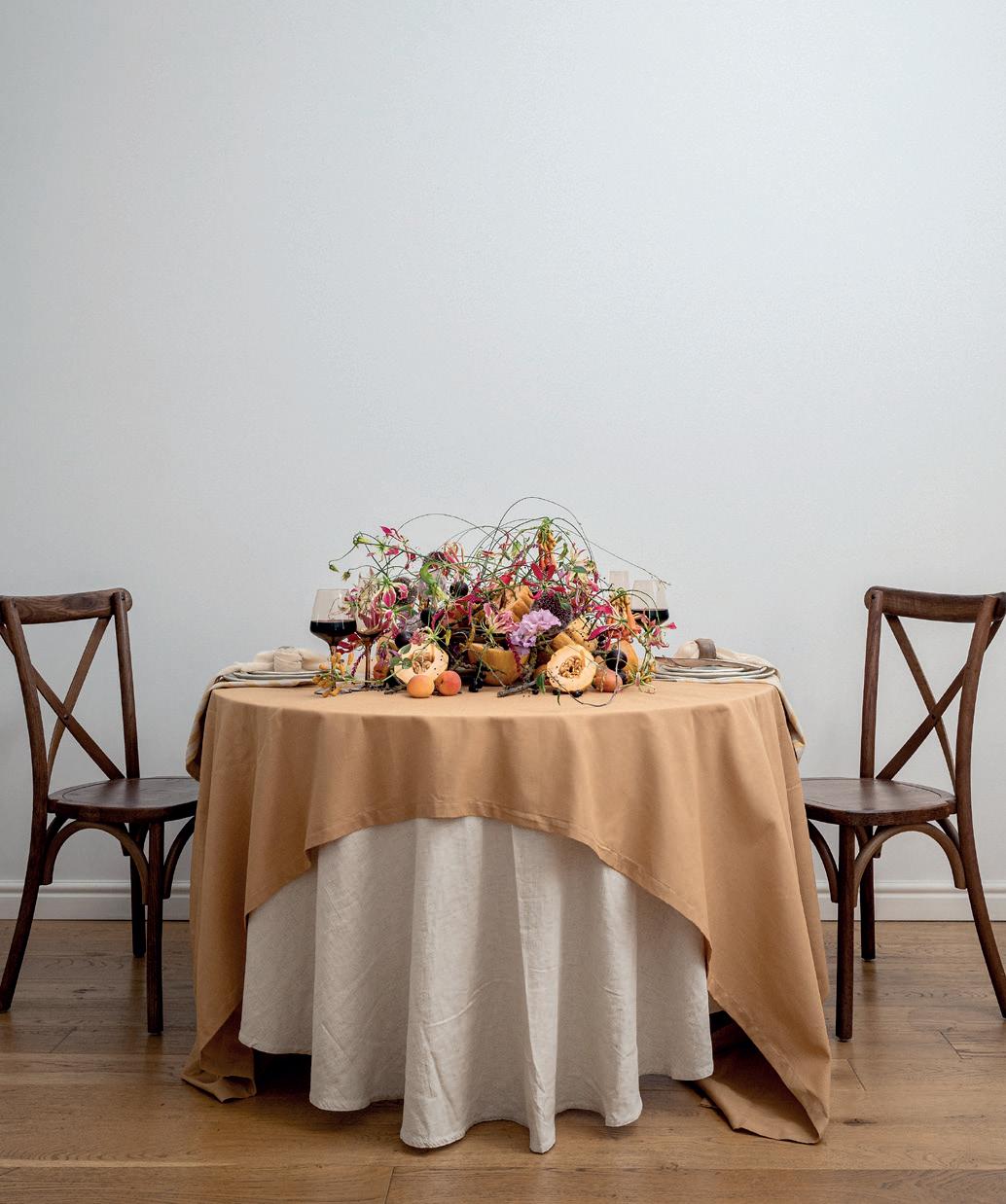
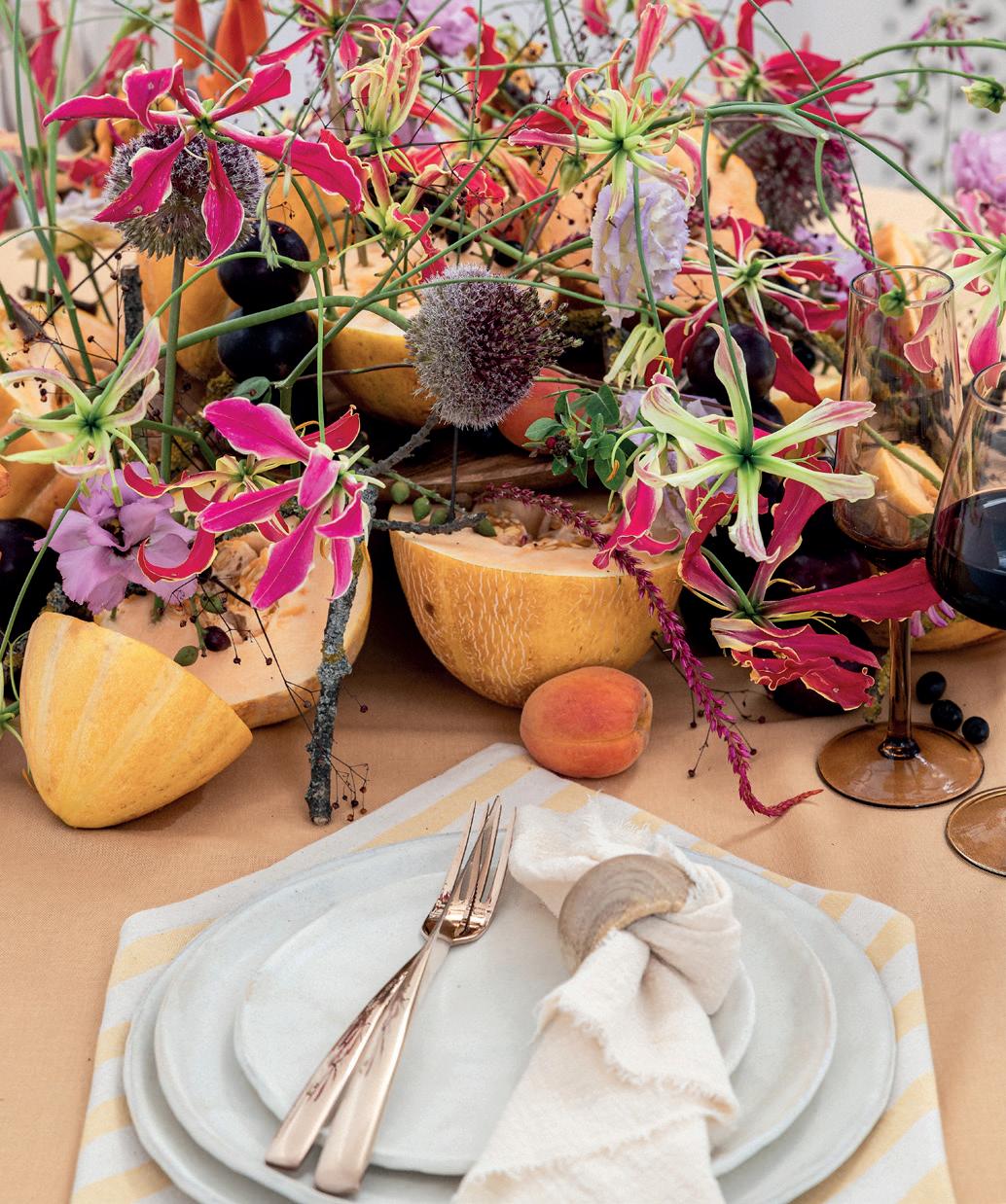
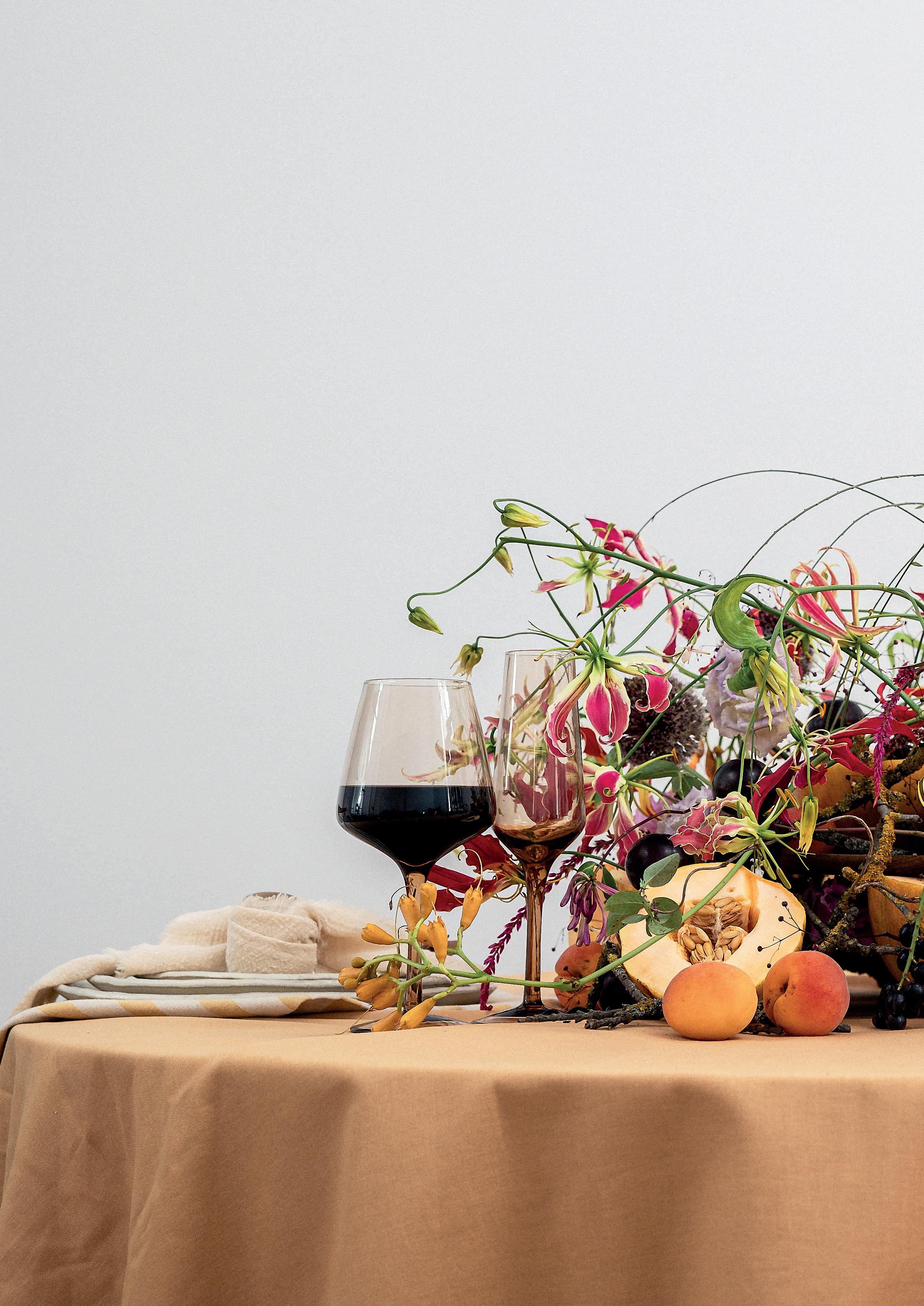
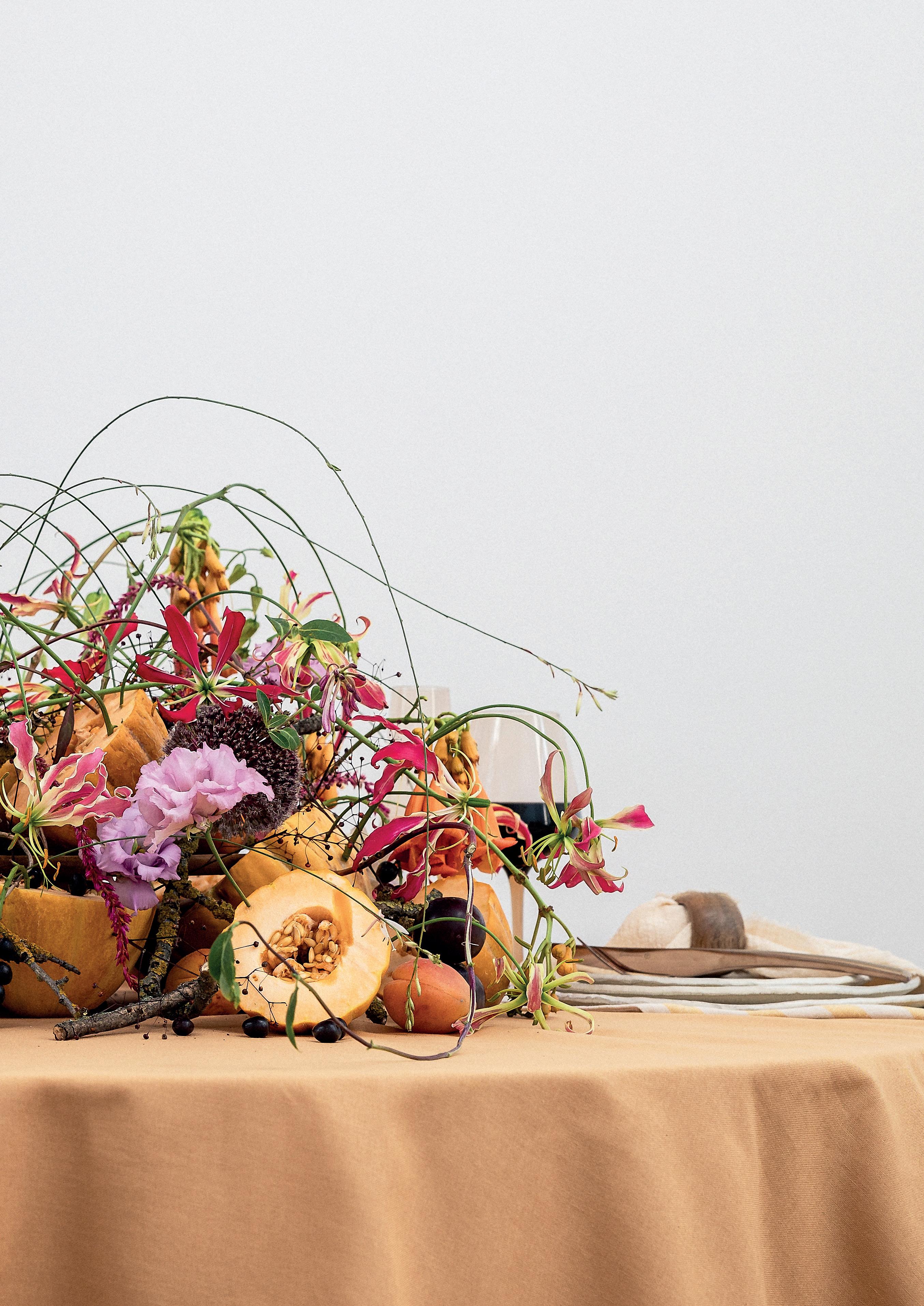
Creating long-lasting, beautifully structured floral arrangements that bring joy and positivity to homes is always a good idea. By investing in well-crafted arrangements with strong, positive colours, you make a unique investment that can continuously brighten your living spaces. This approach not only adds a touch of nature to the interior, but also contributes to a vibrant and uplifting atmosphere that can be enjoyed for years to come. Using purple Clematis Amazing® flowers in a structure called ‘Purple Windows’ creates a stunning visual effect.
Each ‘window’ is adorned with cascading purple Clematis. This arrangement could mimic the idea of looking through windows at a landscape of flowering vines. The vibrant purple hues of the Clematis flowers contrast beautifully with the green stems, creating an engaging and delightful display.
A three-frame wall arrangement can be a beautiful way to add a focal point to a room. Each frame presenting a different size and shape. This arrangement not only brings space, but also infuses it with a sense of beauty and elegance of nature.
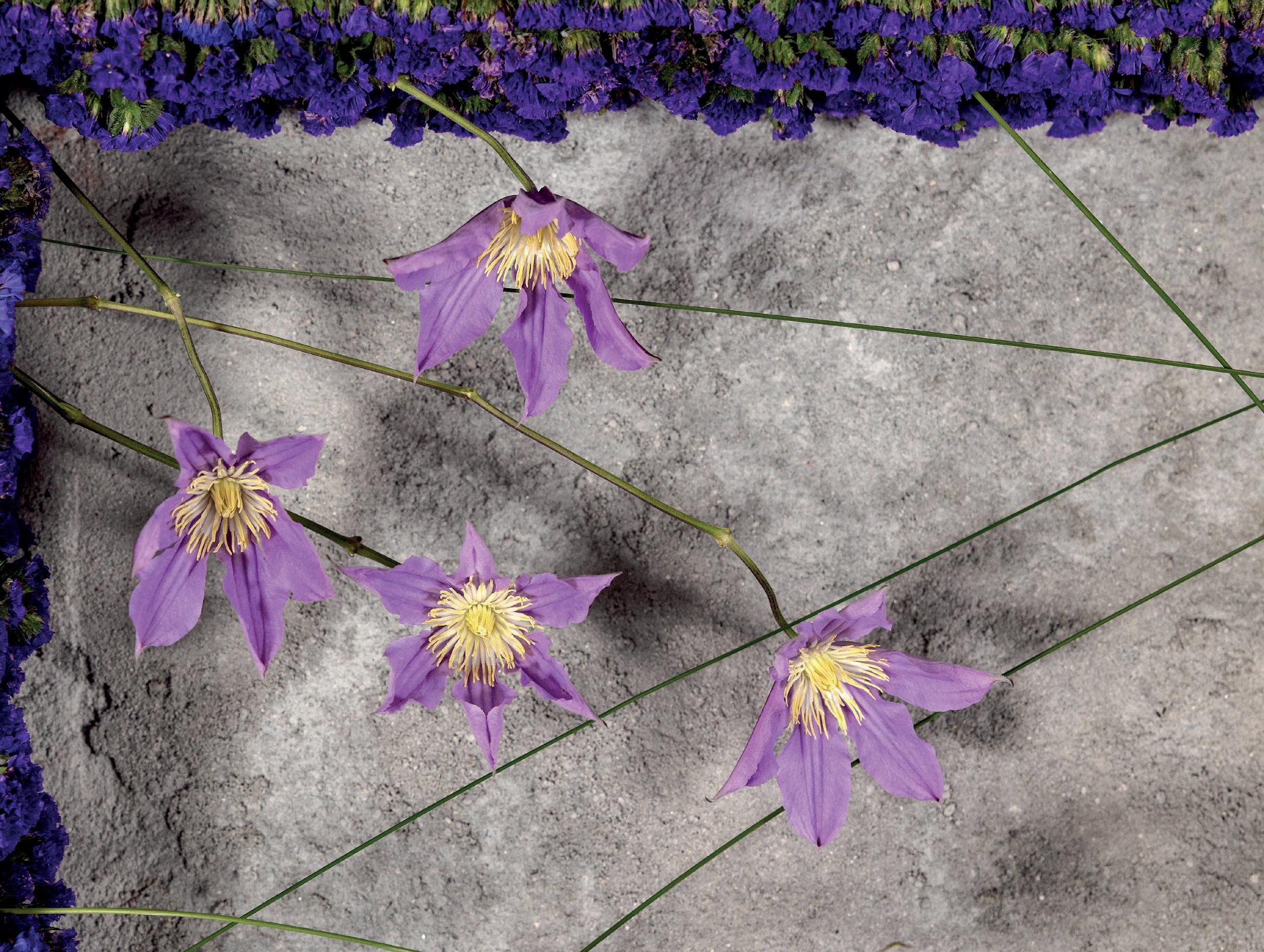
Nicu: “People gravitate towards visual spaces that evoke emotions with fewer elements.”
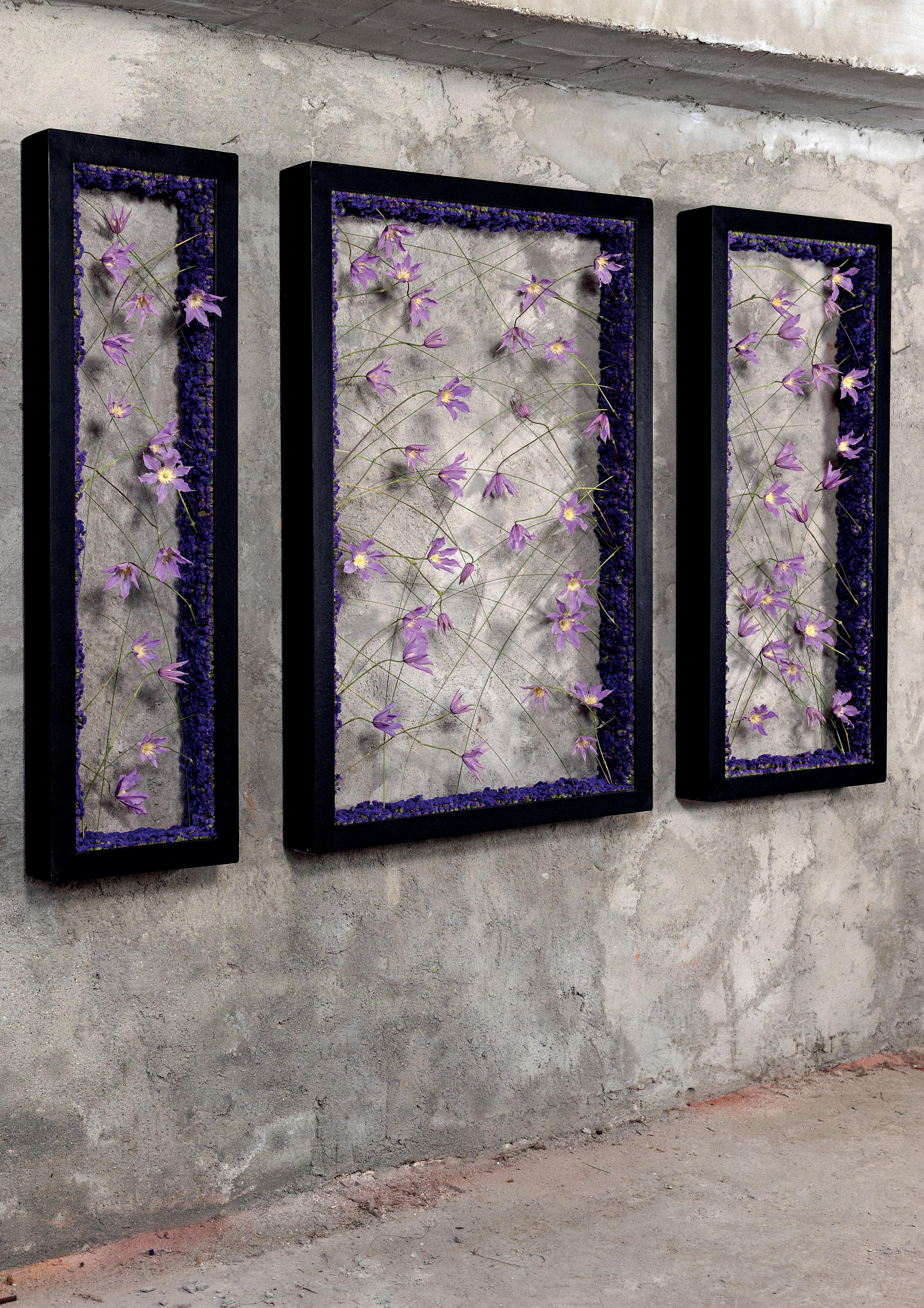
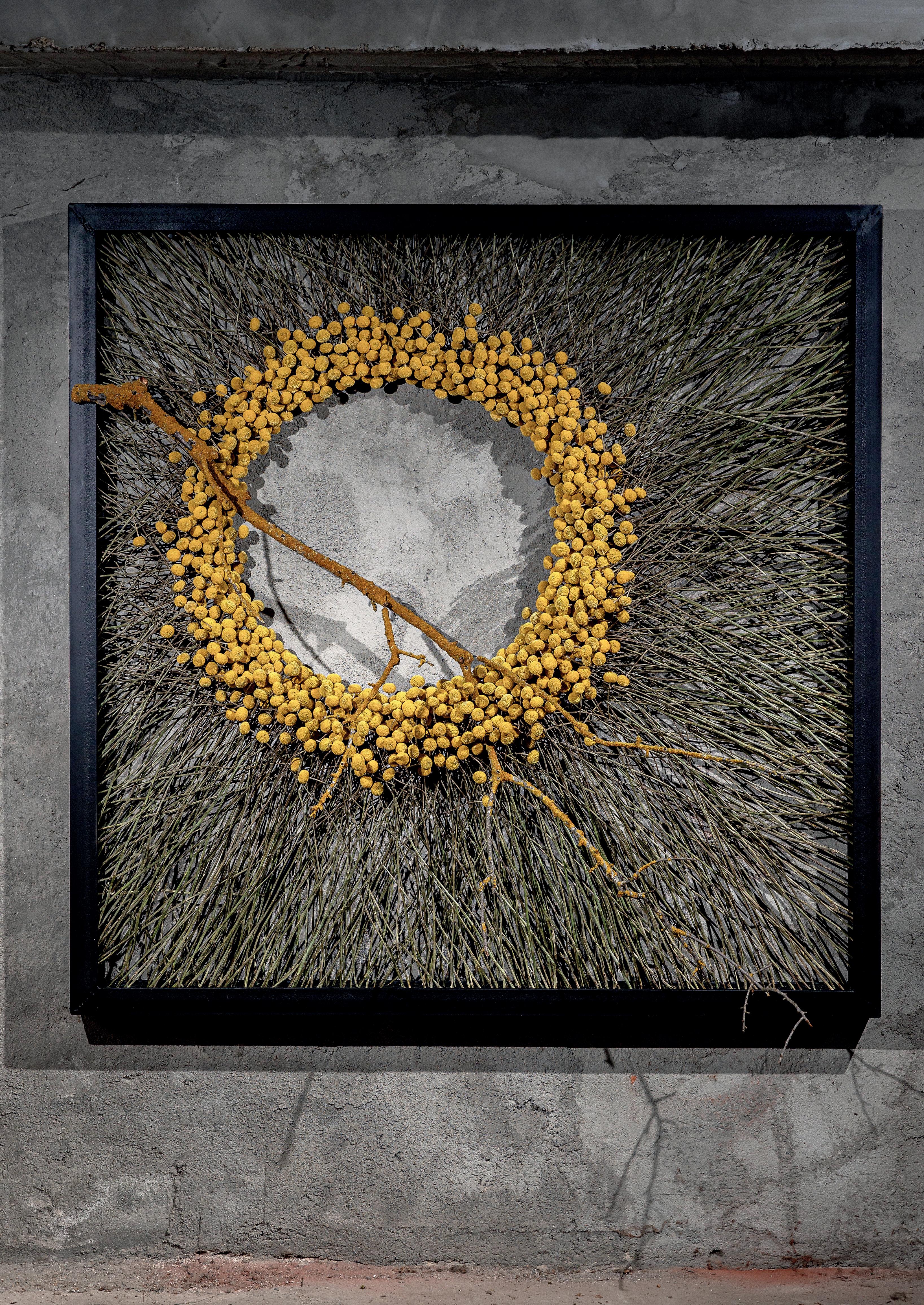
The yellow Craspedia Paintball™ Pop is an excellent choice for creating long-lasting floral structures that evoke positive emotions. Its vibrant yellow colour adds a cheerful and uplifting vibe to any space. Since Craspedia is known for its durability, you can enjoy its beauty and positive energy for an extended period, making it a wonderful addition to your home decor.
Creating a yellow gate of Craspedia flowers can be a whimsical and creative idea. Craspedia, also known as
Billy Balls or Billy Buttons, are spherical yellow flowers on long stems. We arranged these flowers to form the shape of a gate, with the stems creating the outline and the spherical flowers filling the ‘bars’ of the gate.
This artistic use of Craspedia could bring a playful and cheerful element to your event space or decor.
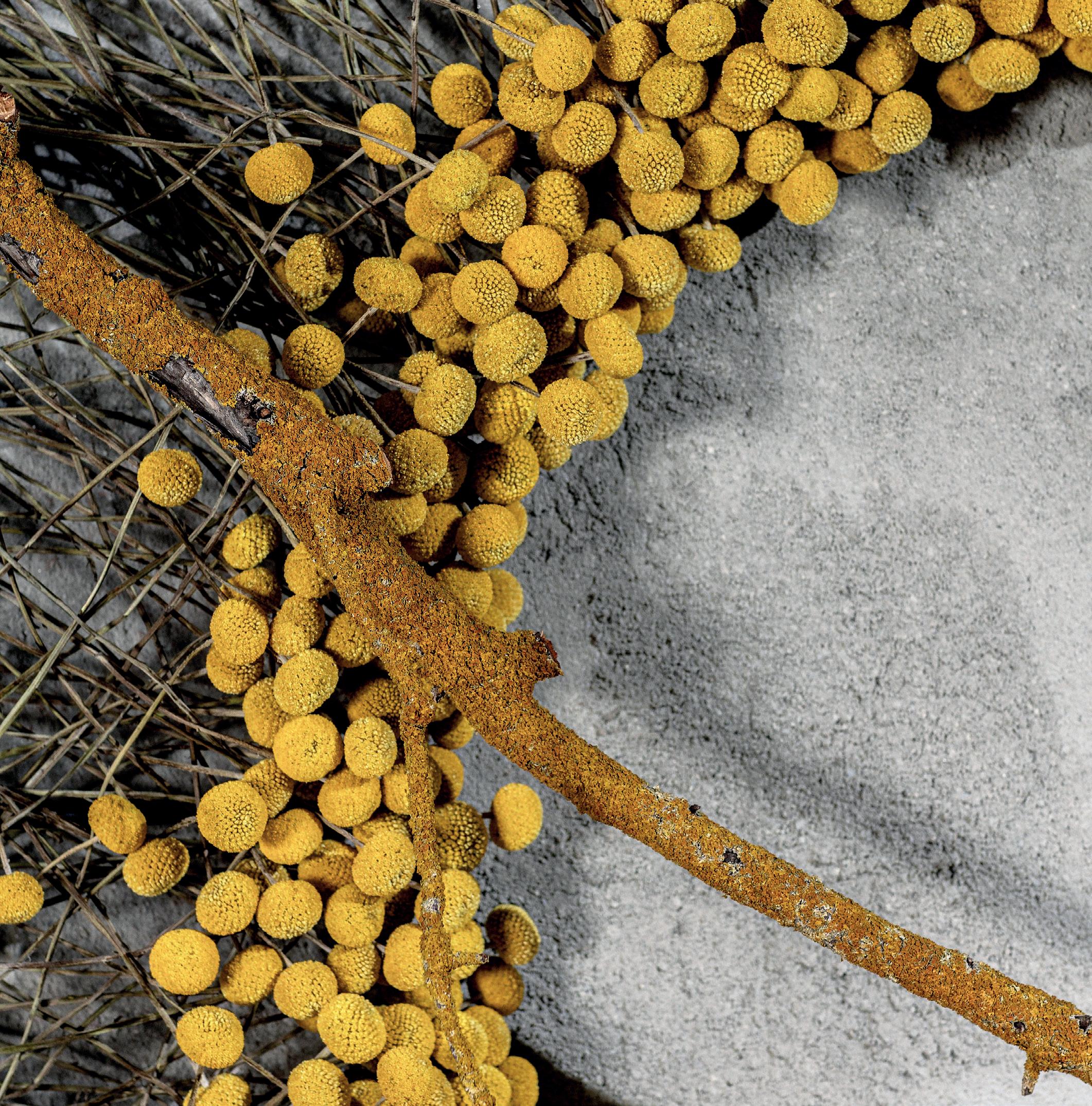
If you’ve been around the floral industry for some time, you must have come across his work before. He is a popular man on social media, where you can find his work on both his personal account (@nicubocancea) and his company’s account (@florariairis). Being a second-generation florist, he grew up among flowers and has worked his way up to co-running the very successful event design venture along with 10 floral shops in Romania with his brother. With his extensive experience in the field, Nicu stands as a valuable source of guidance and inspiration in the realm of commercial floristry.
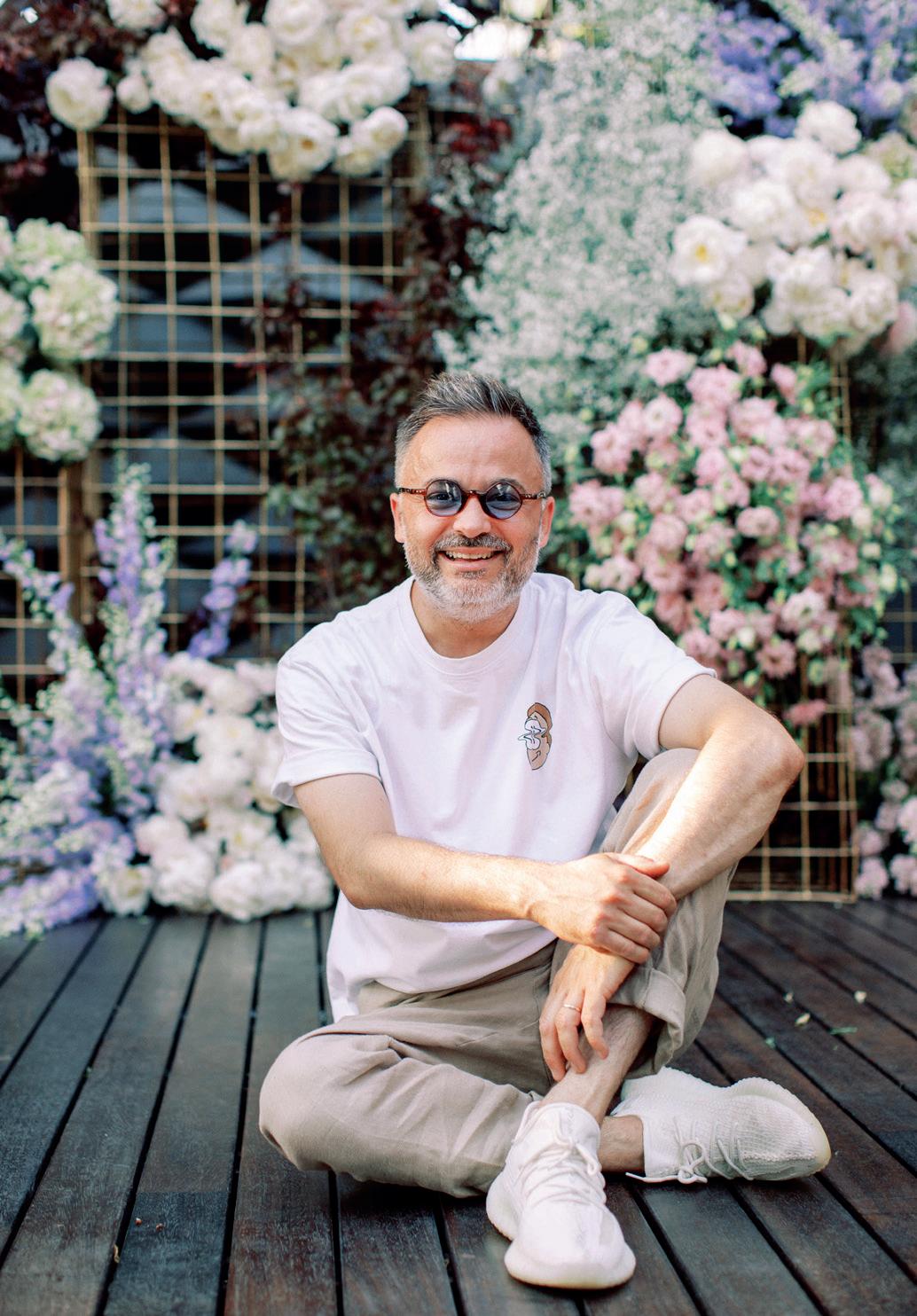
We sincerely thank Nicu and the exceptional team for their stunning creations and forward-looking perspective for the year 2024!
To our valued readers: we trust that you’ll find abundant inspiration within. If you happen to translate these trends into your own designs and post them on social media, remember to tag us with @marginpar. Seeing your designs on our timeline brings us great joy.
Warm regards, The Marginpar Crew
